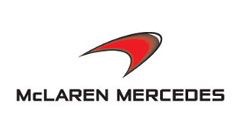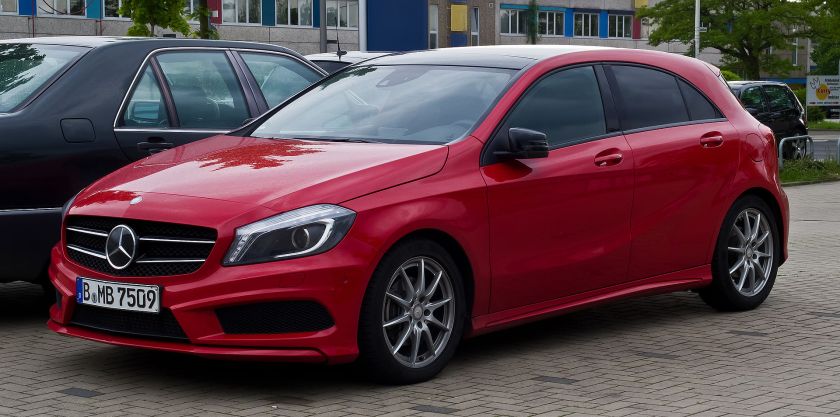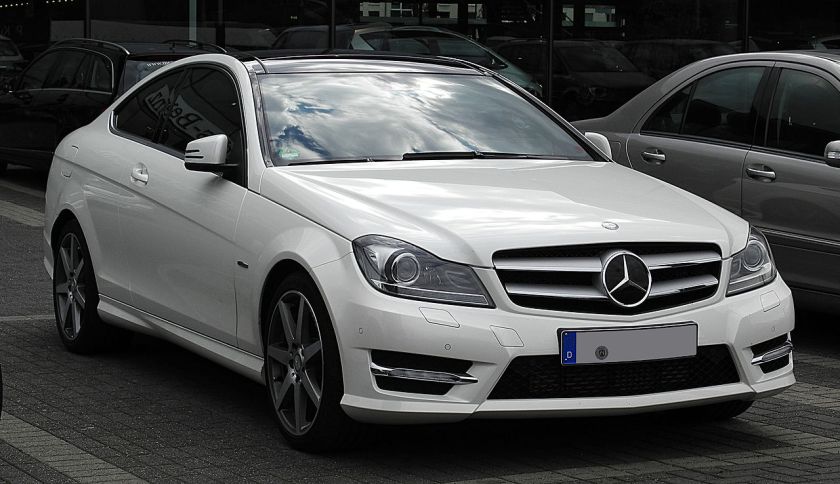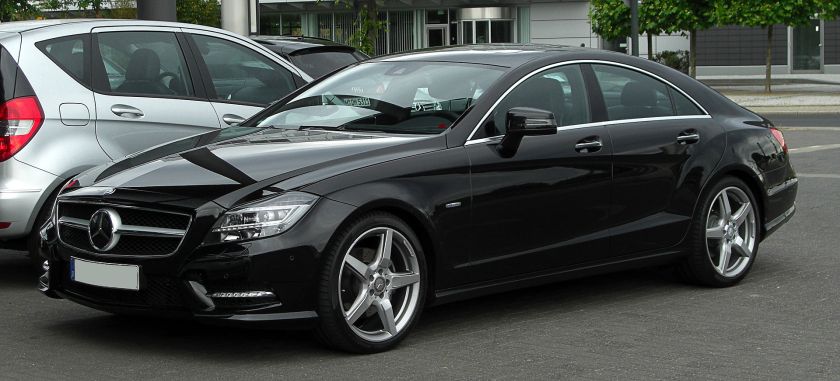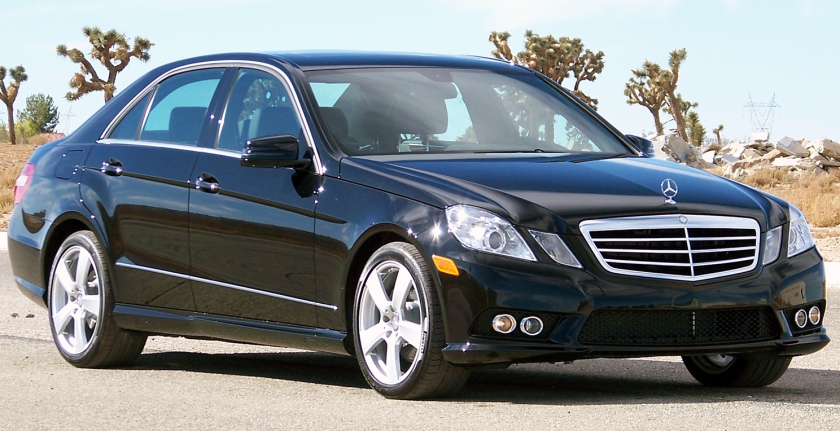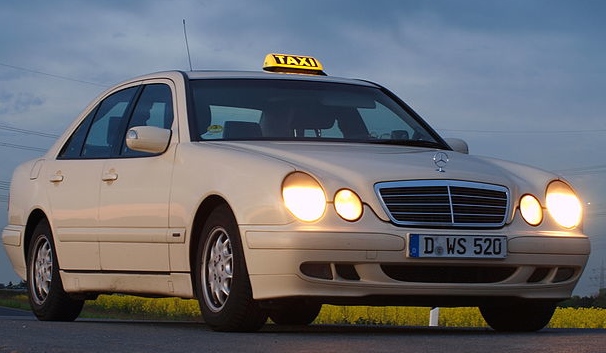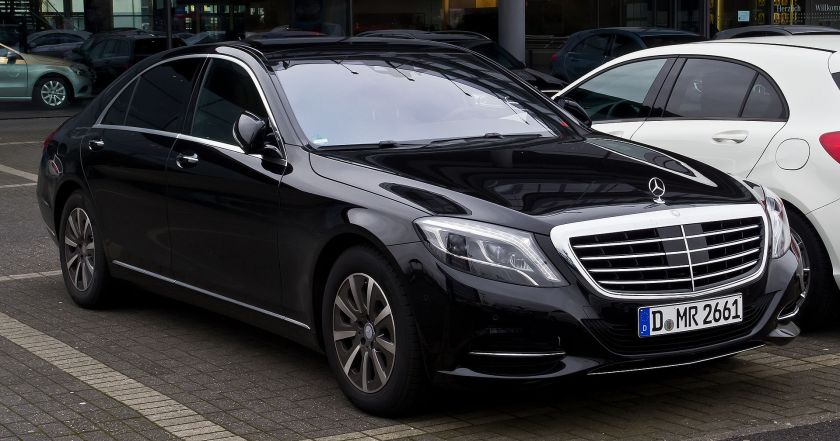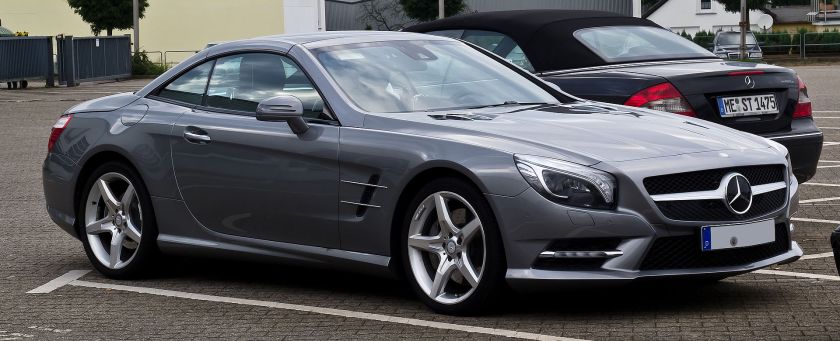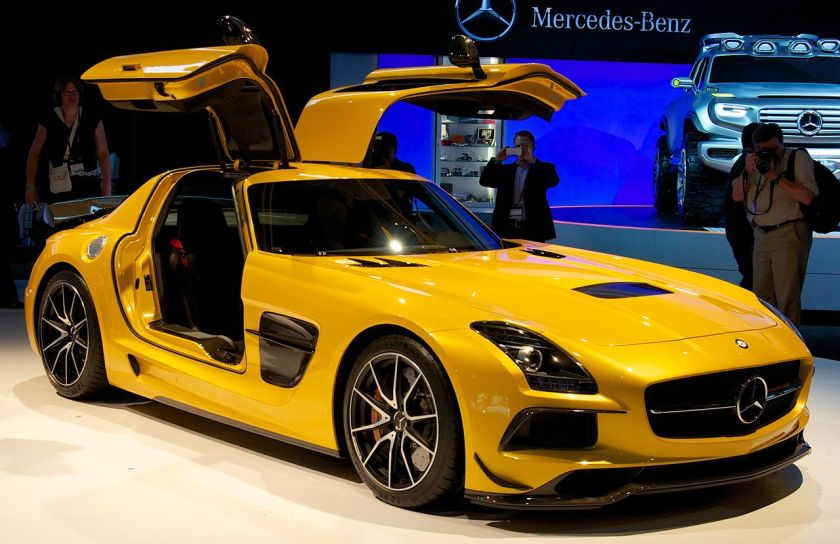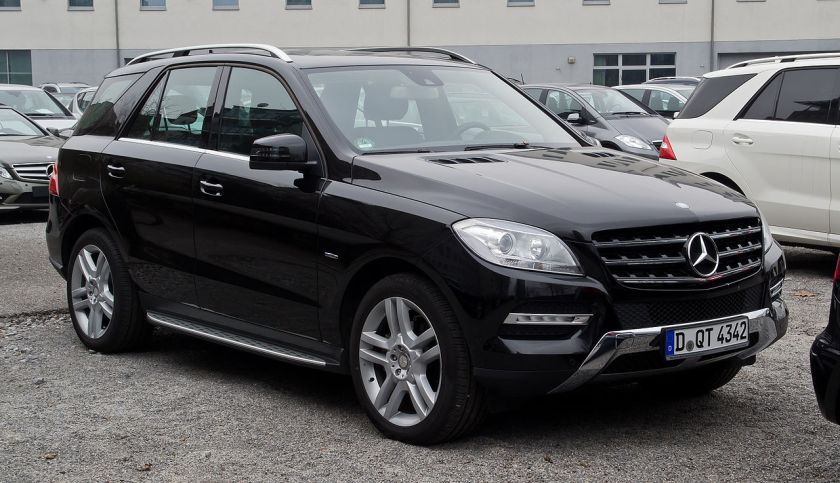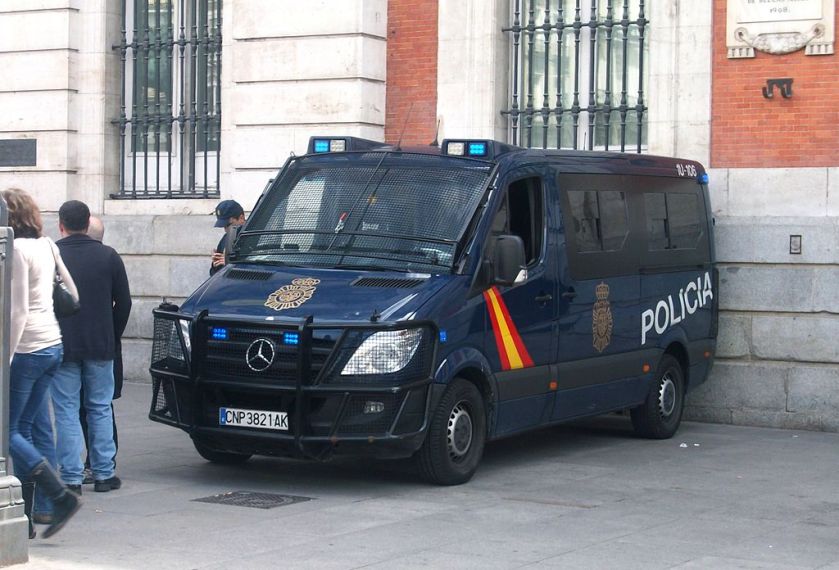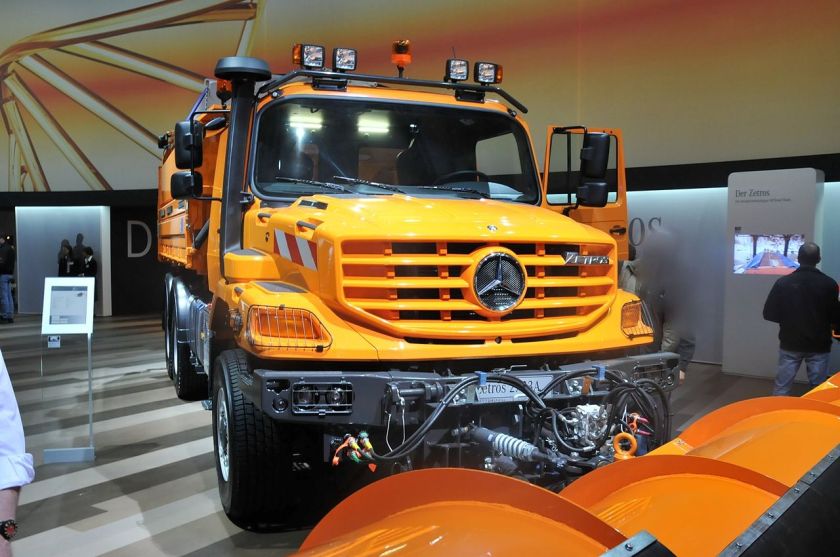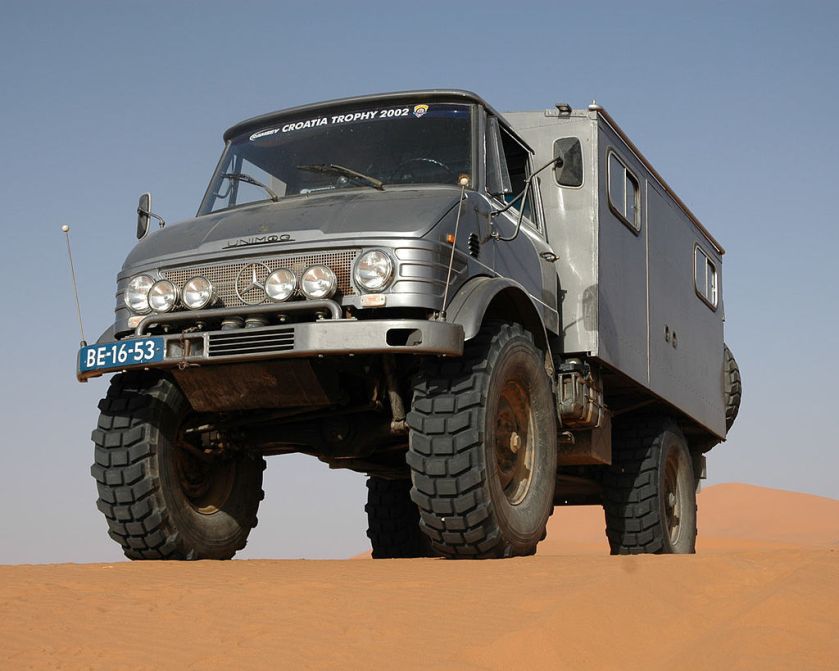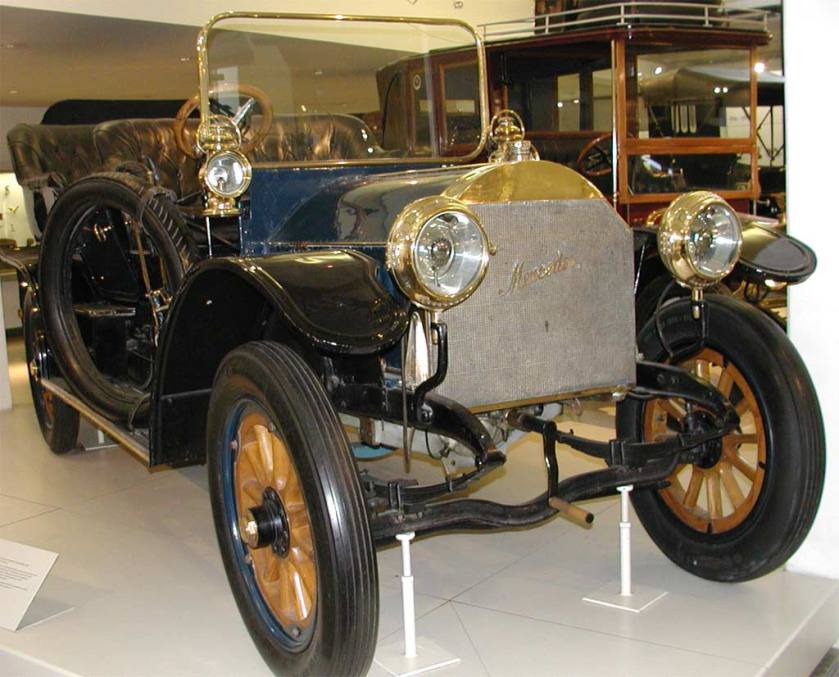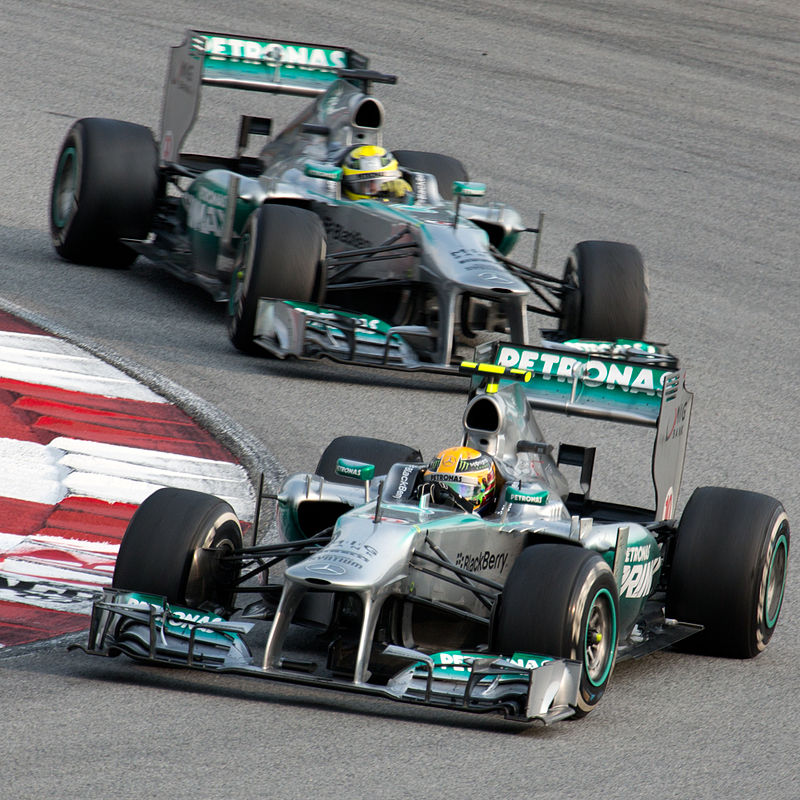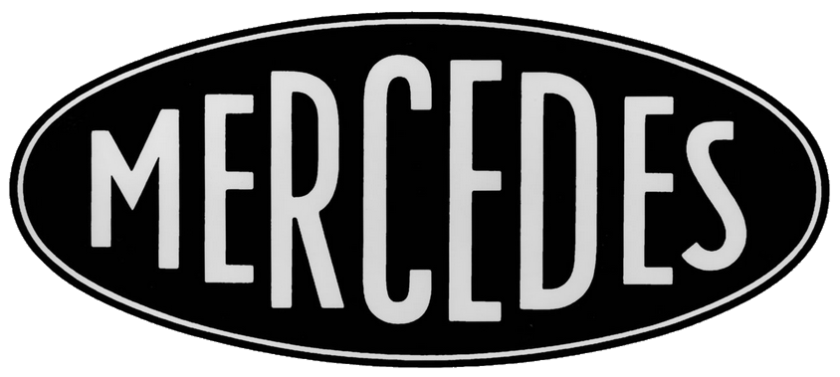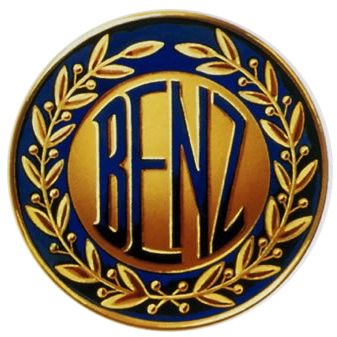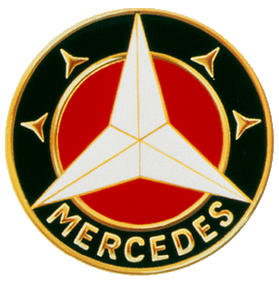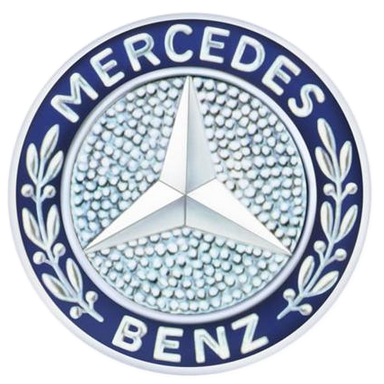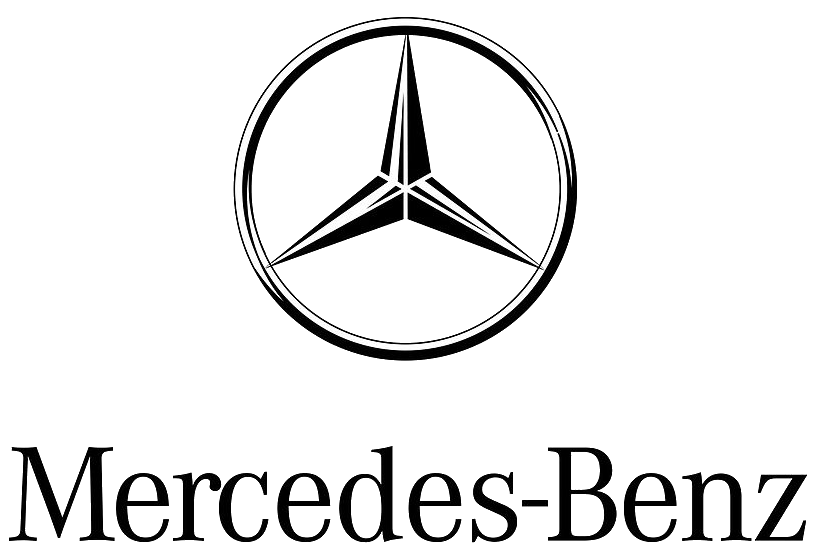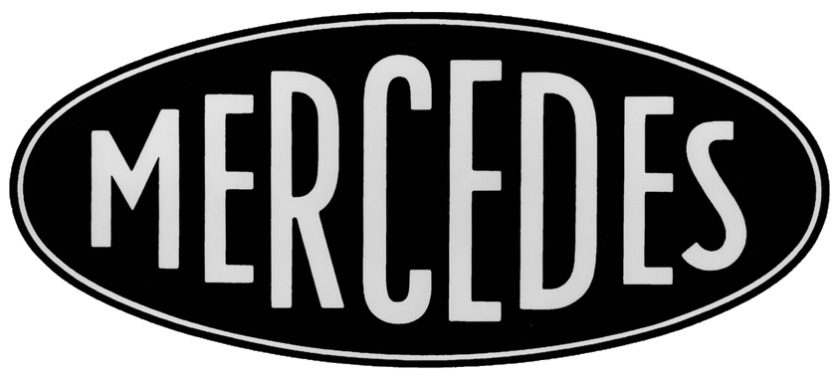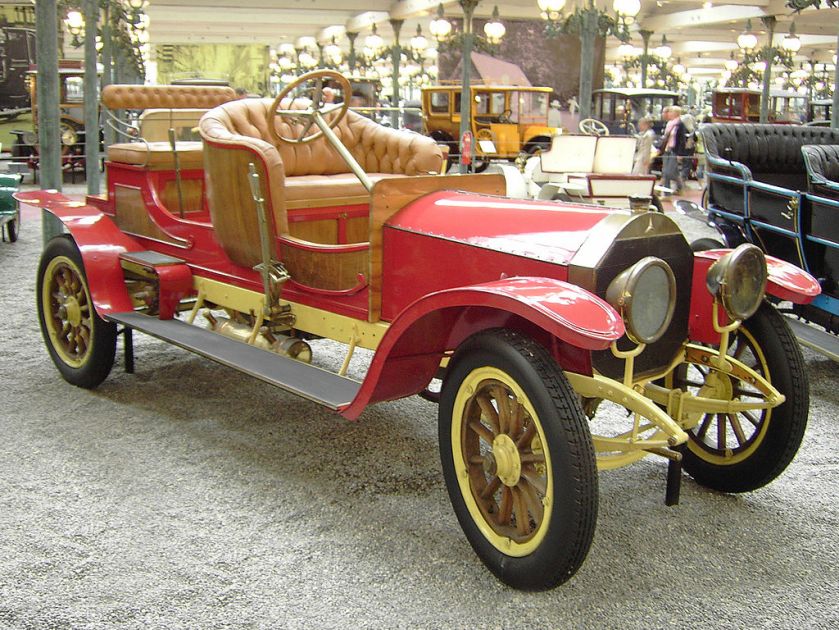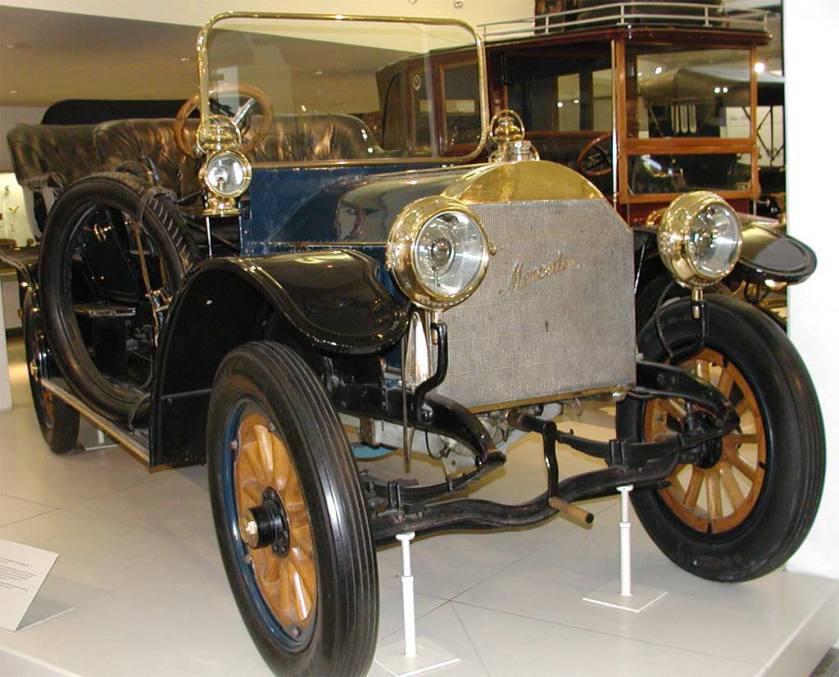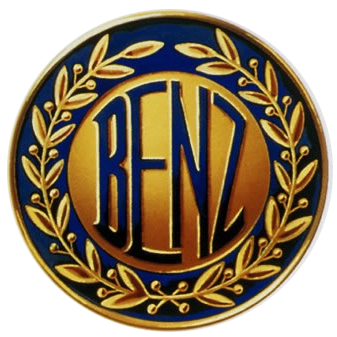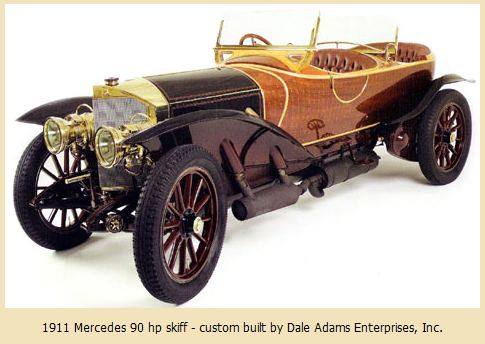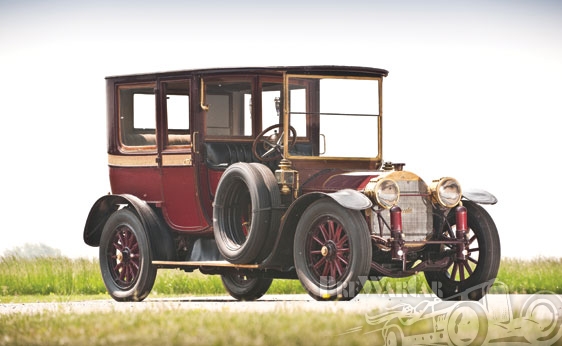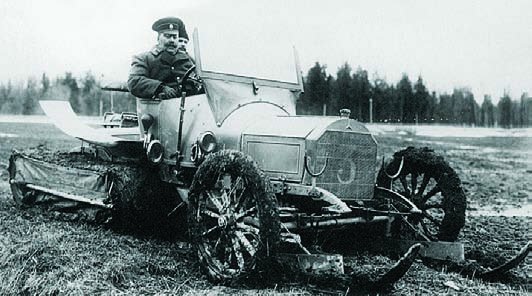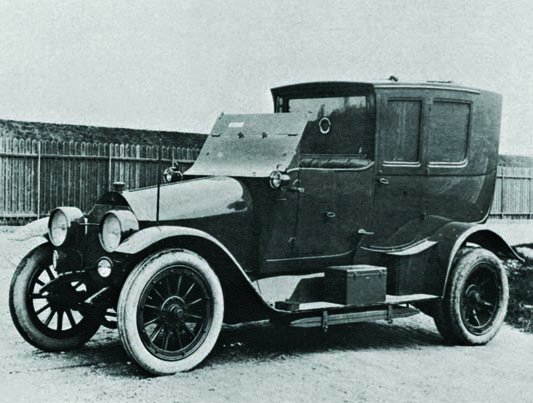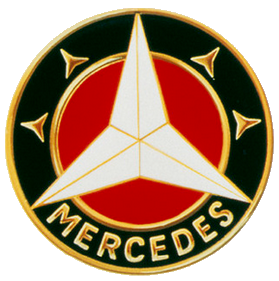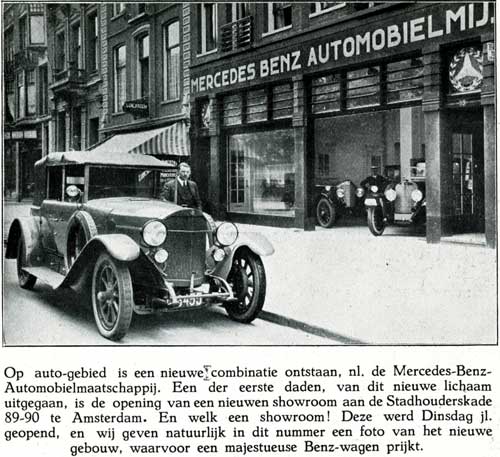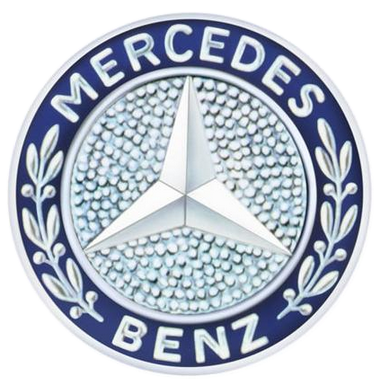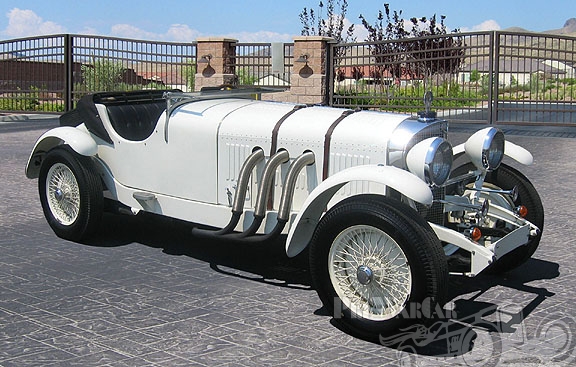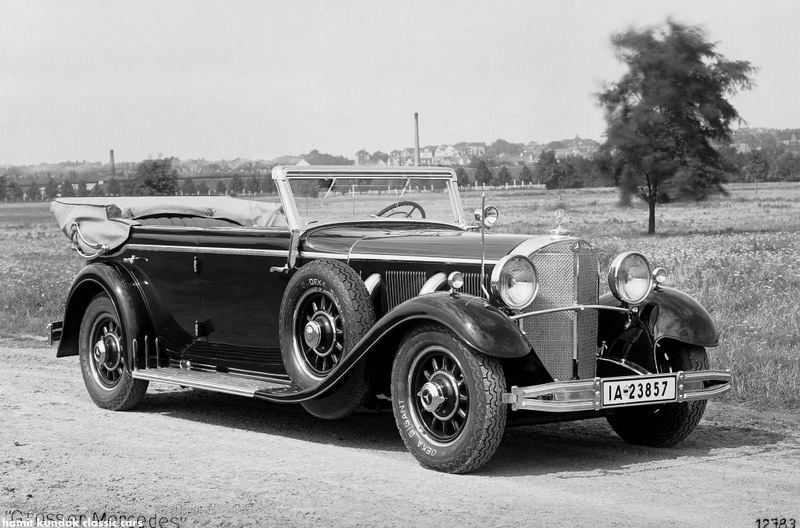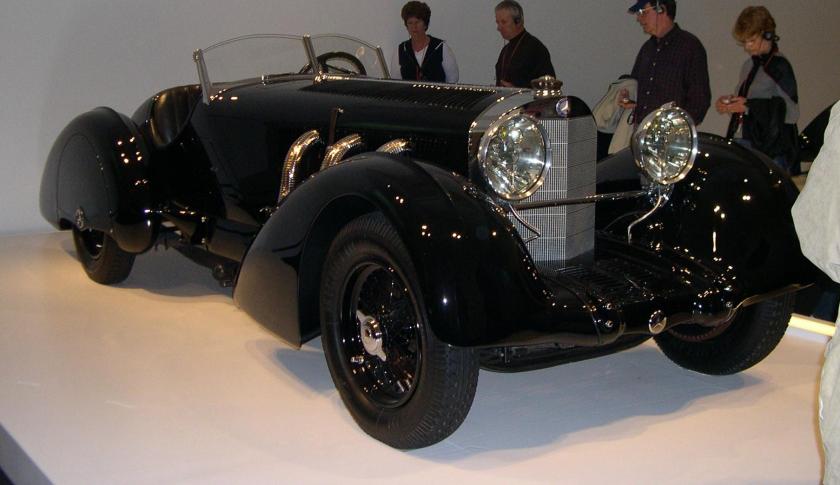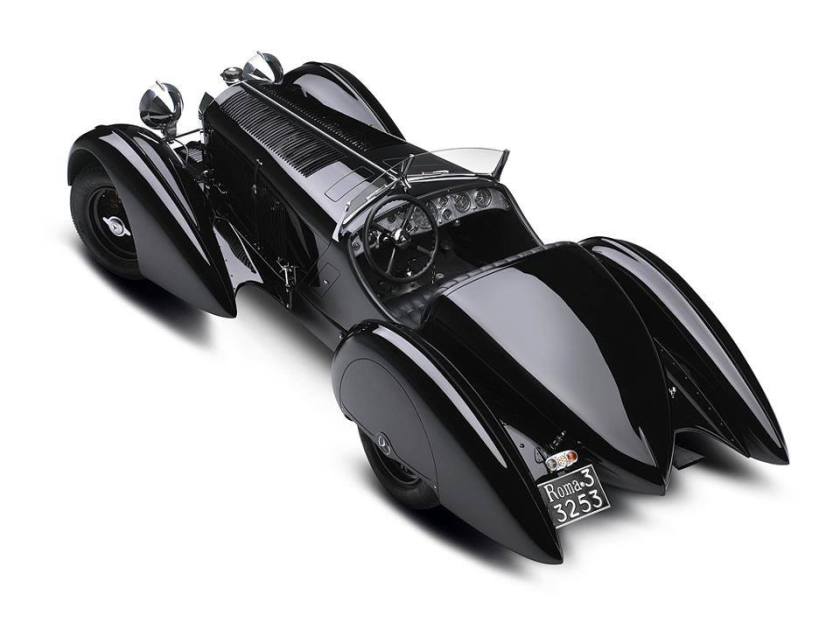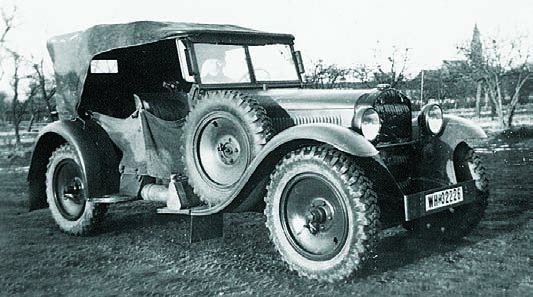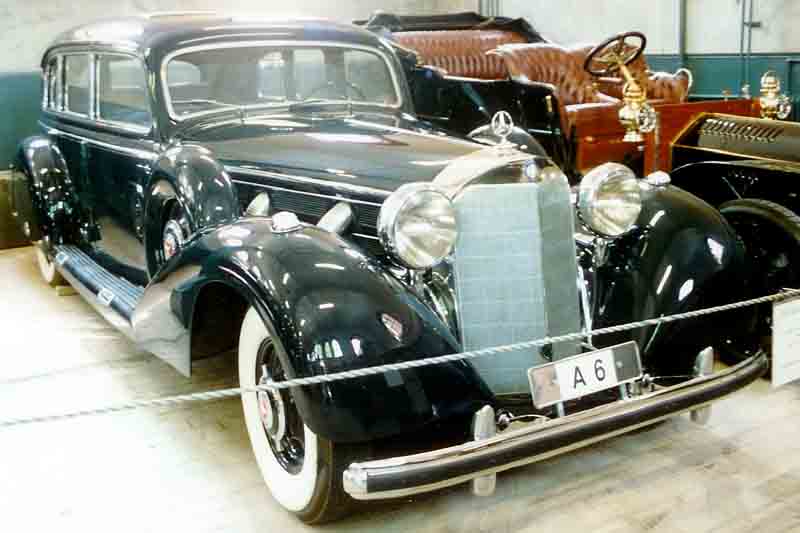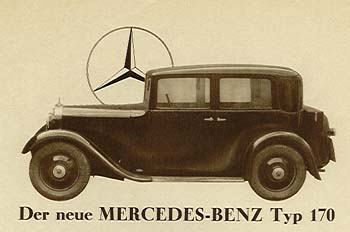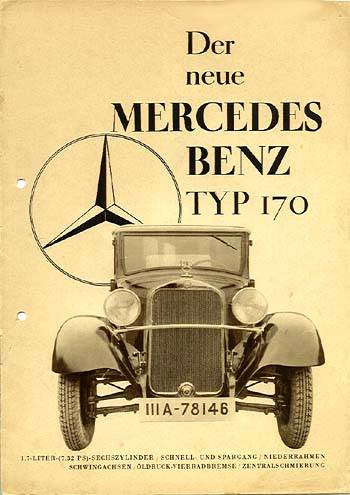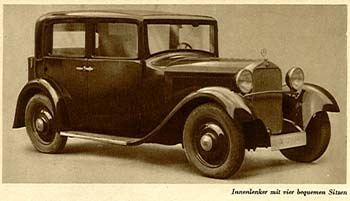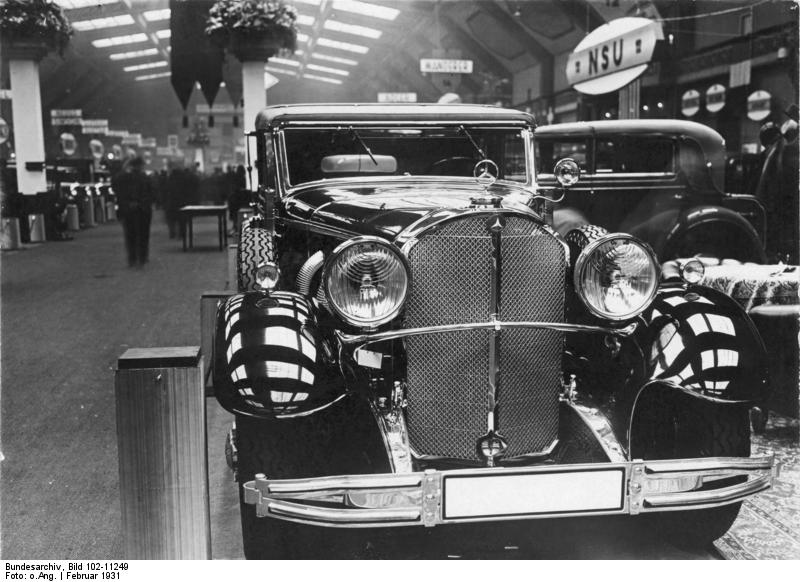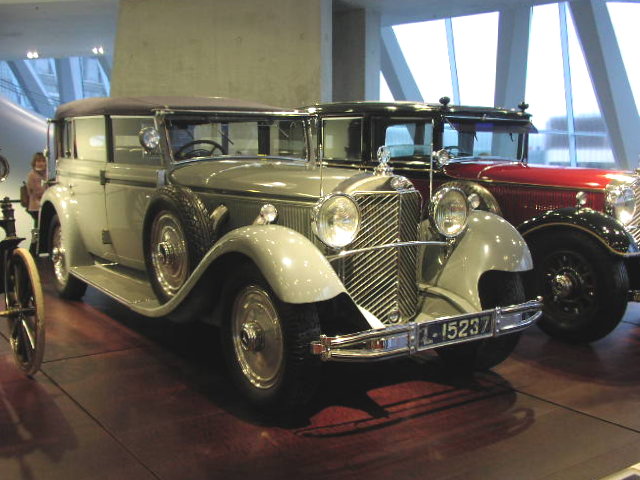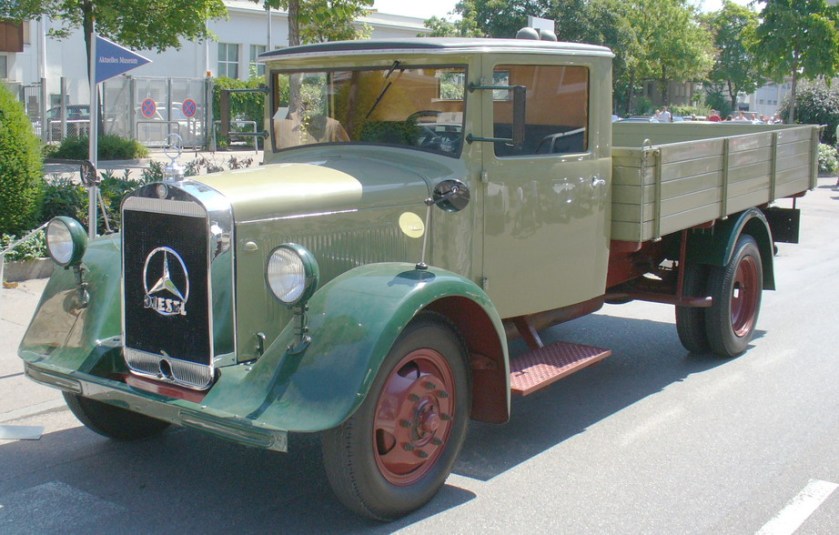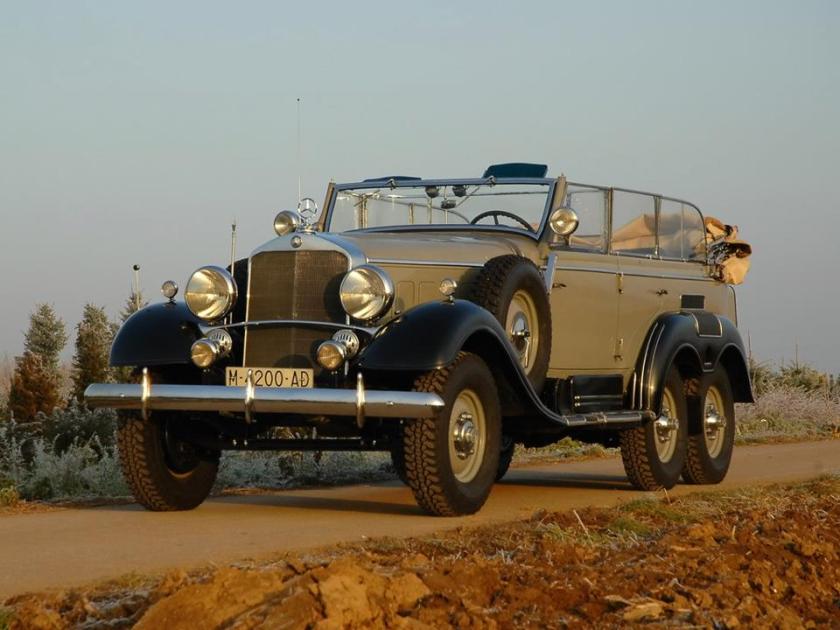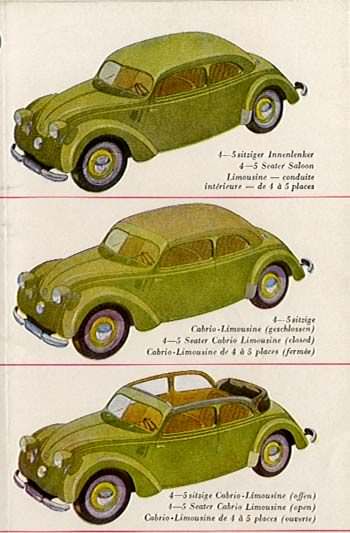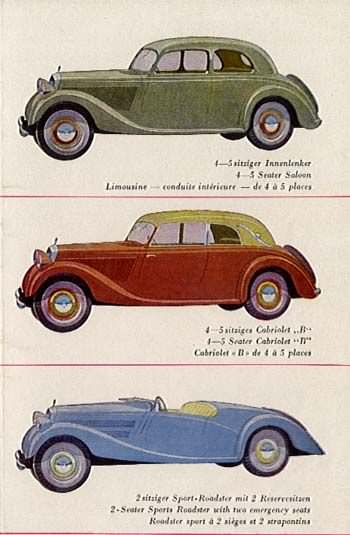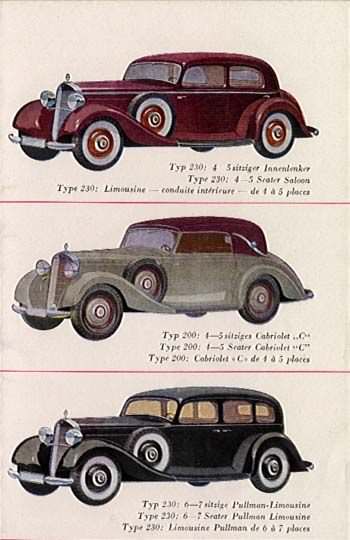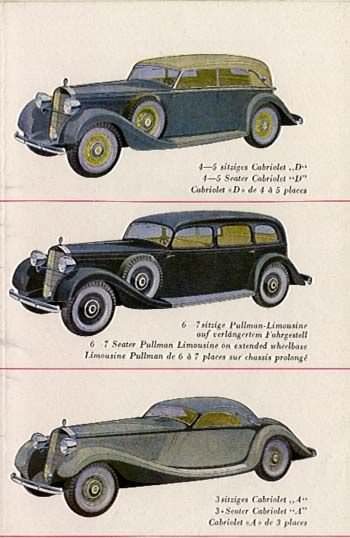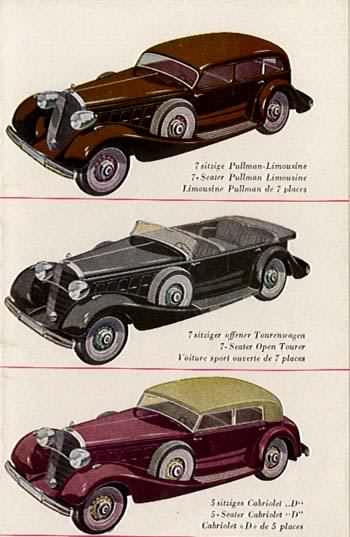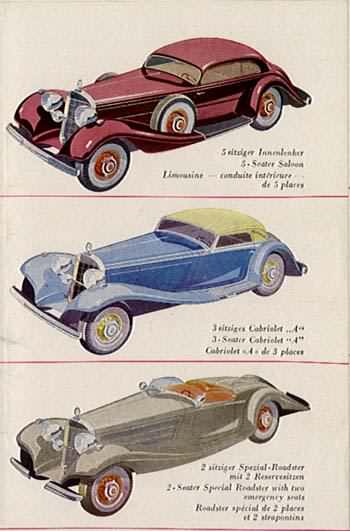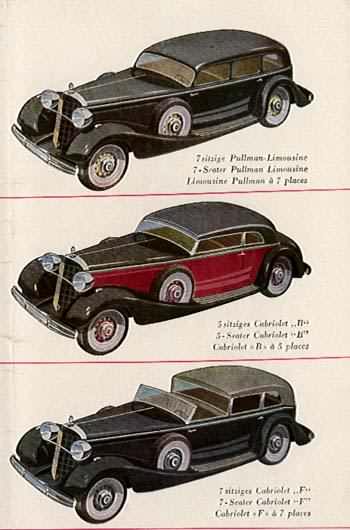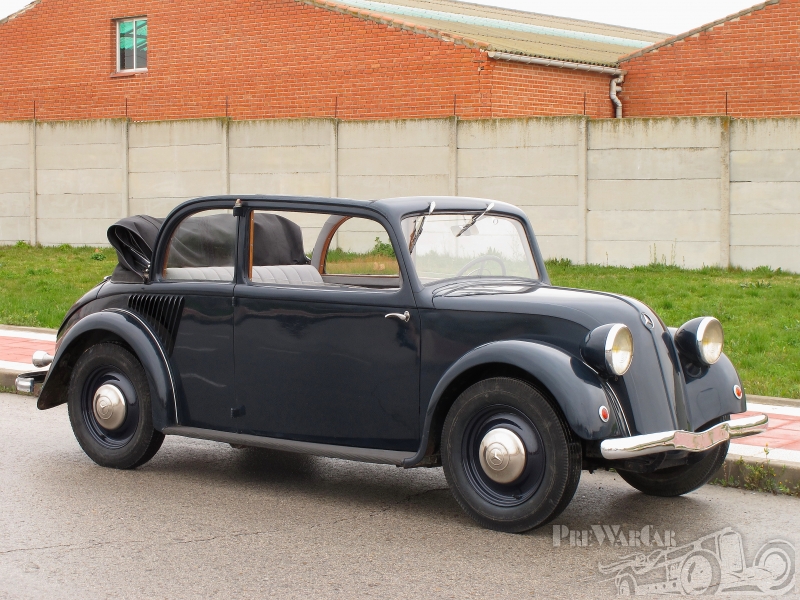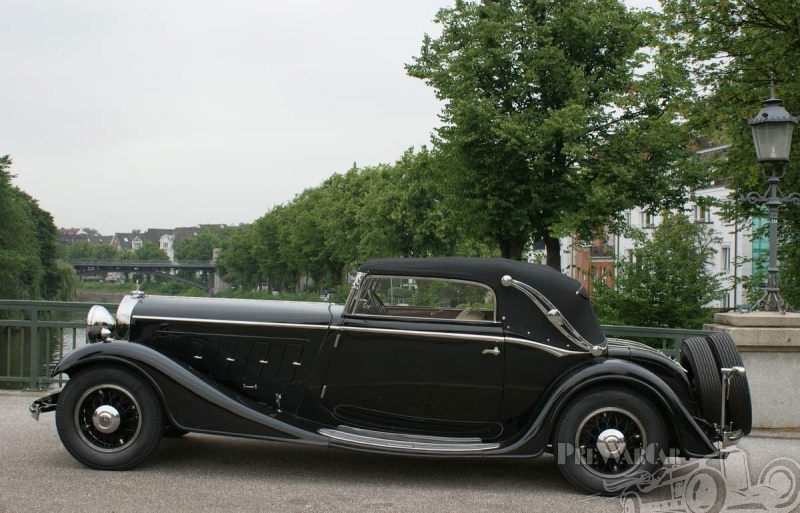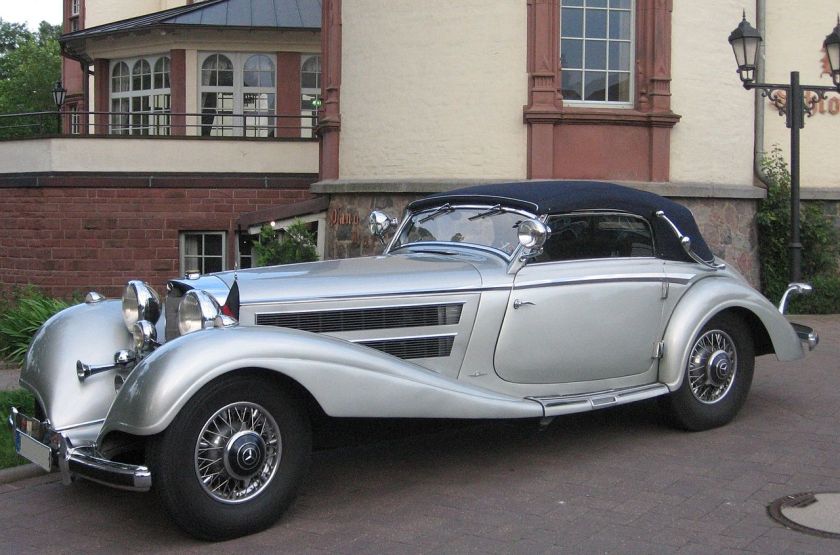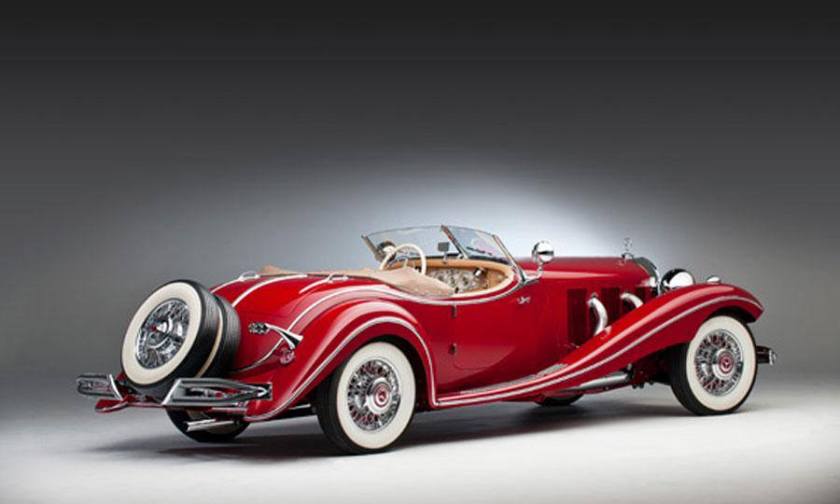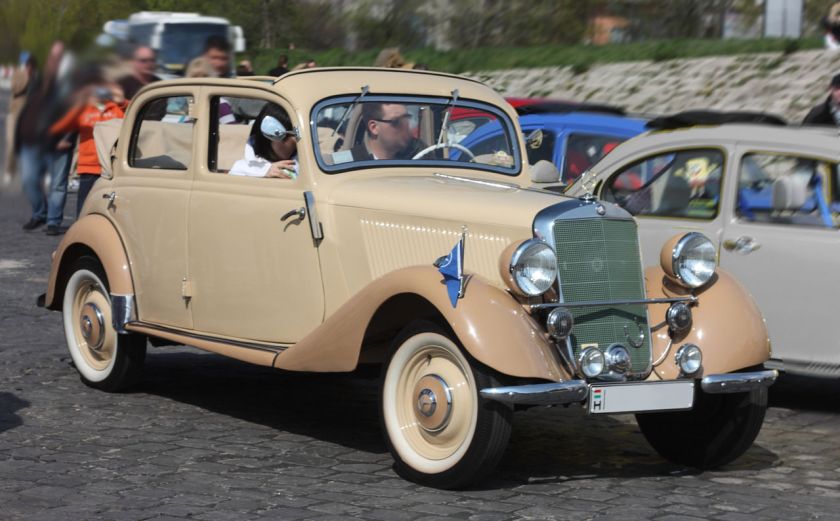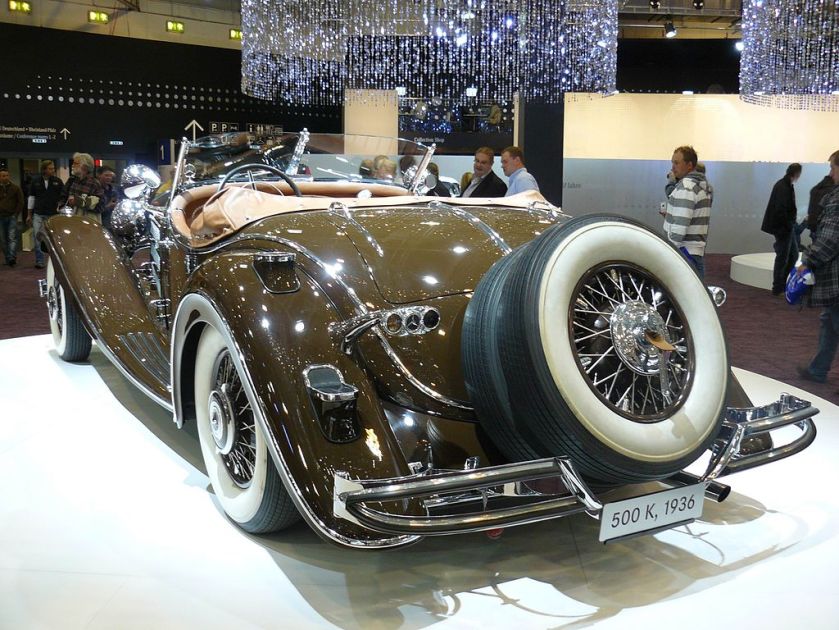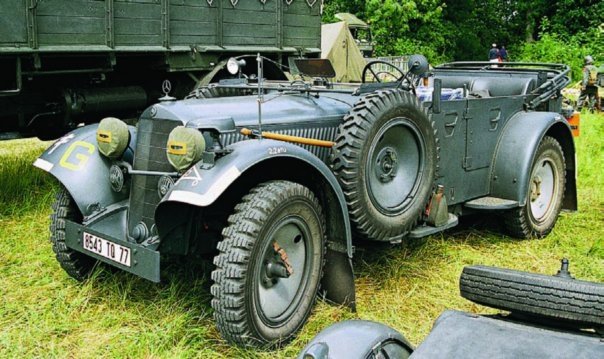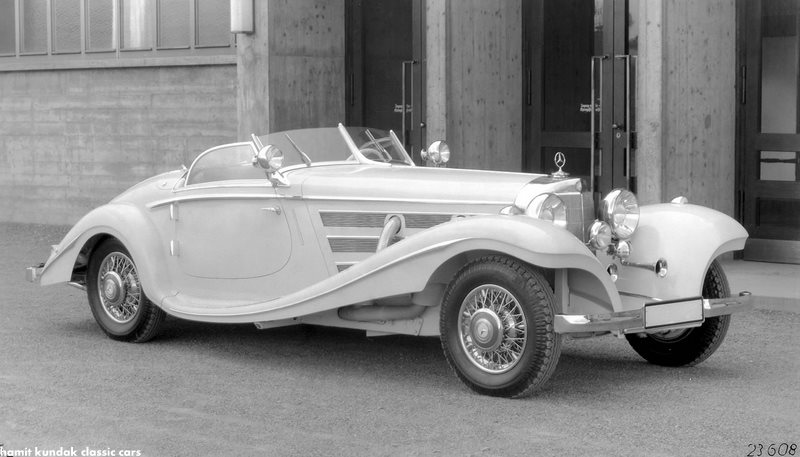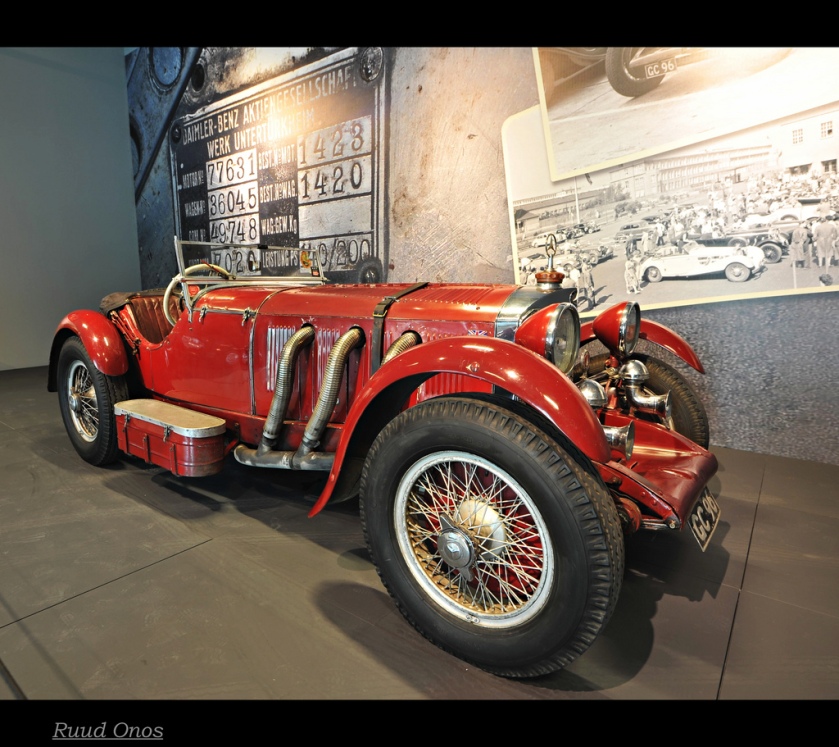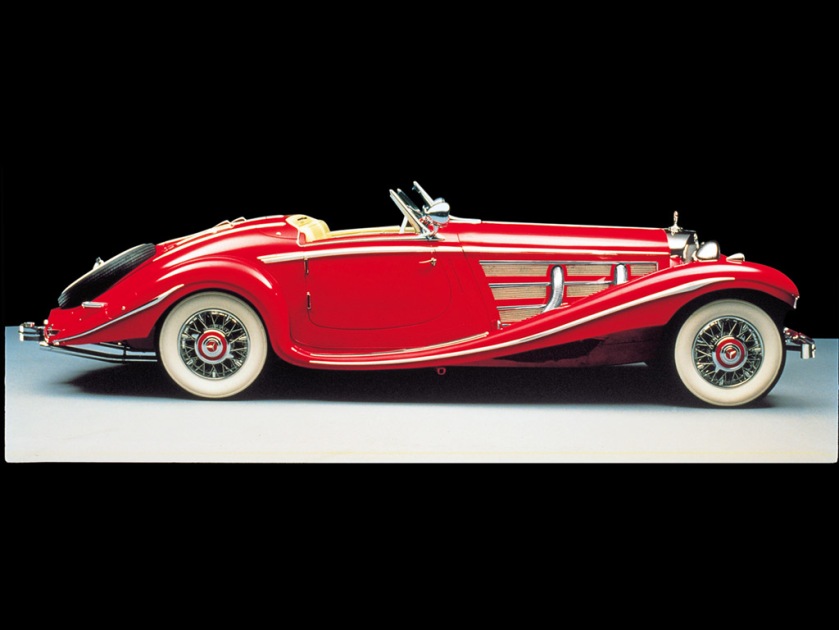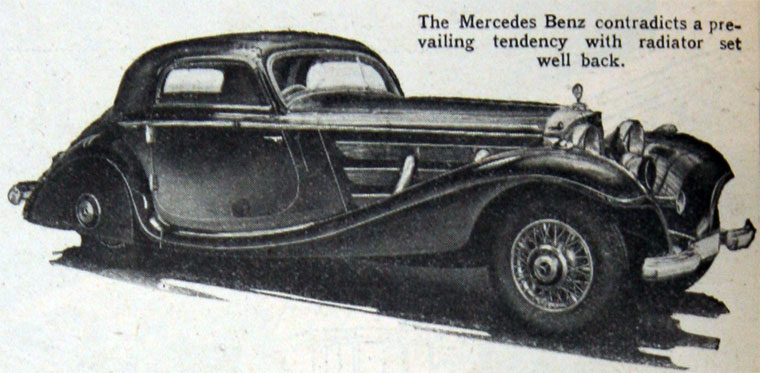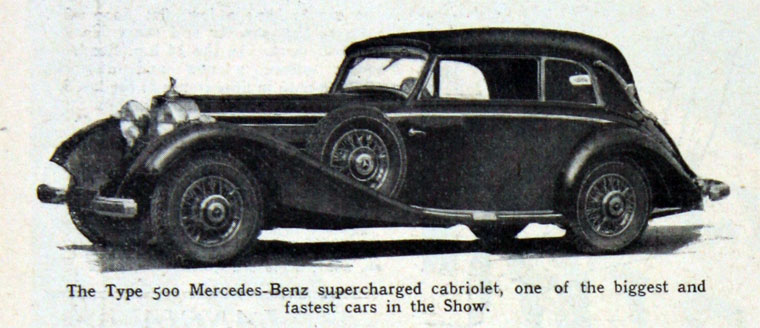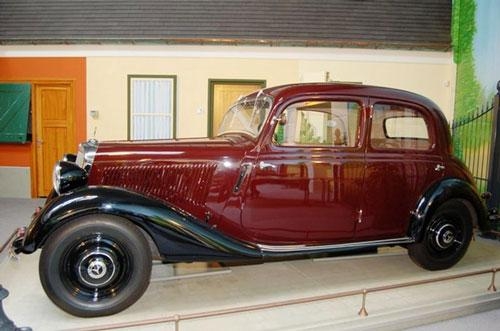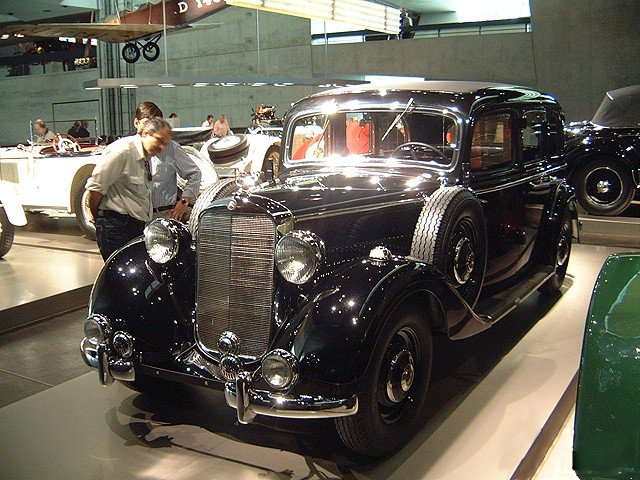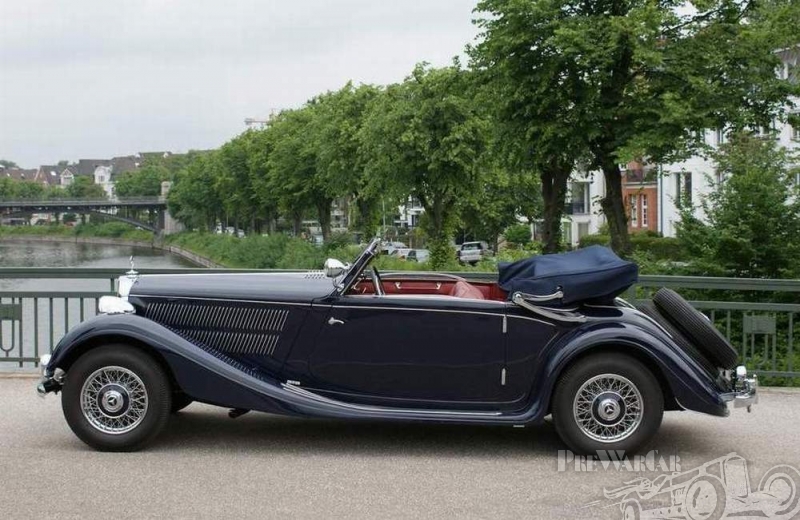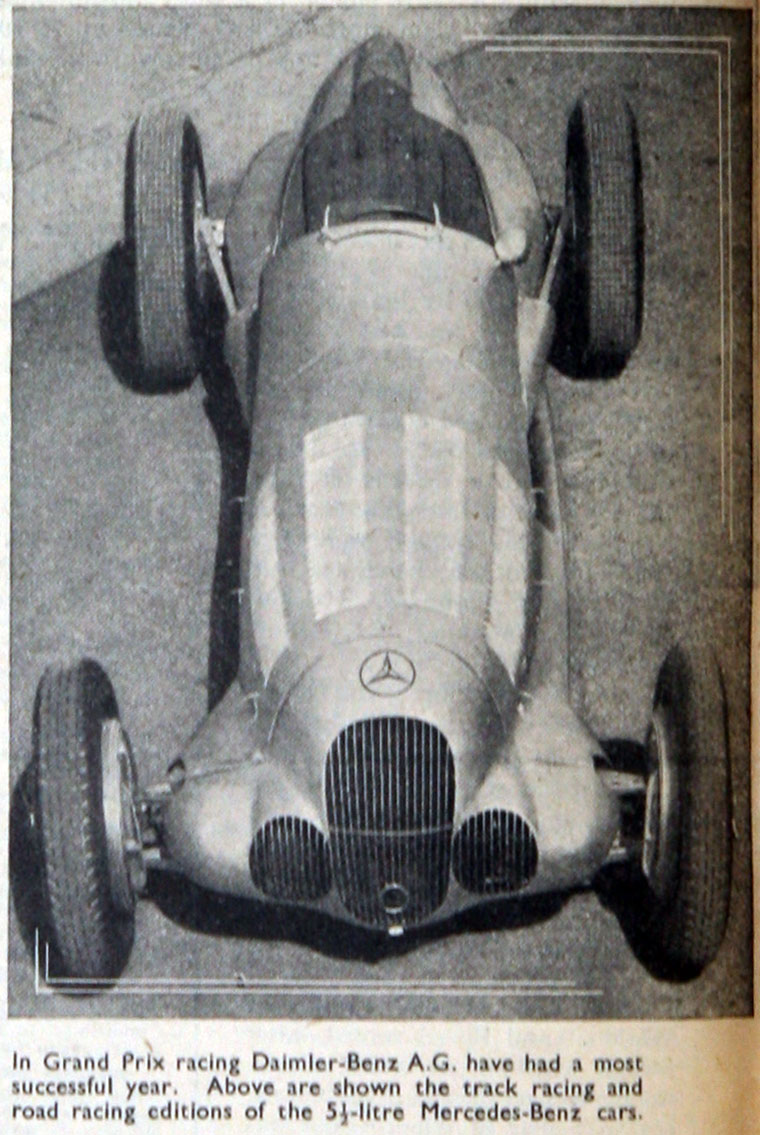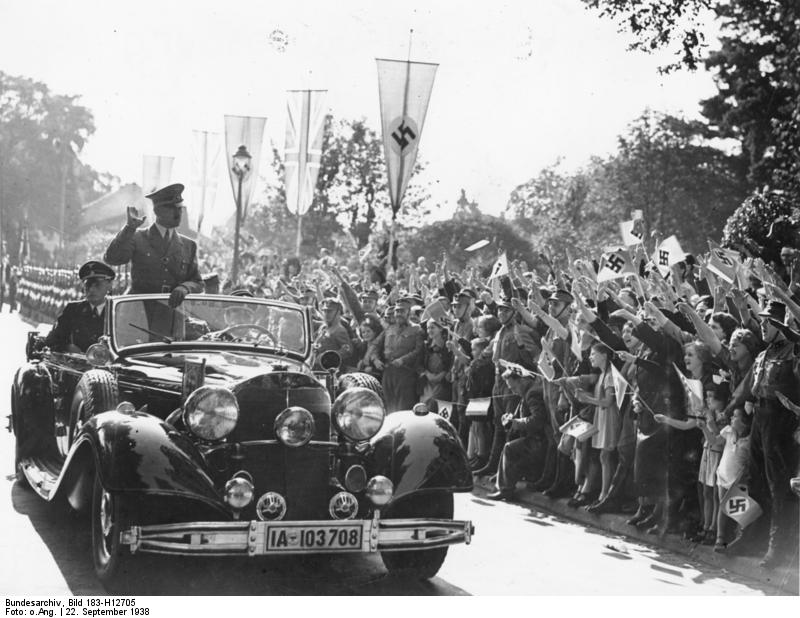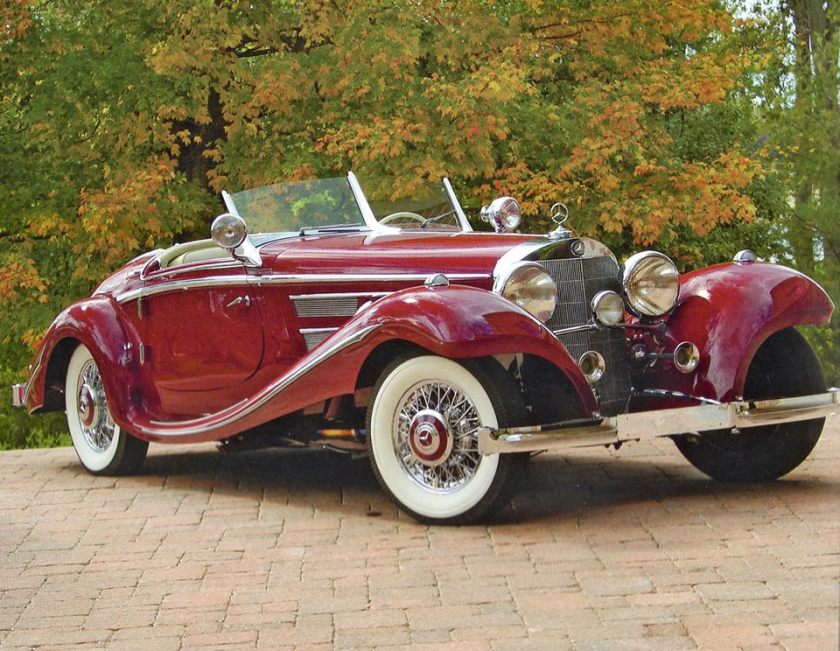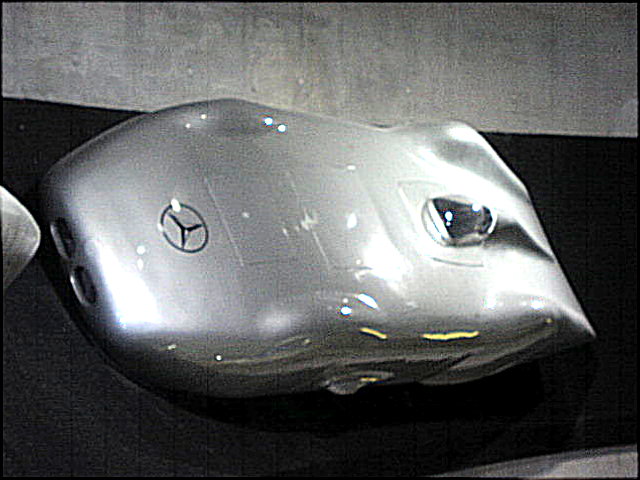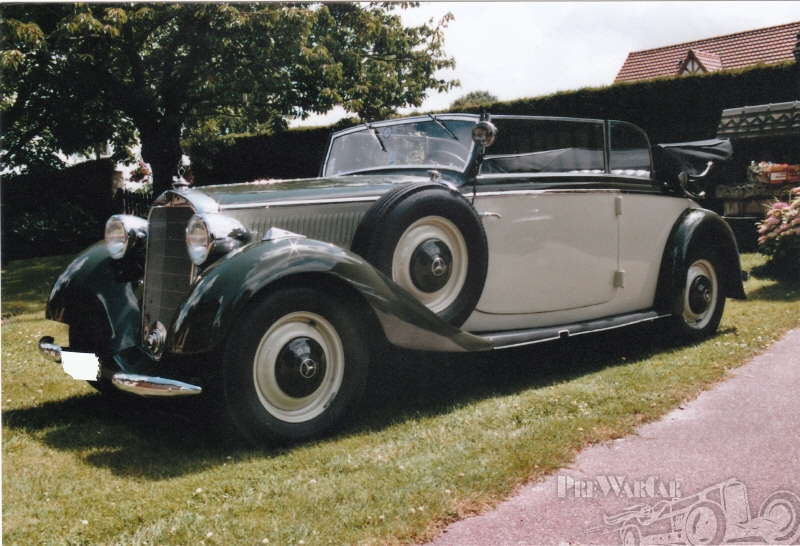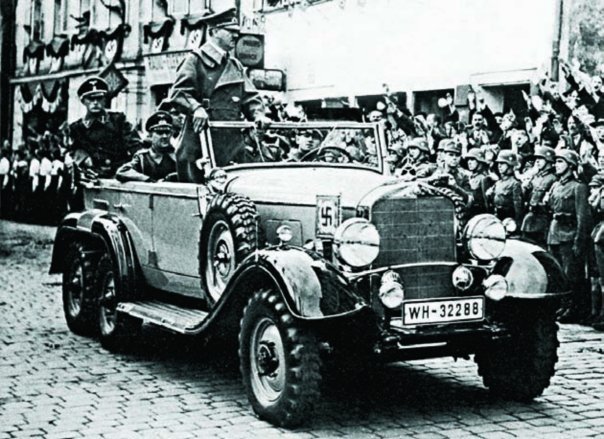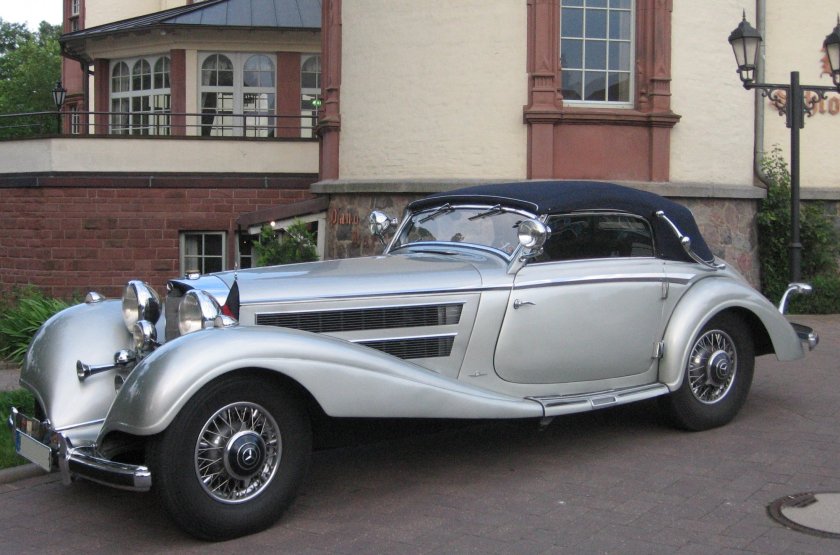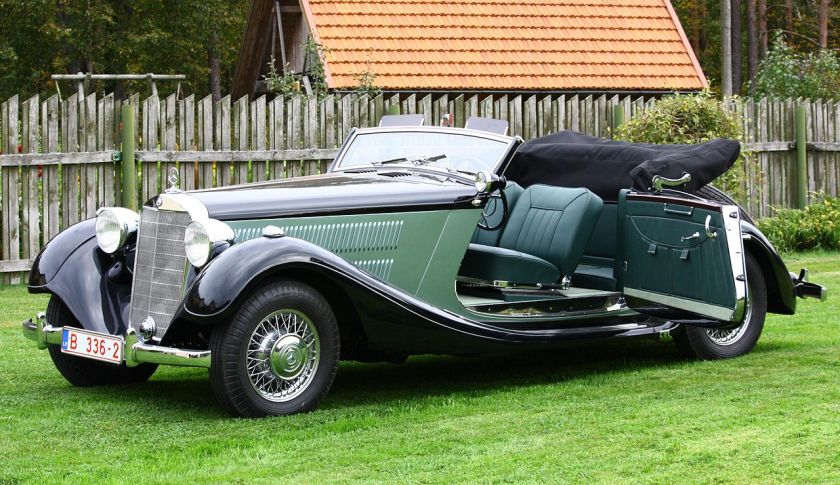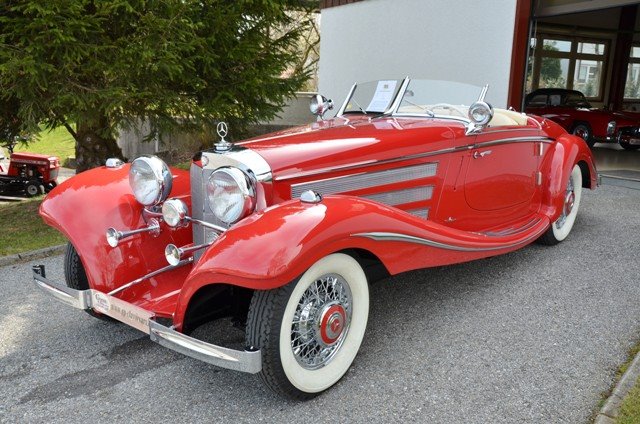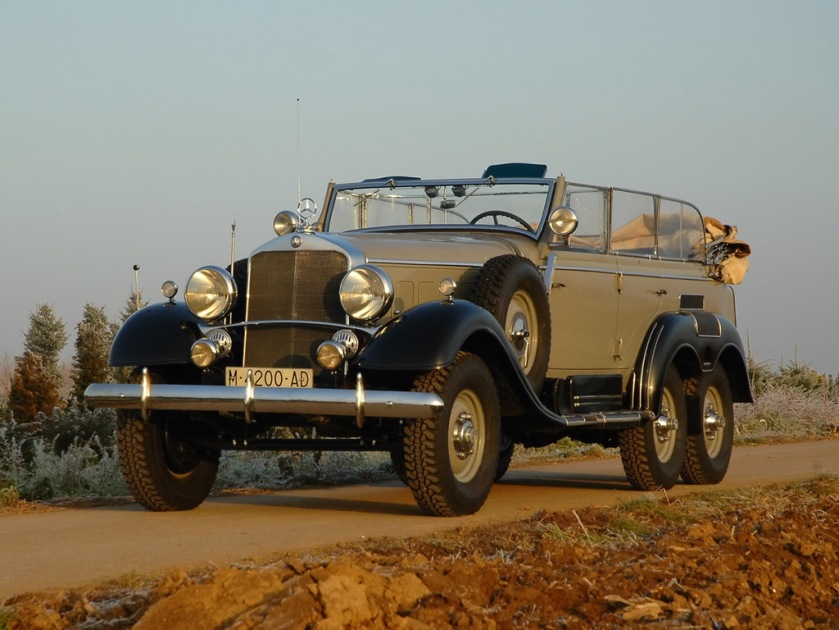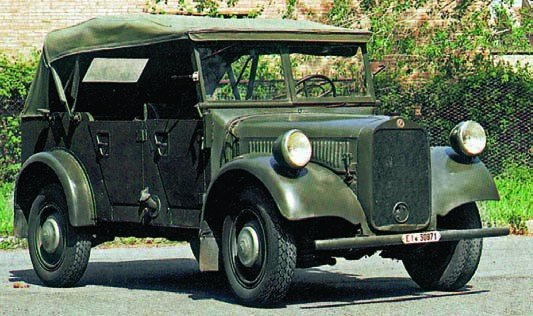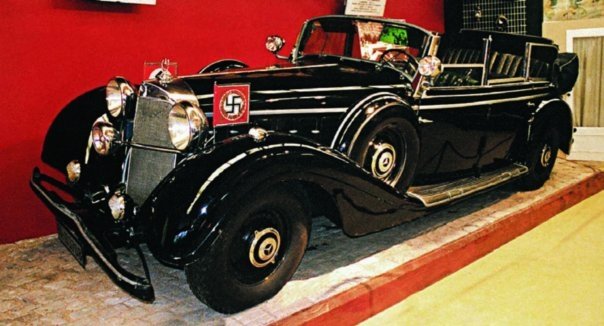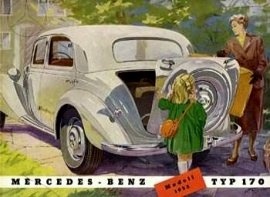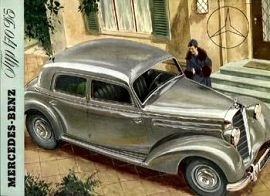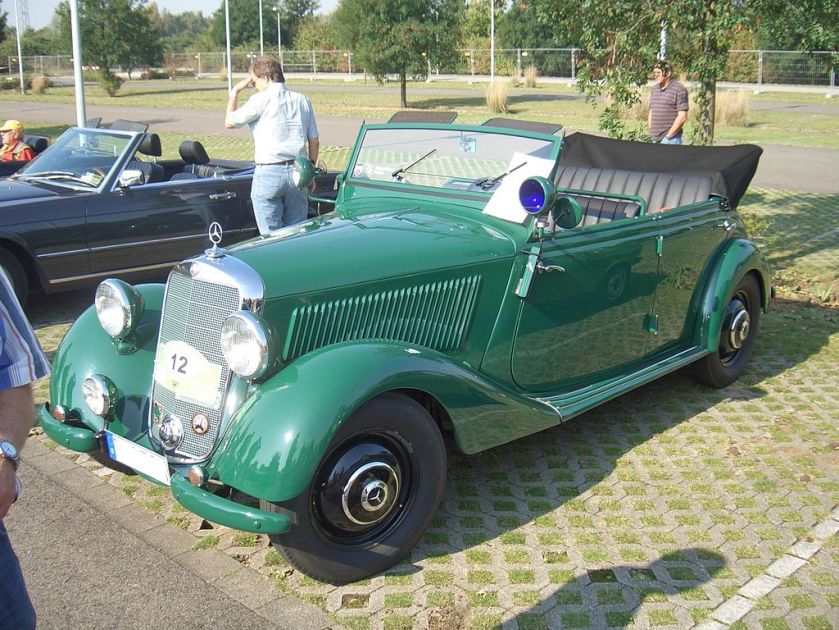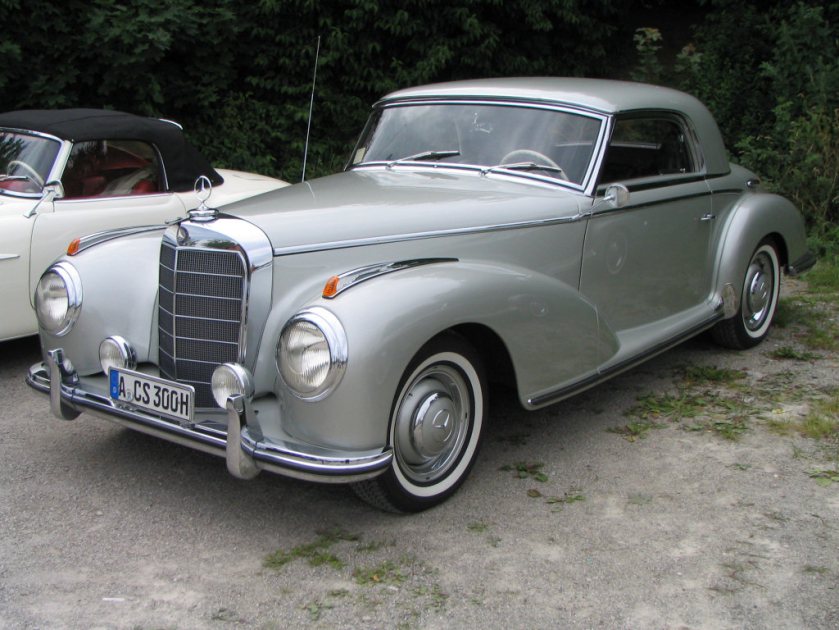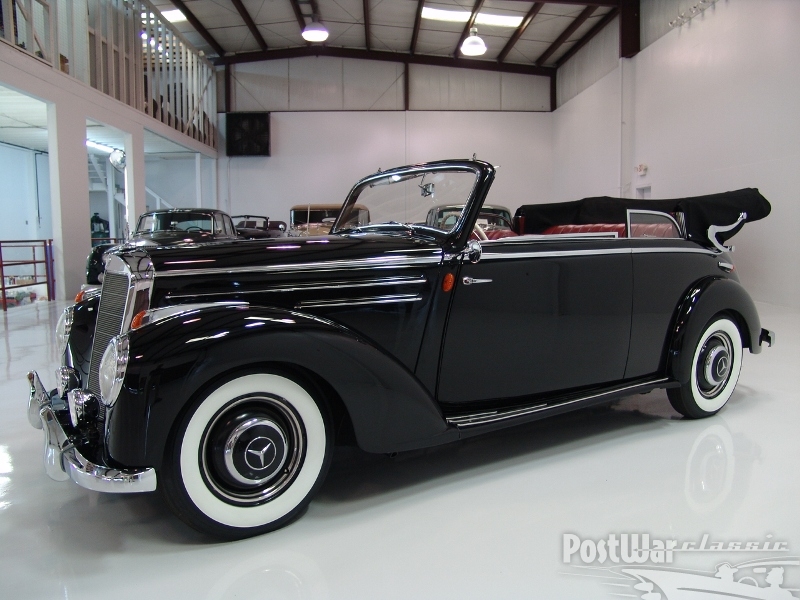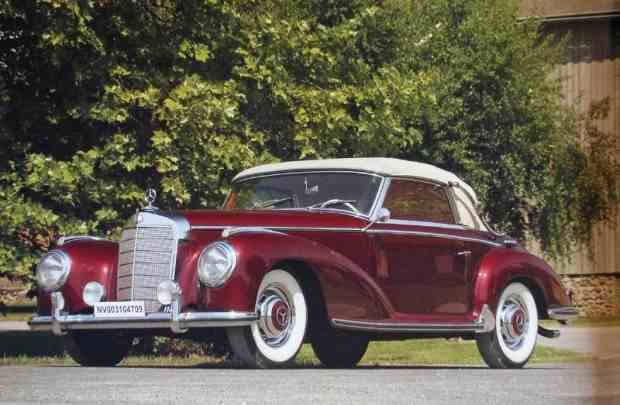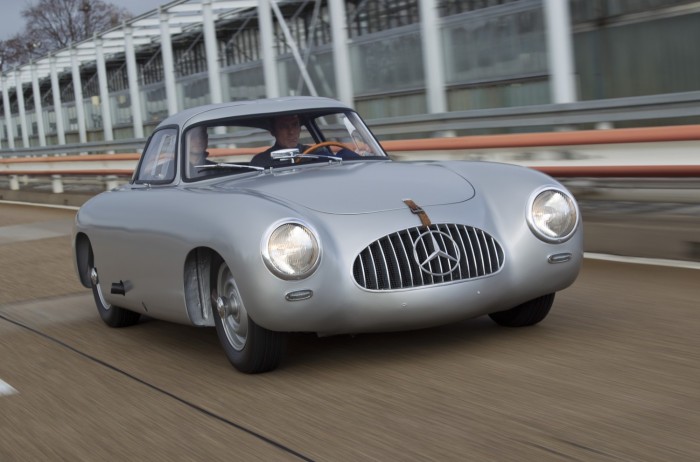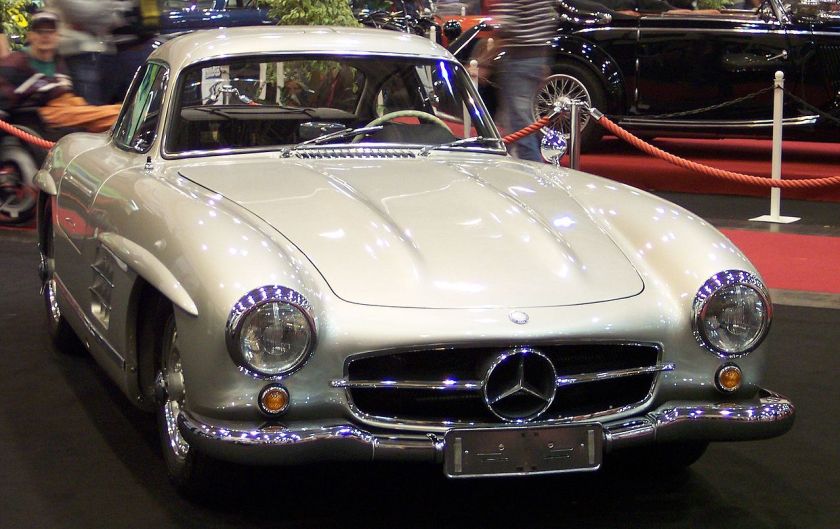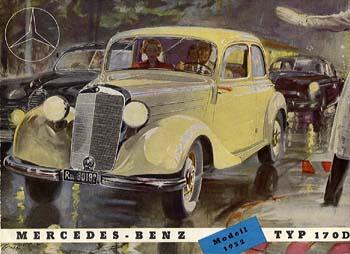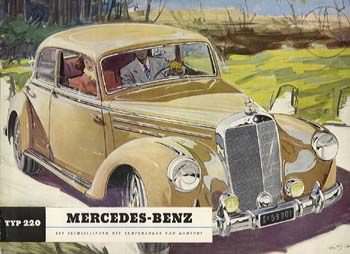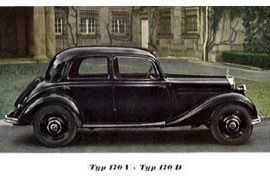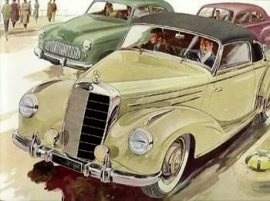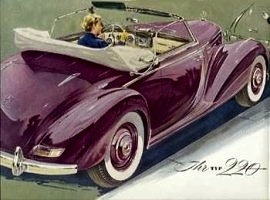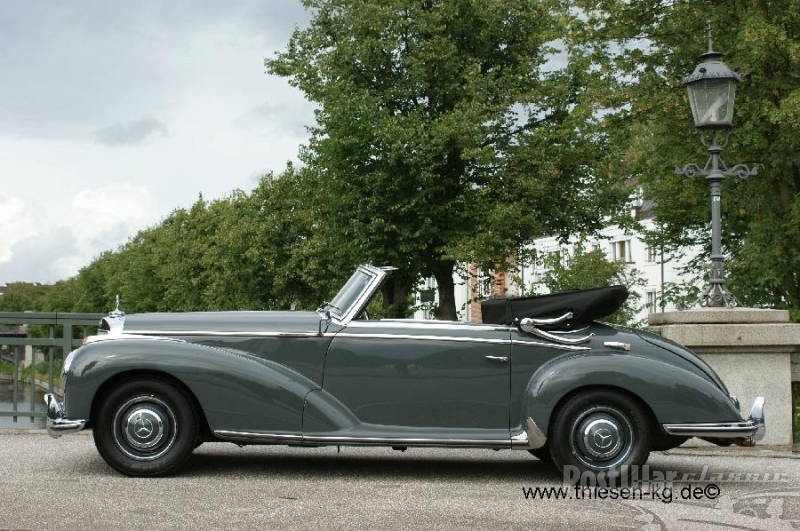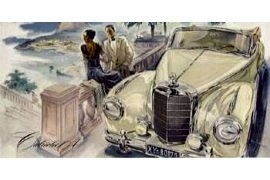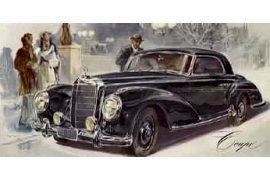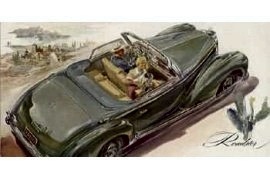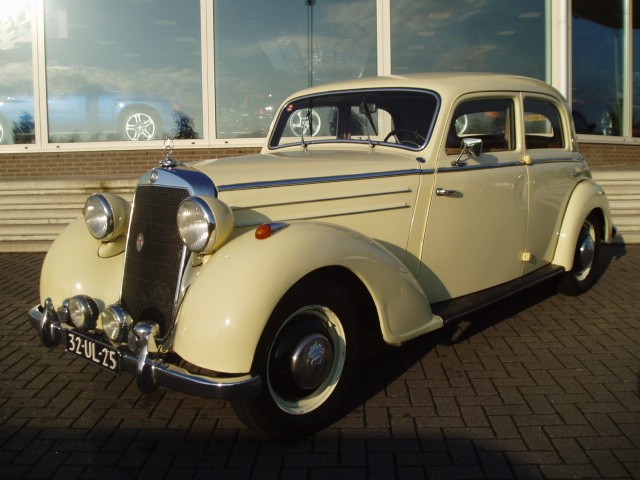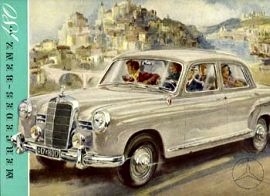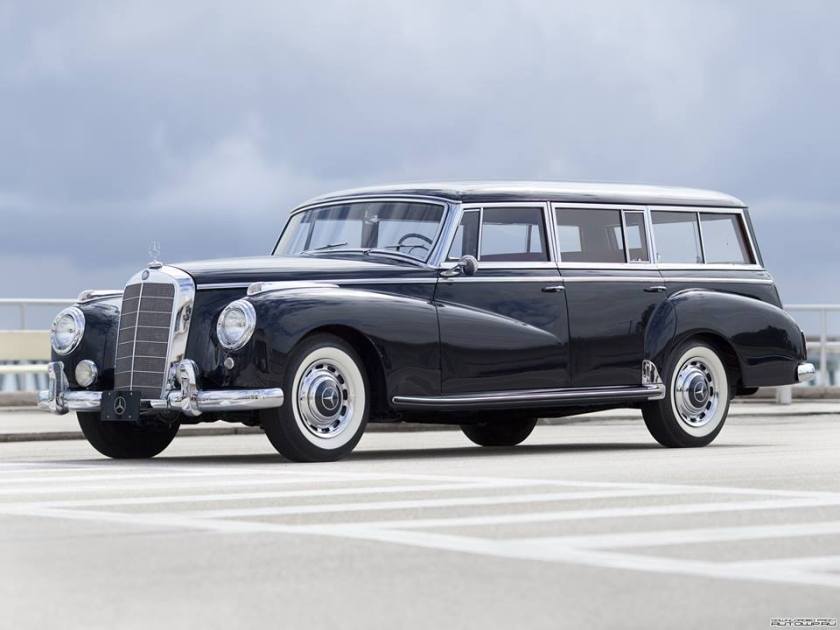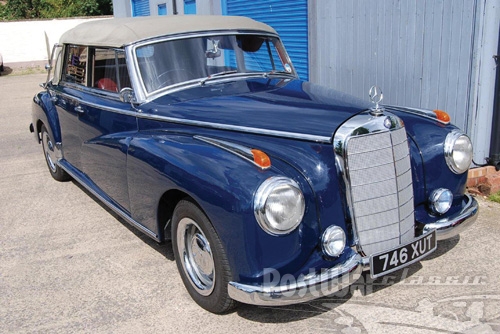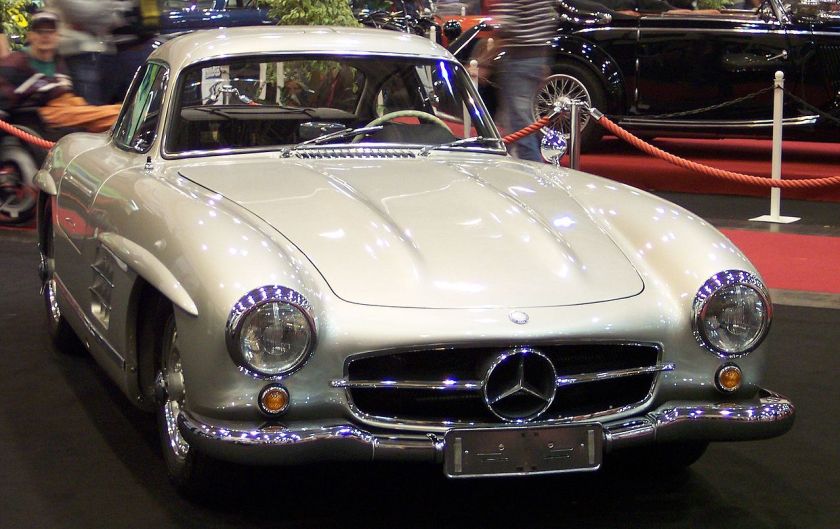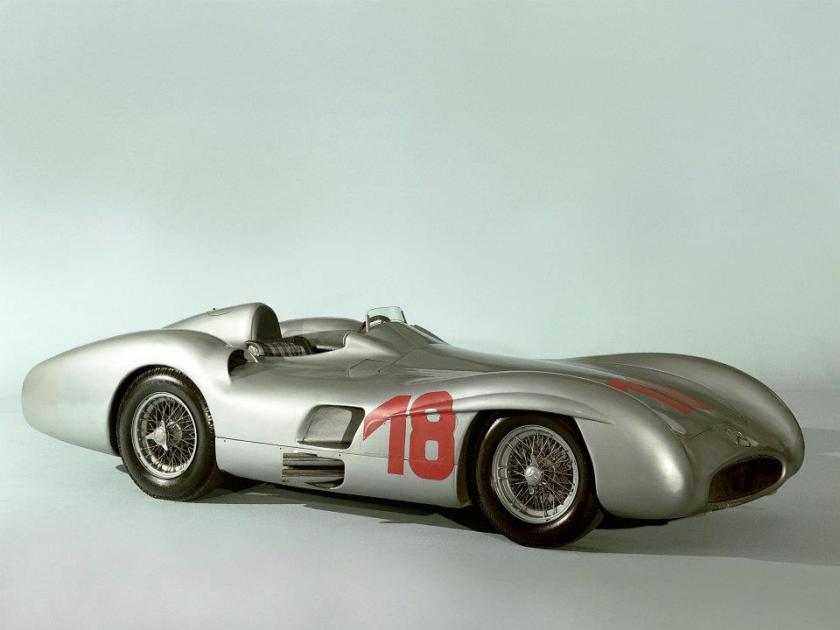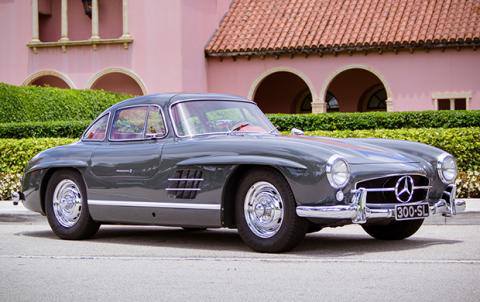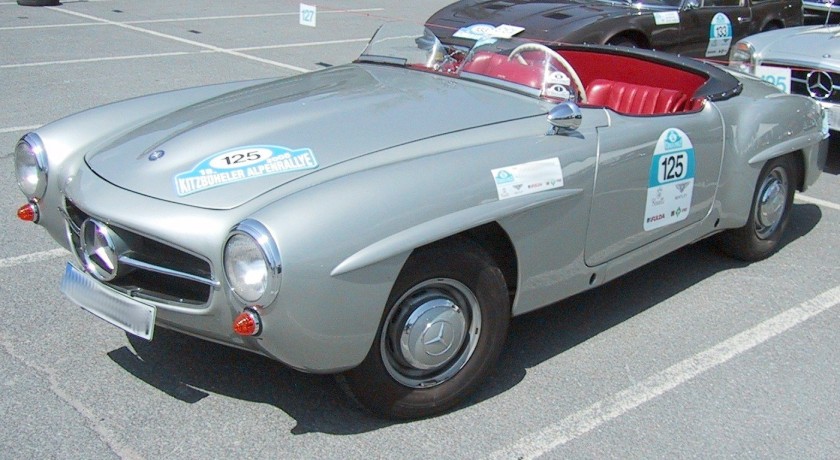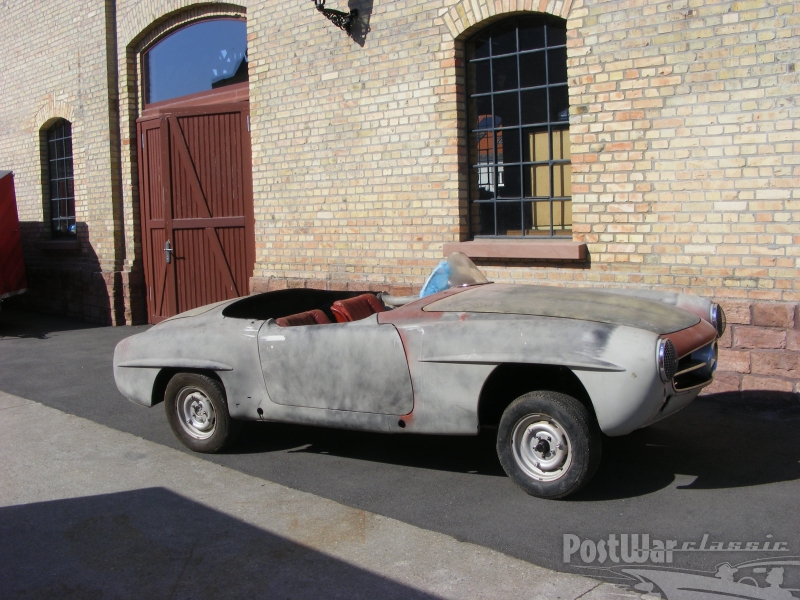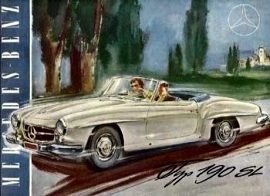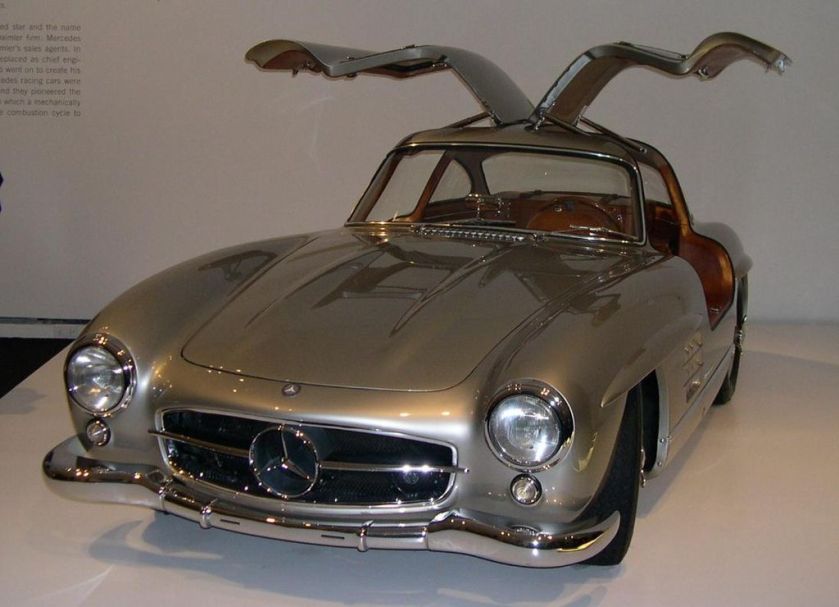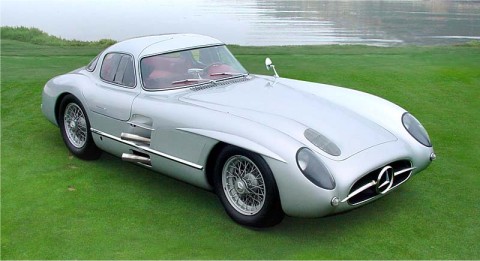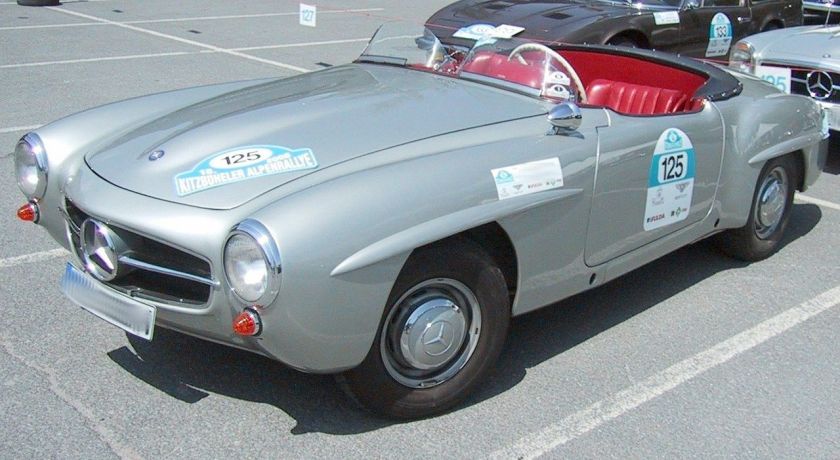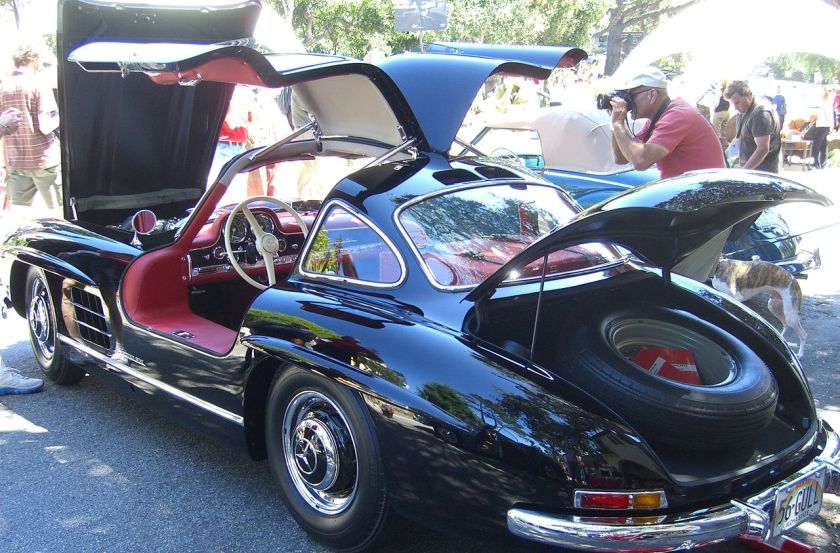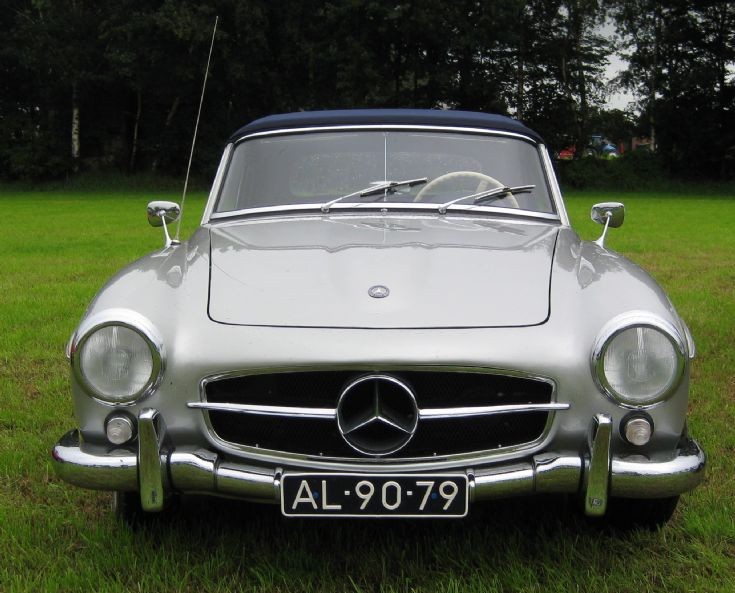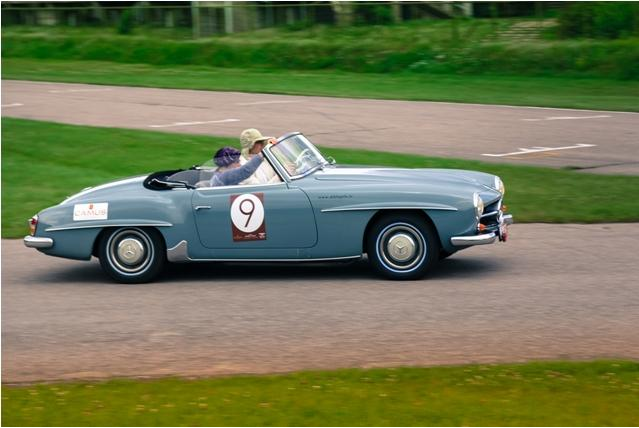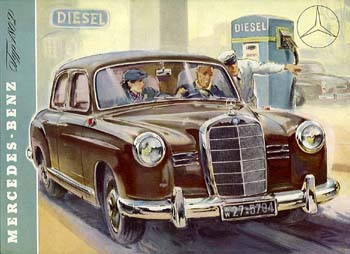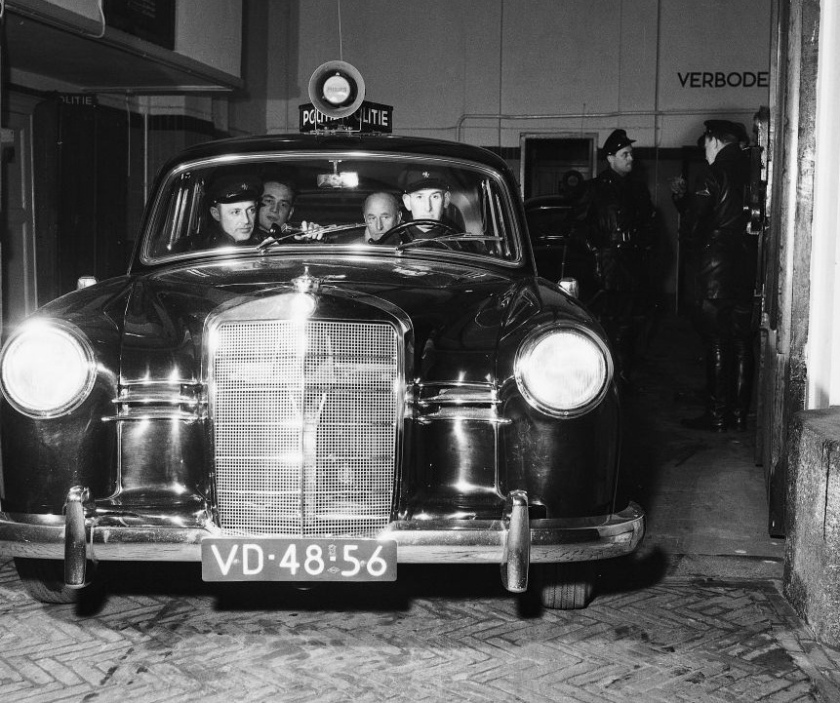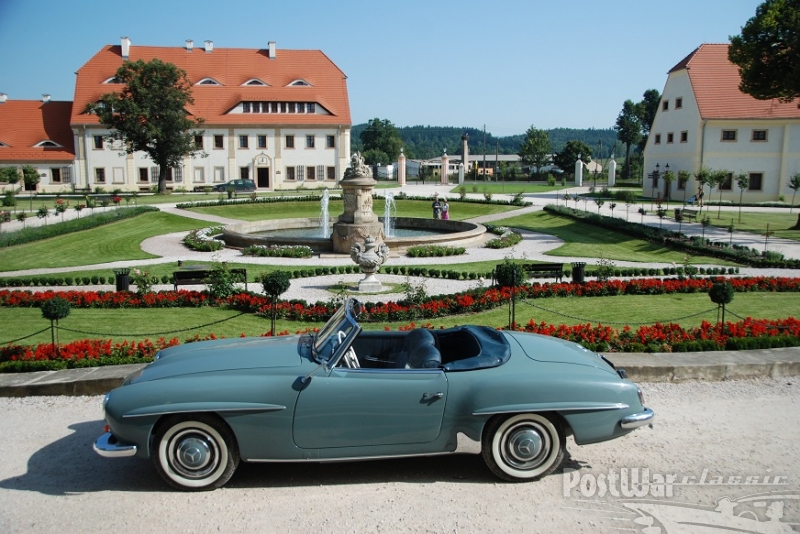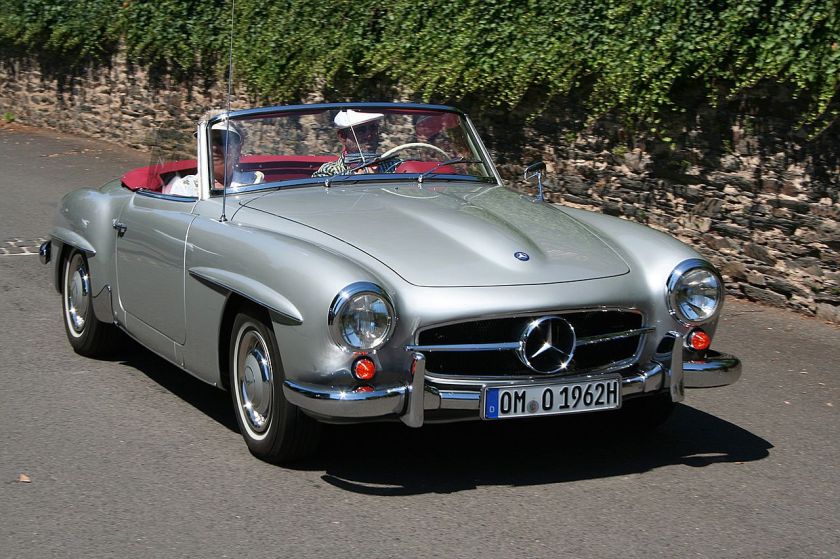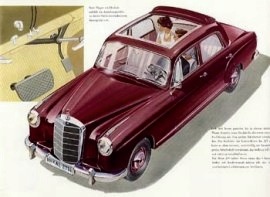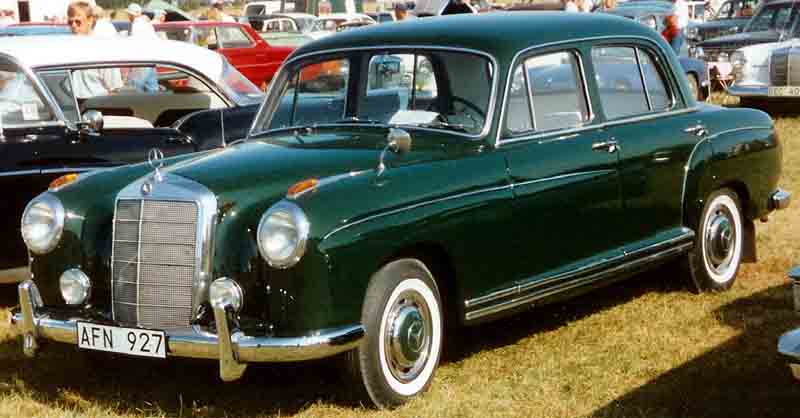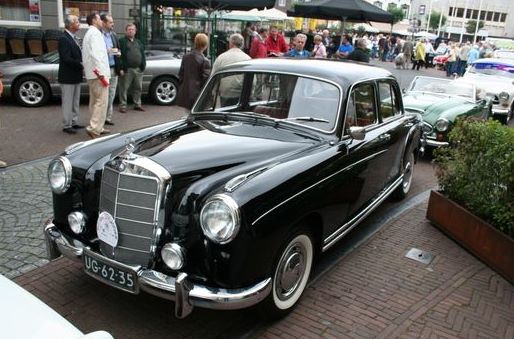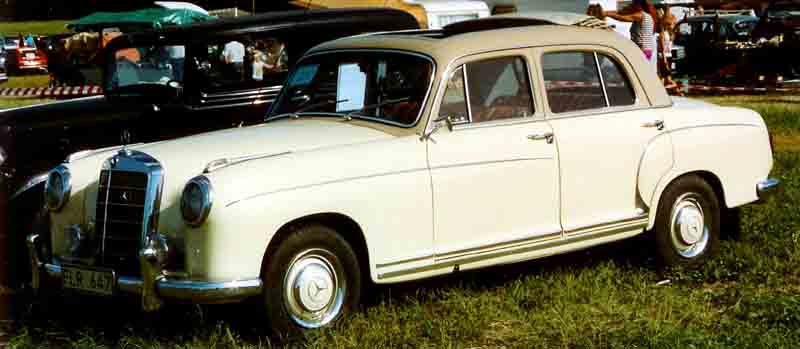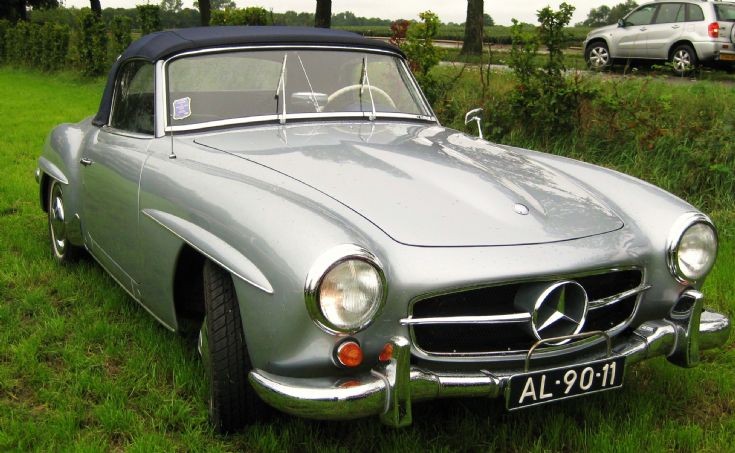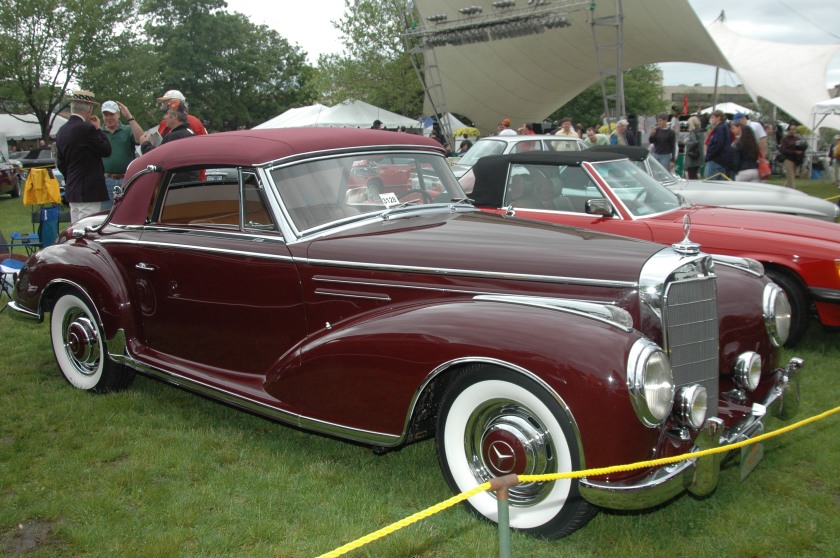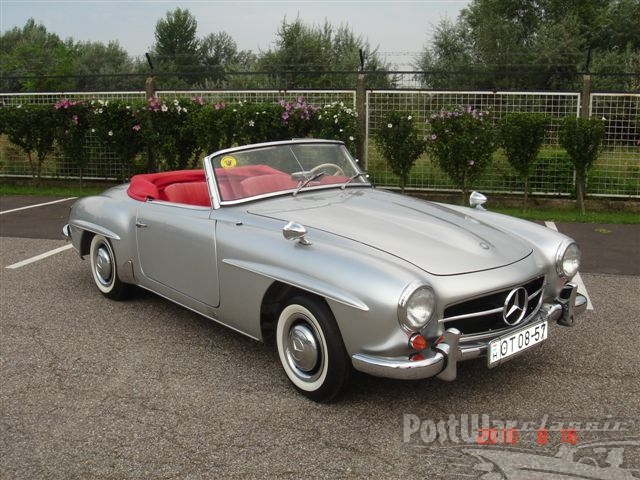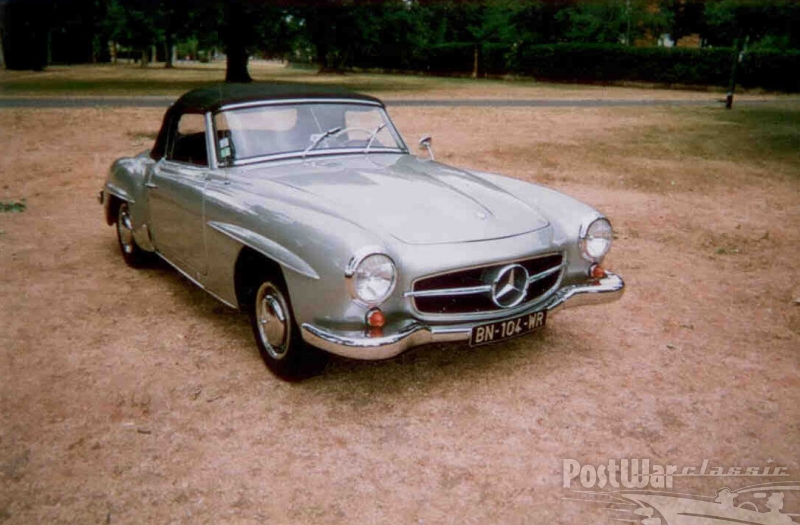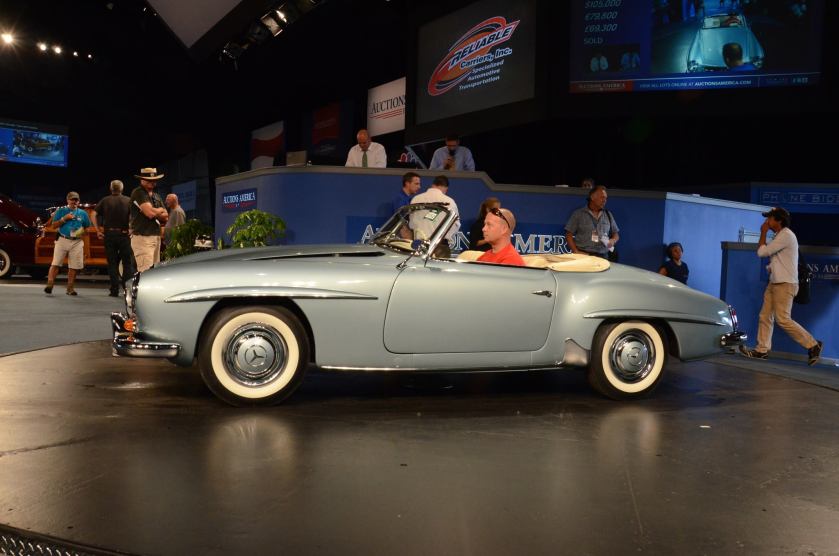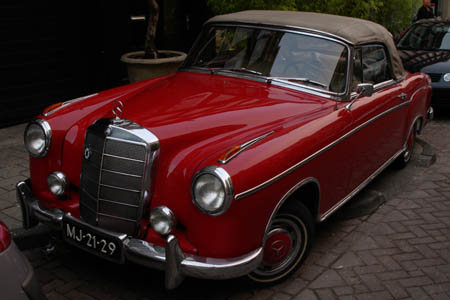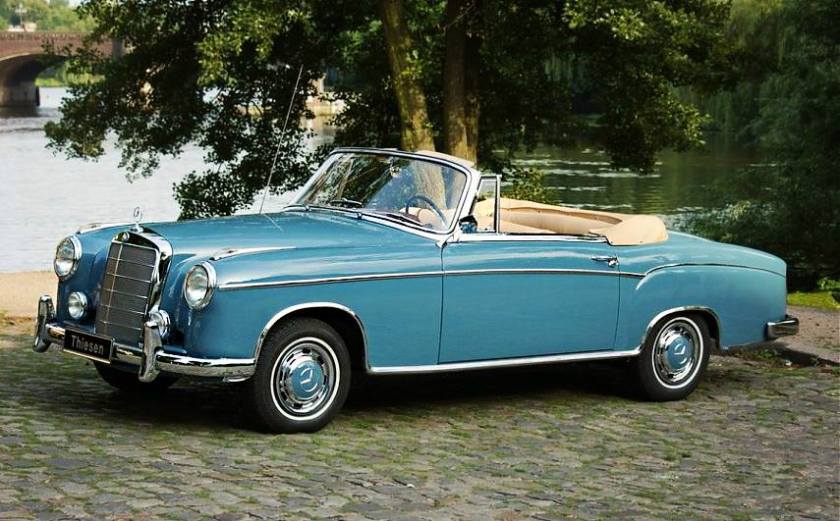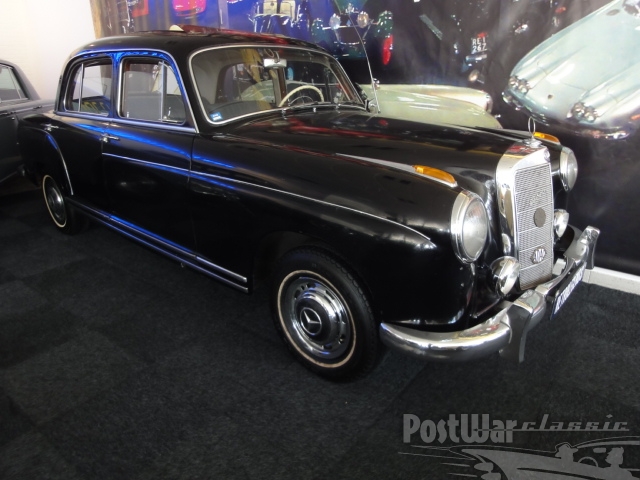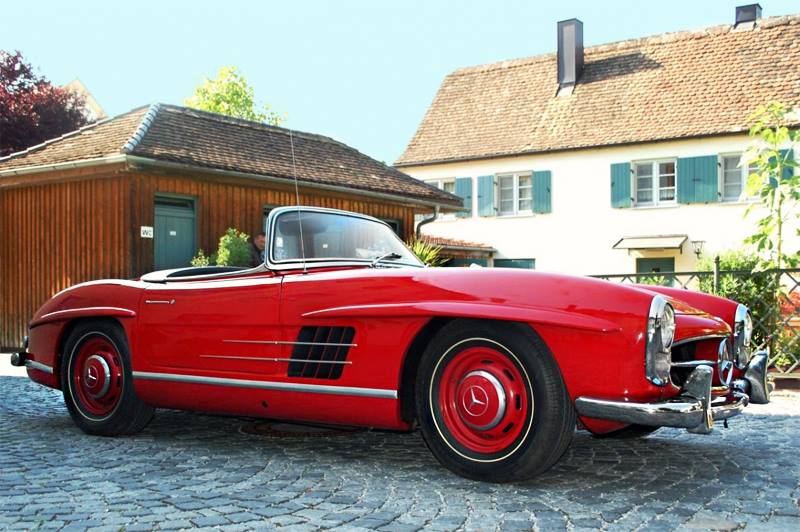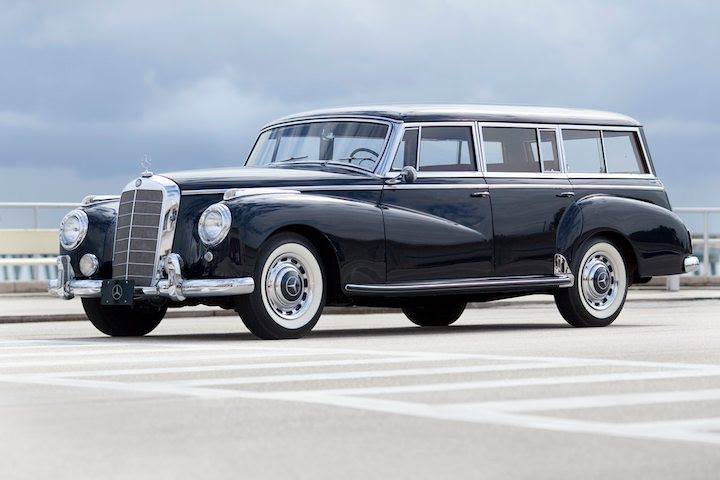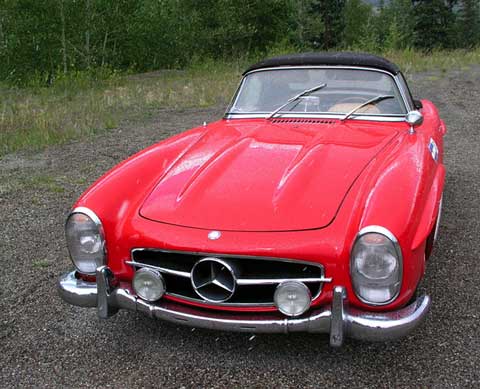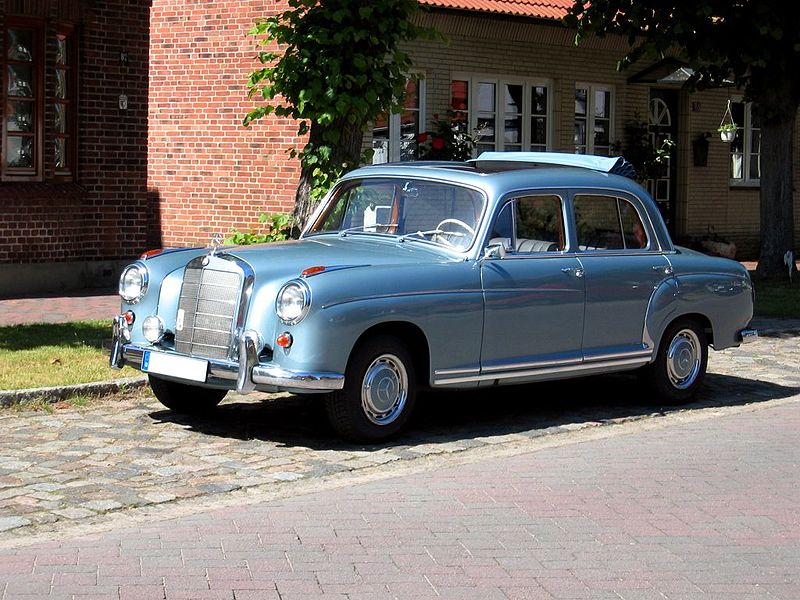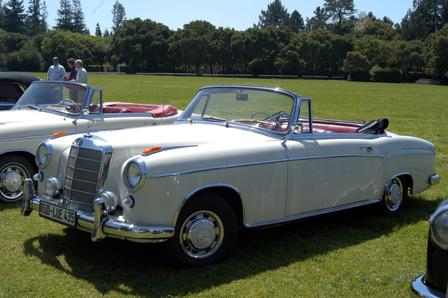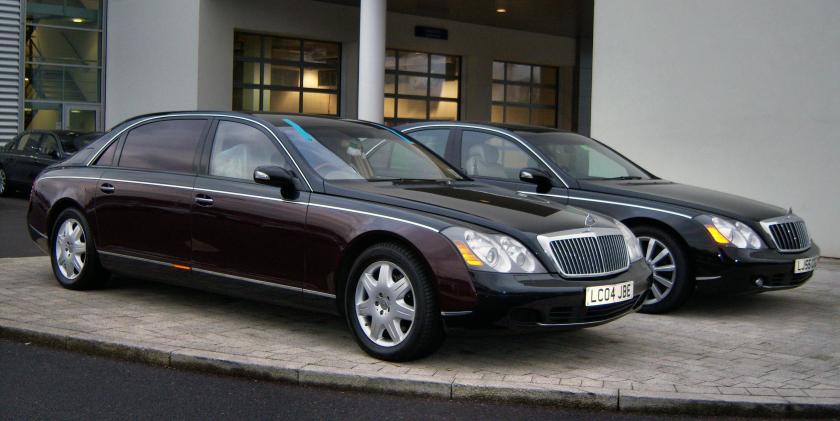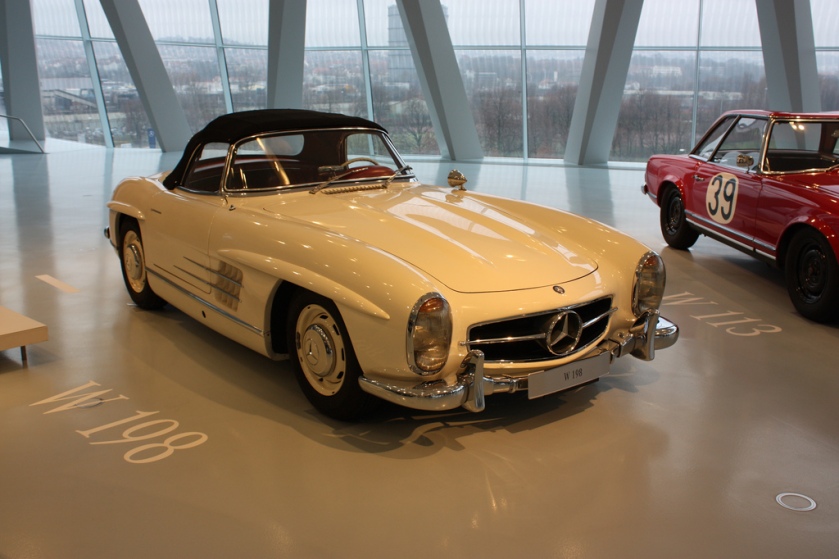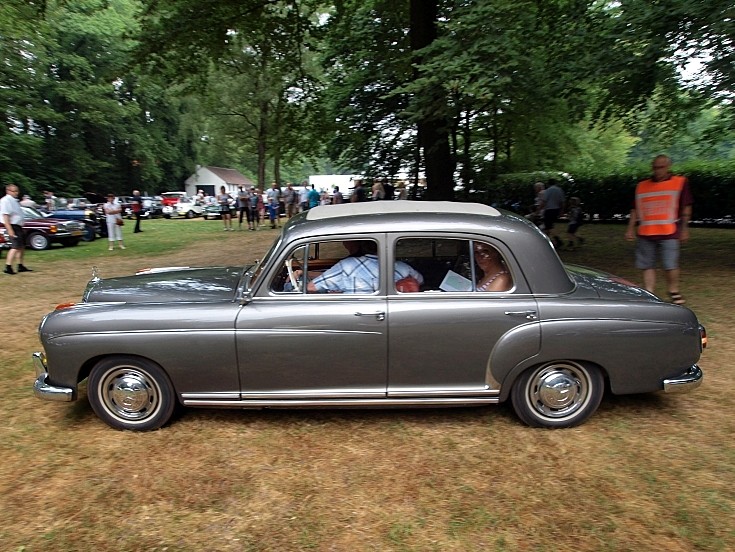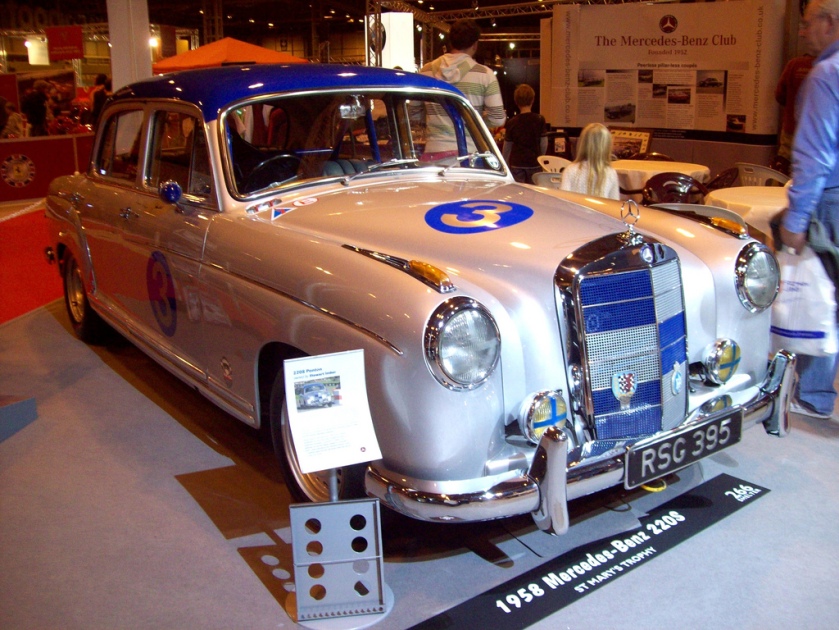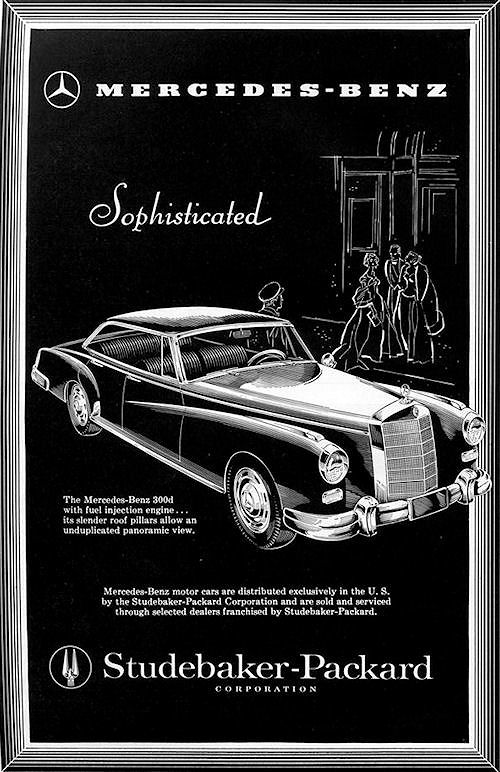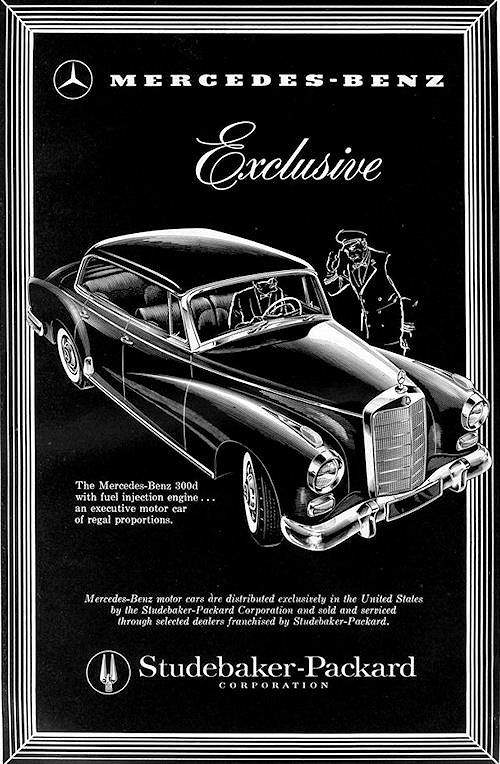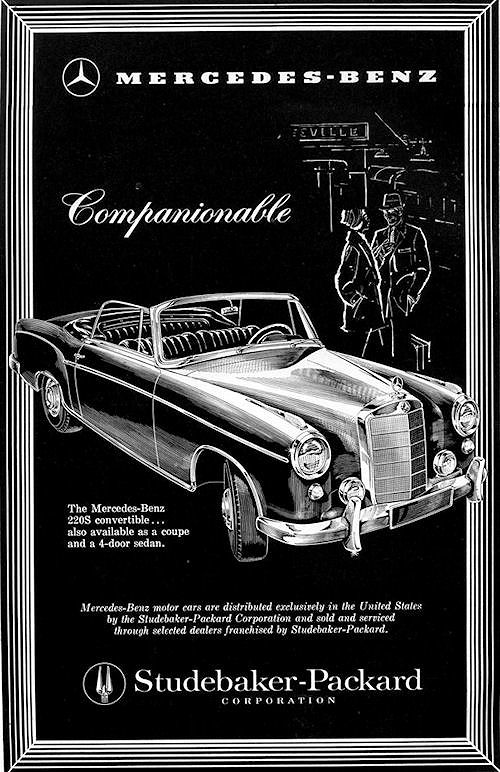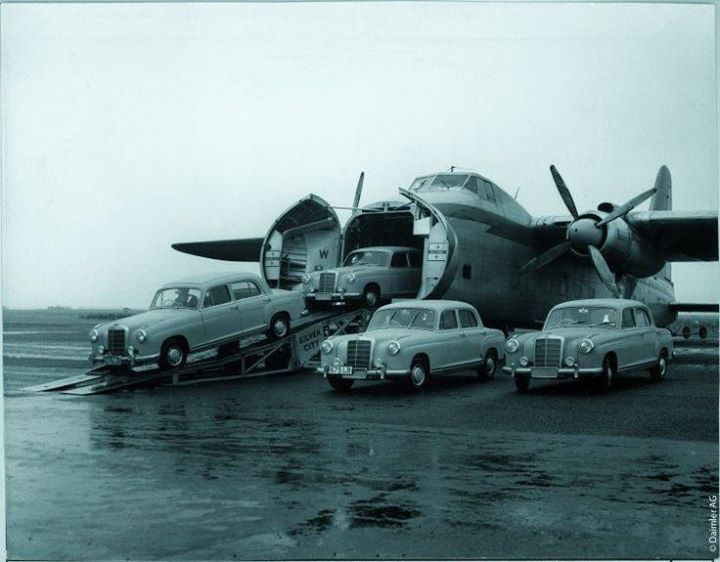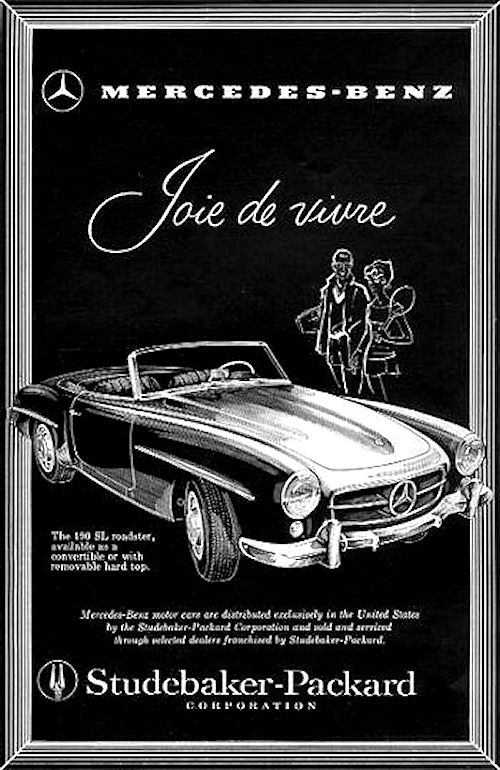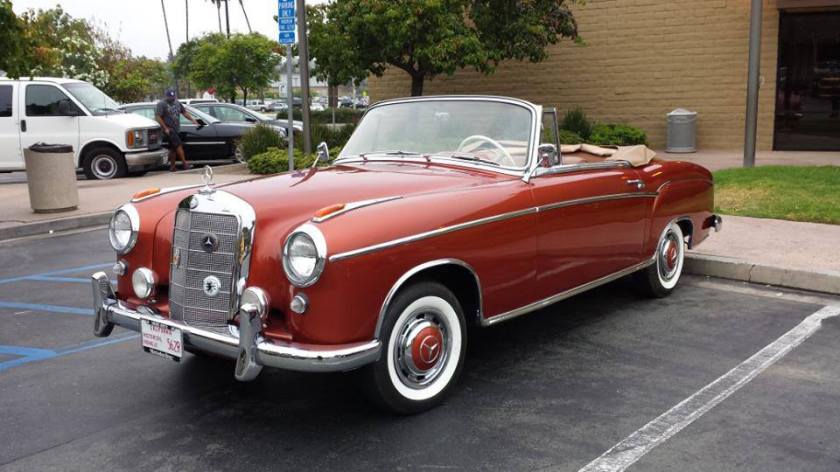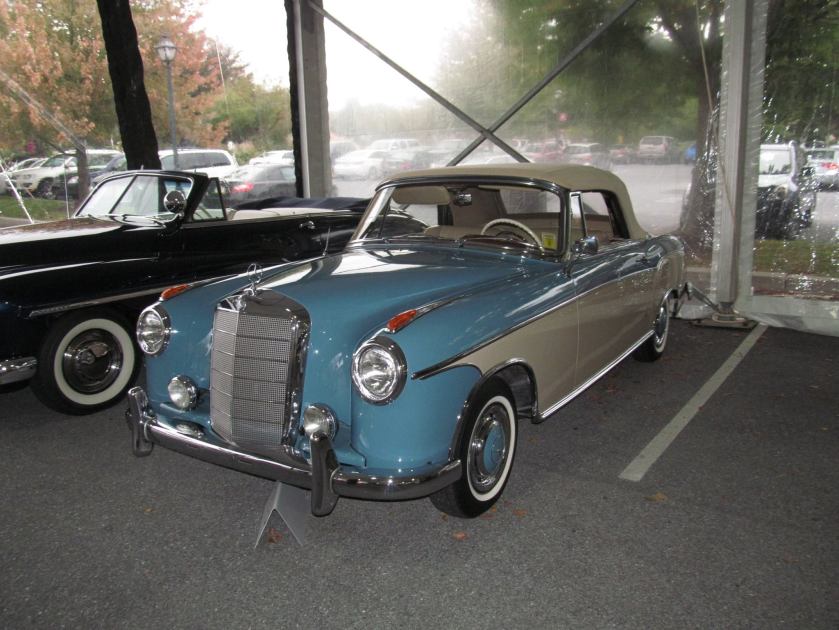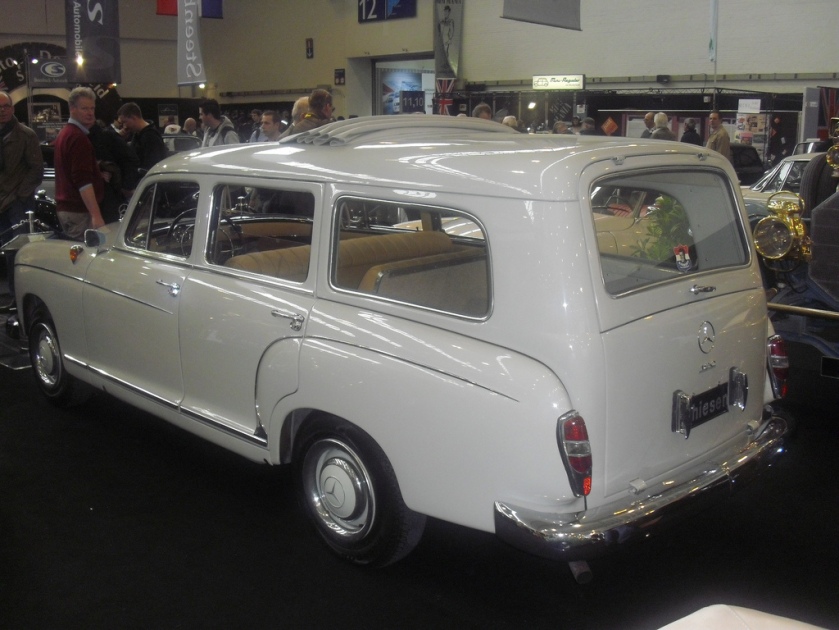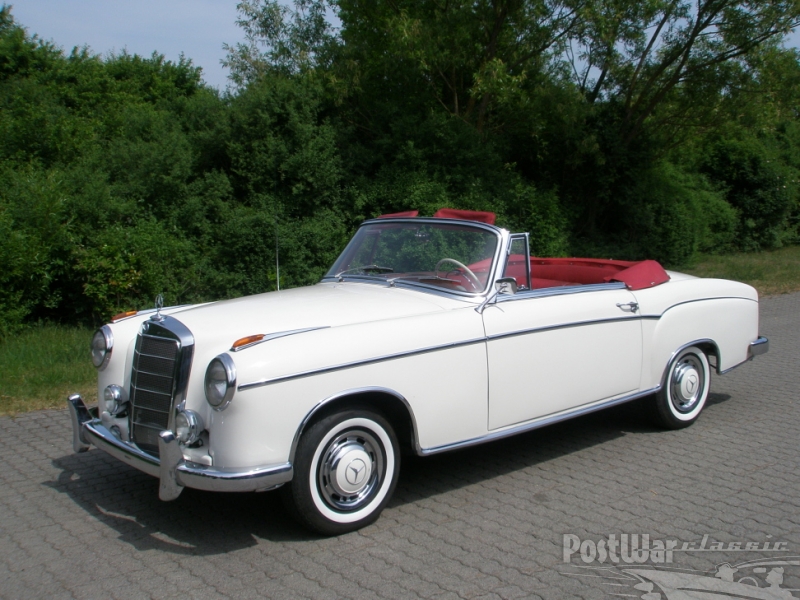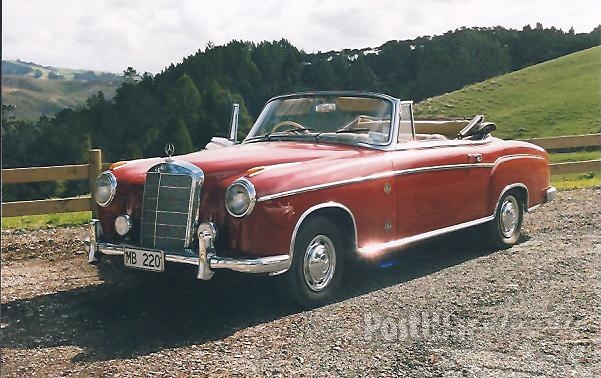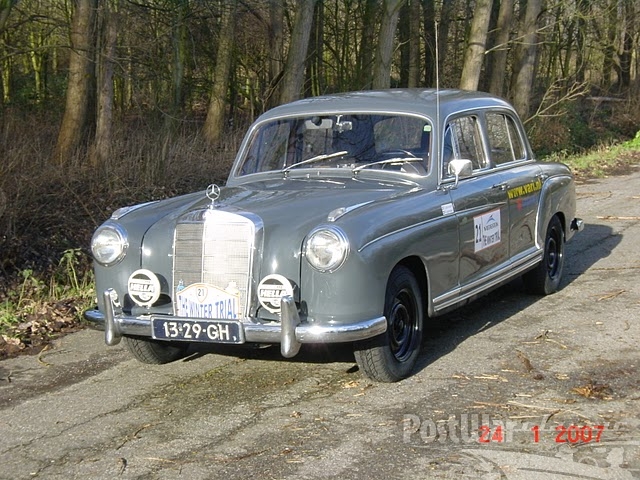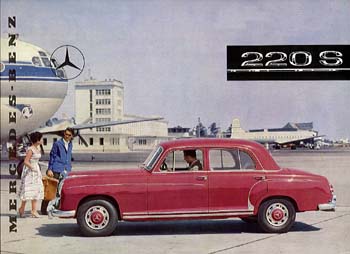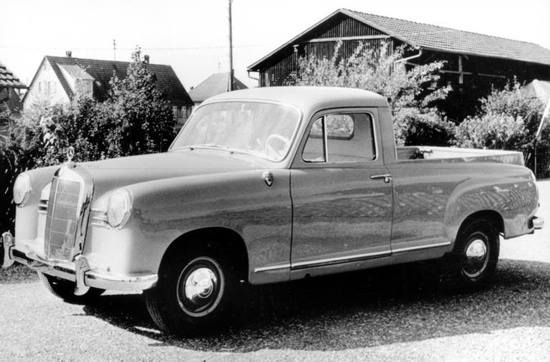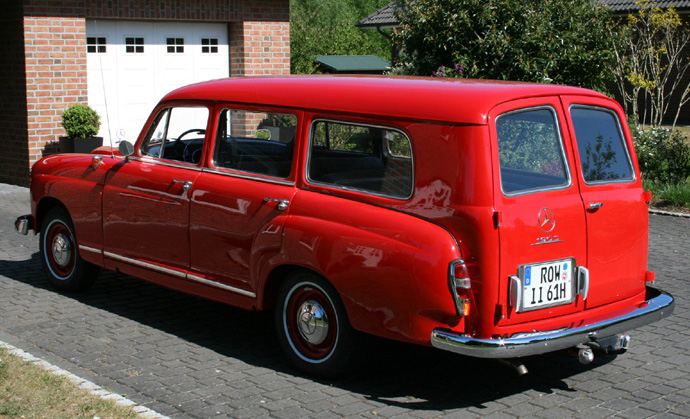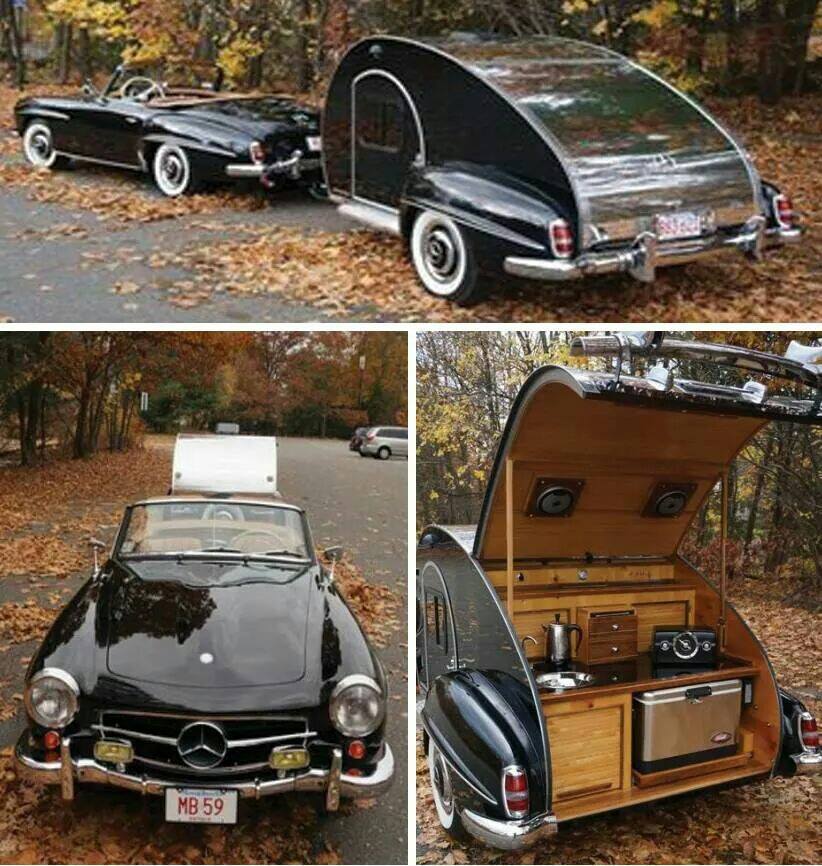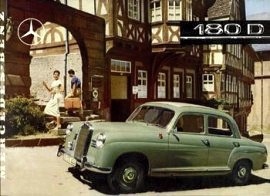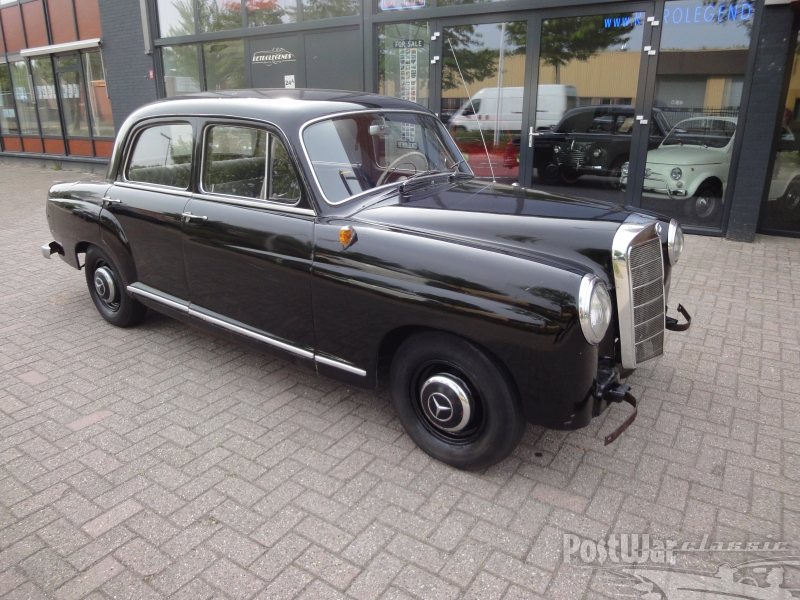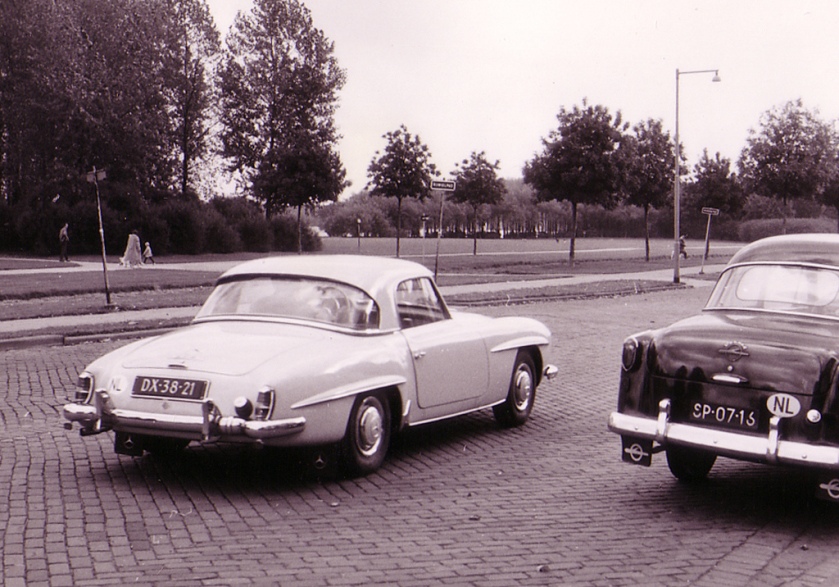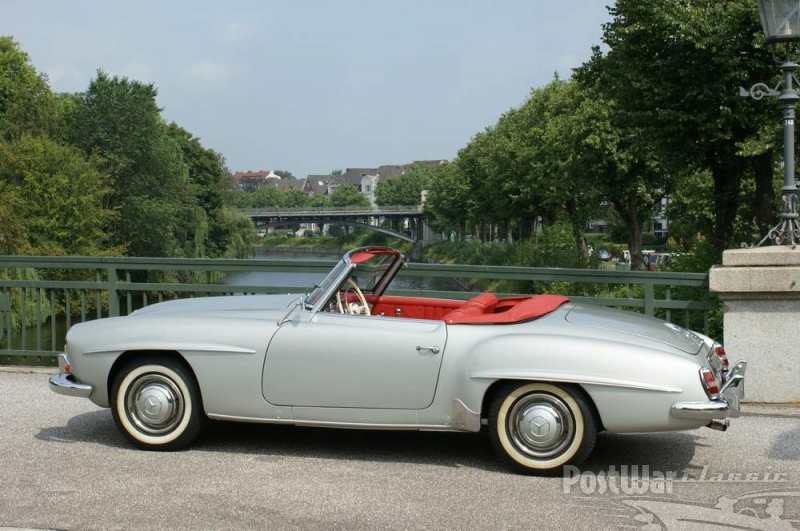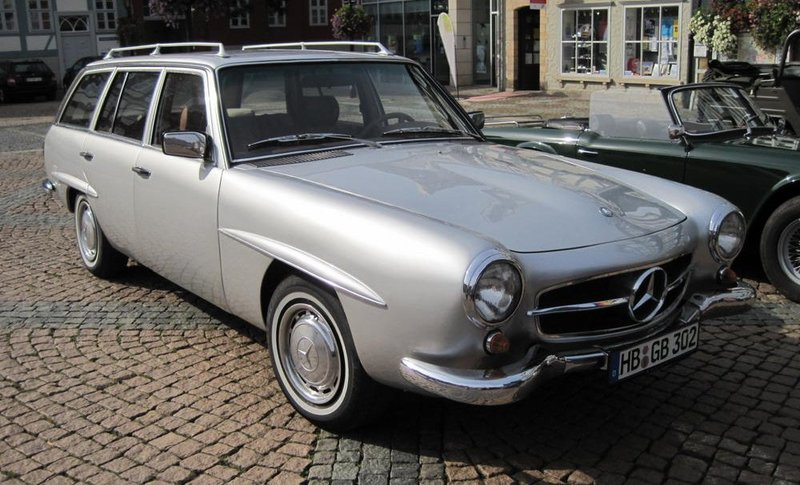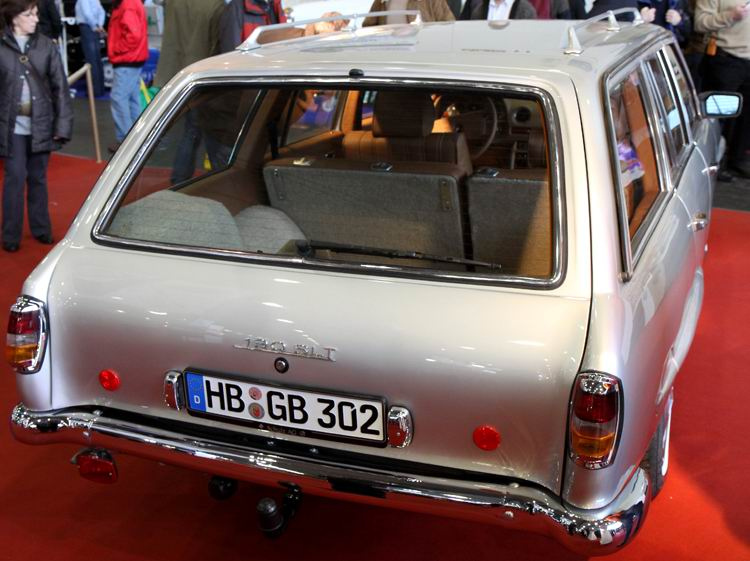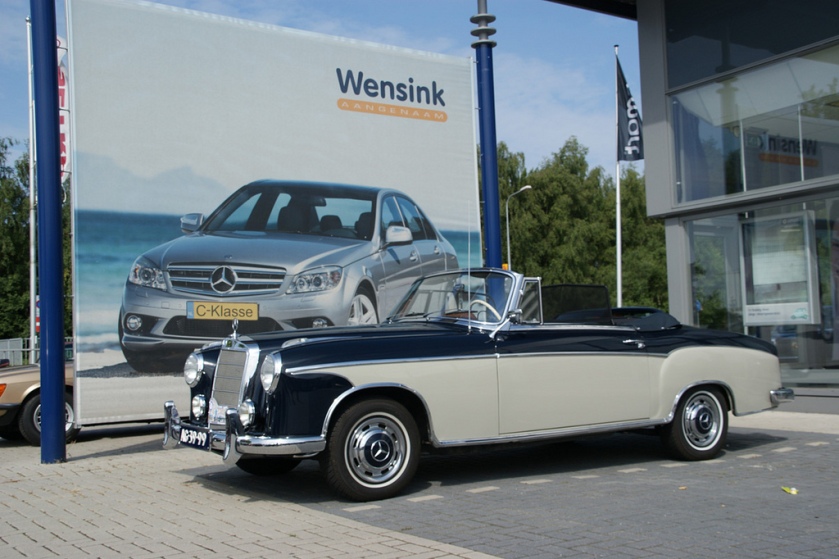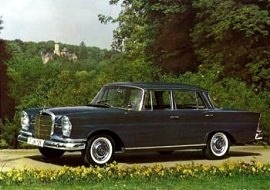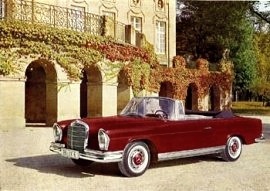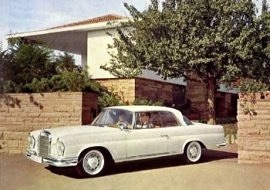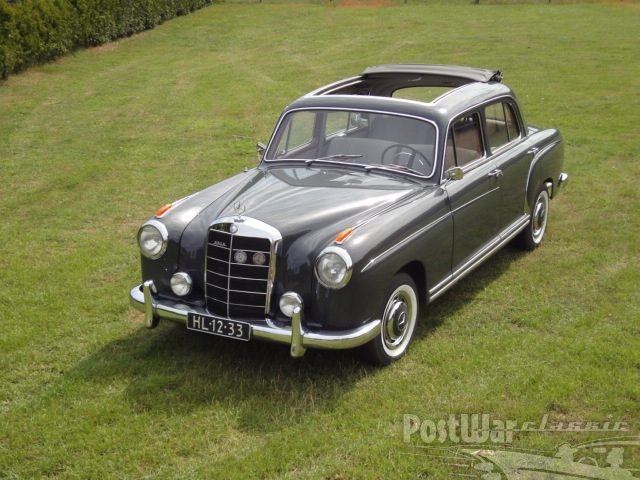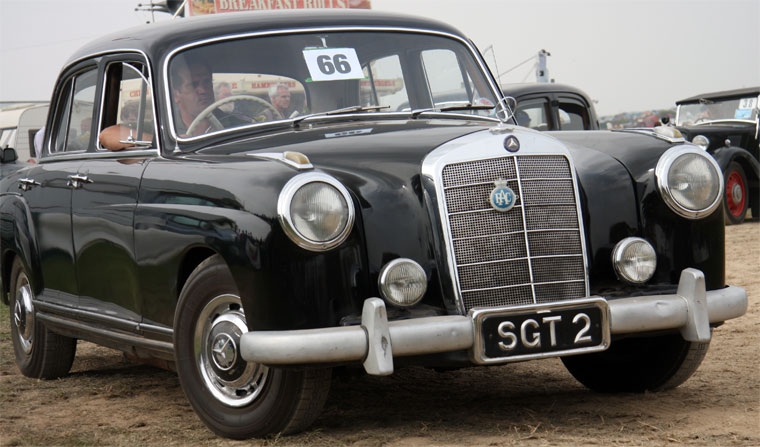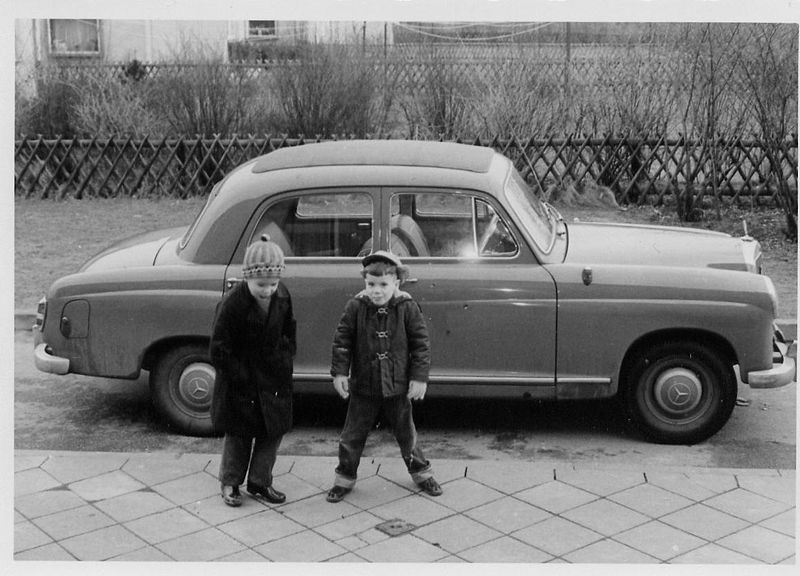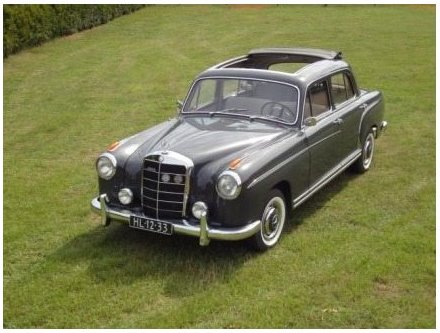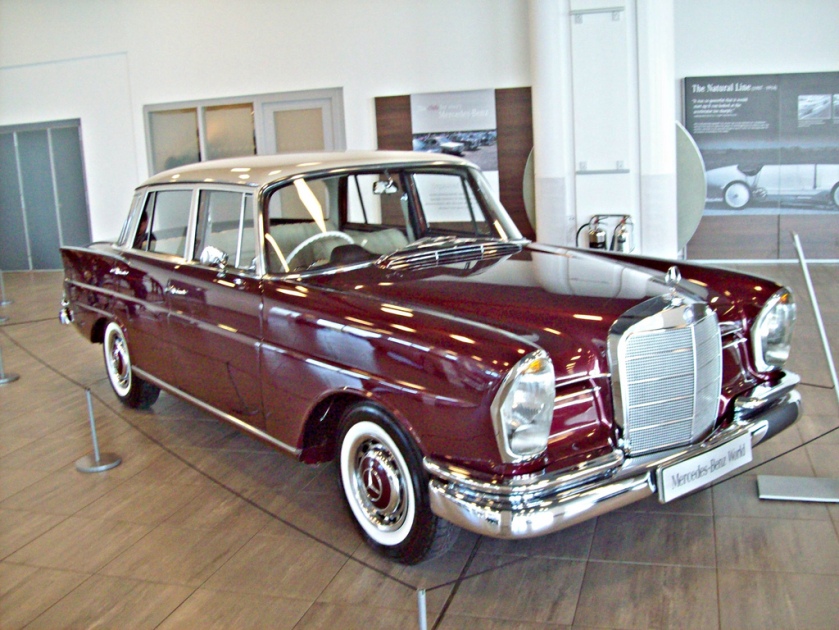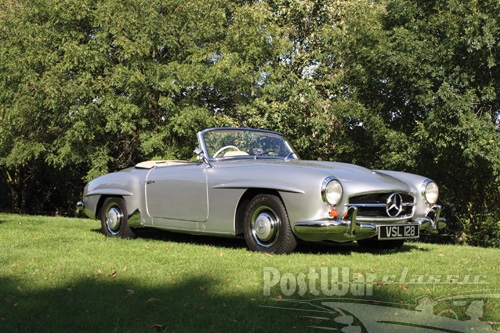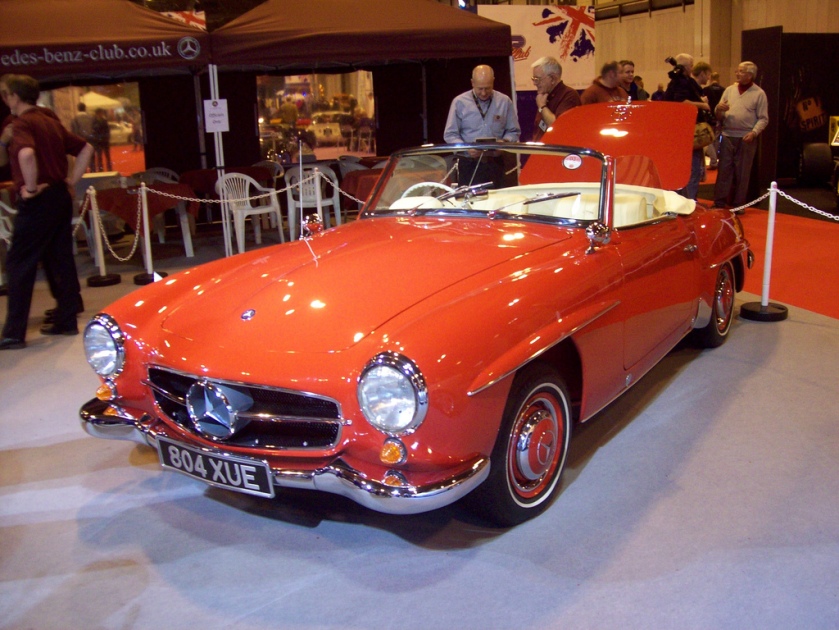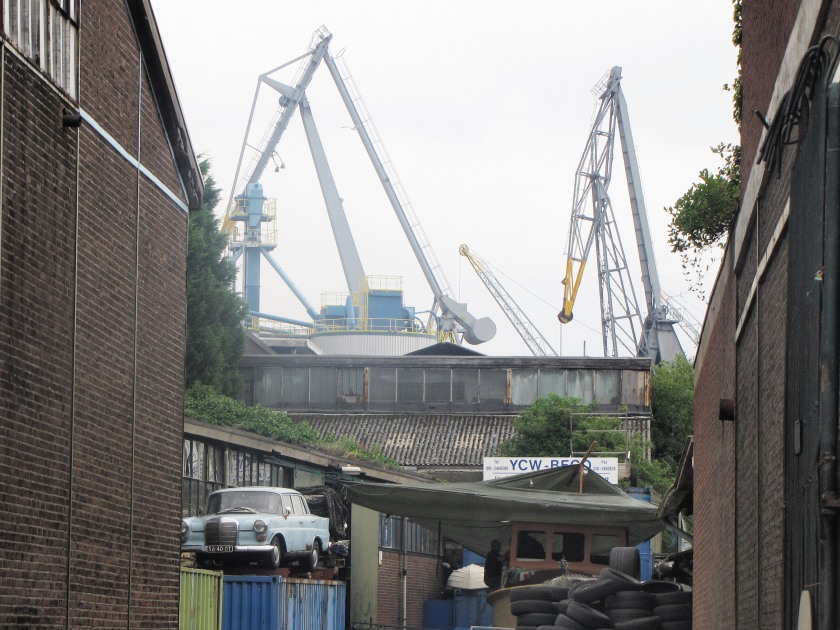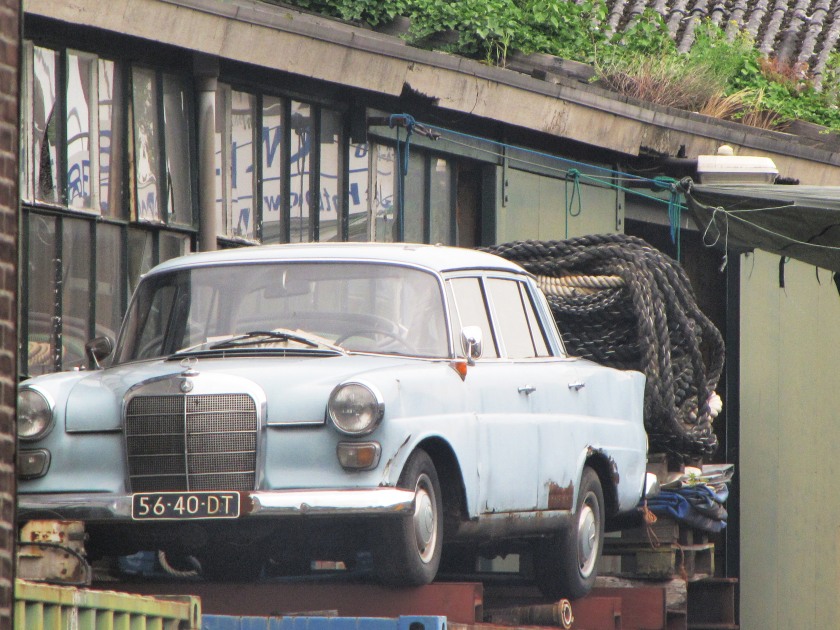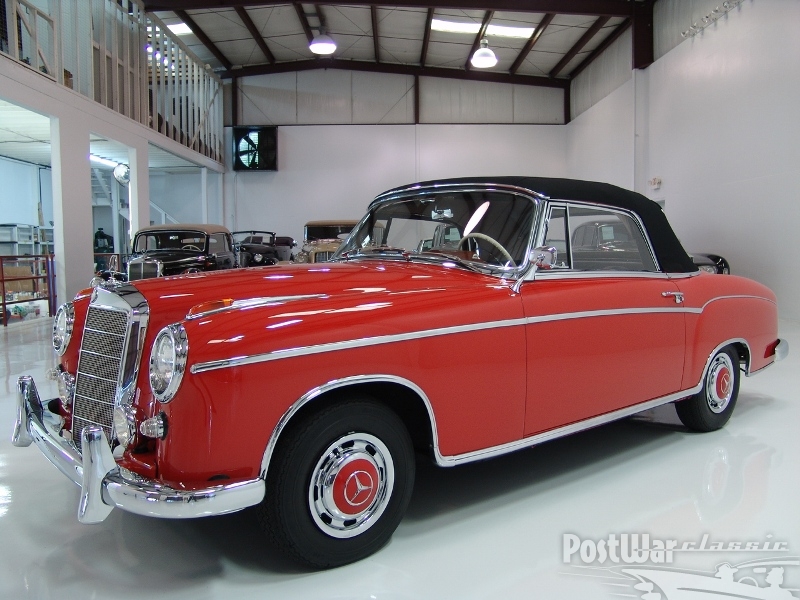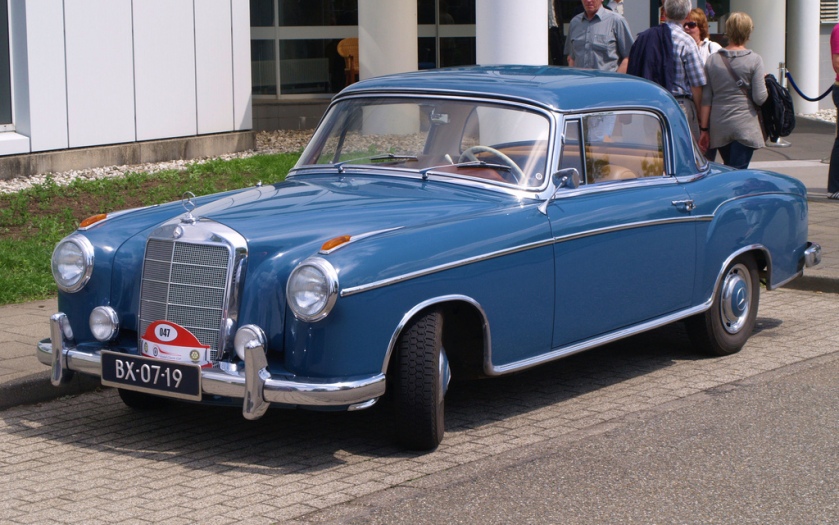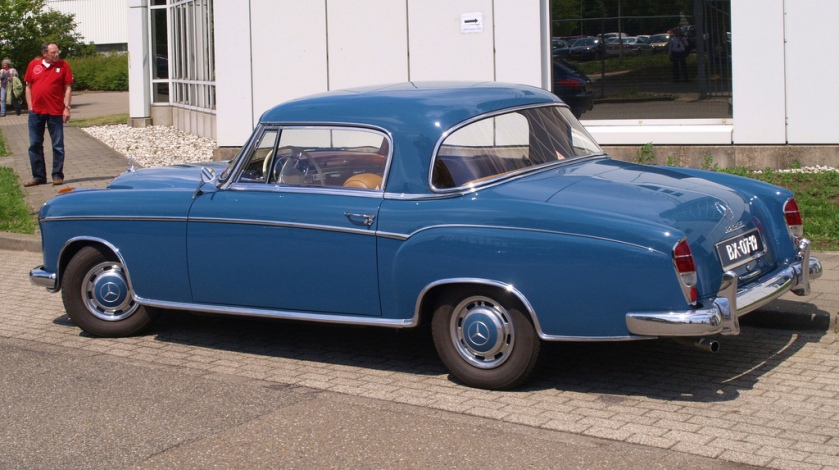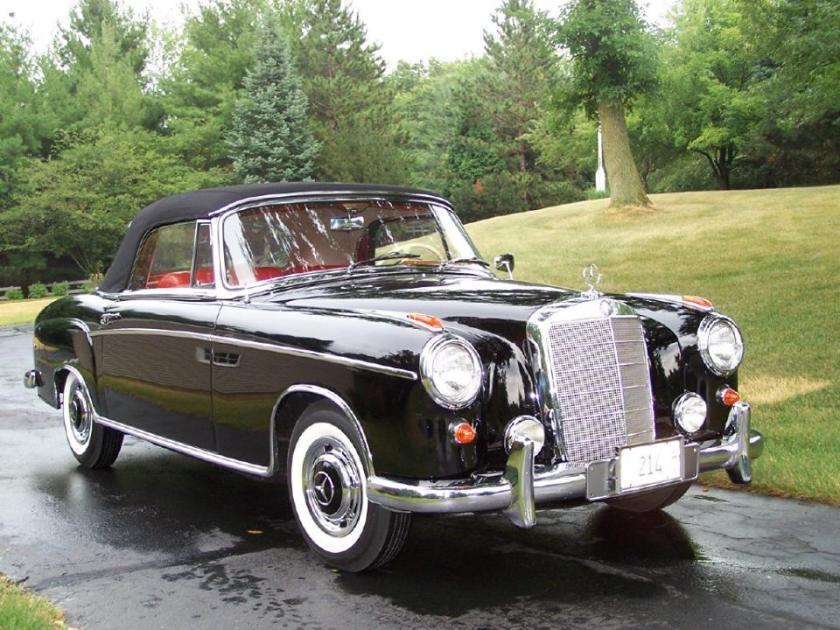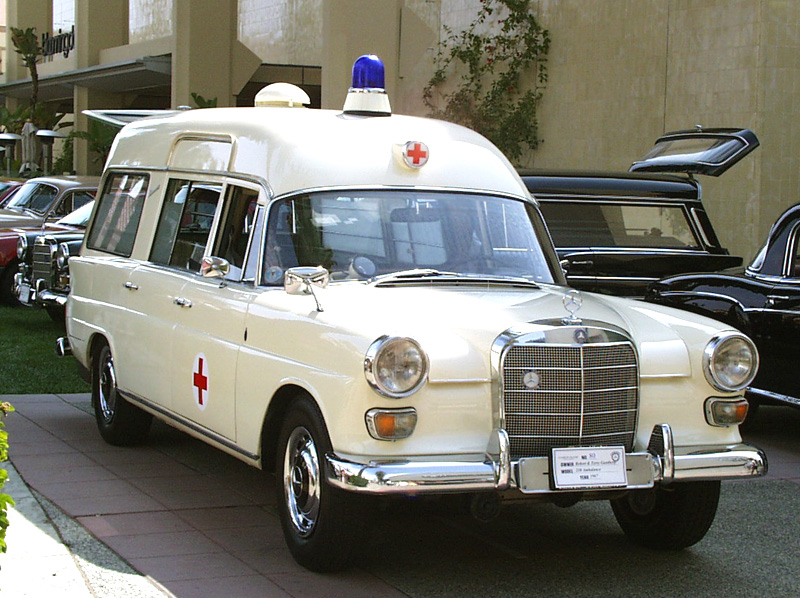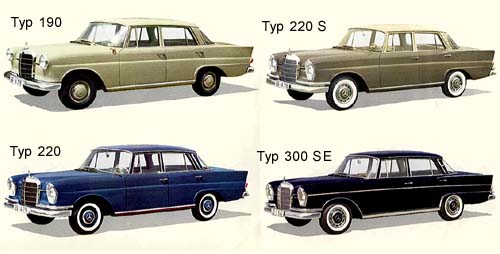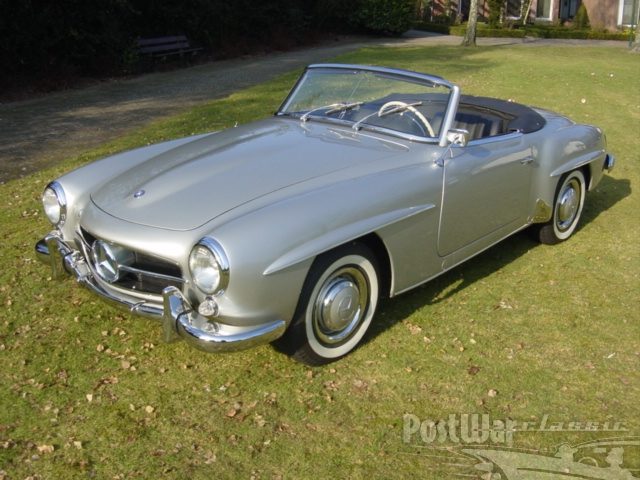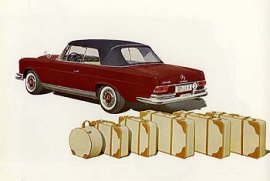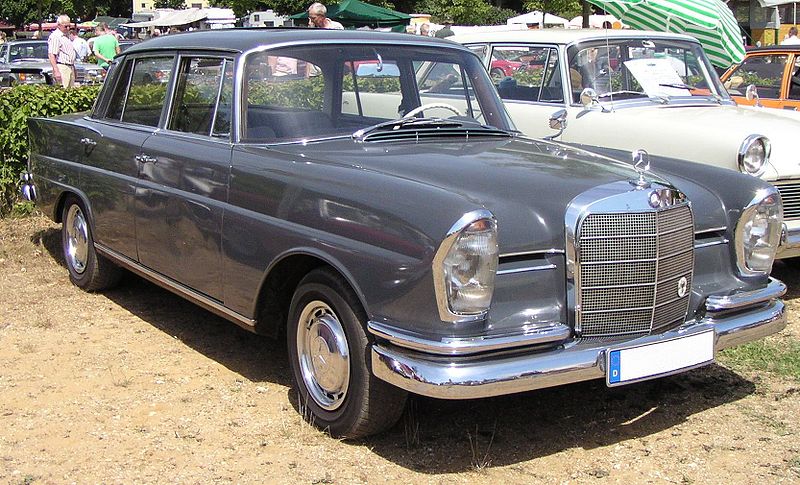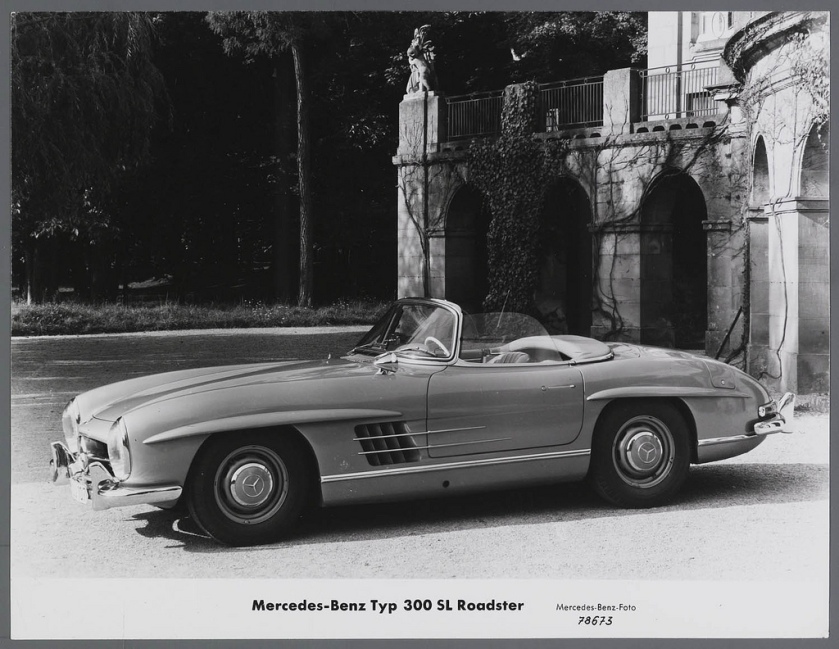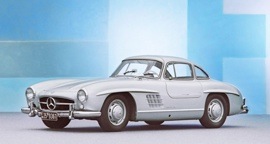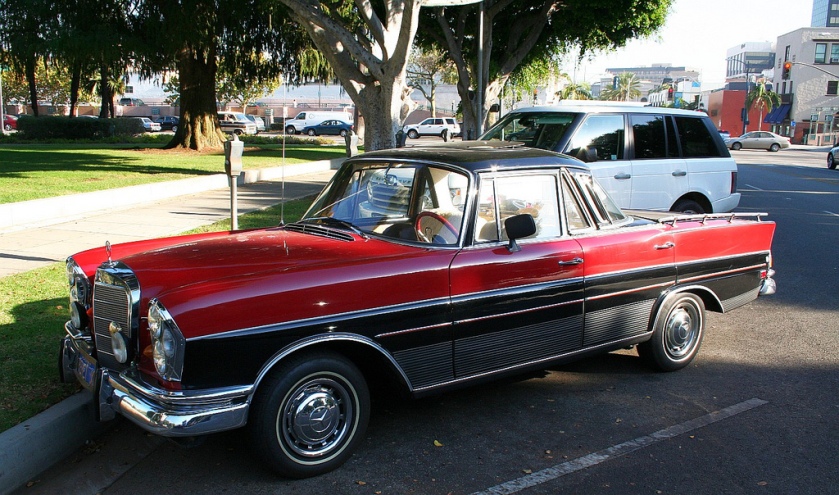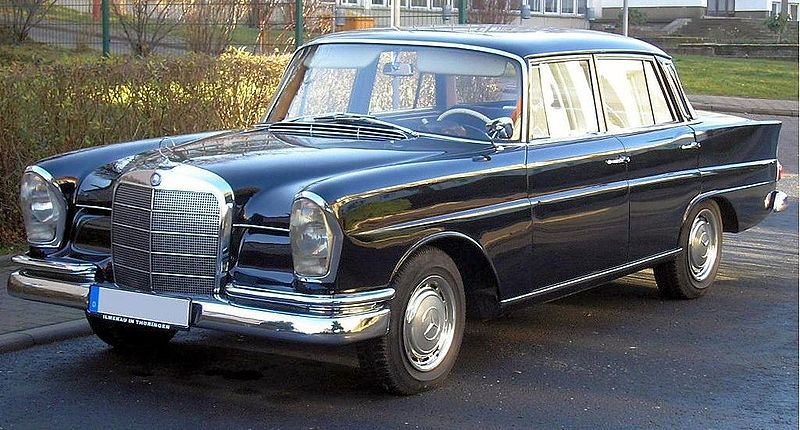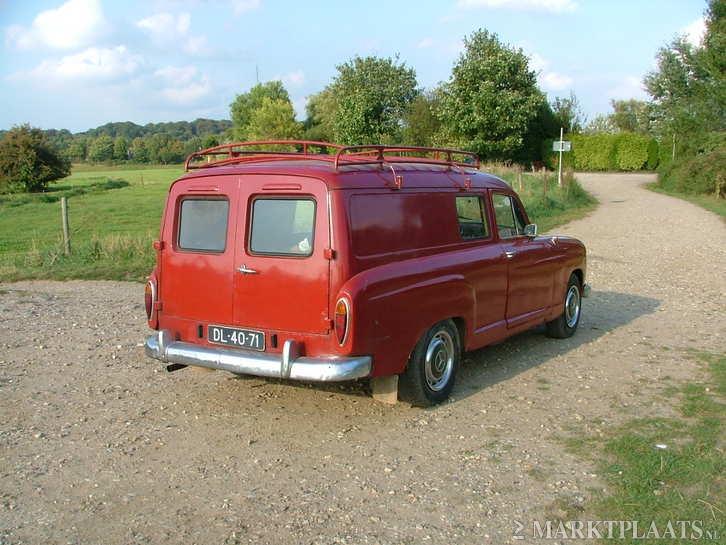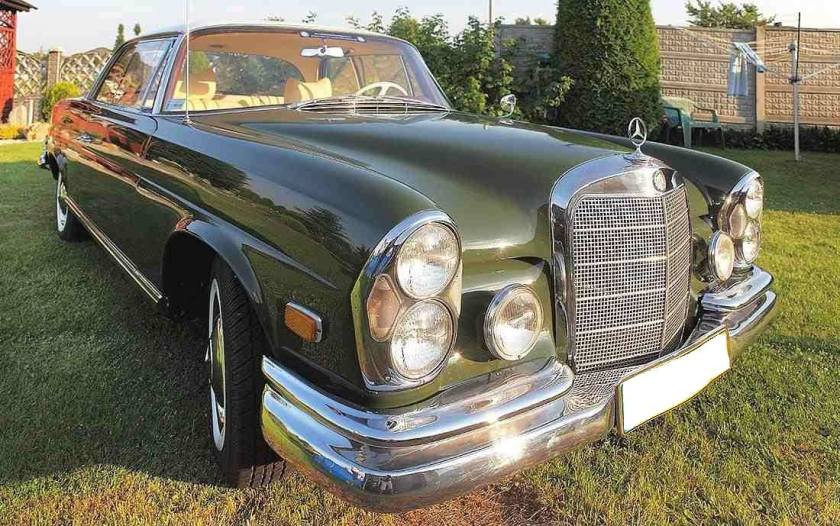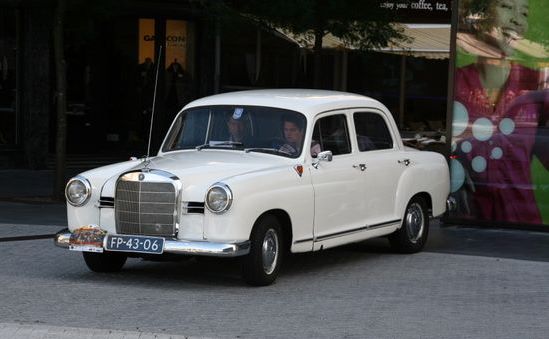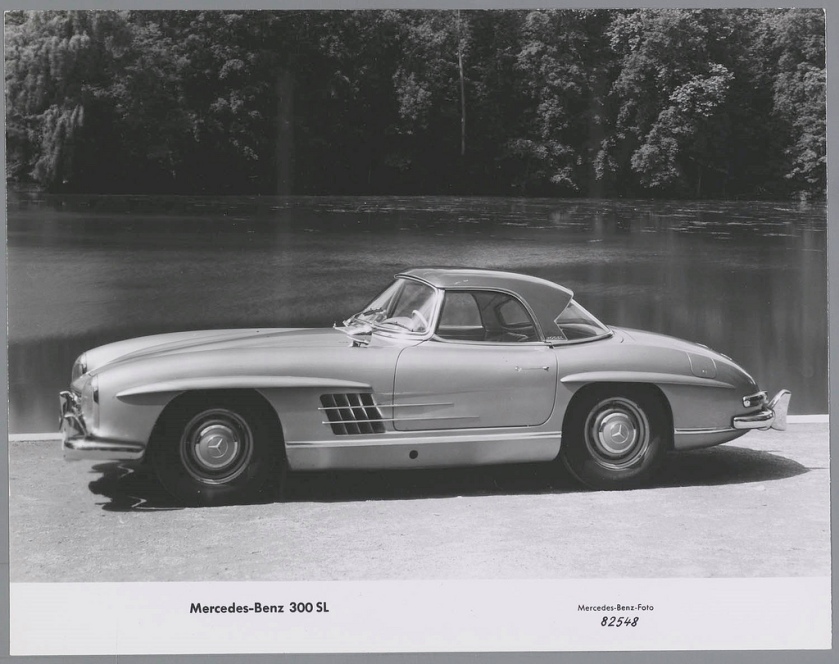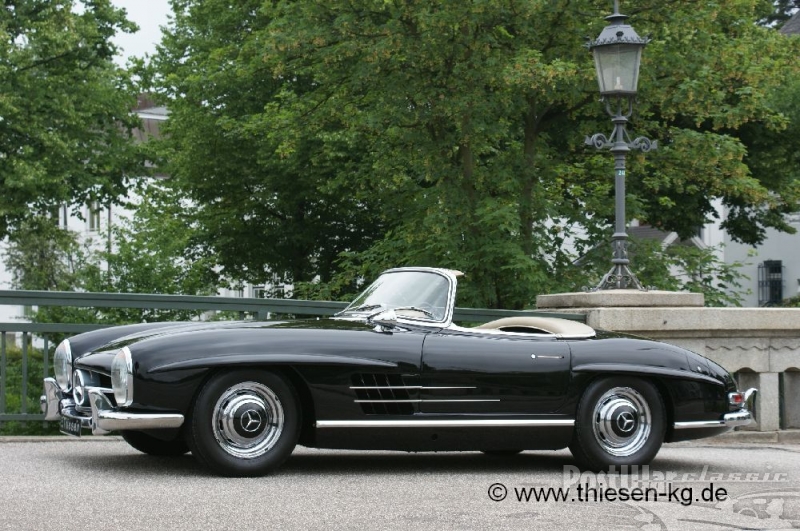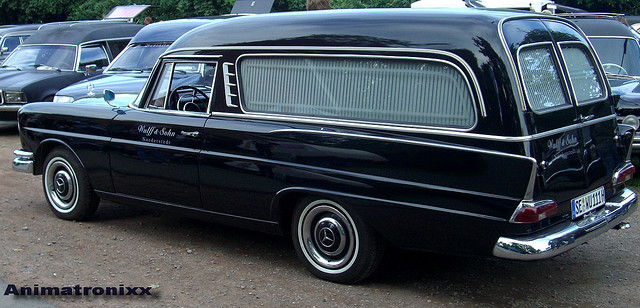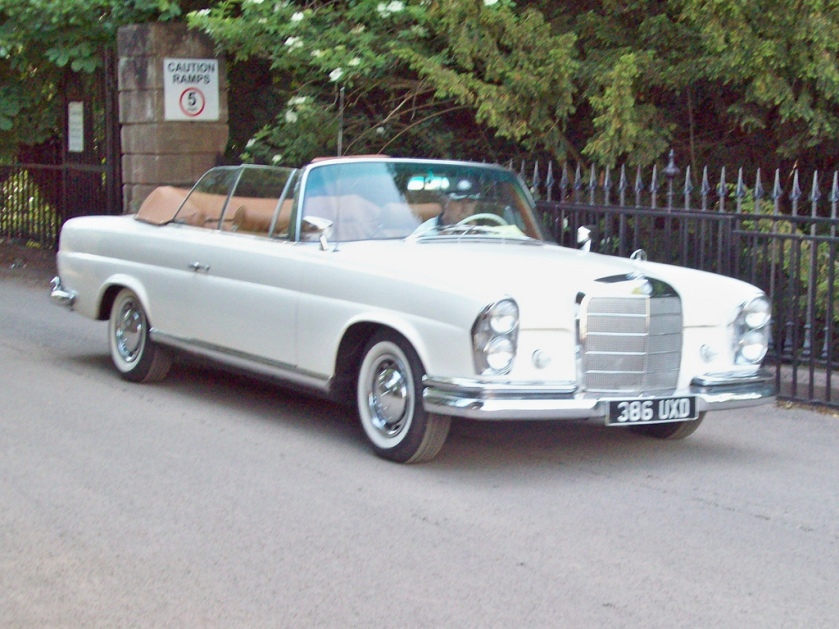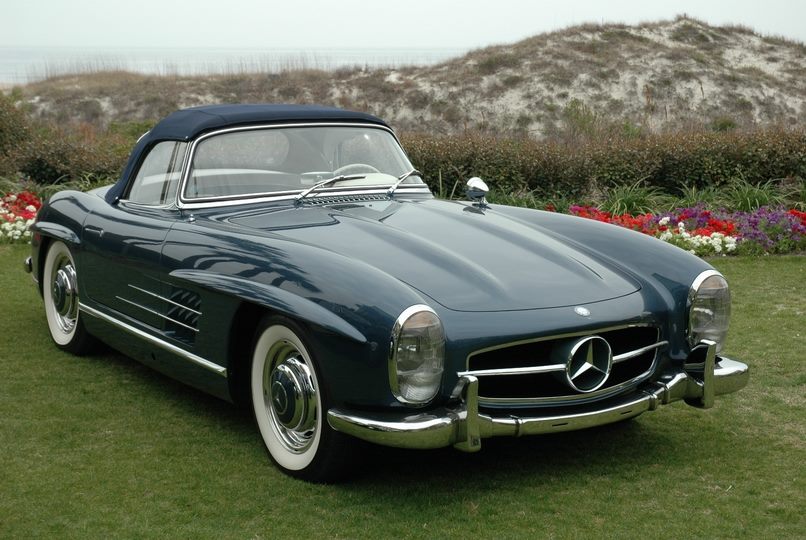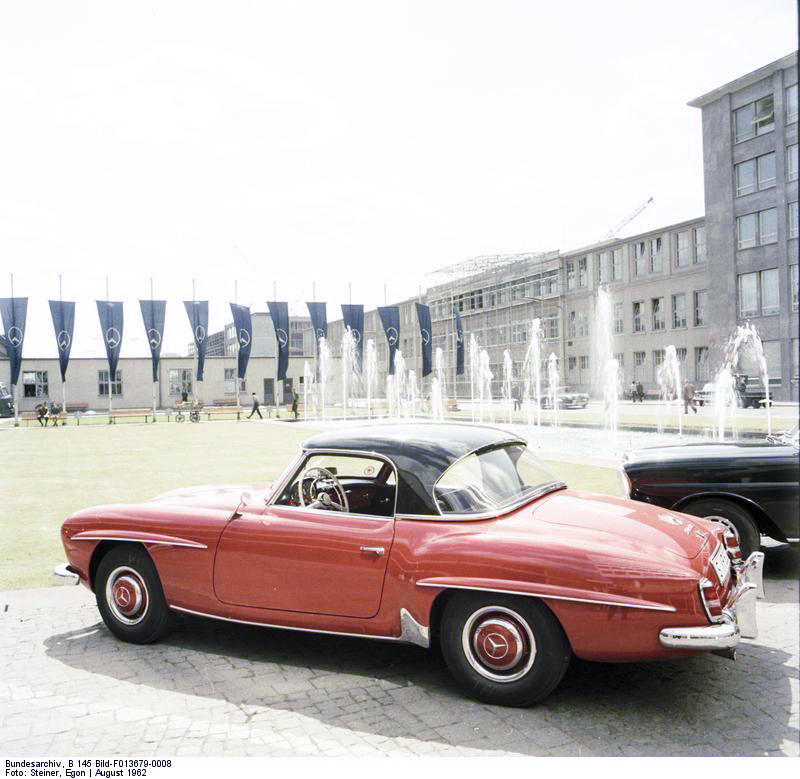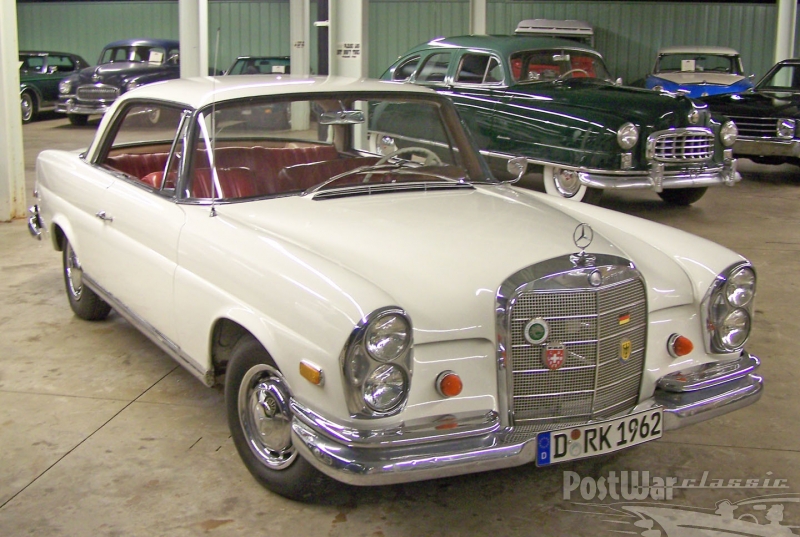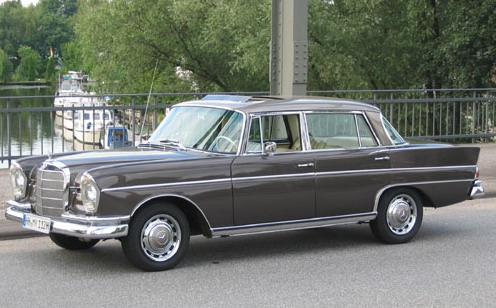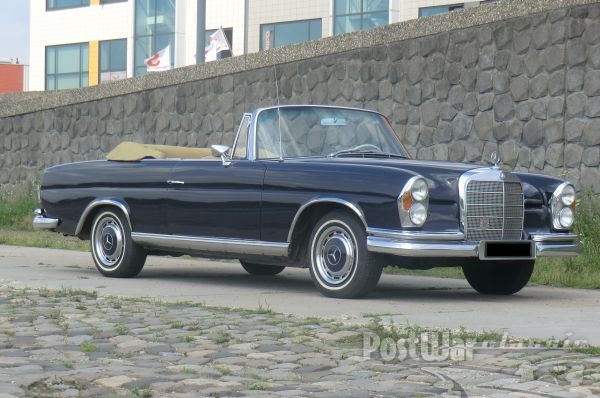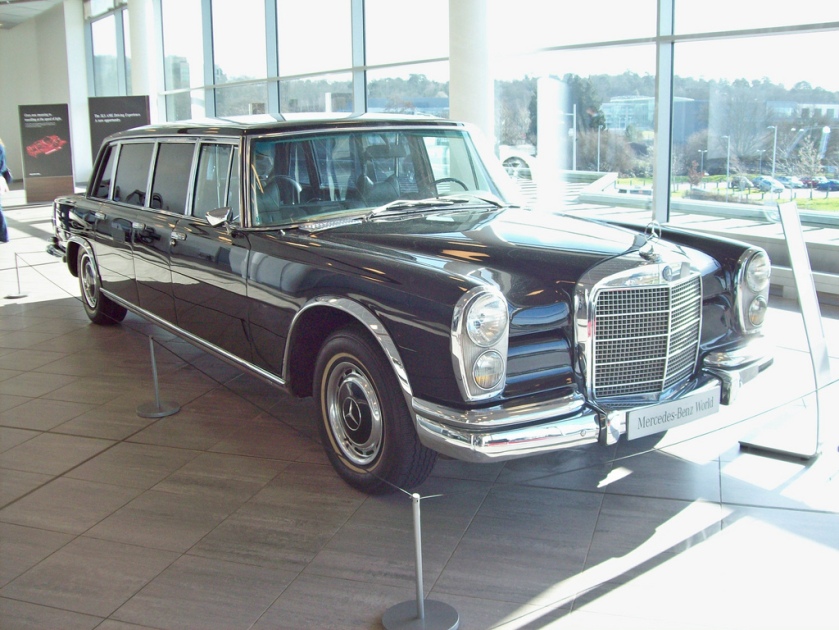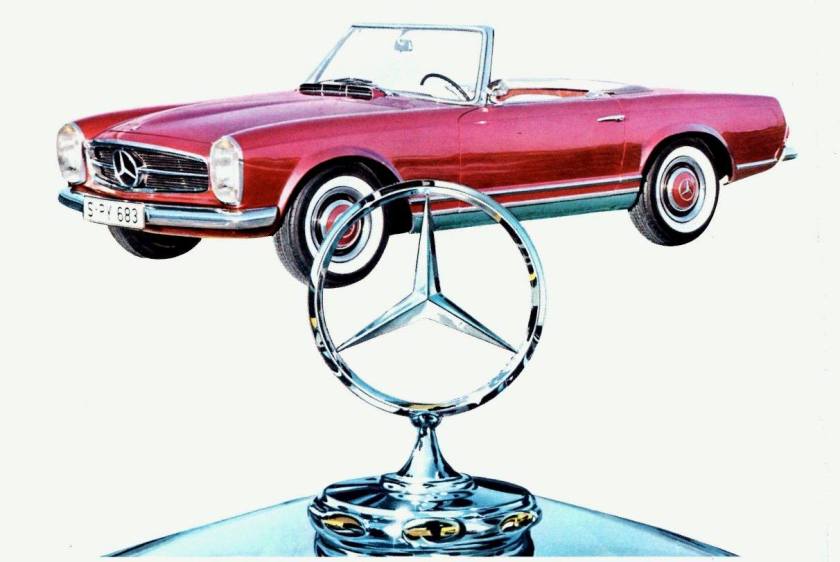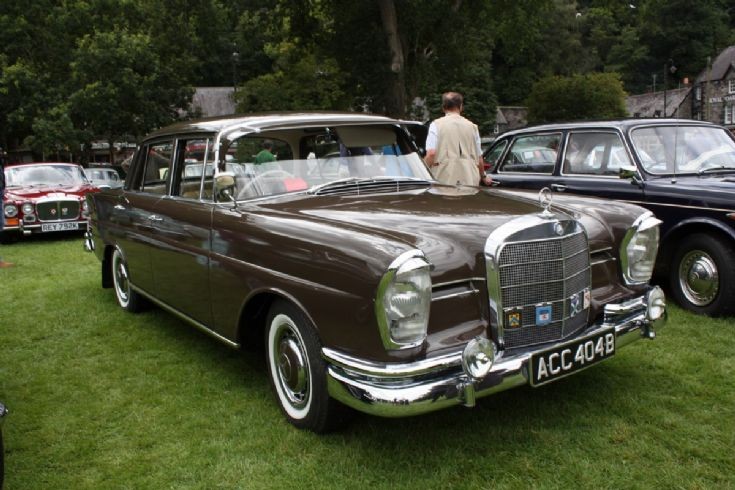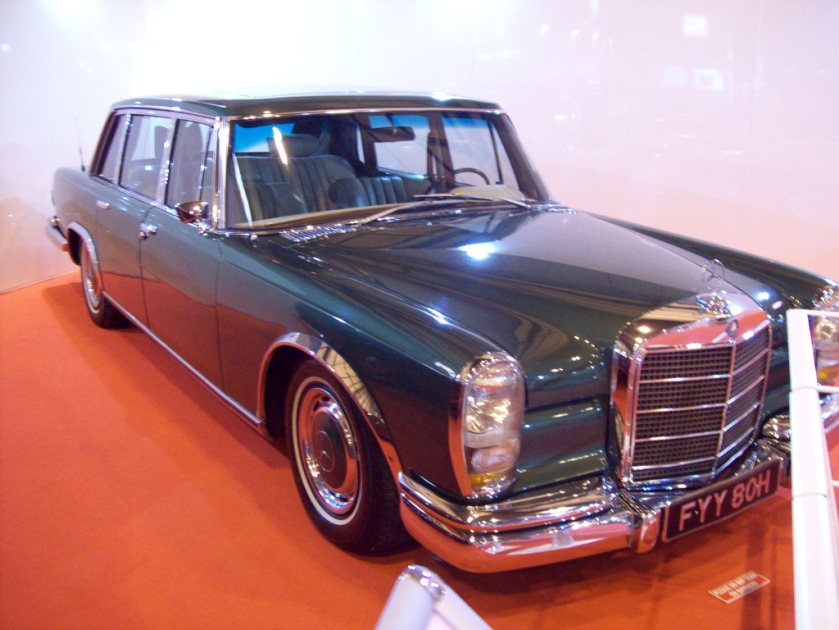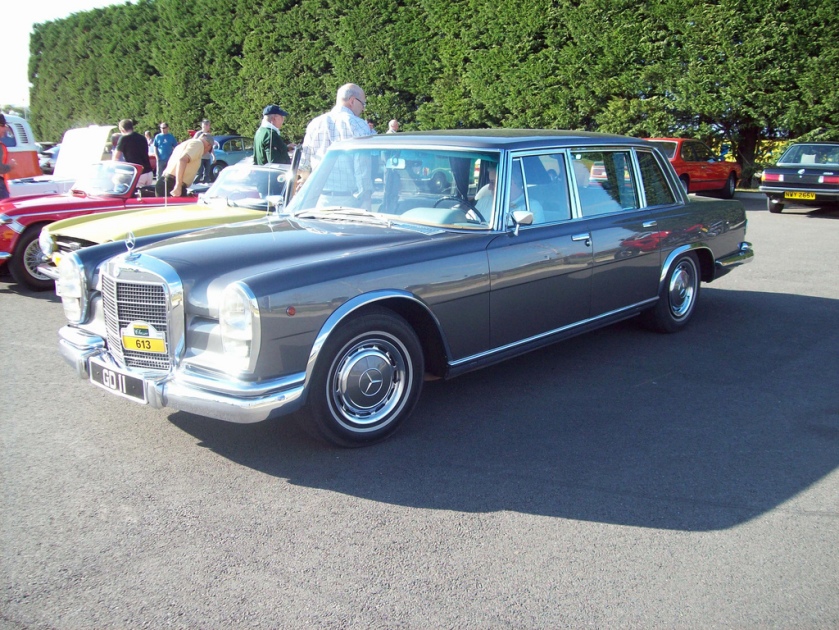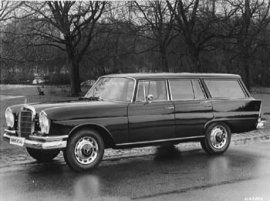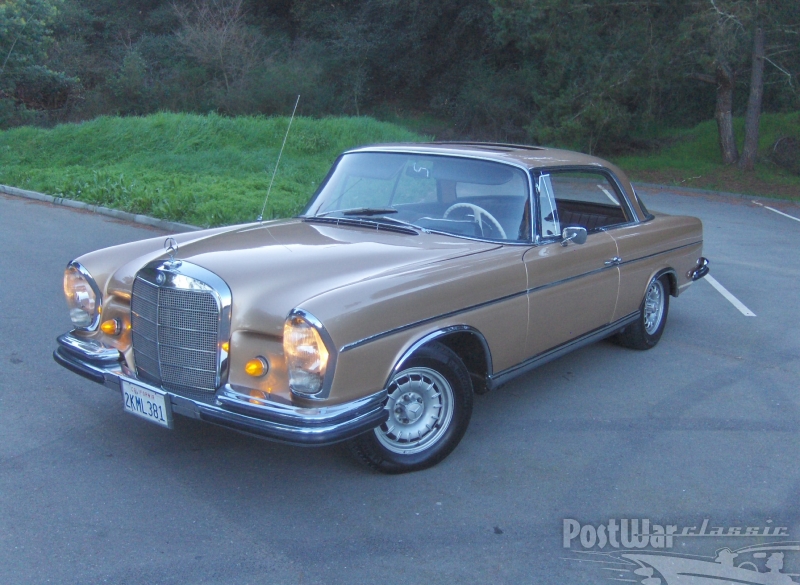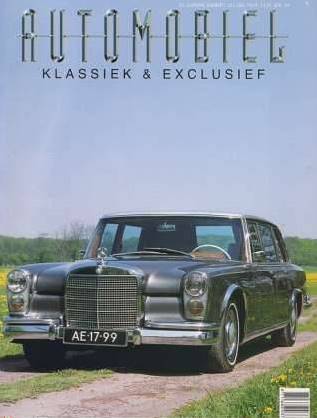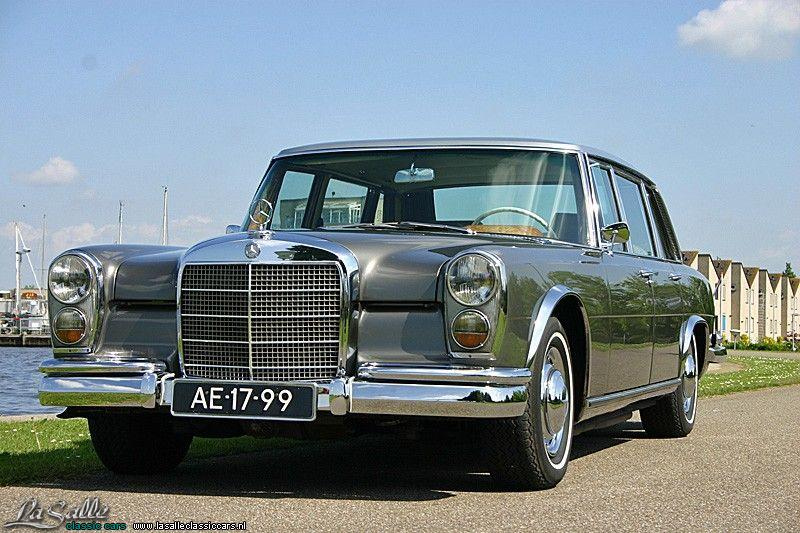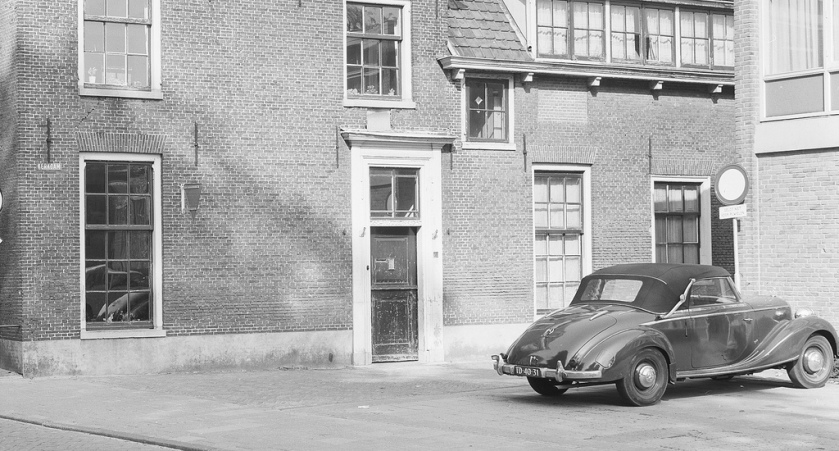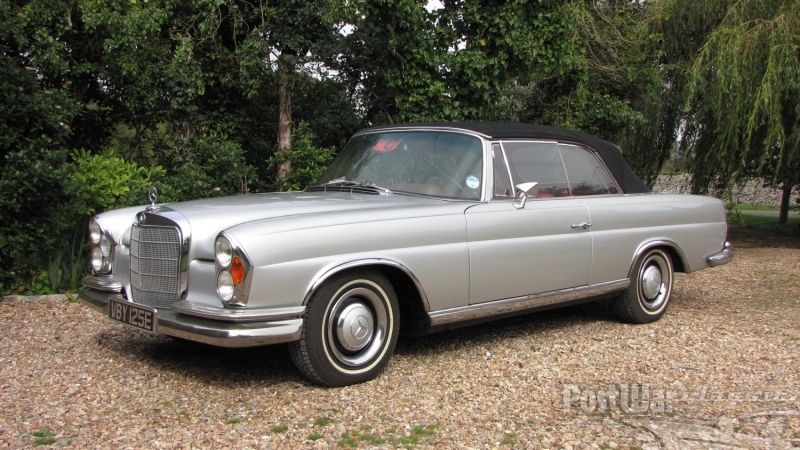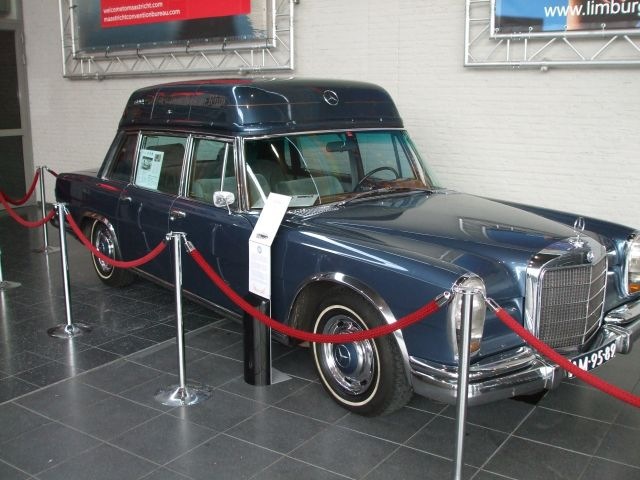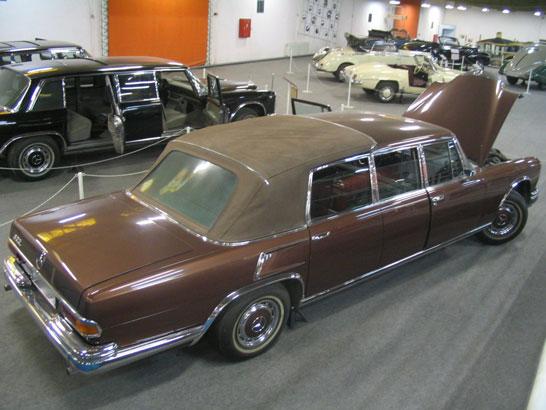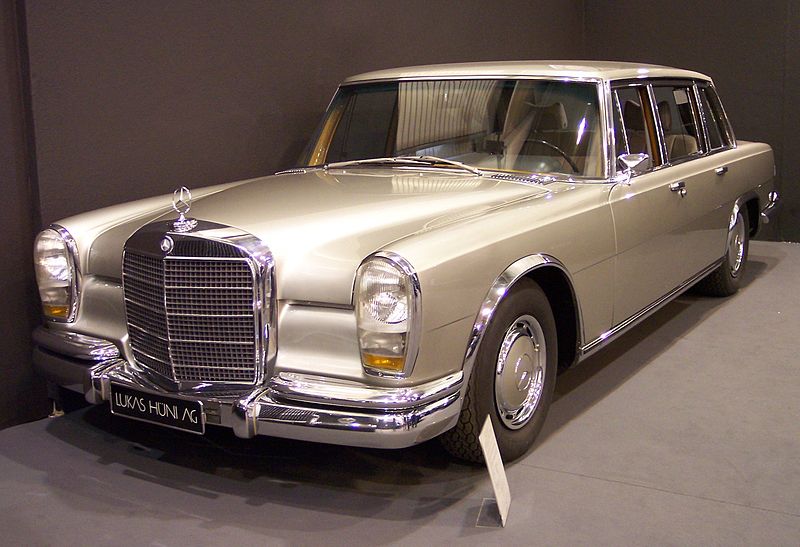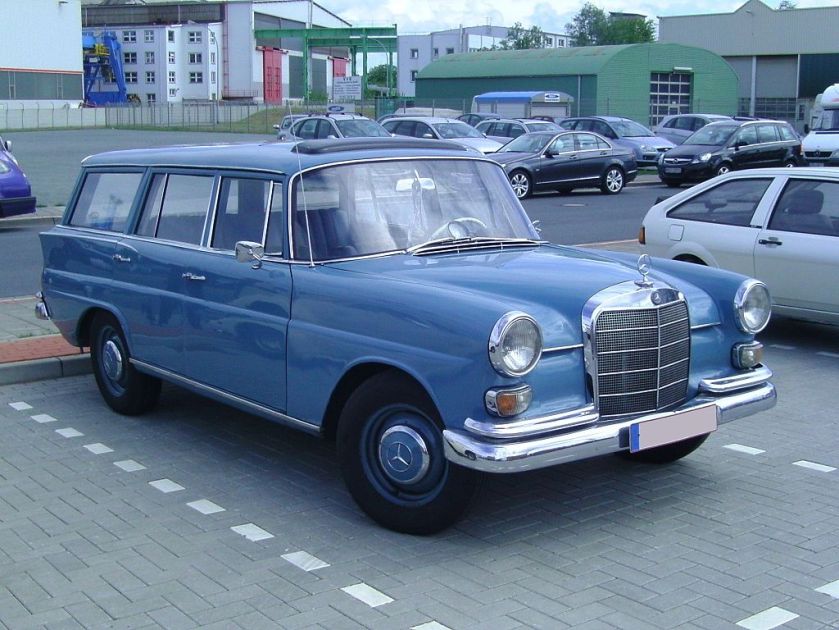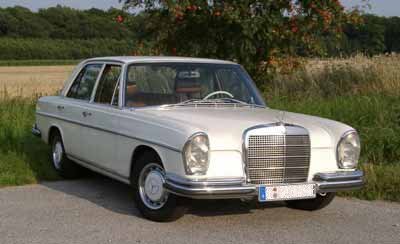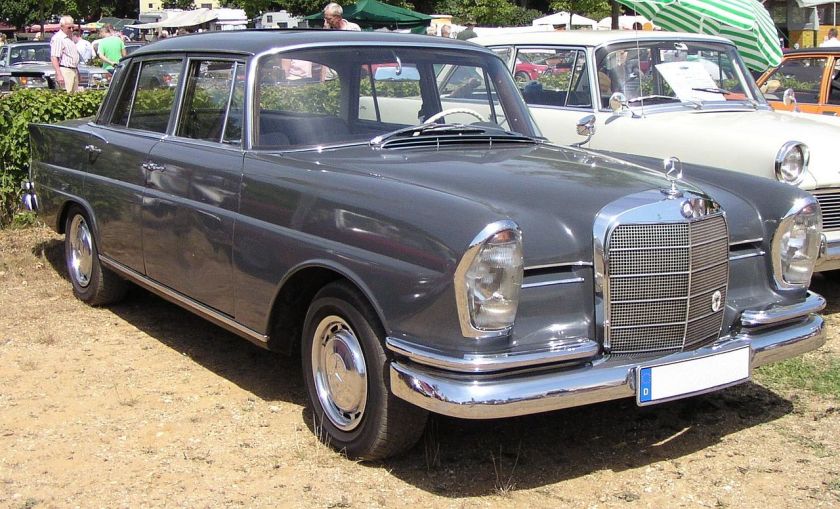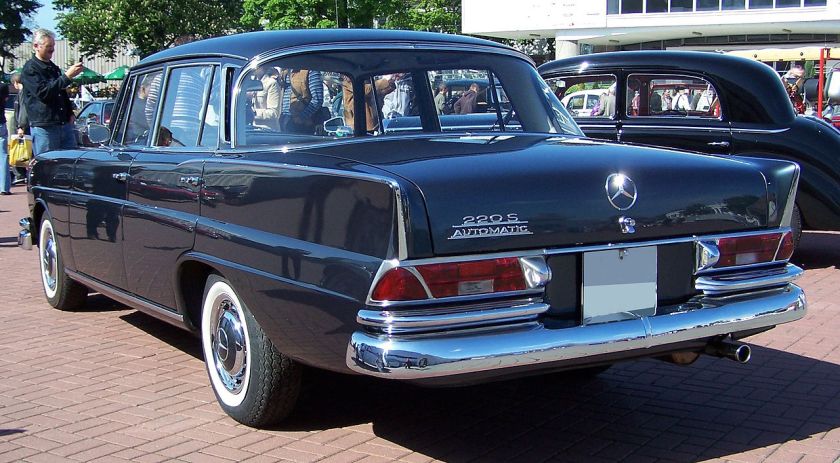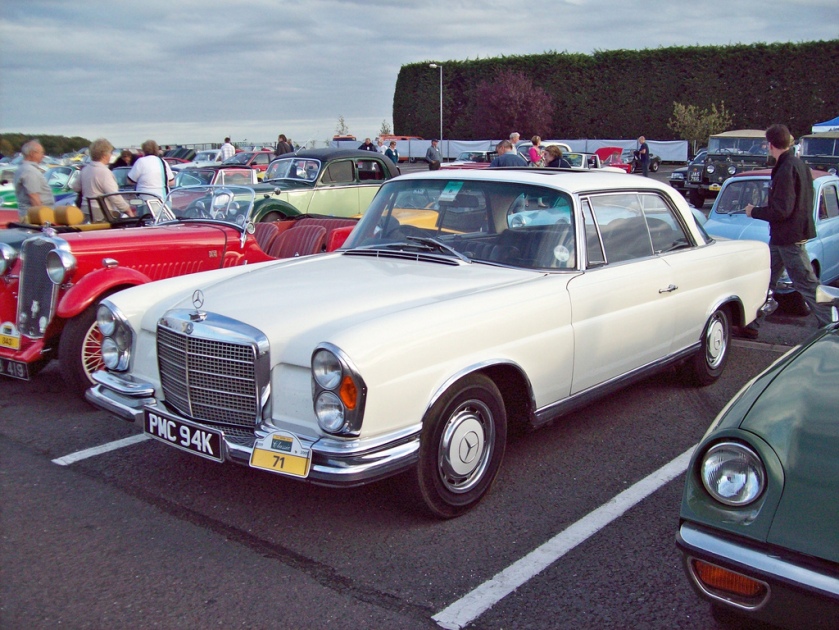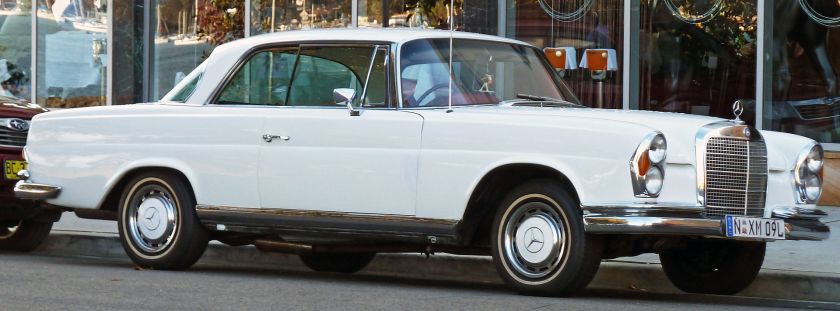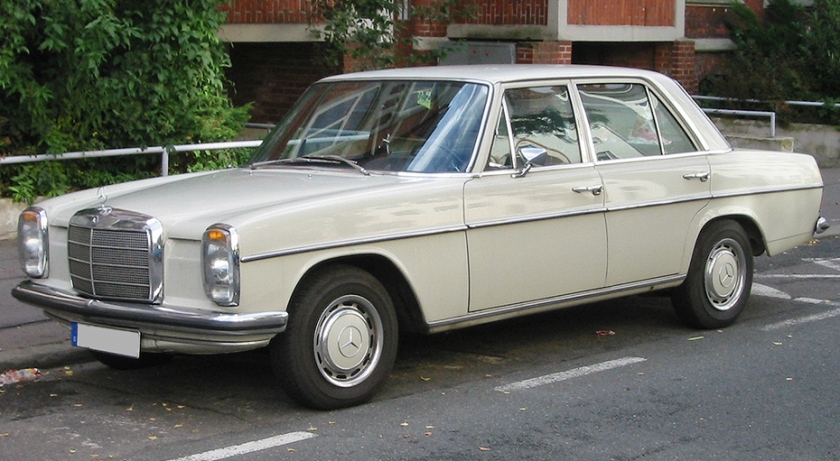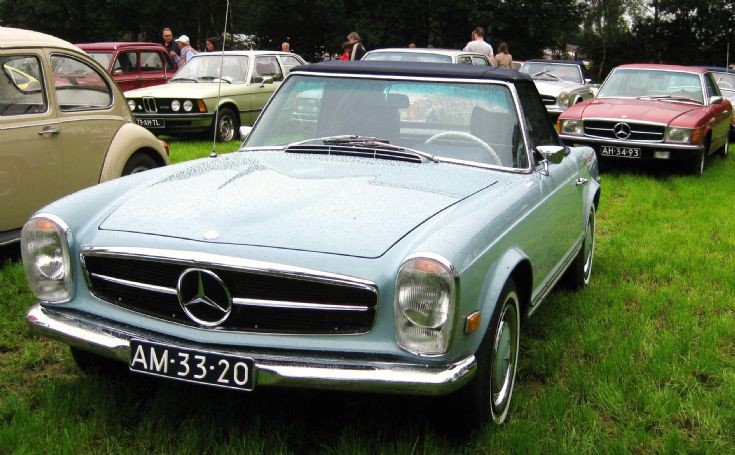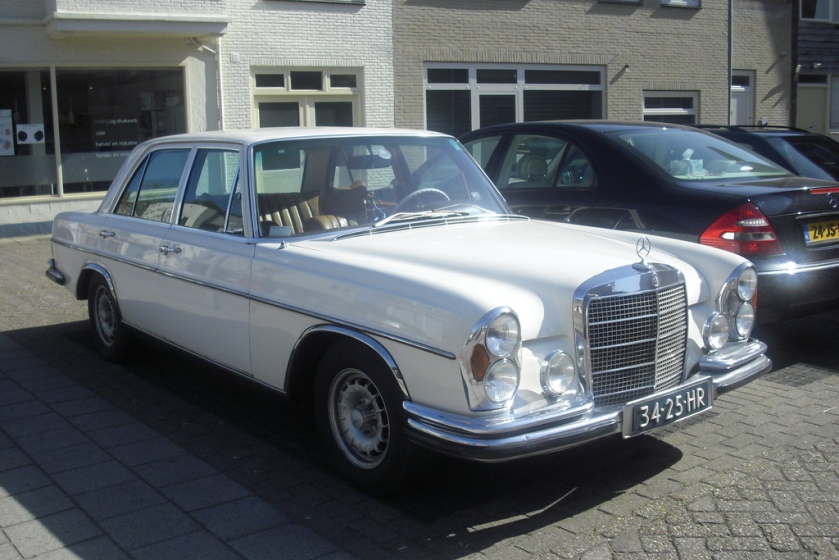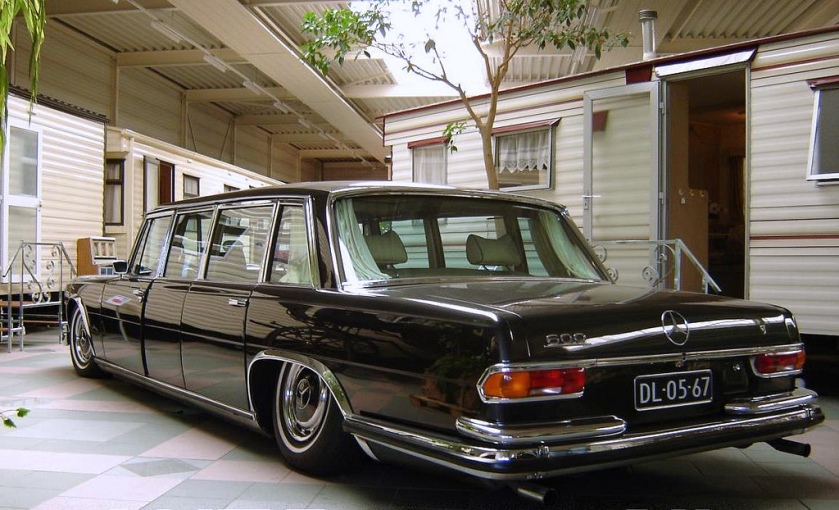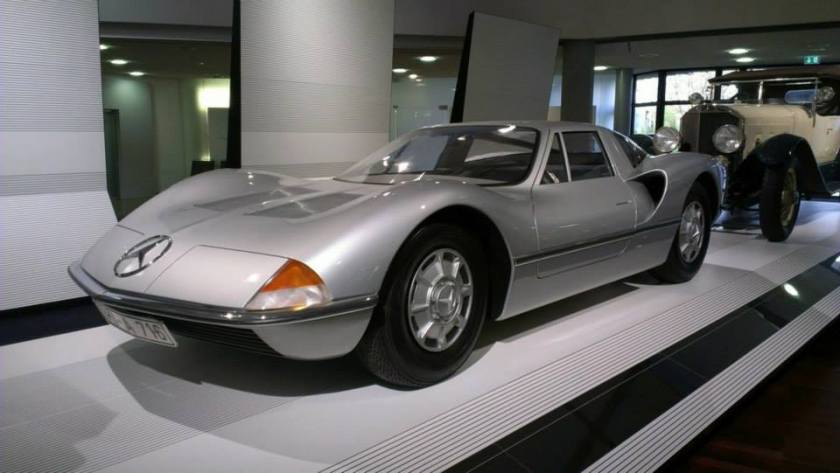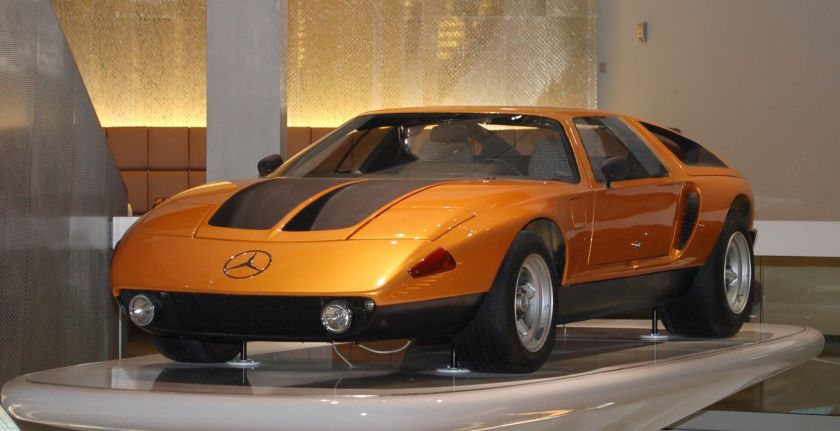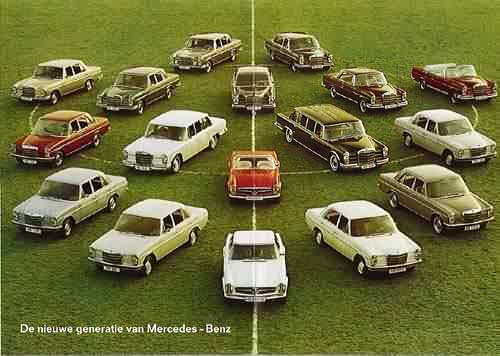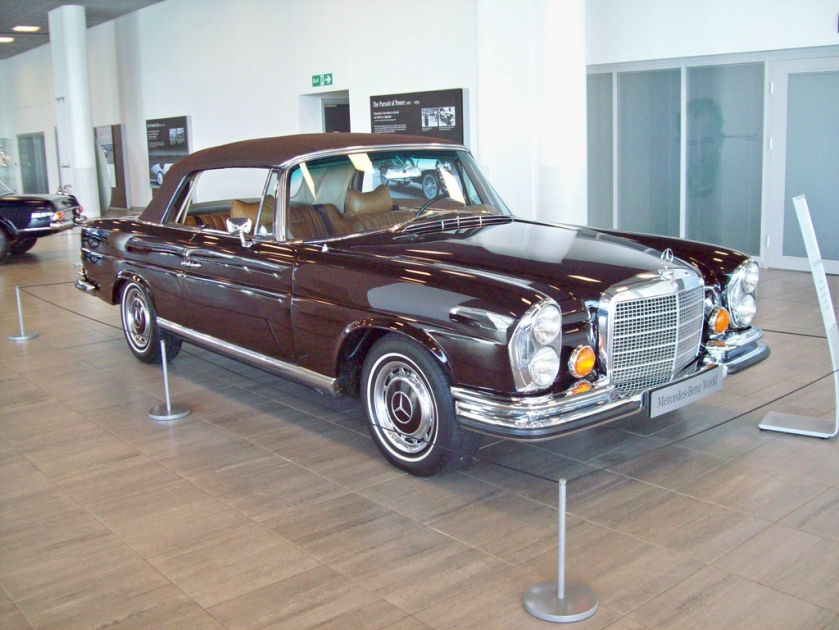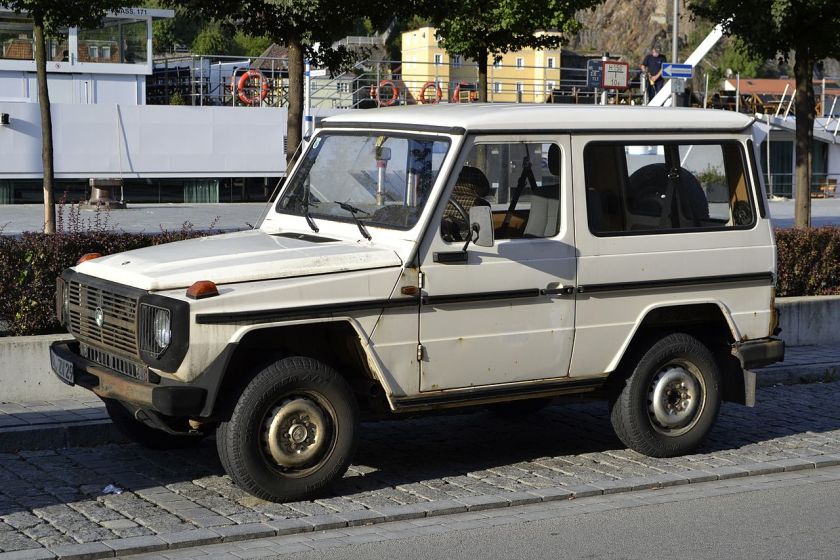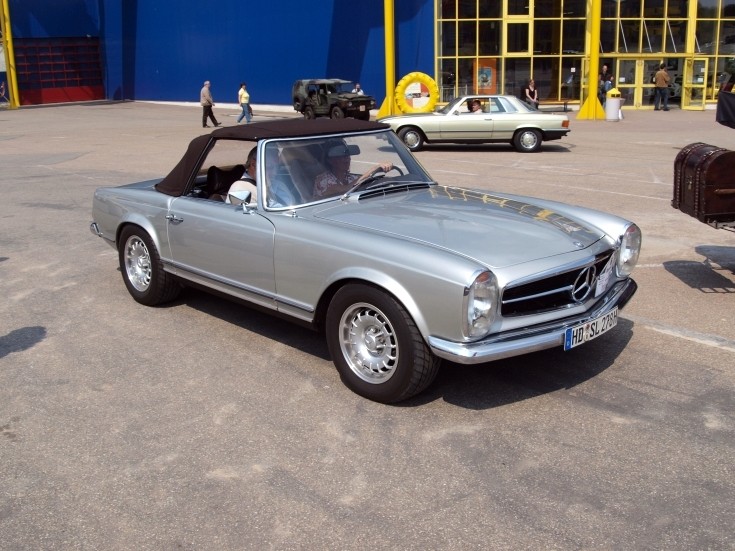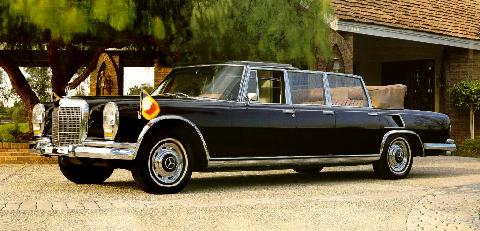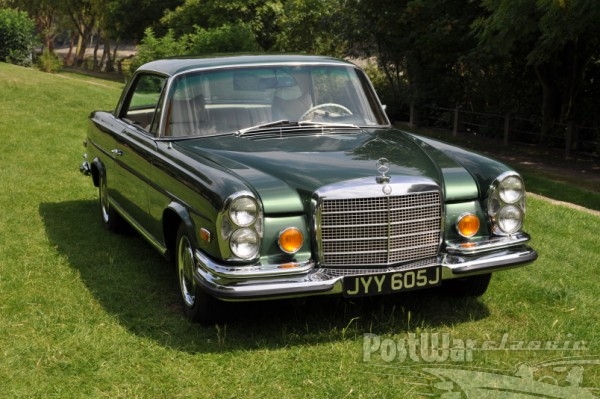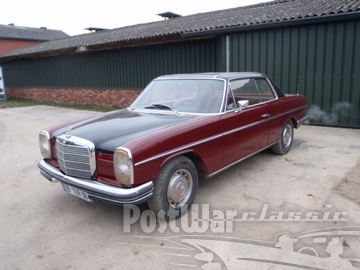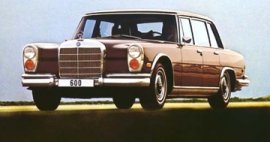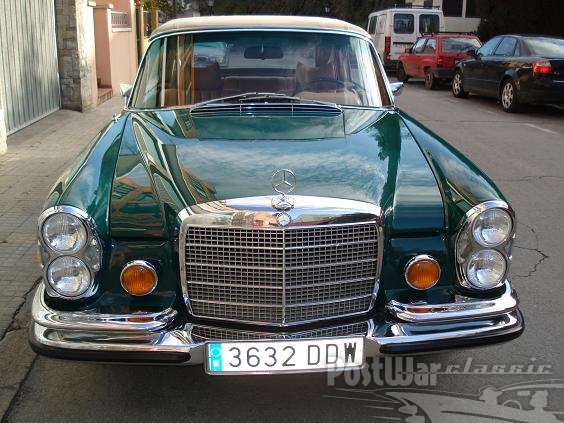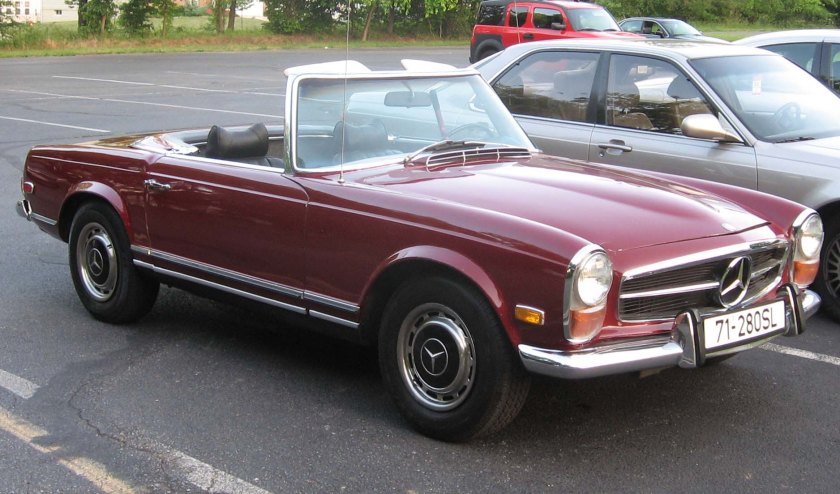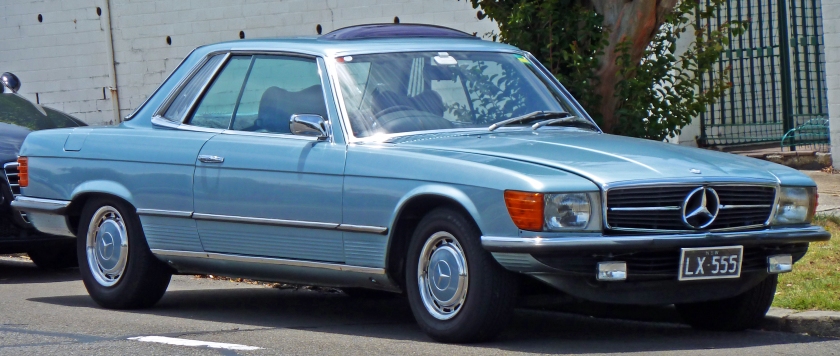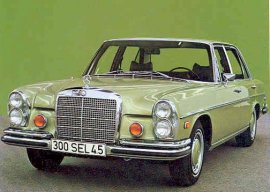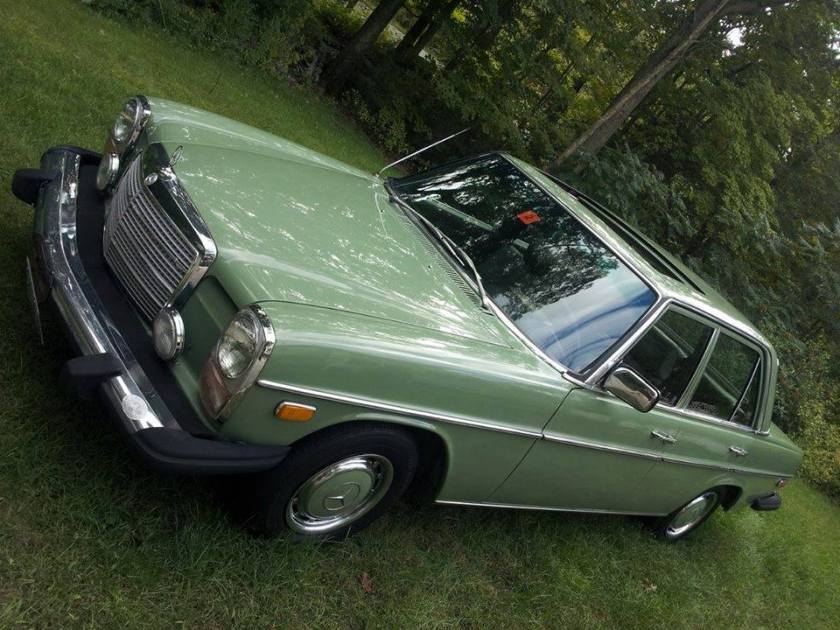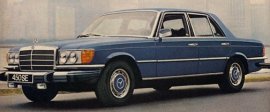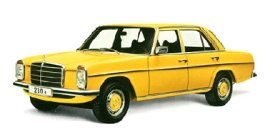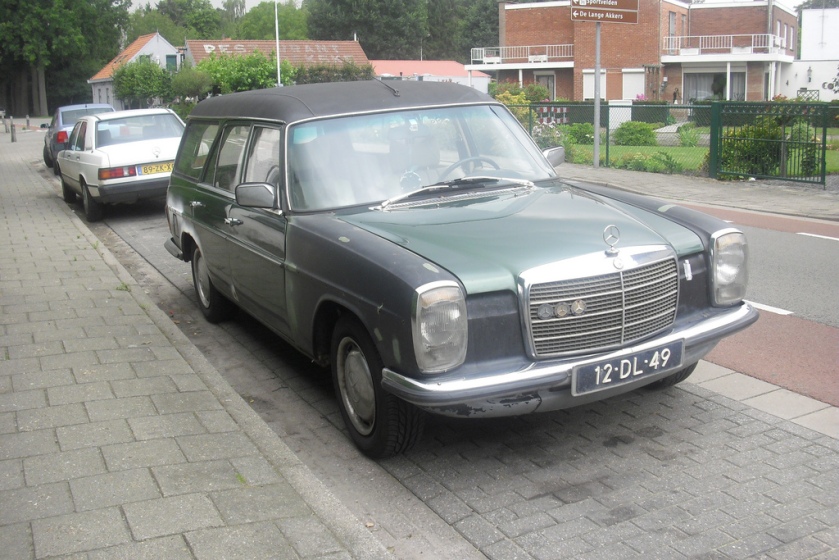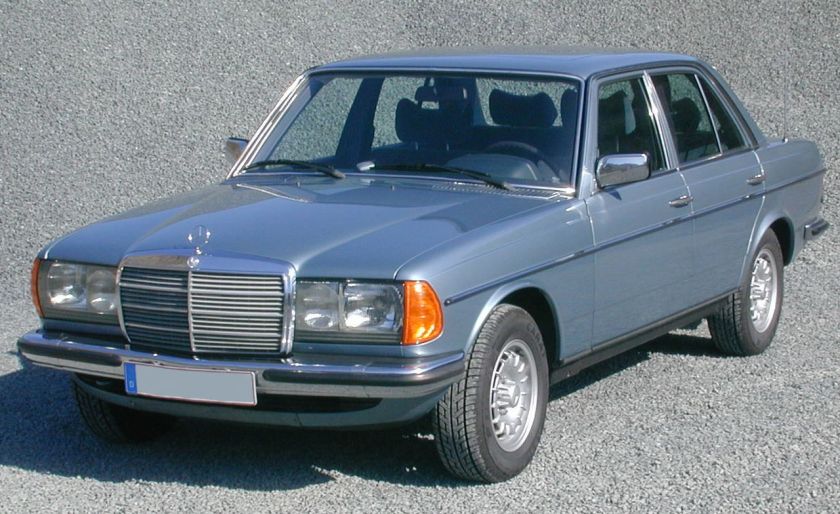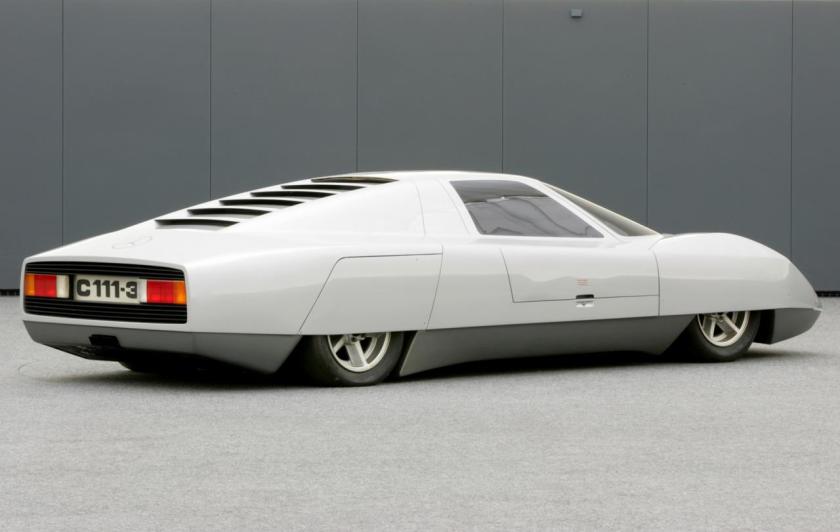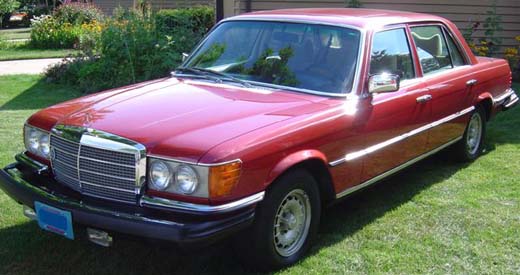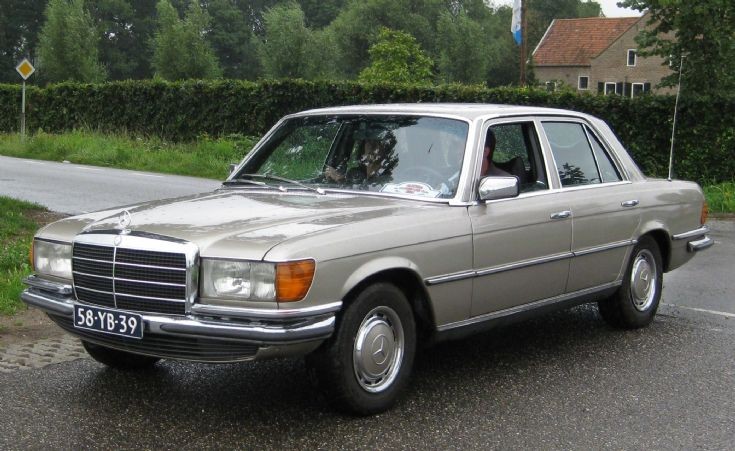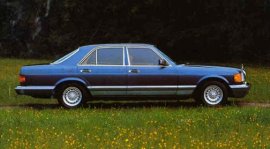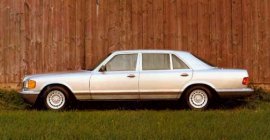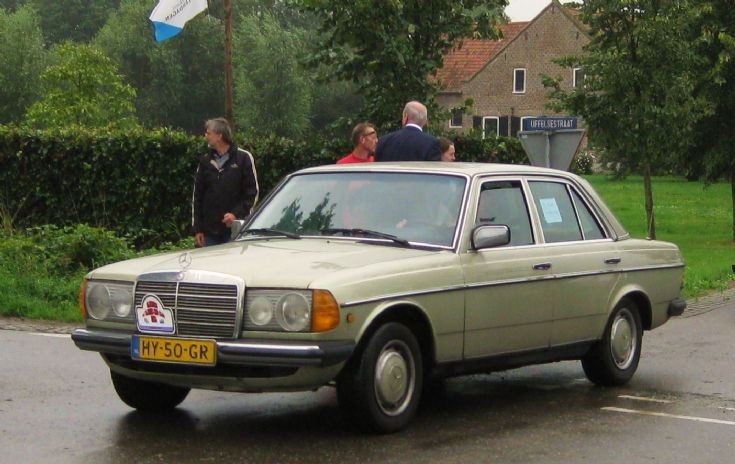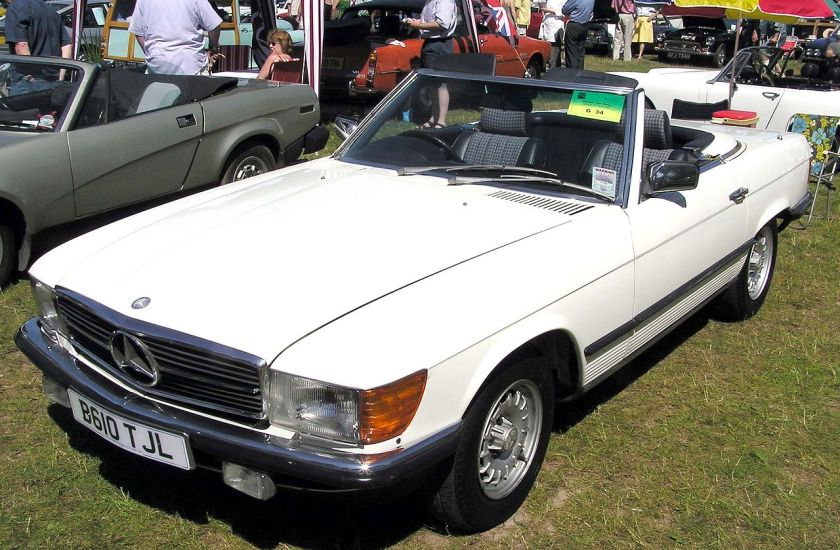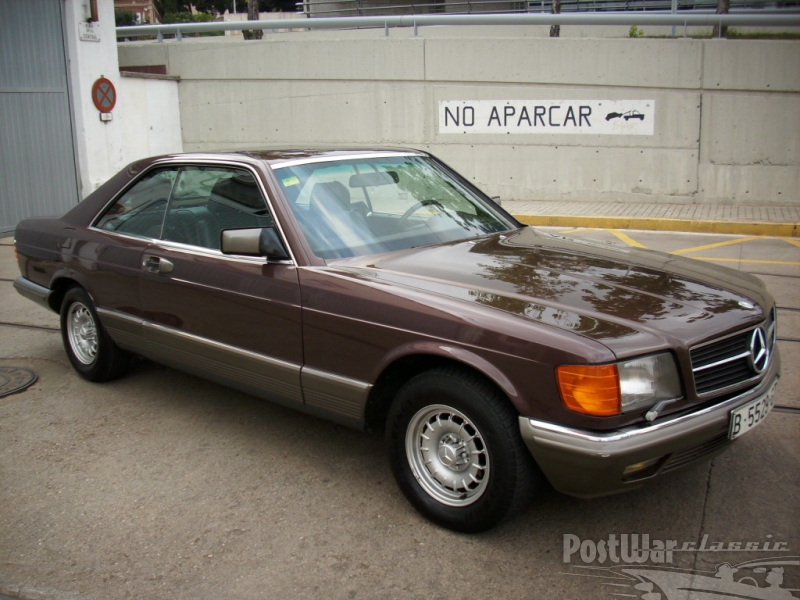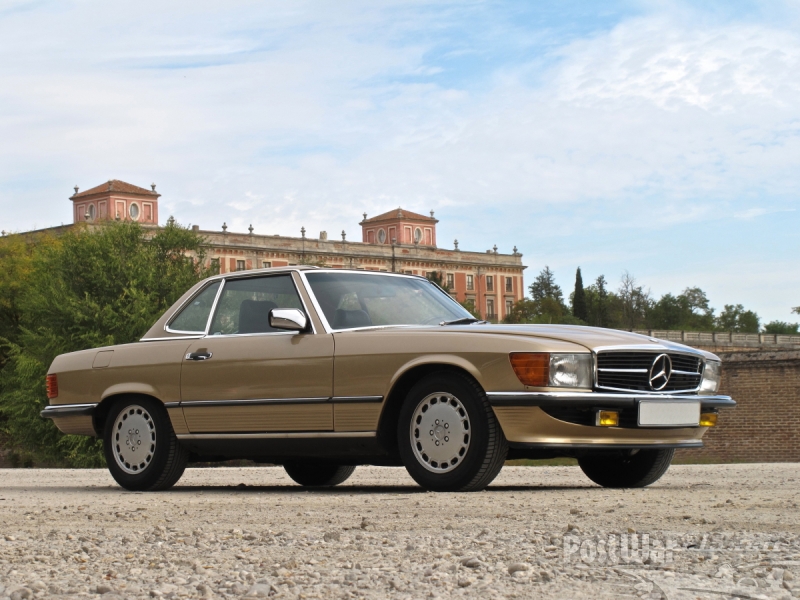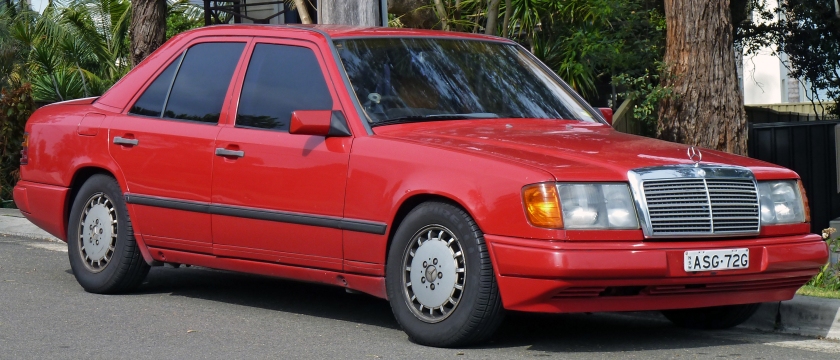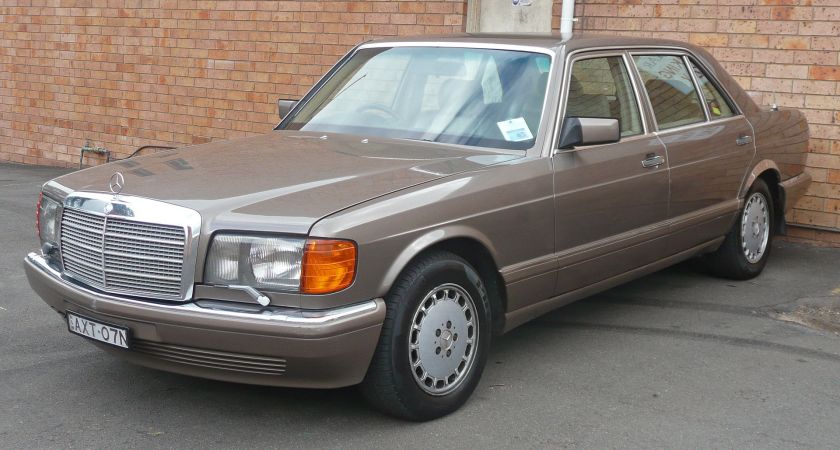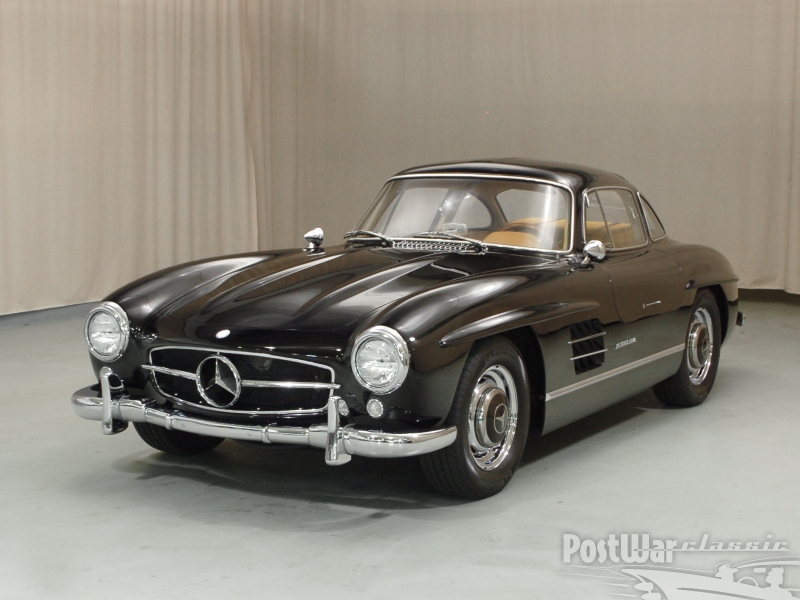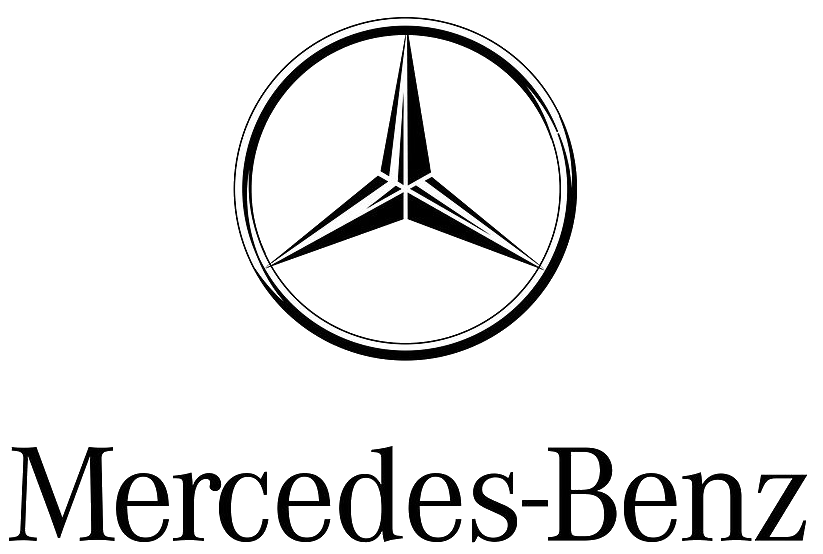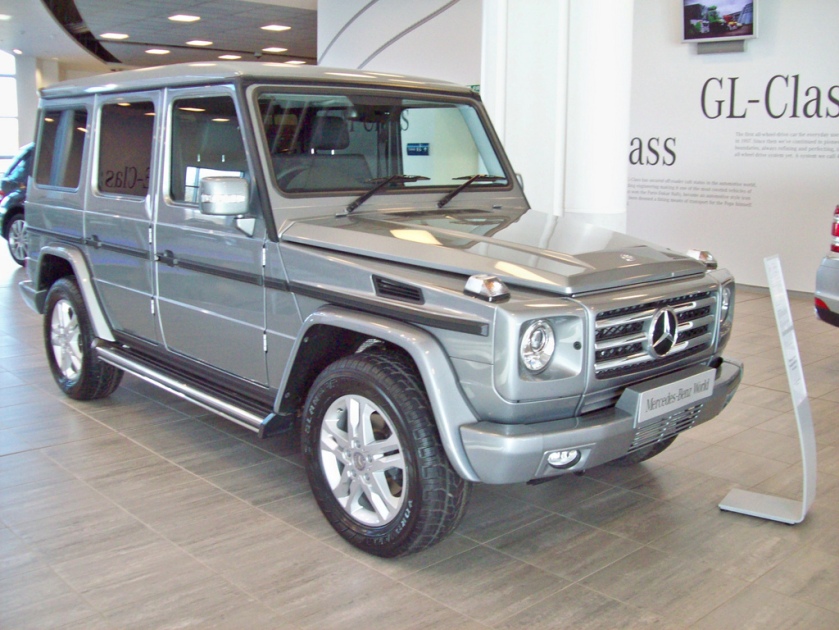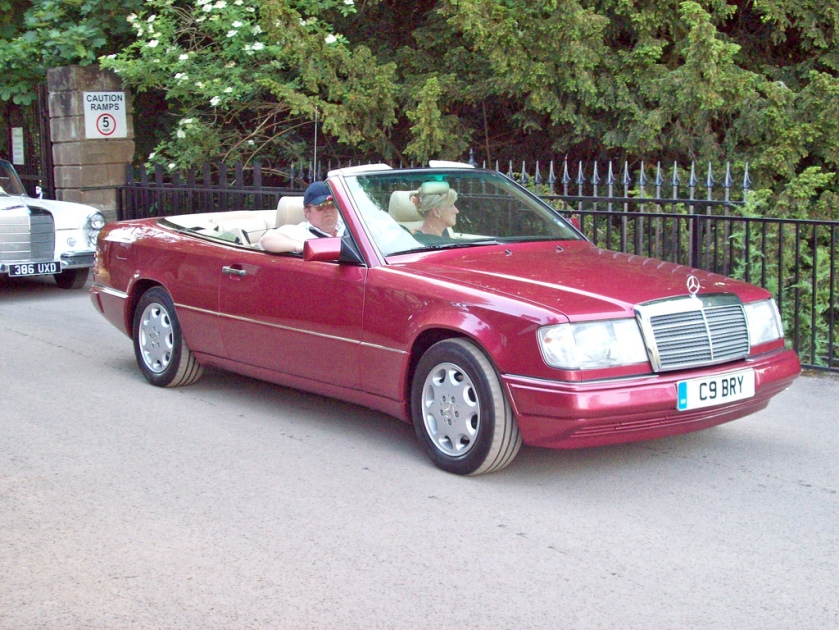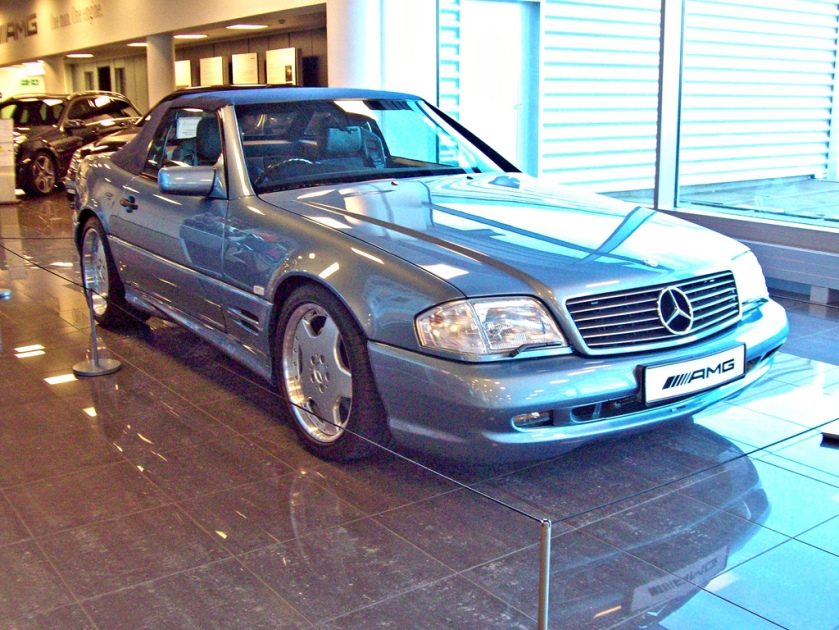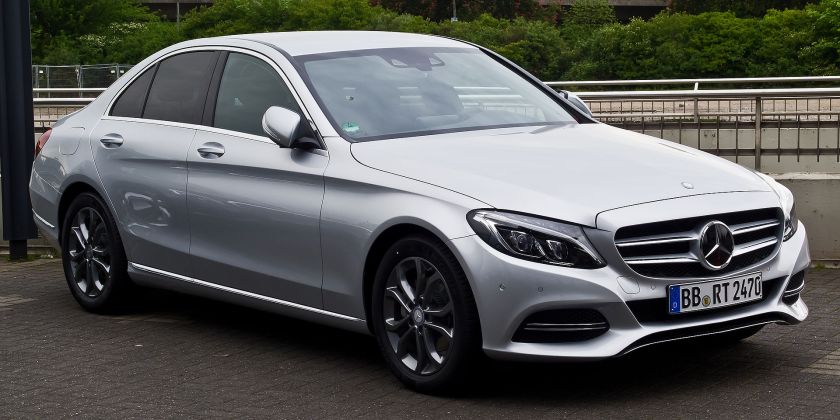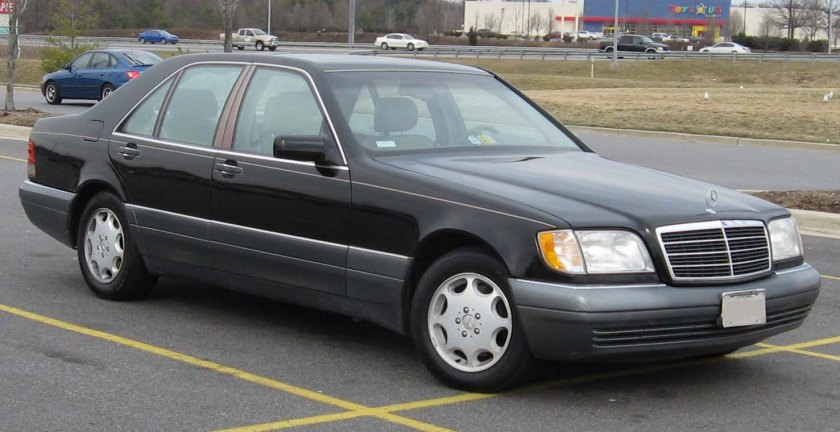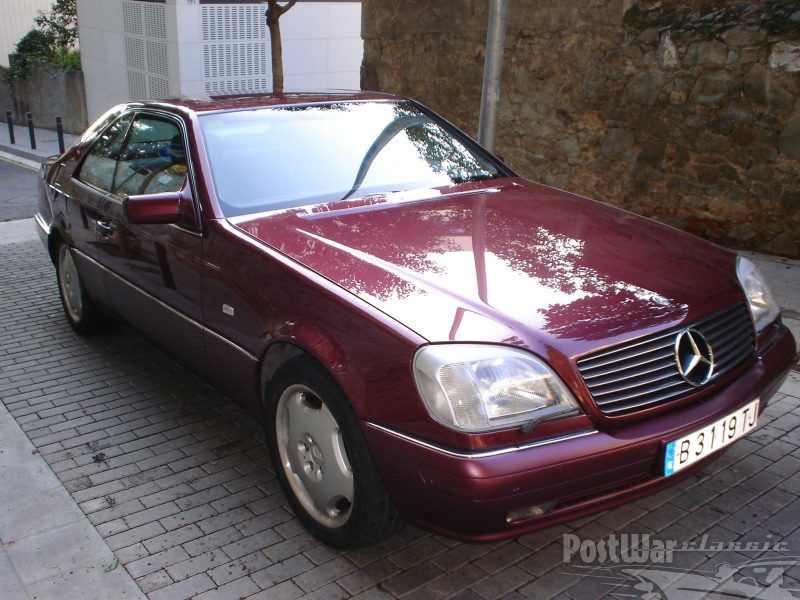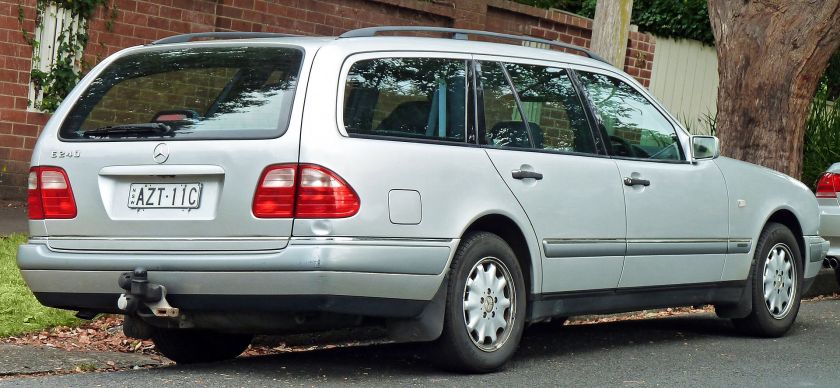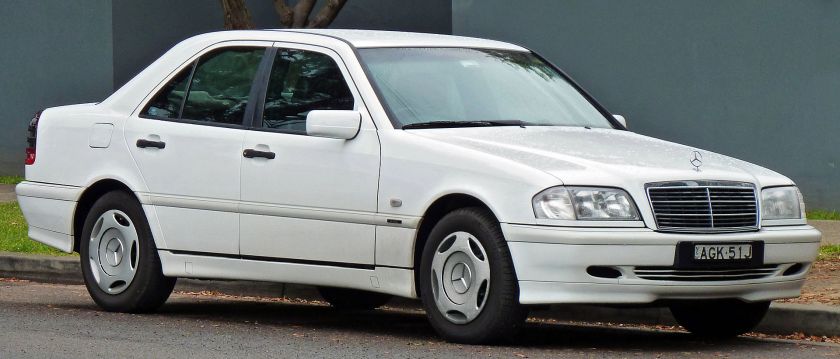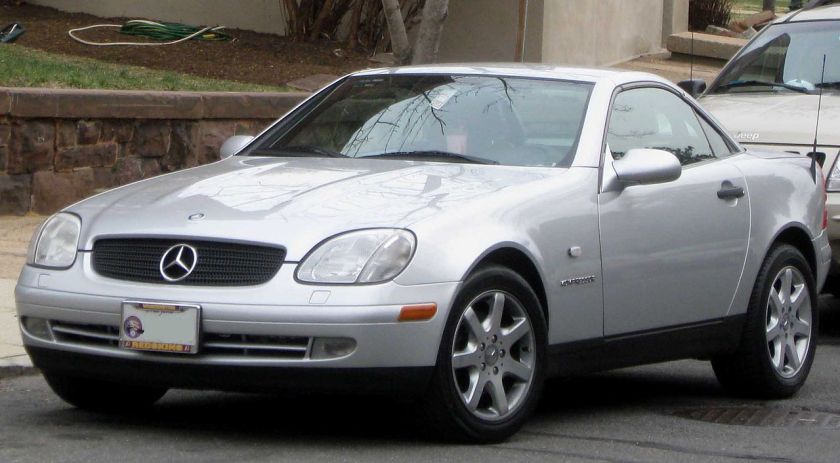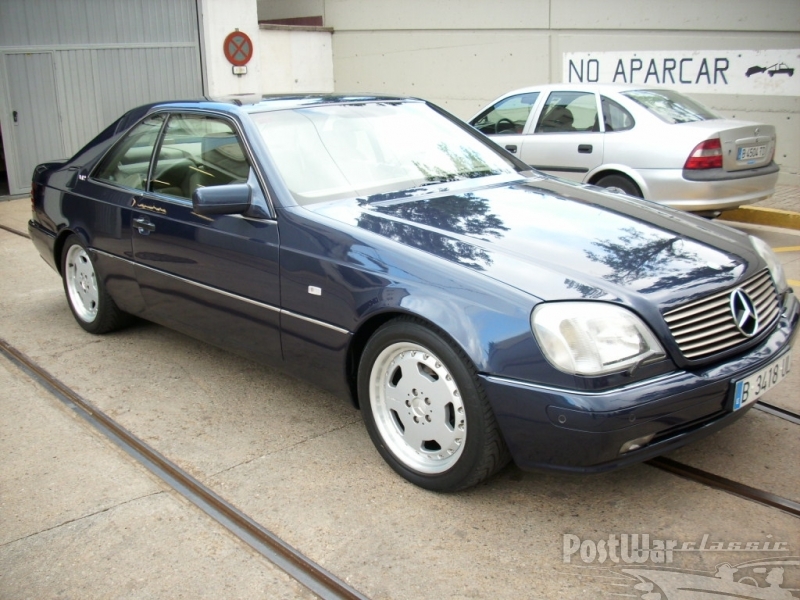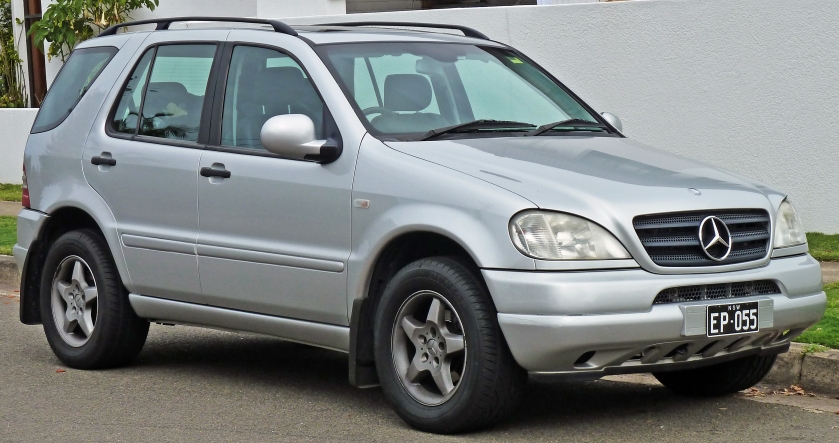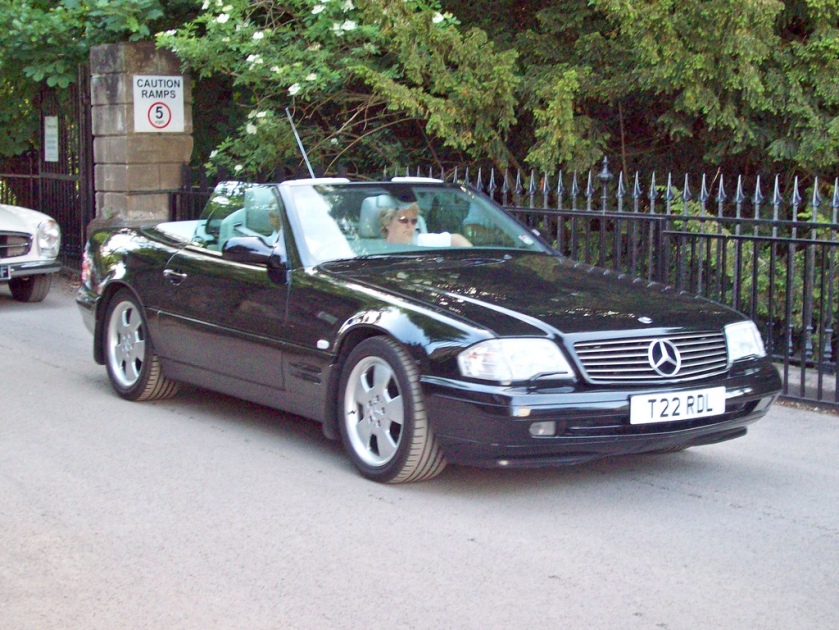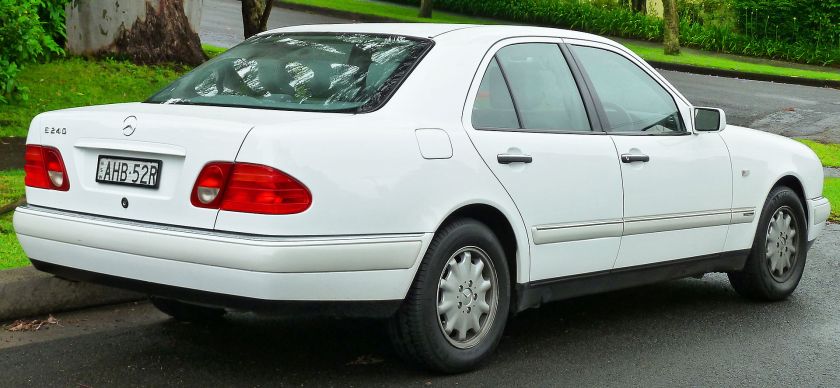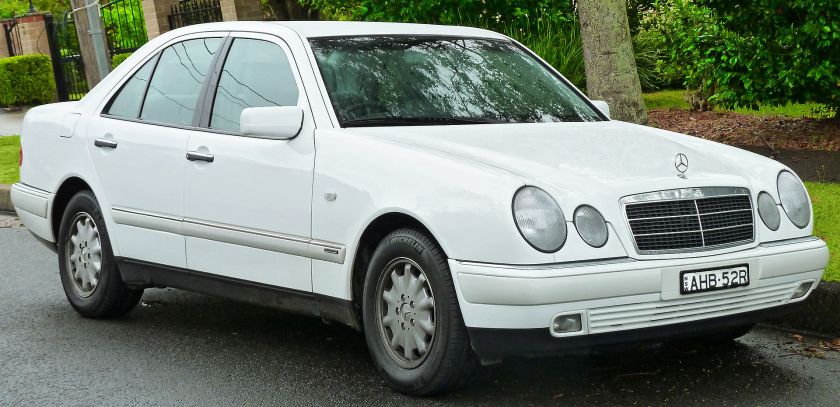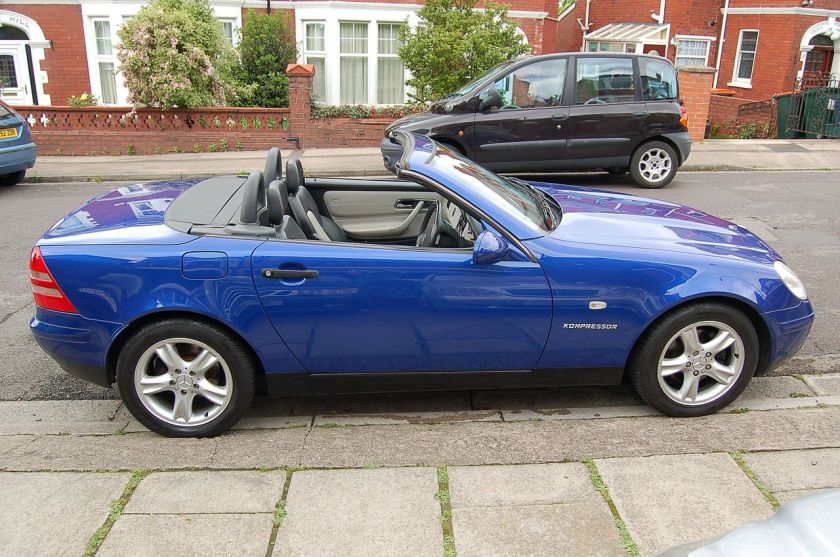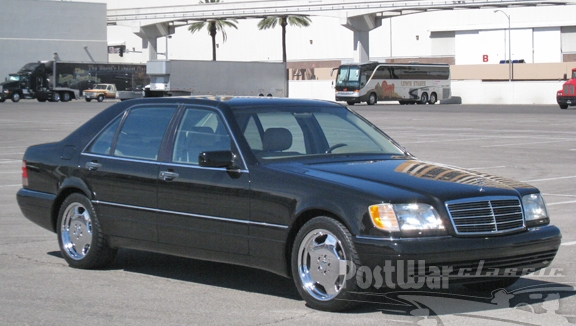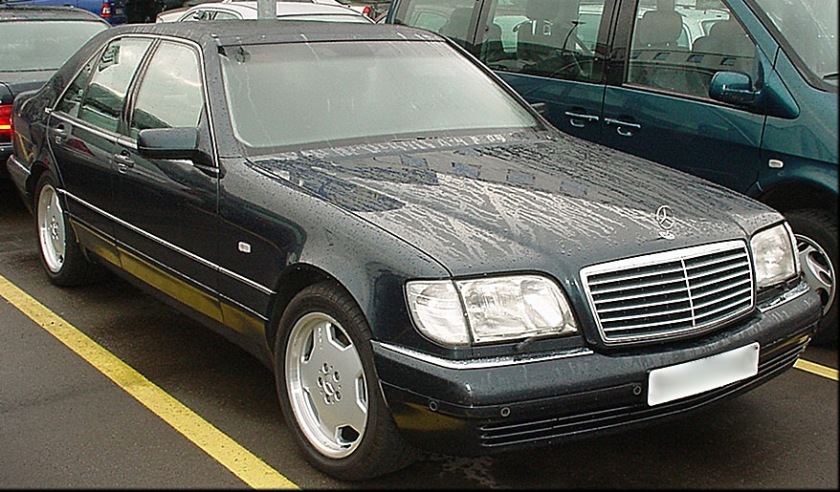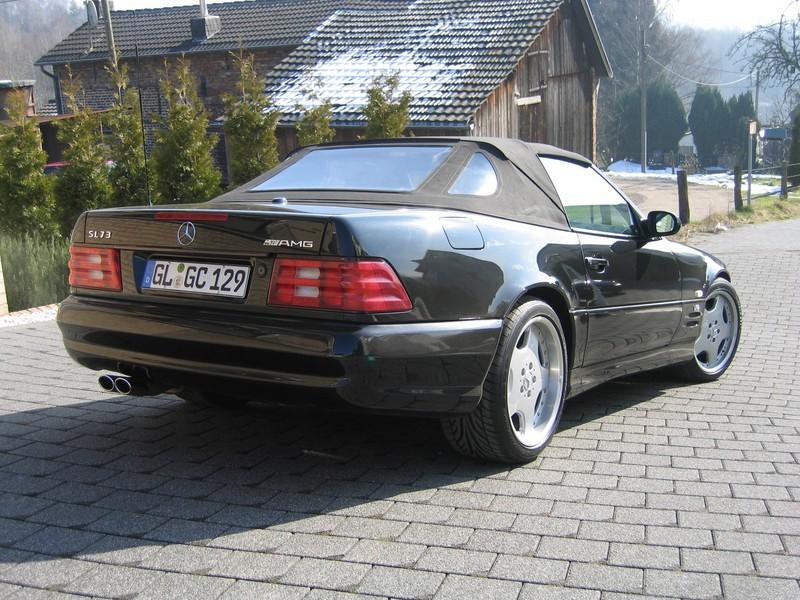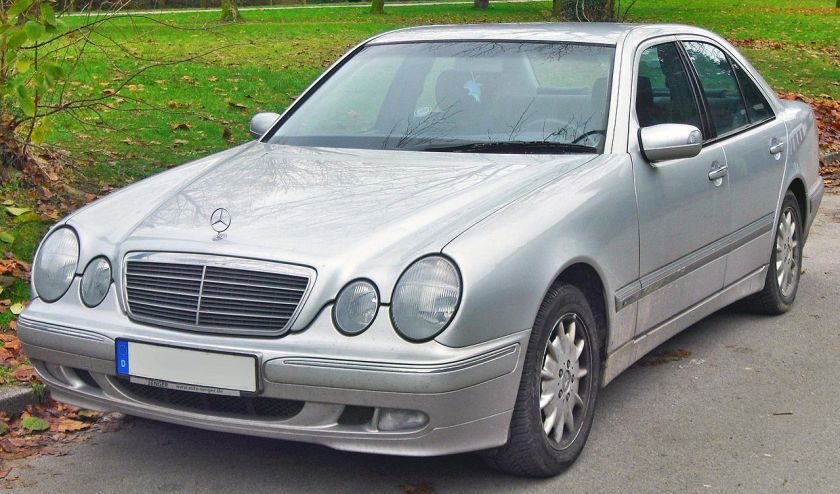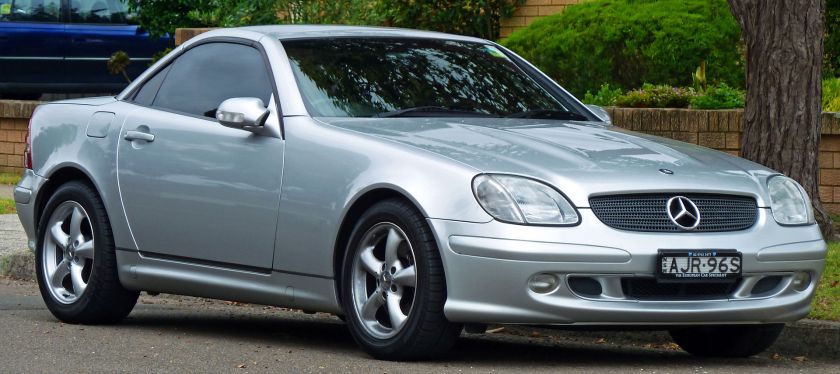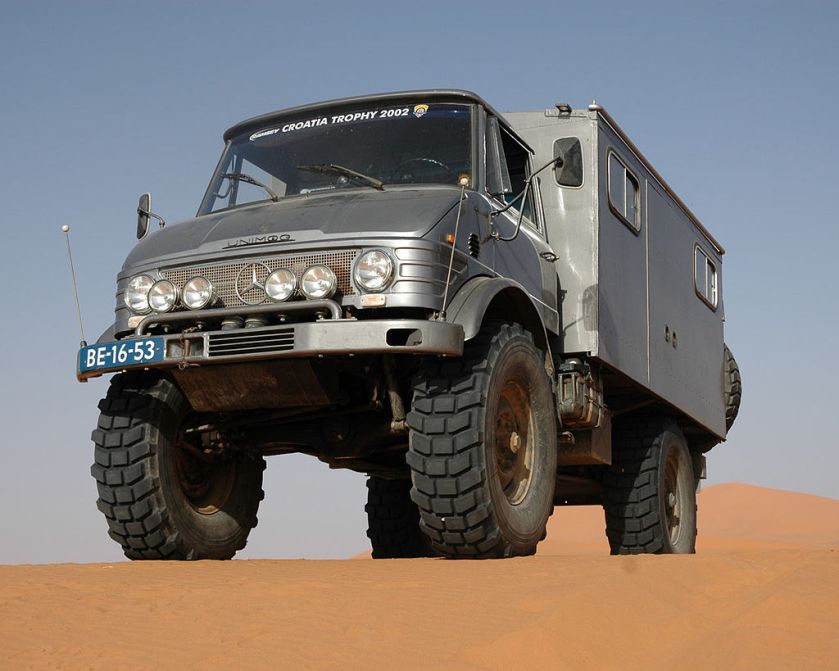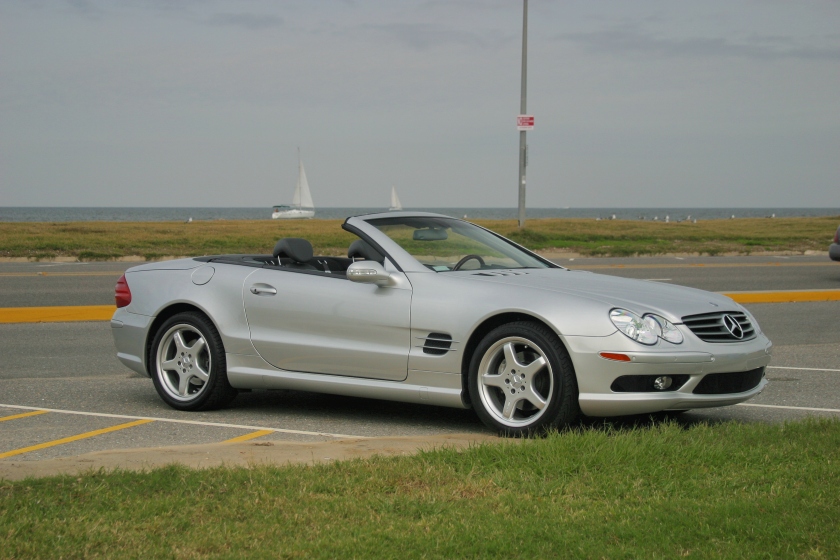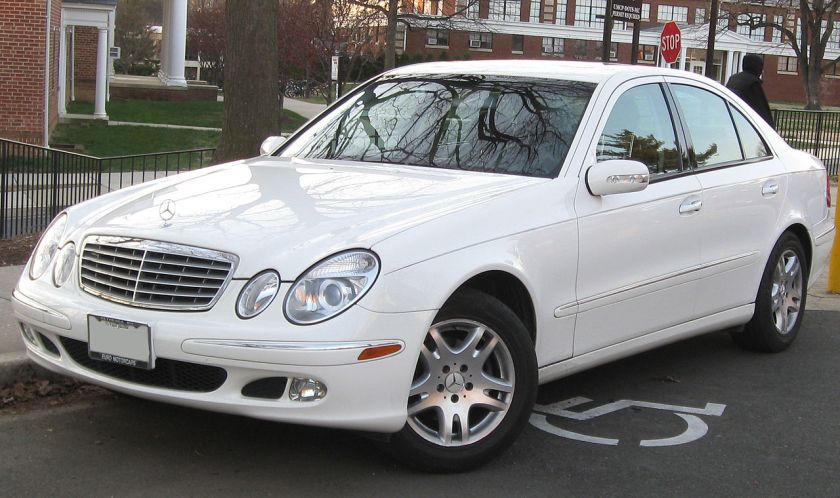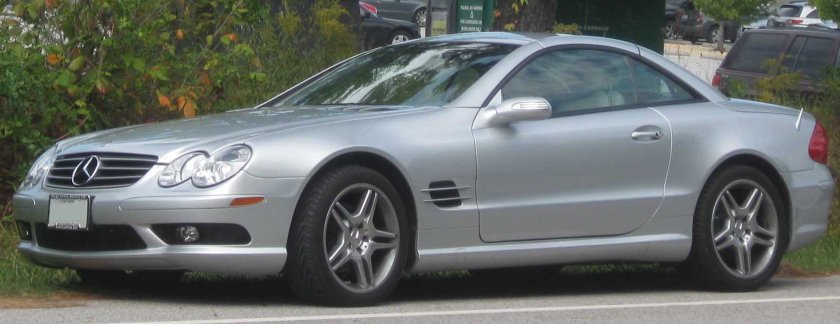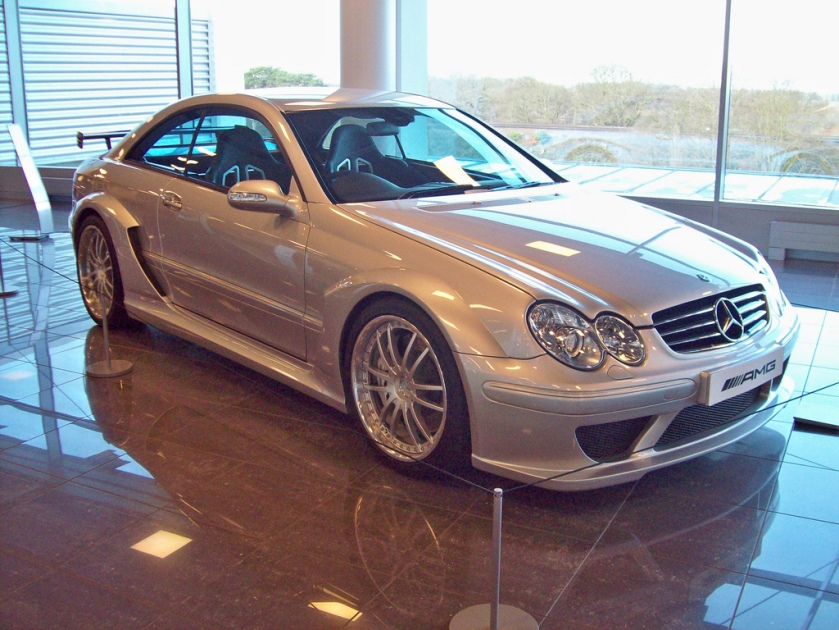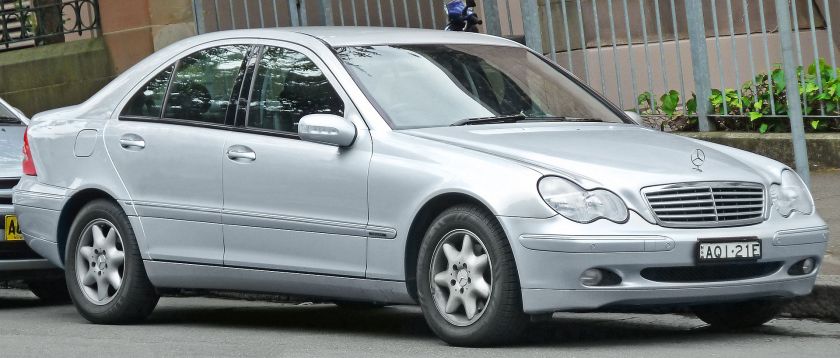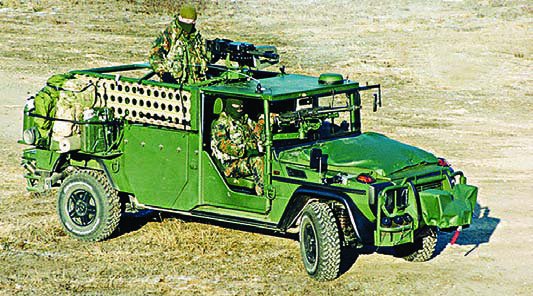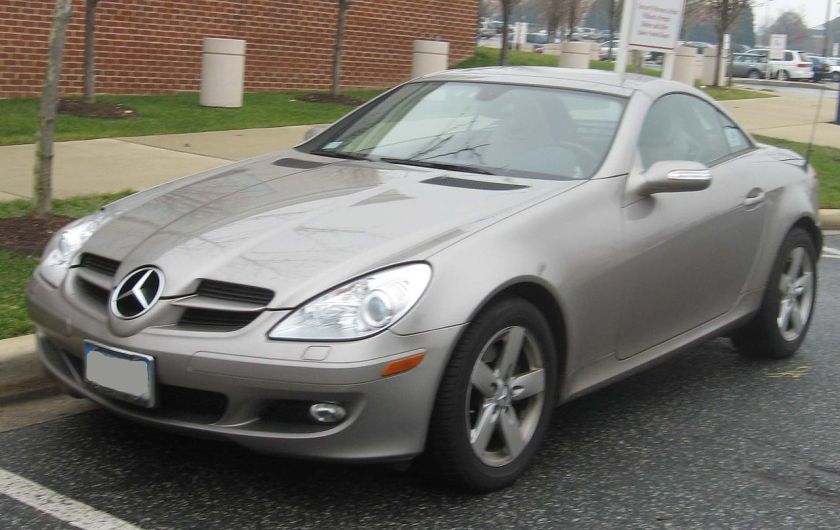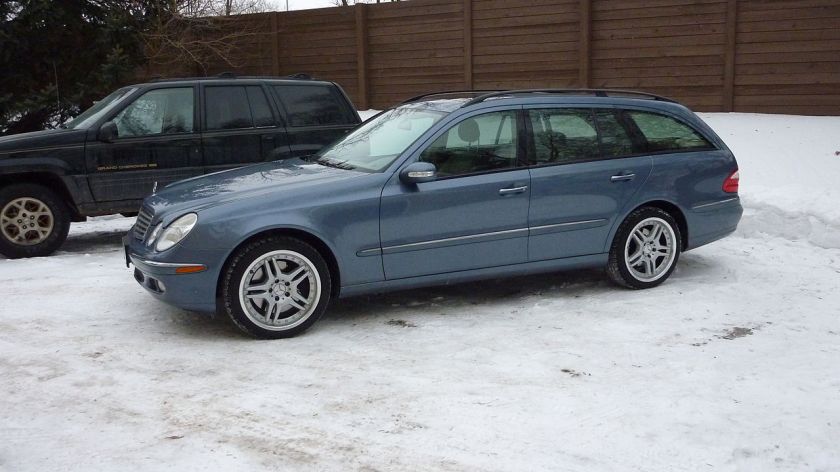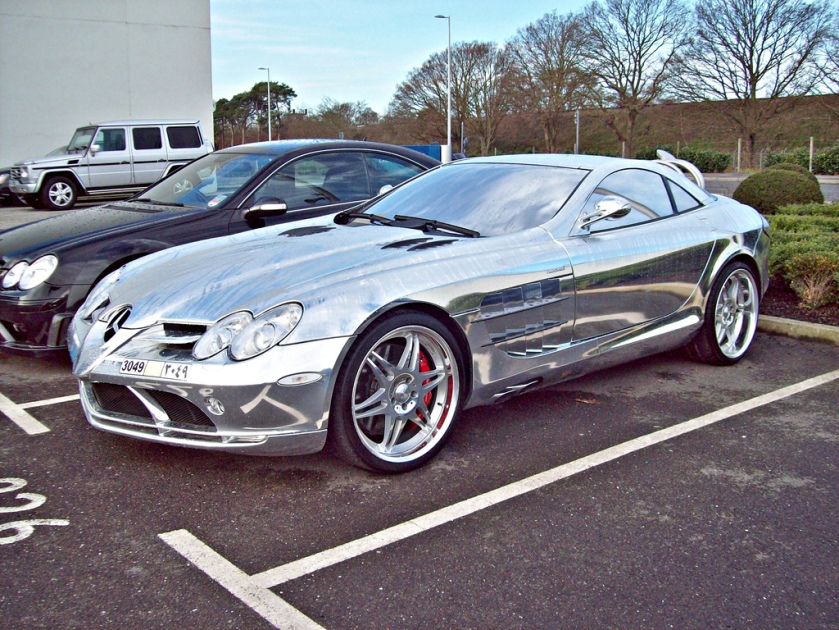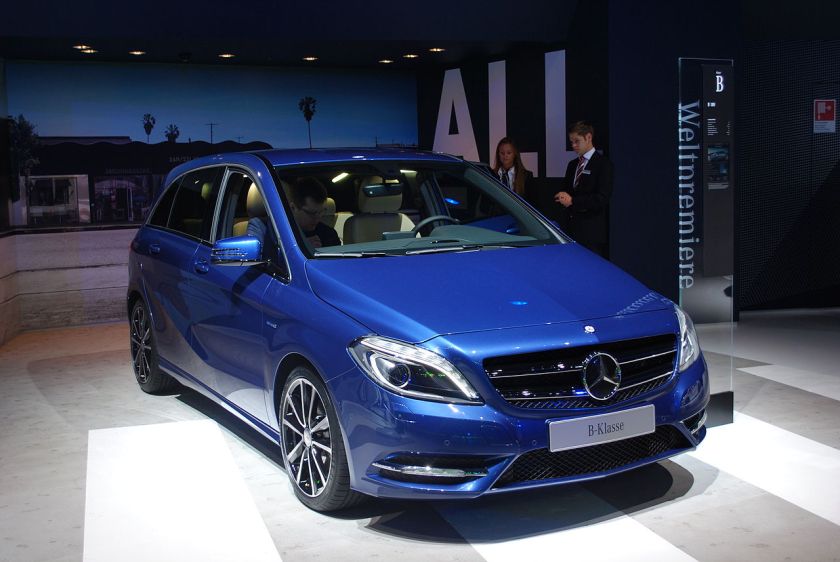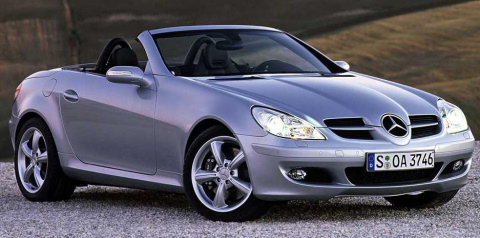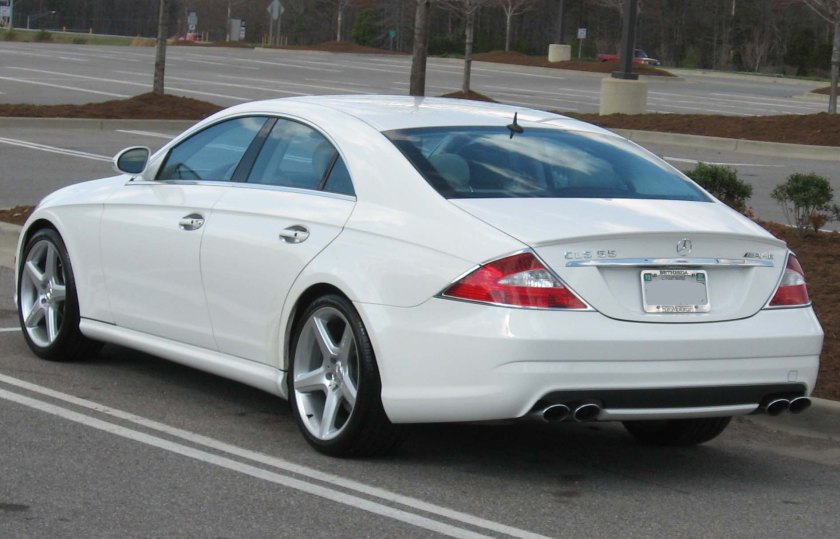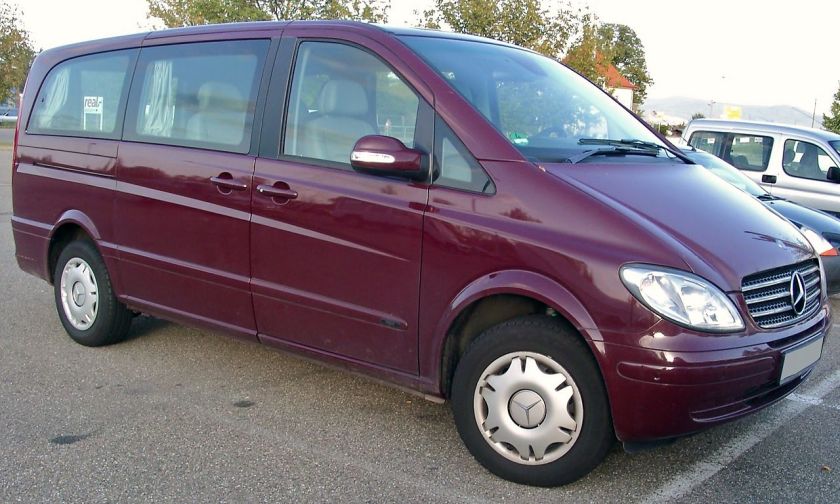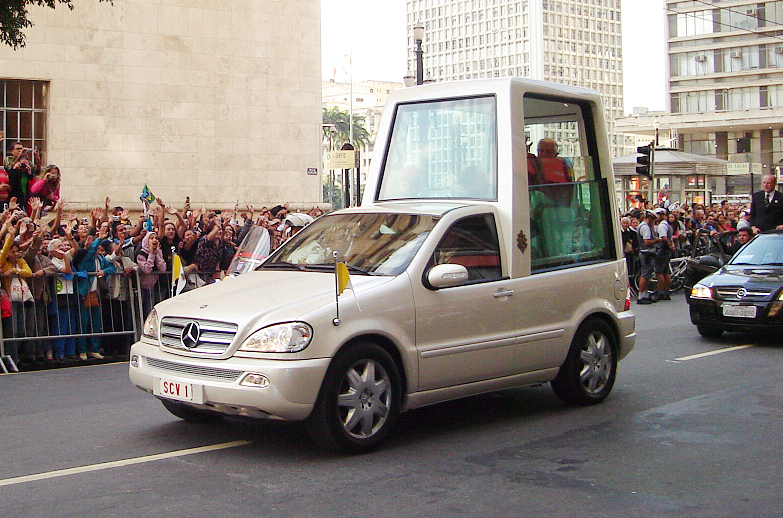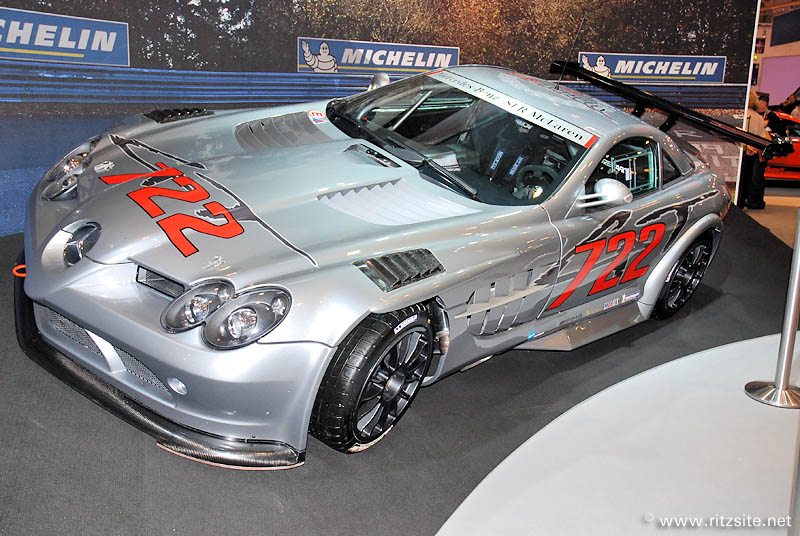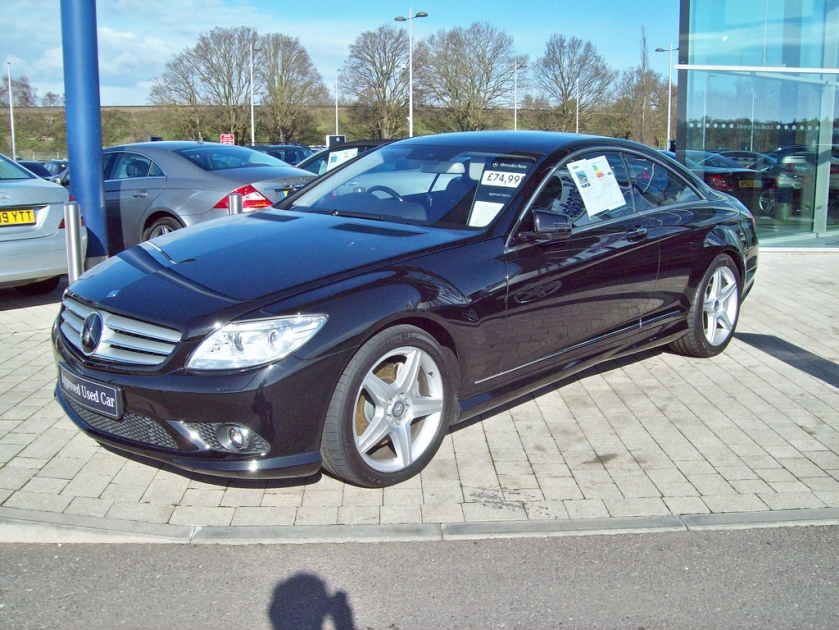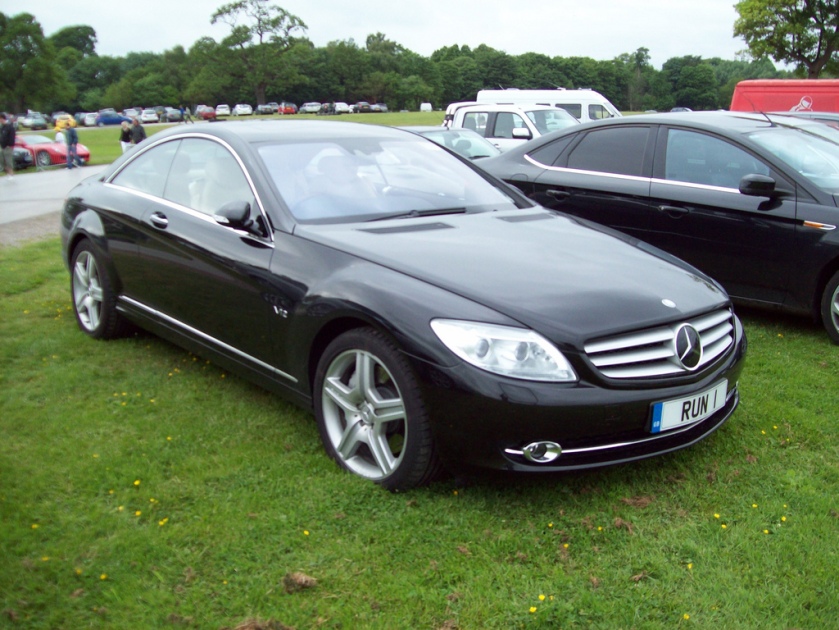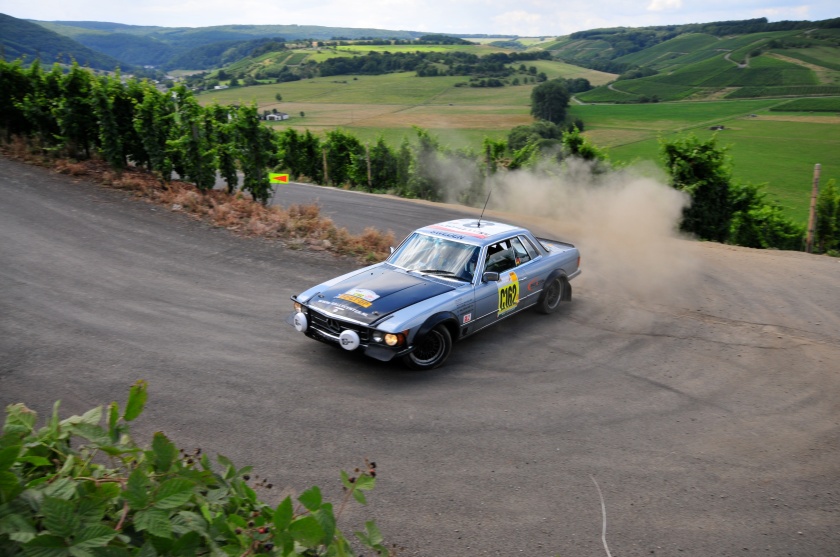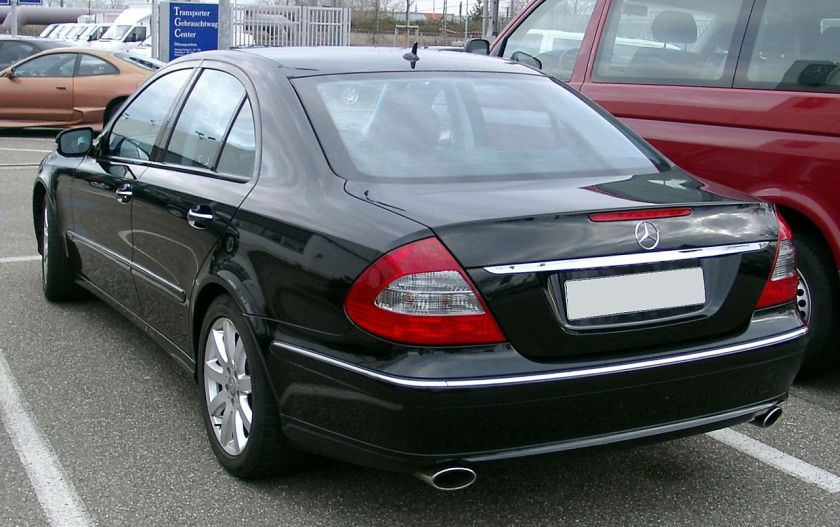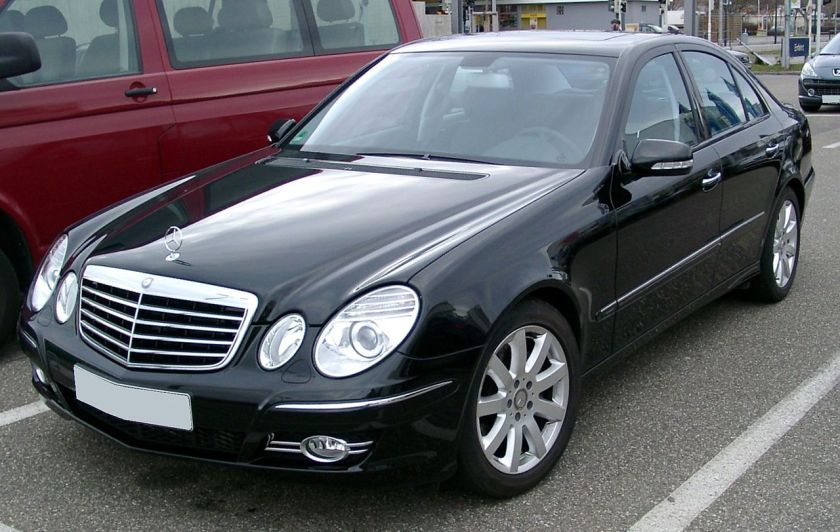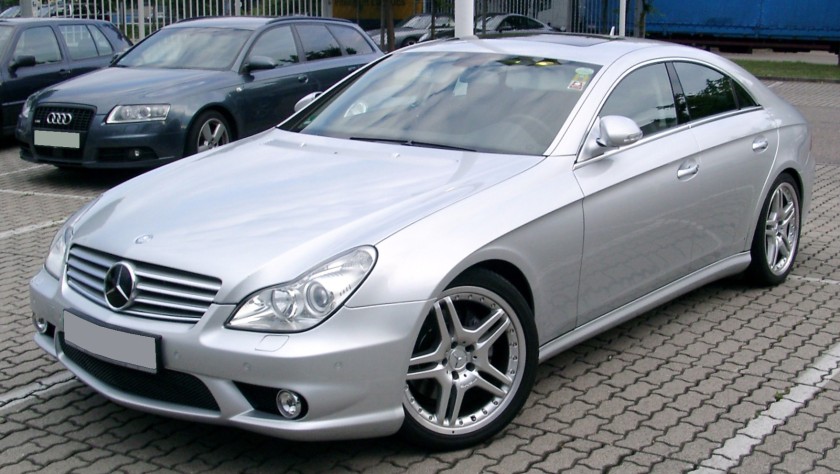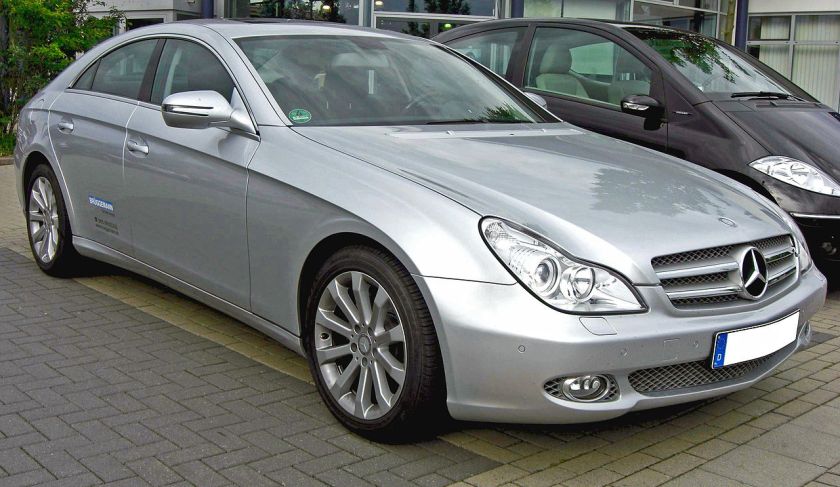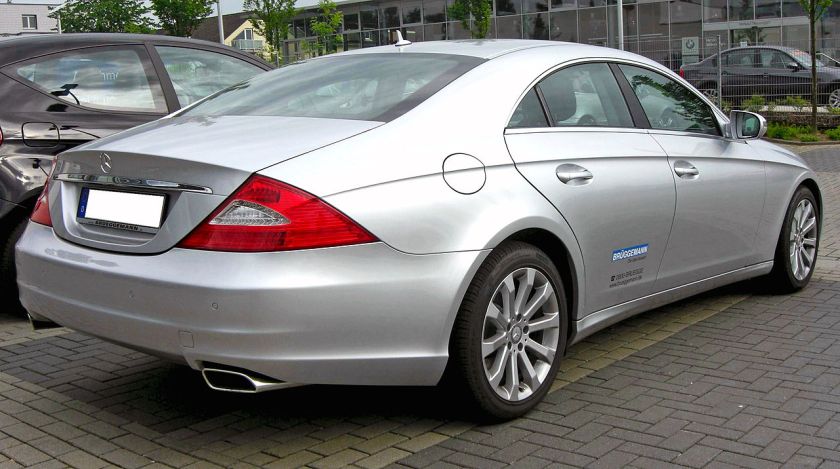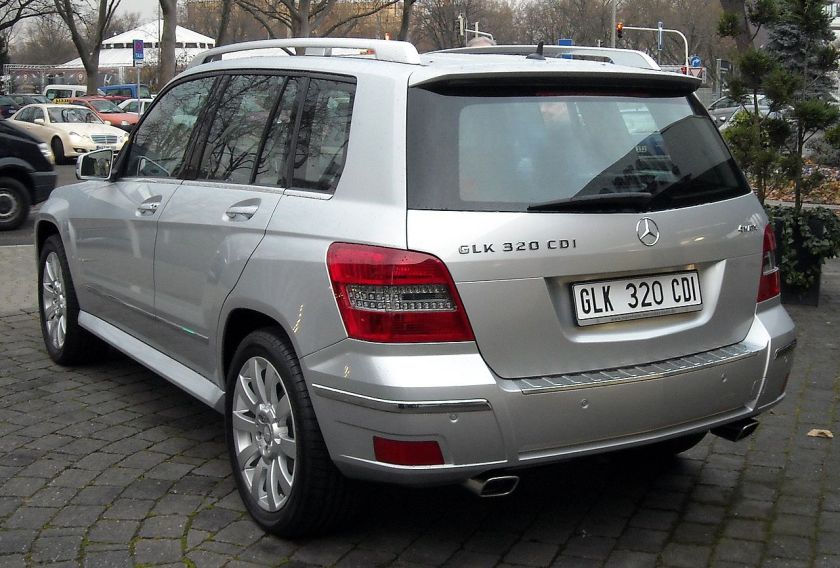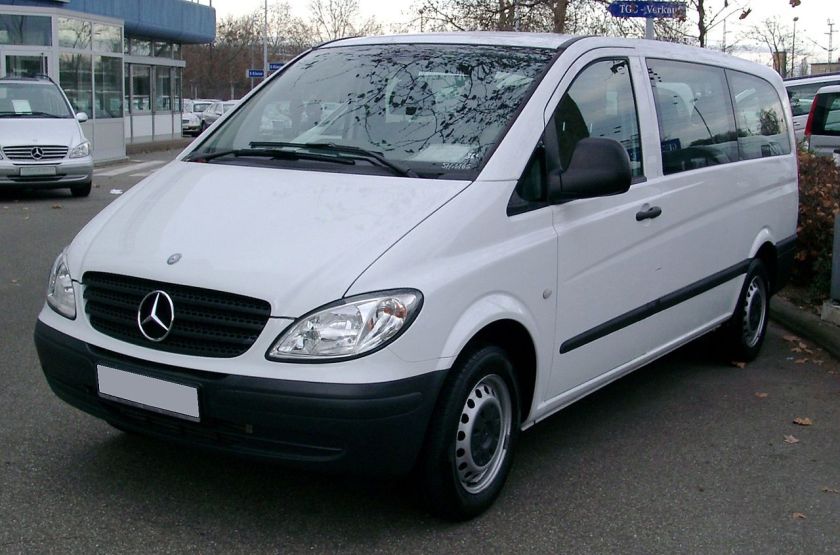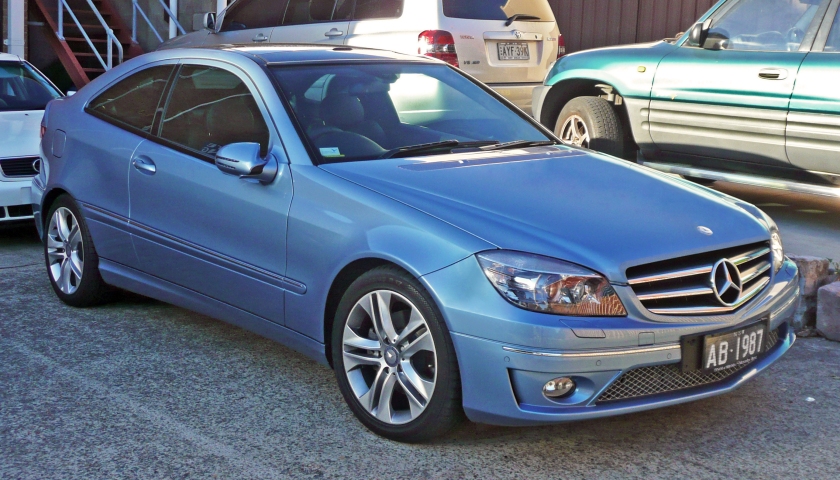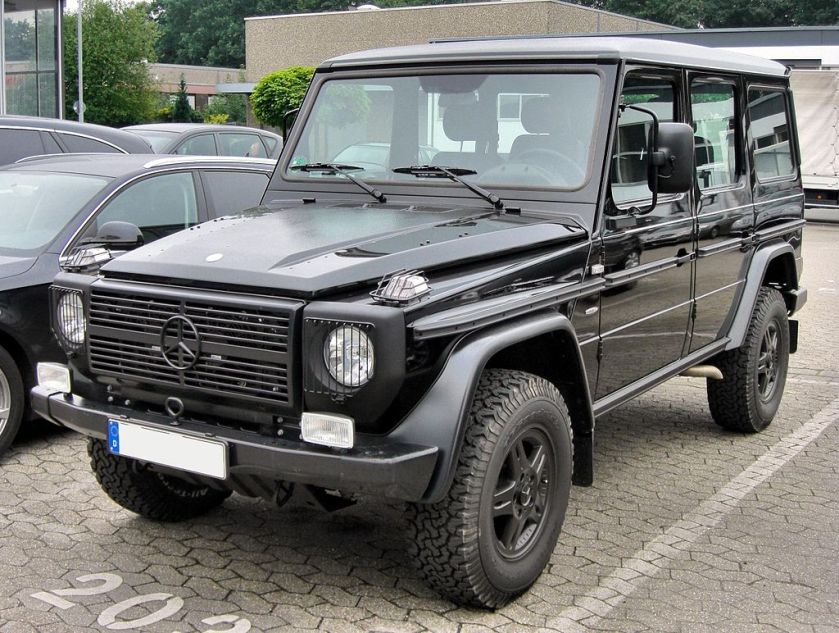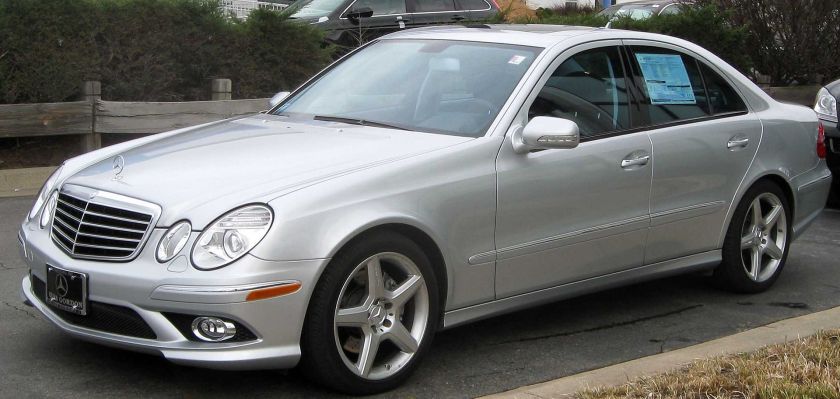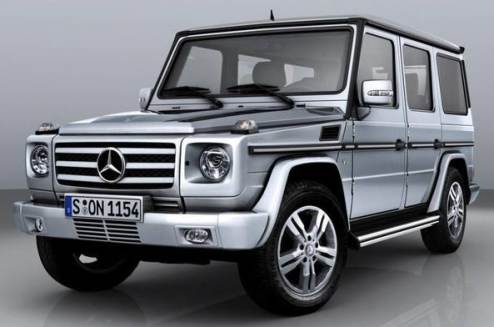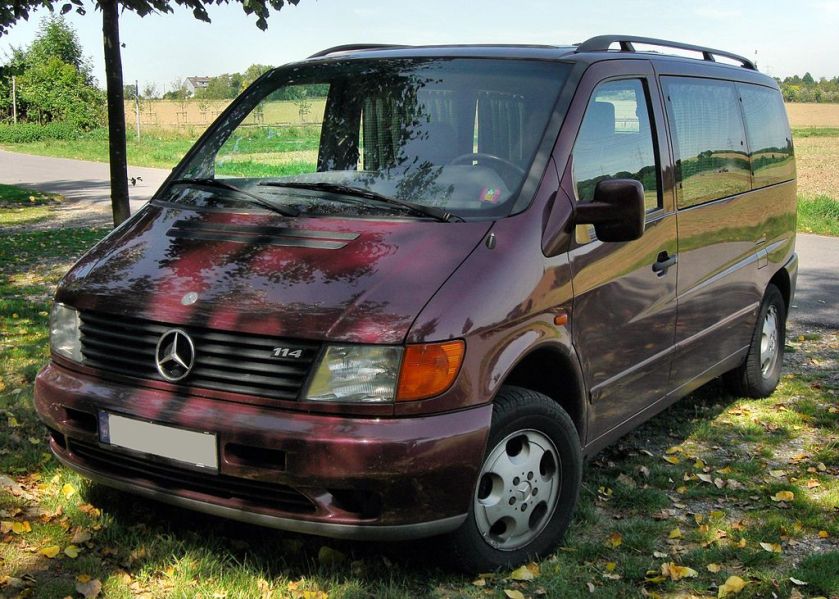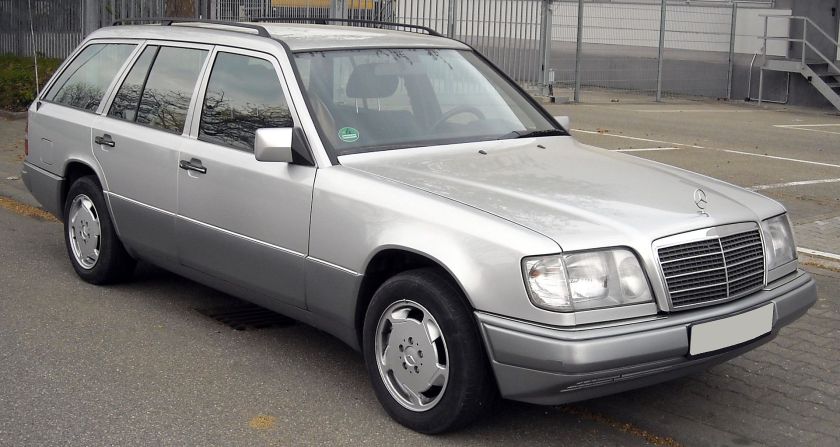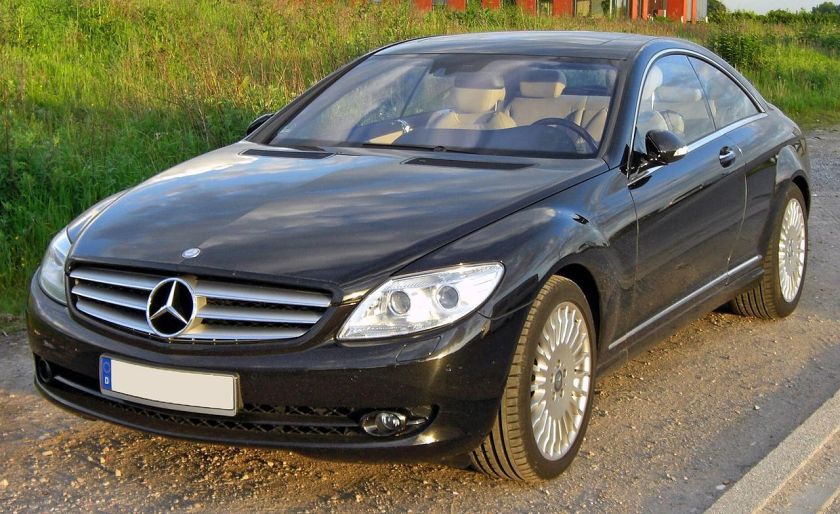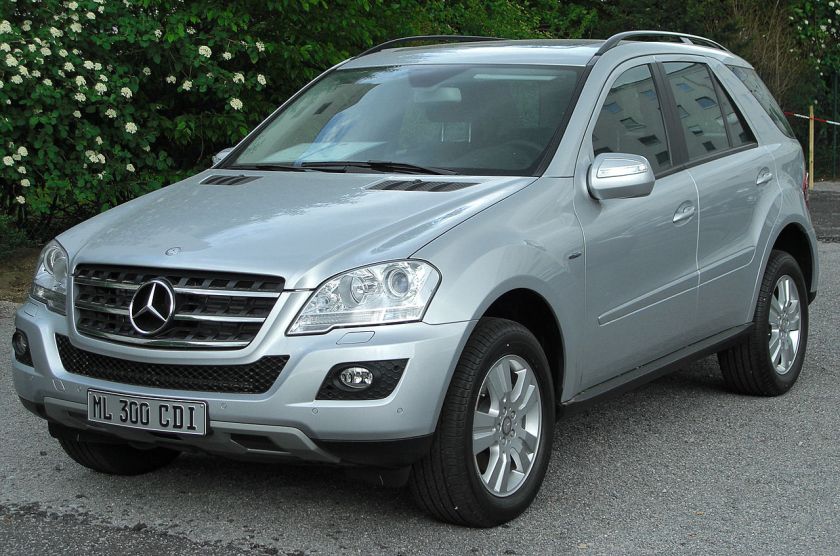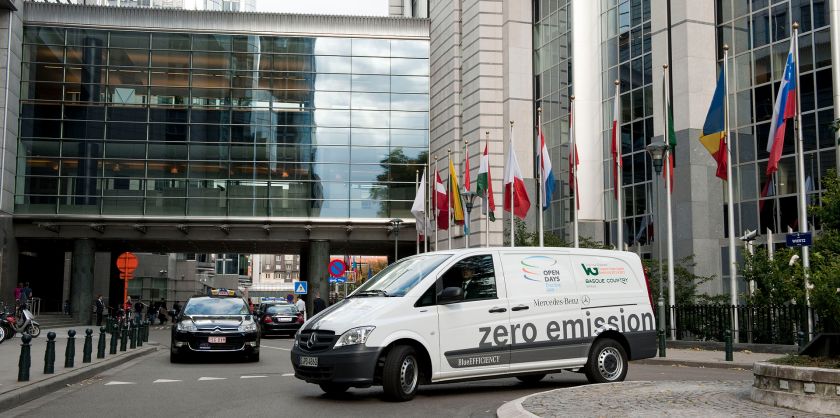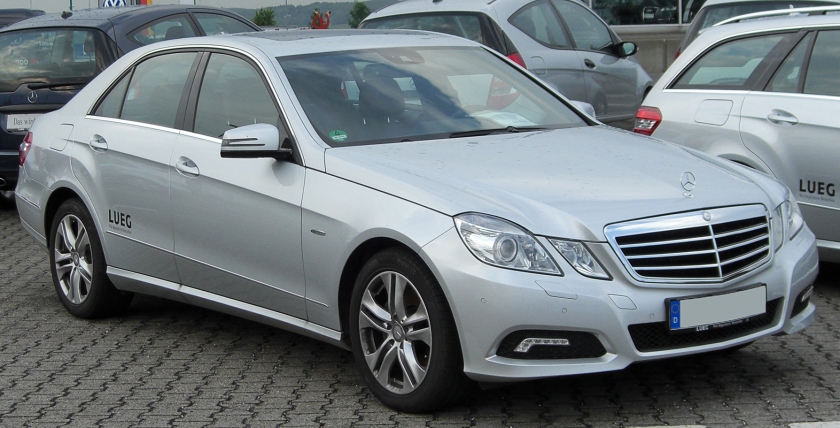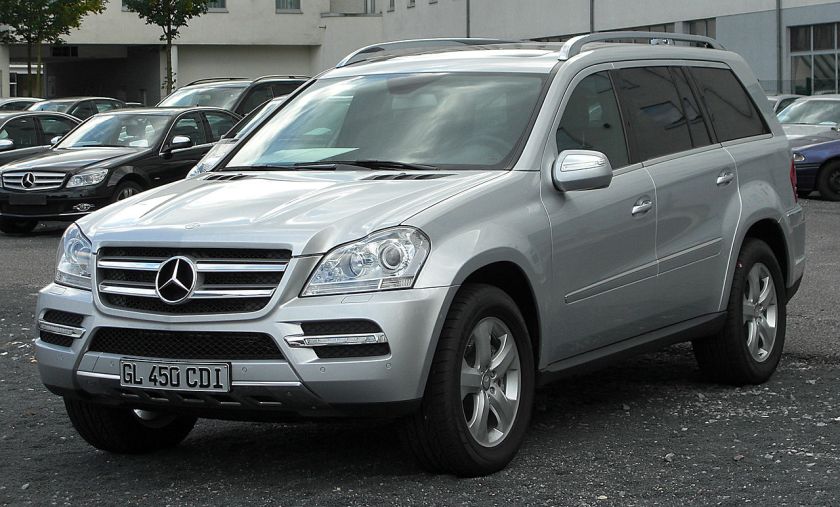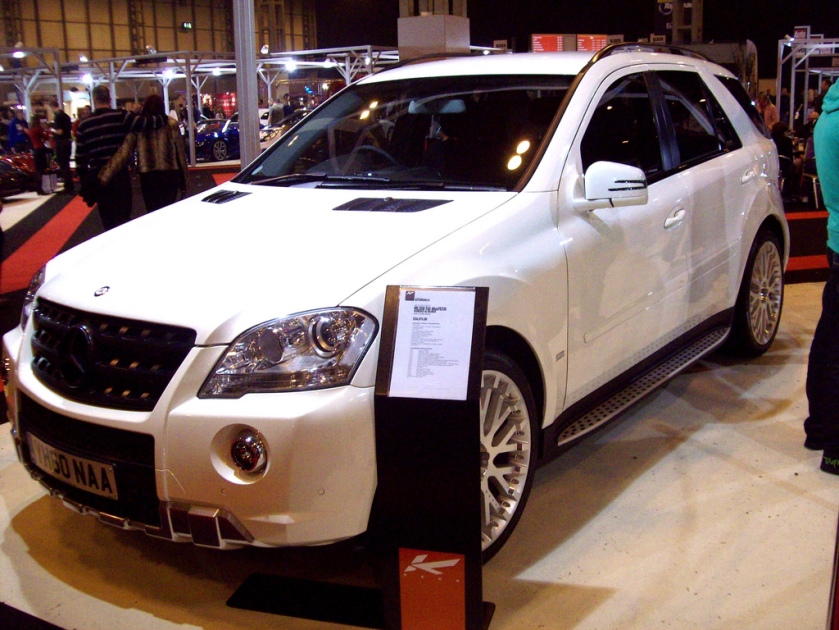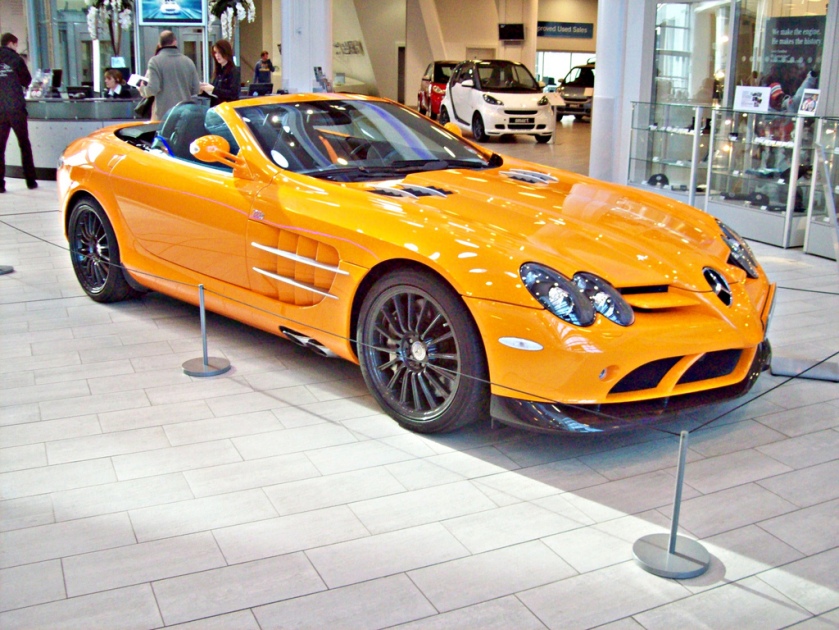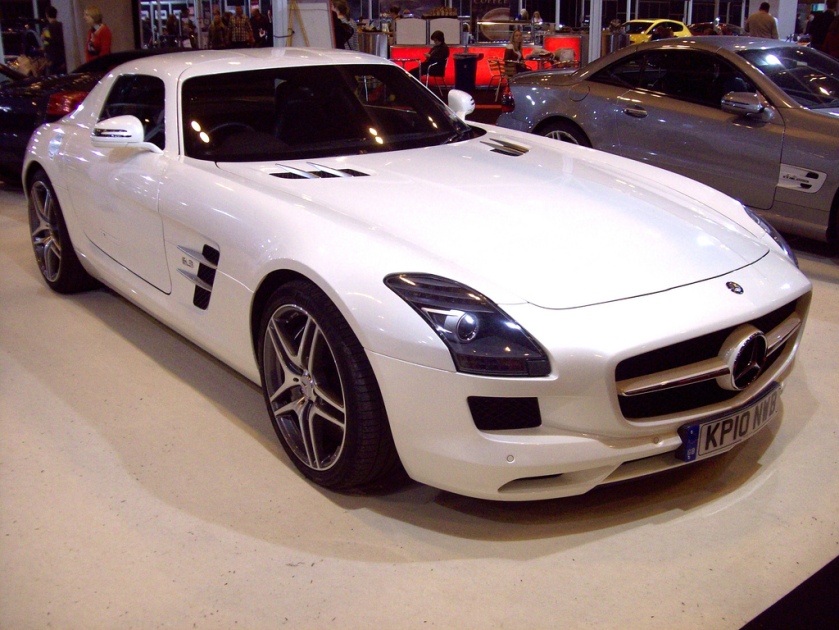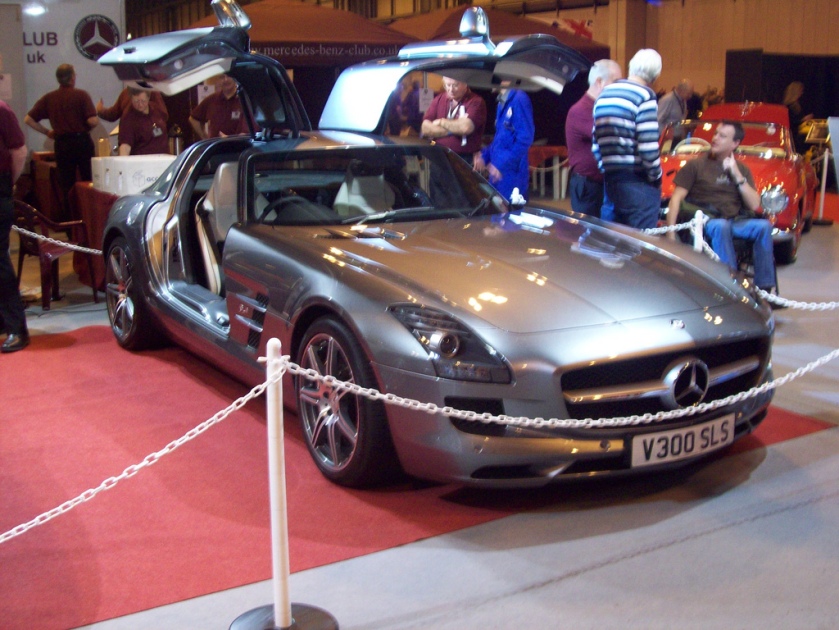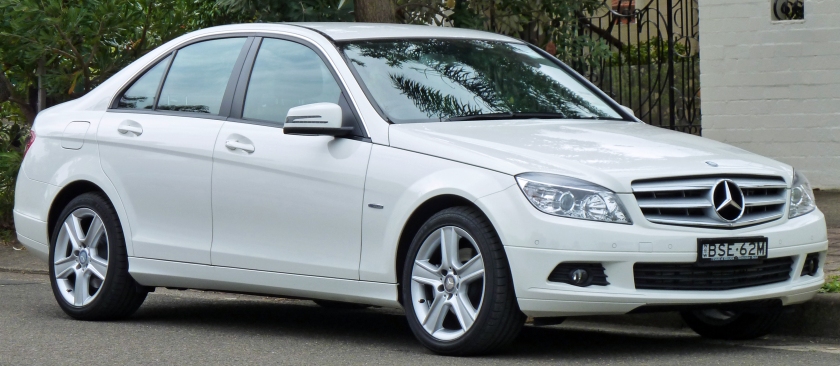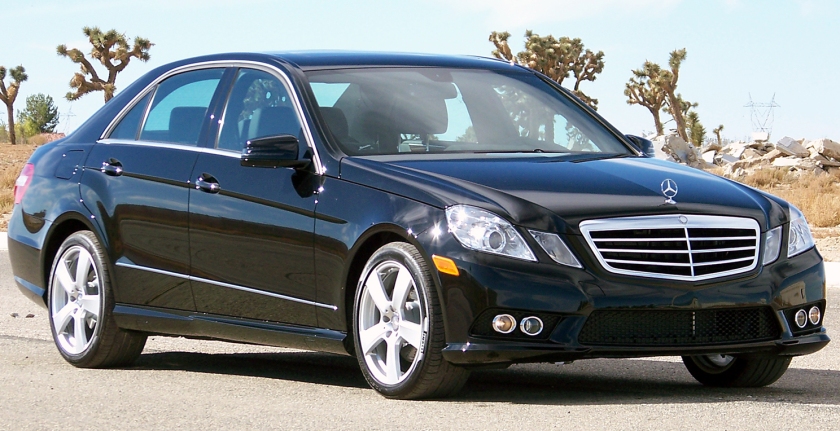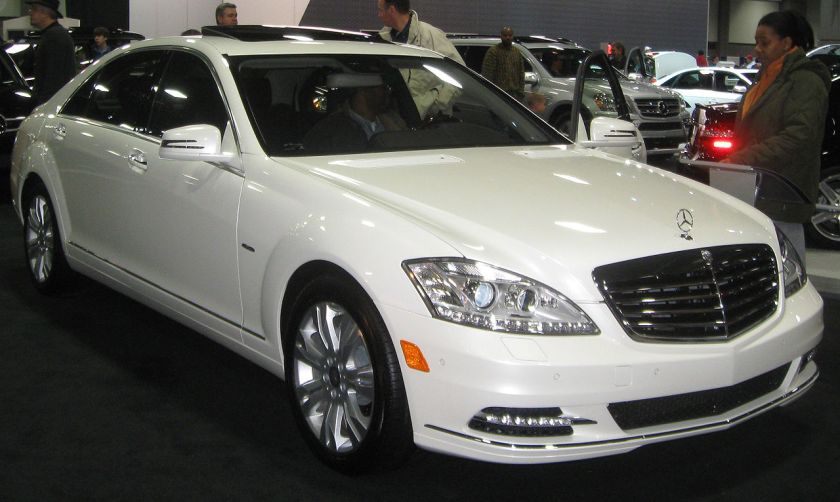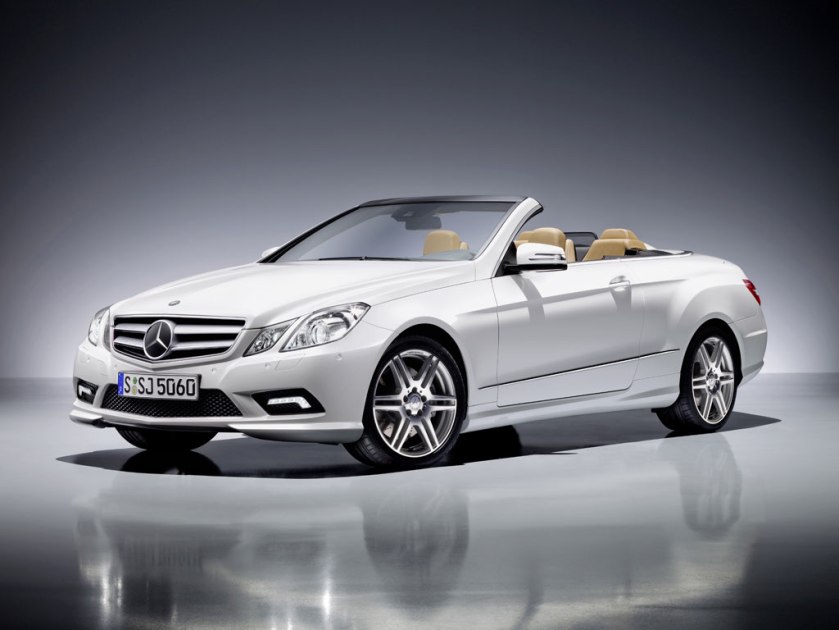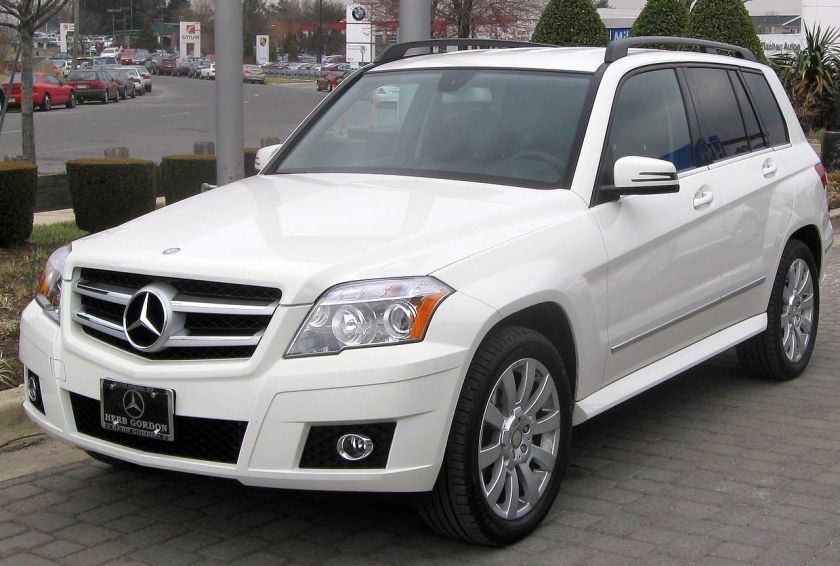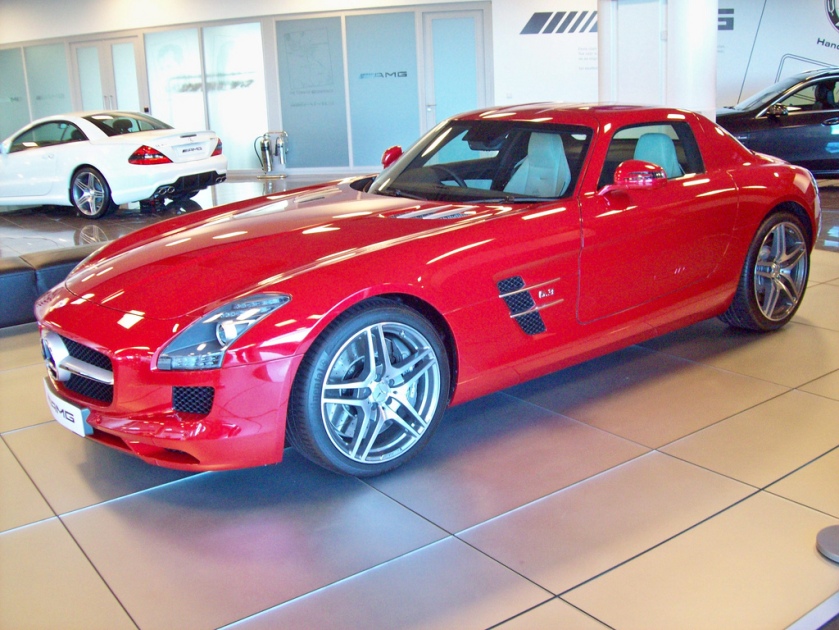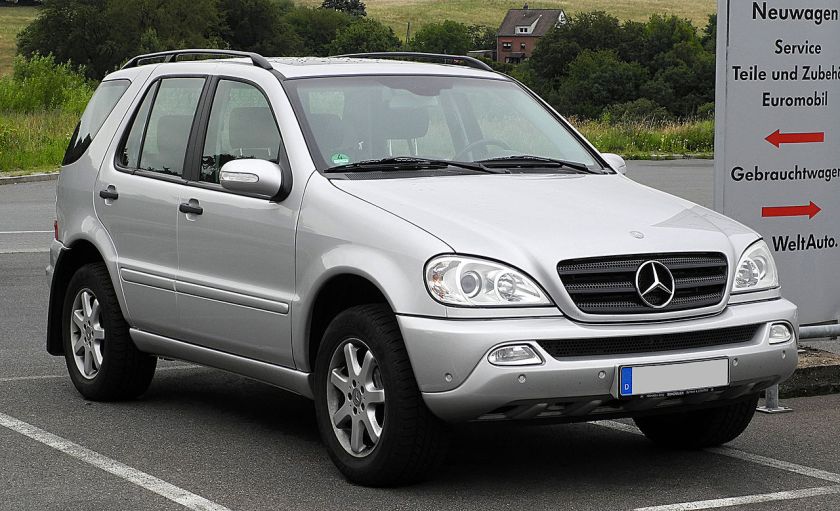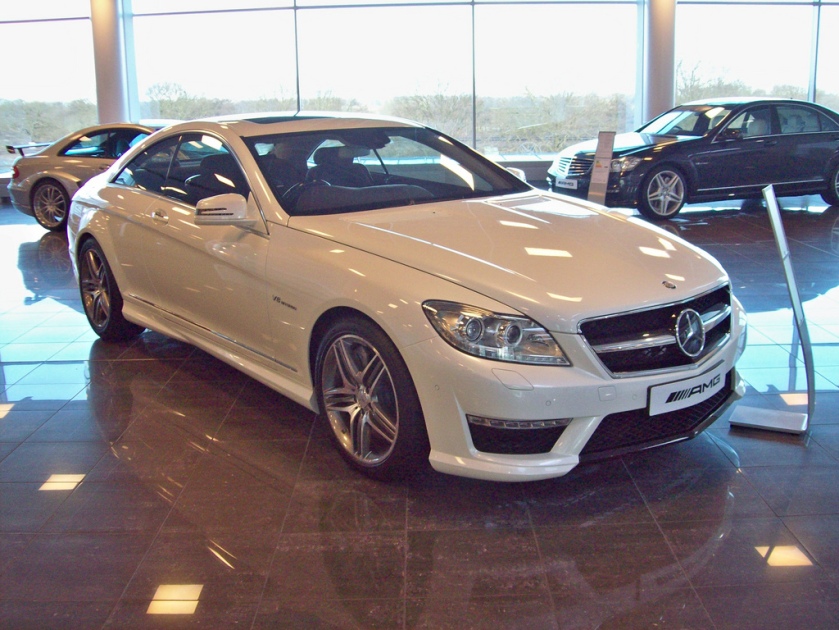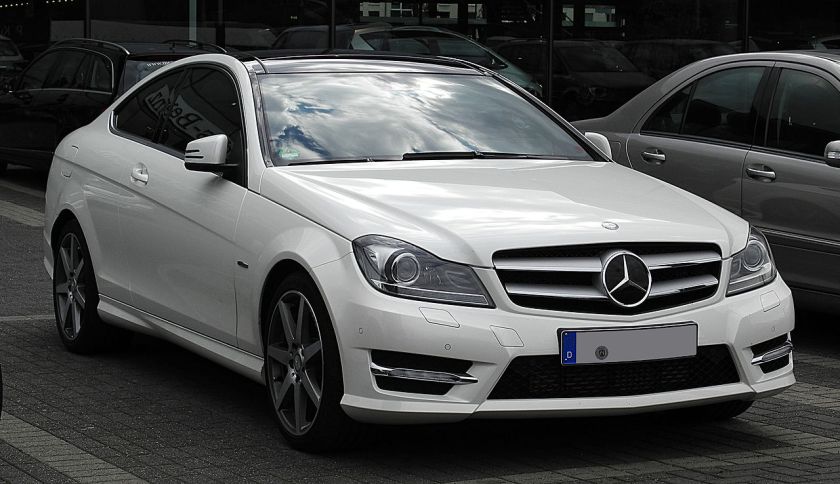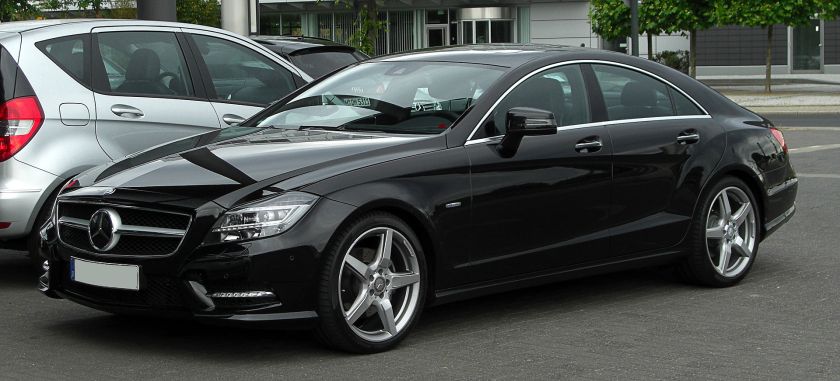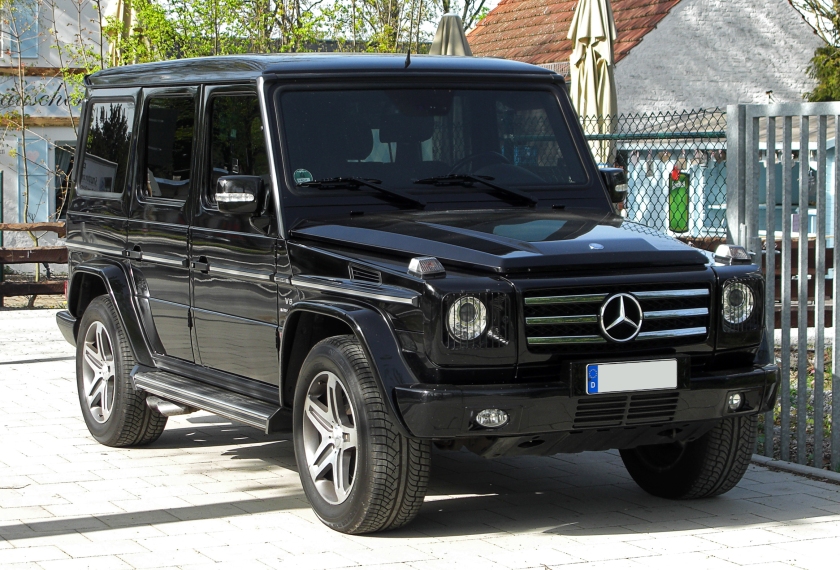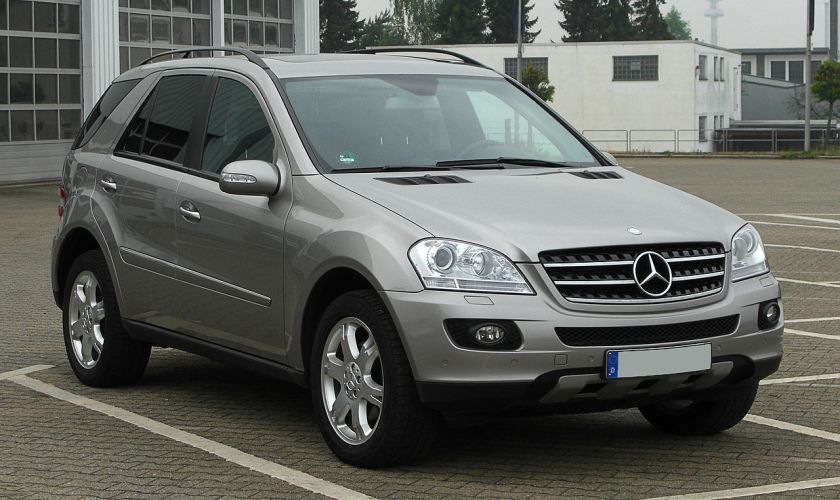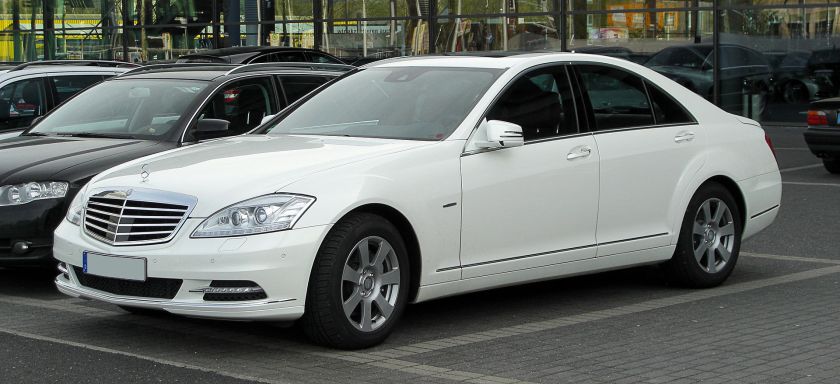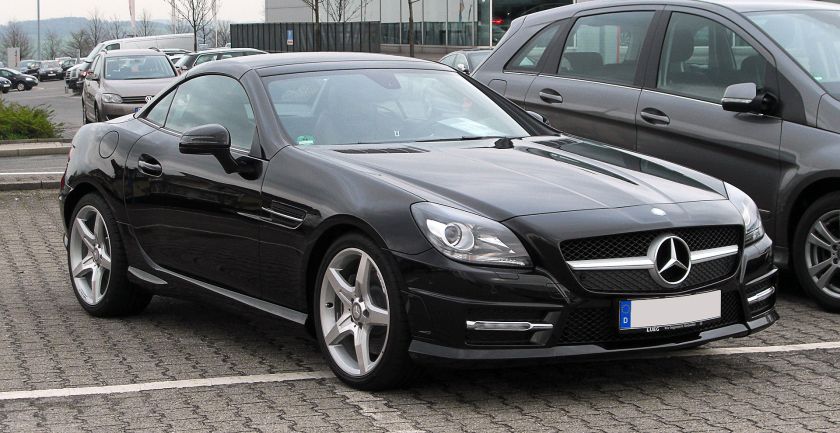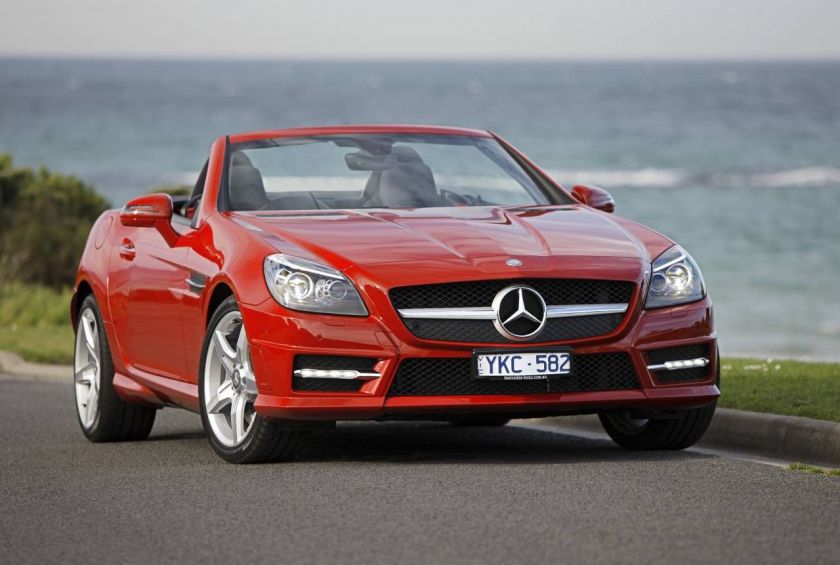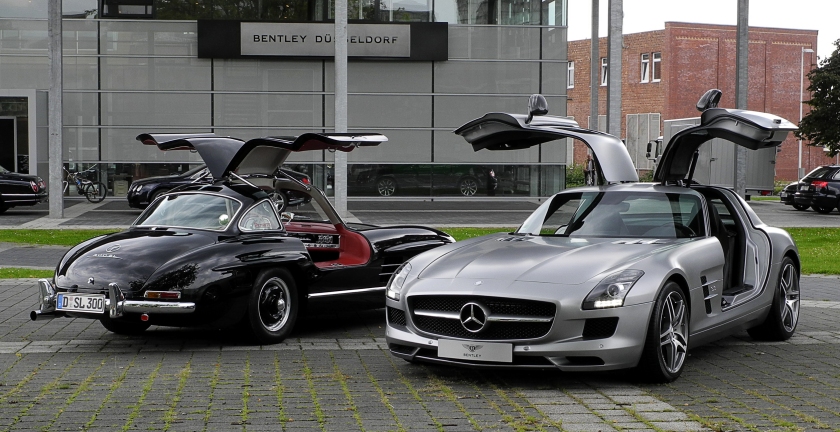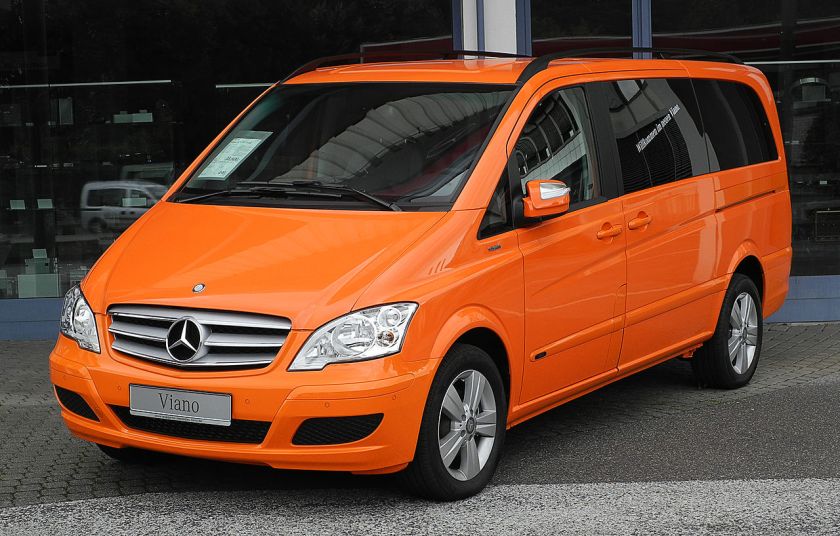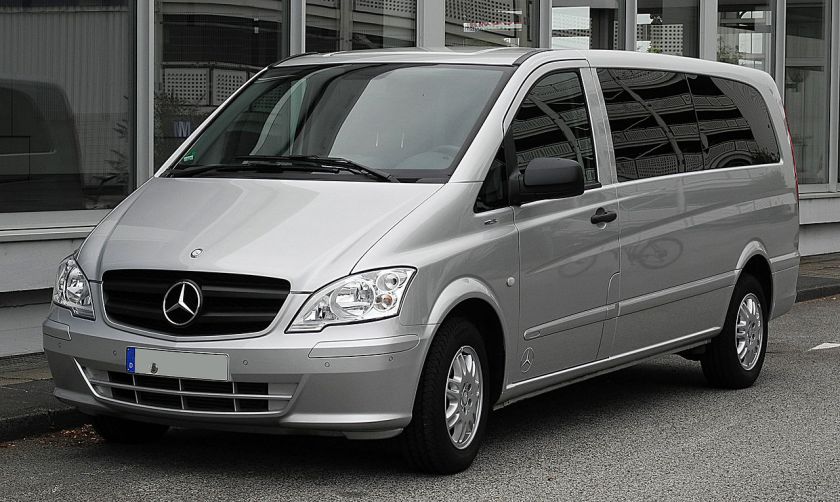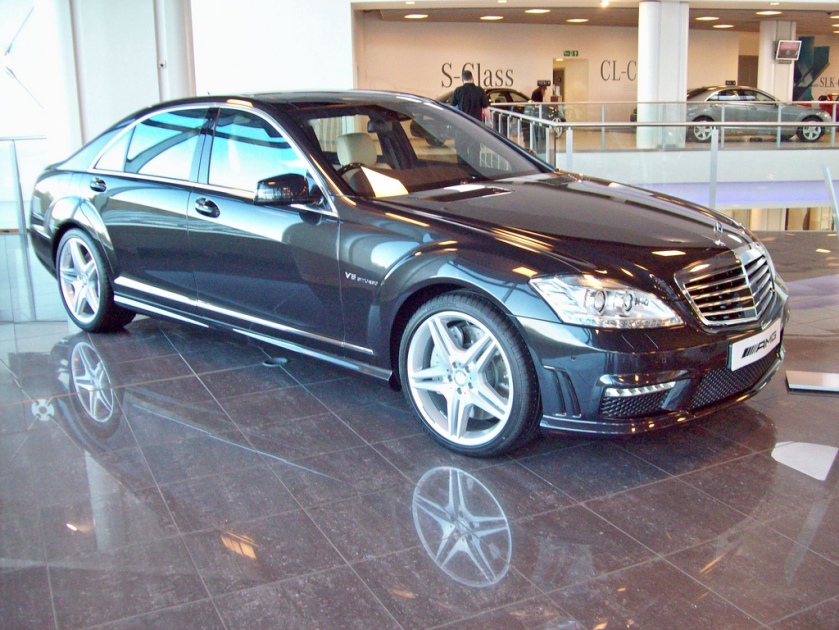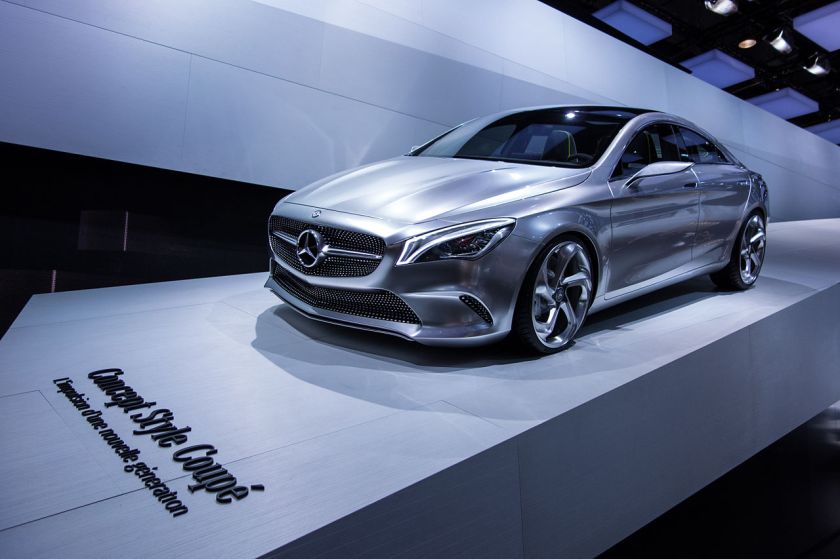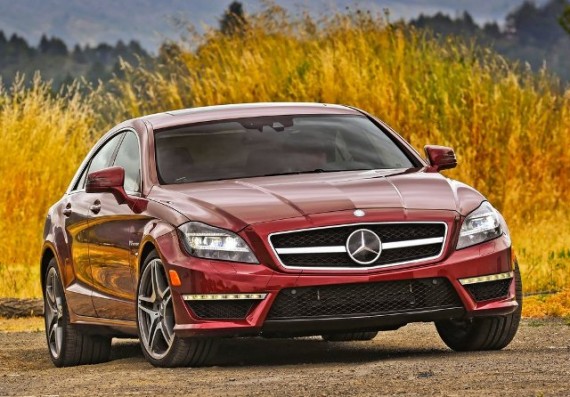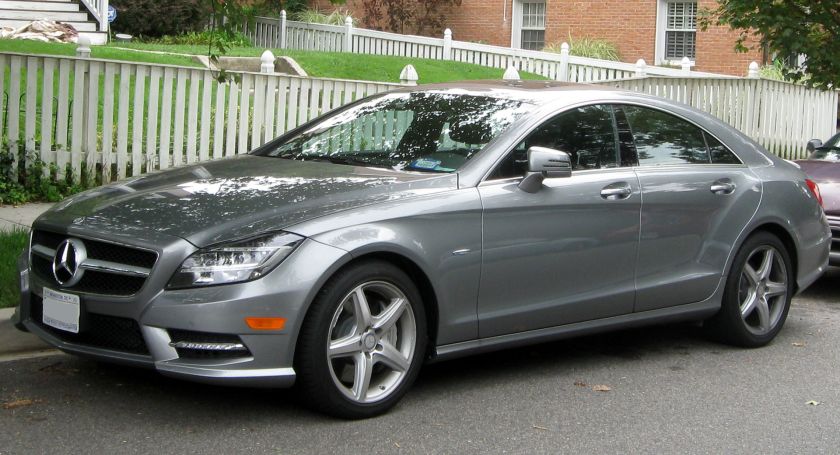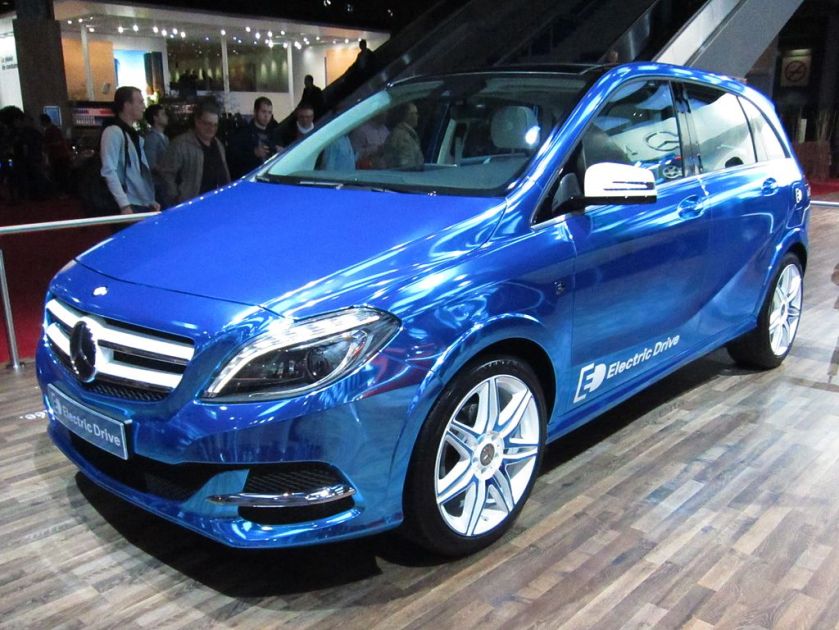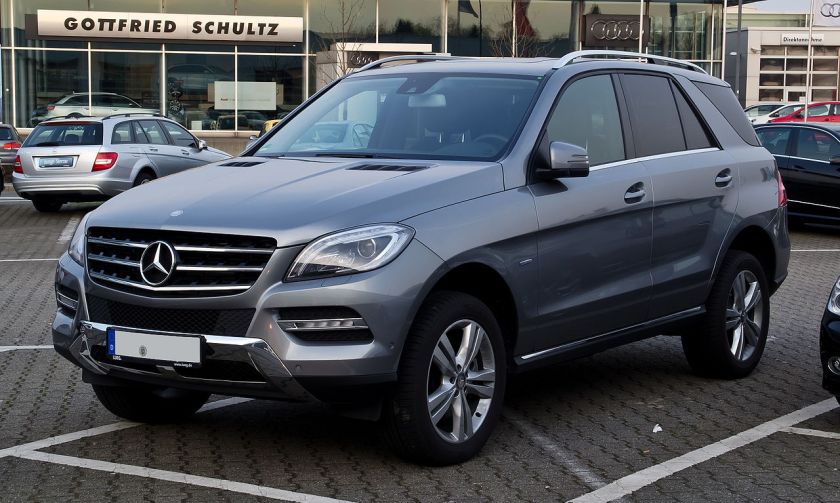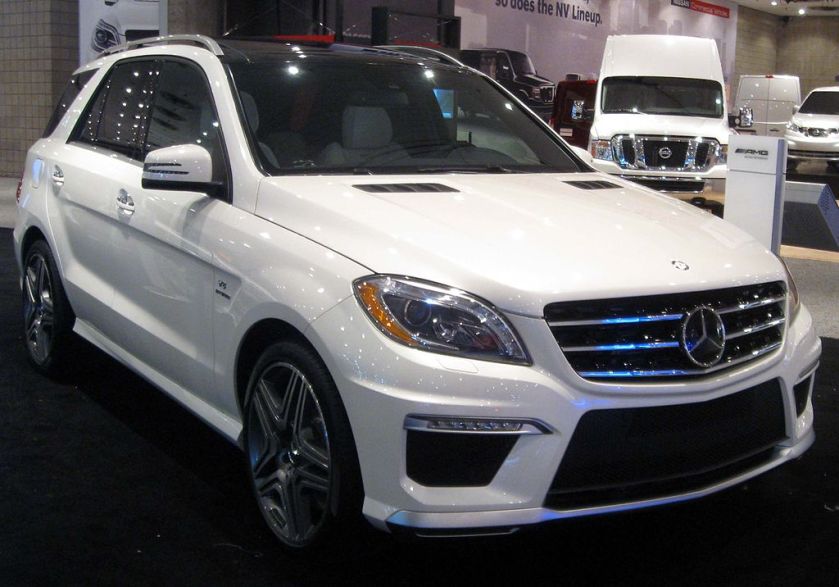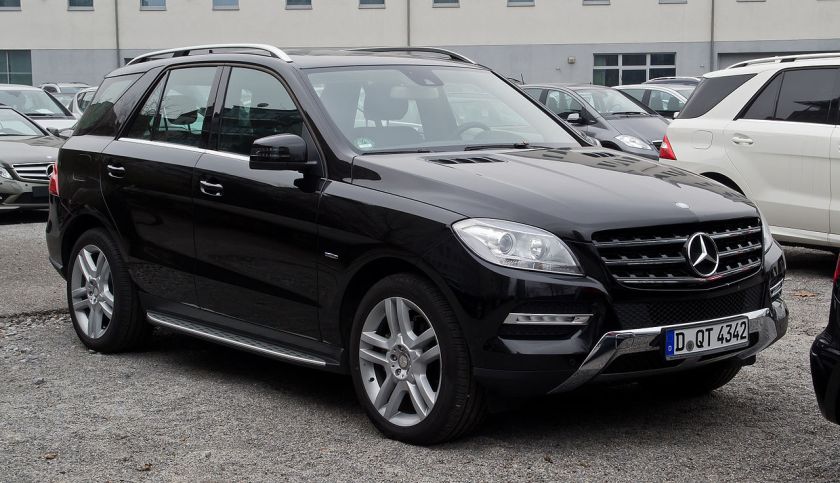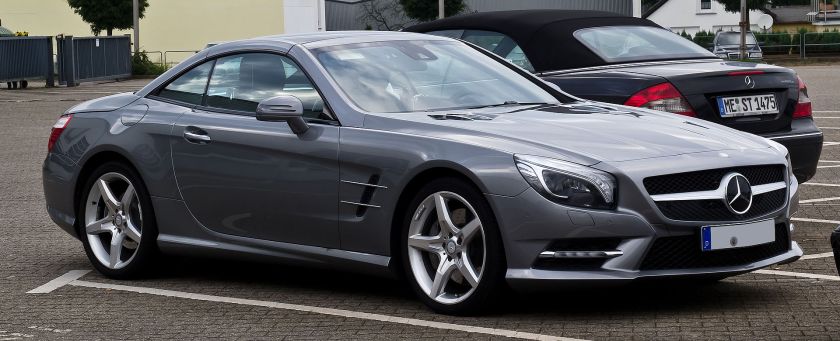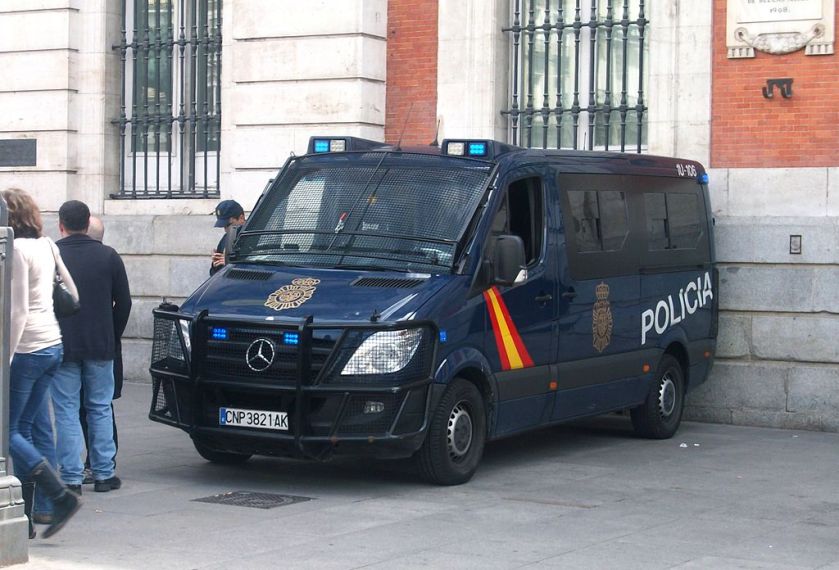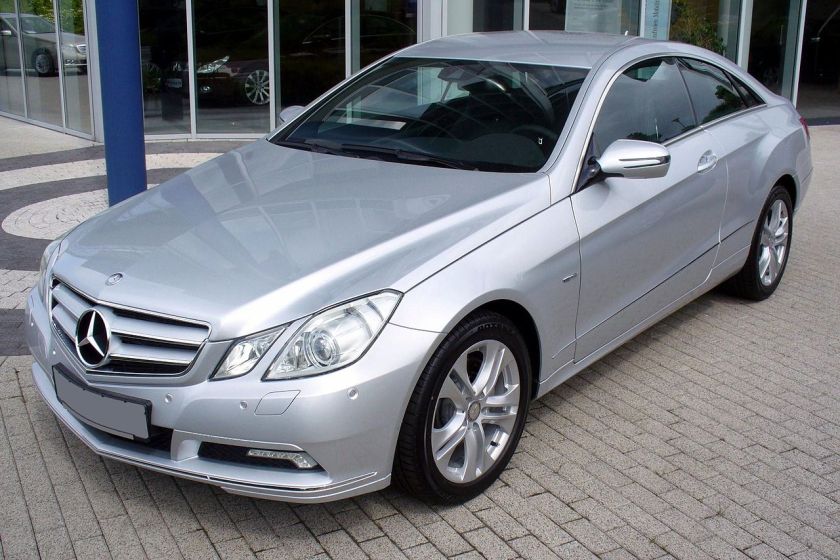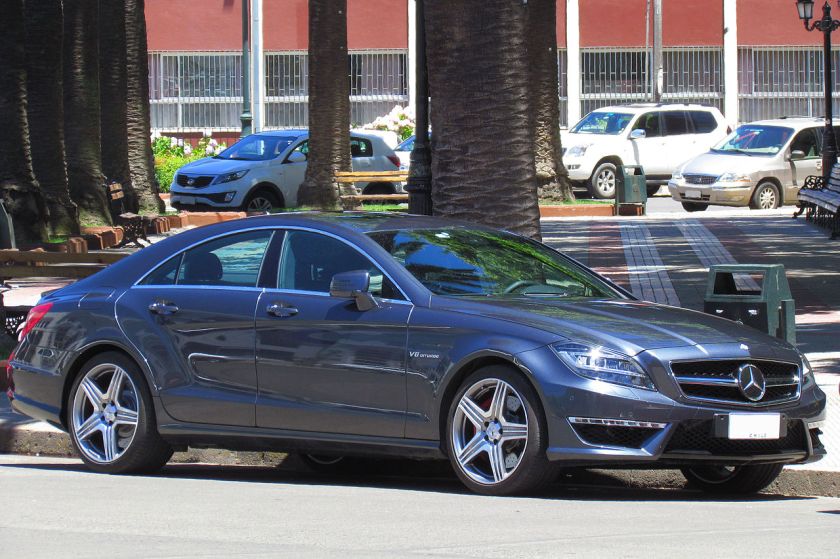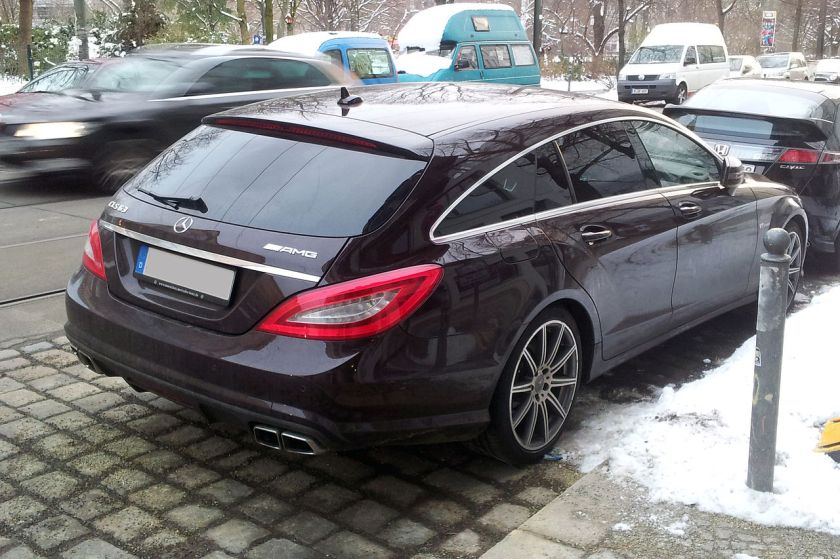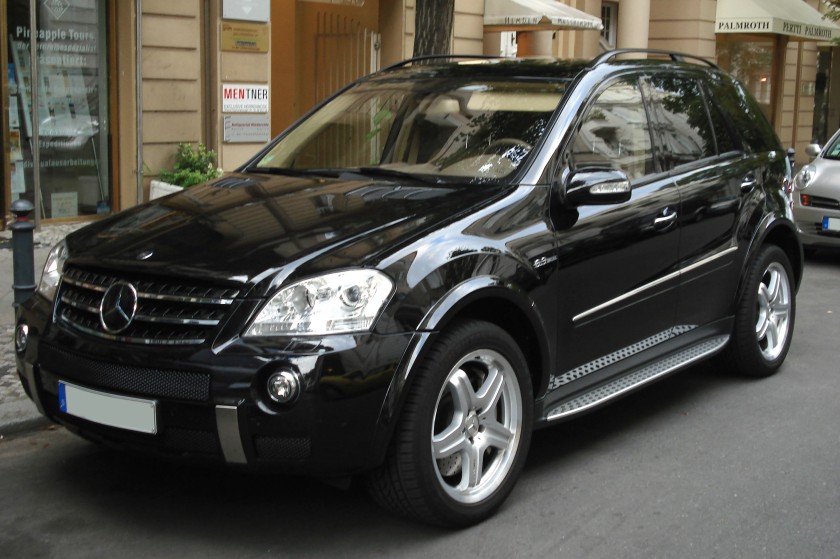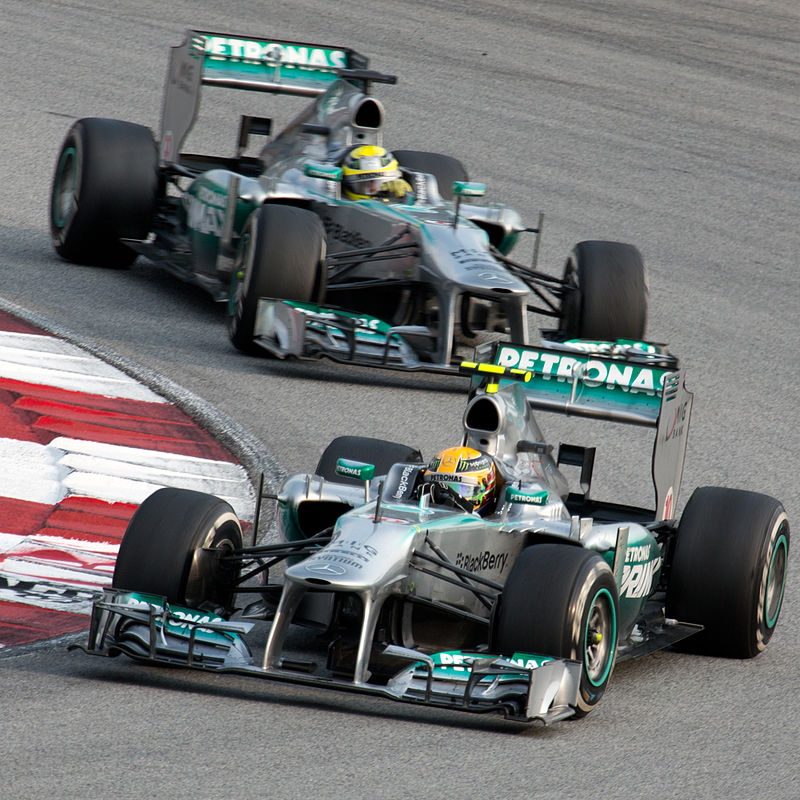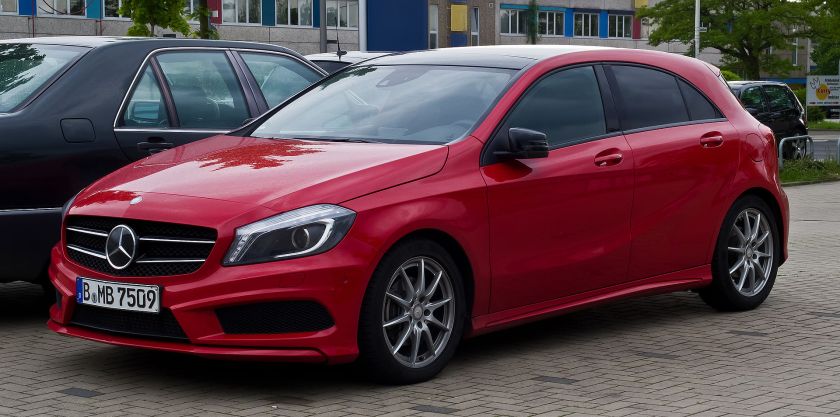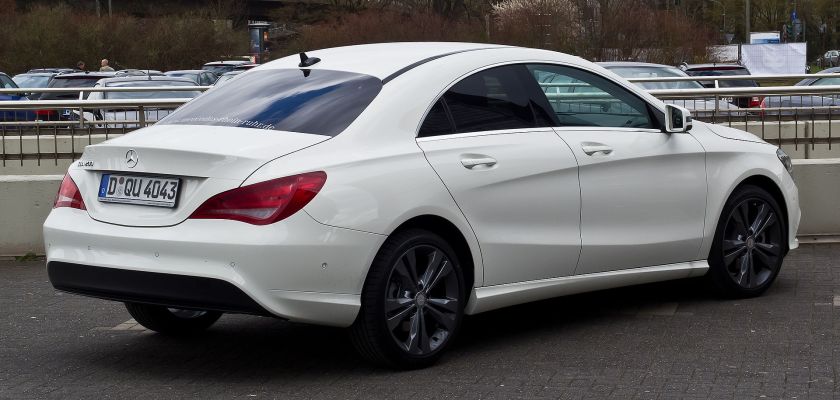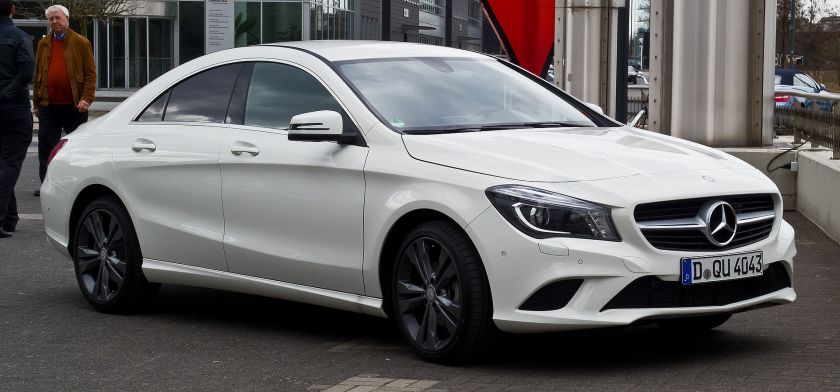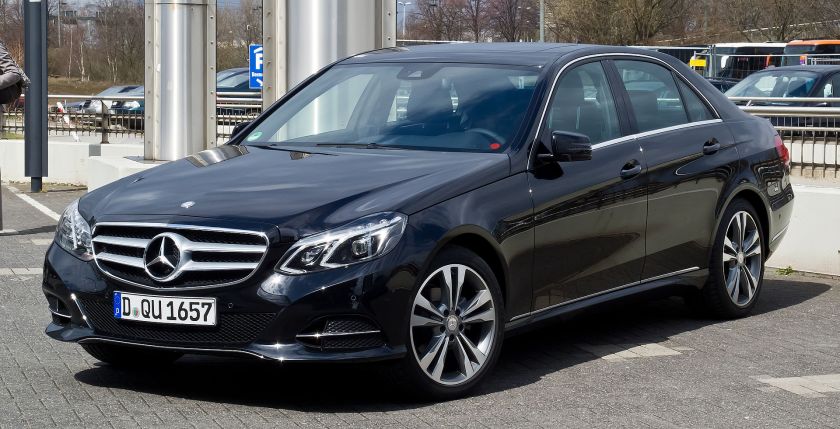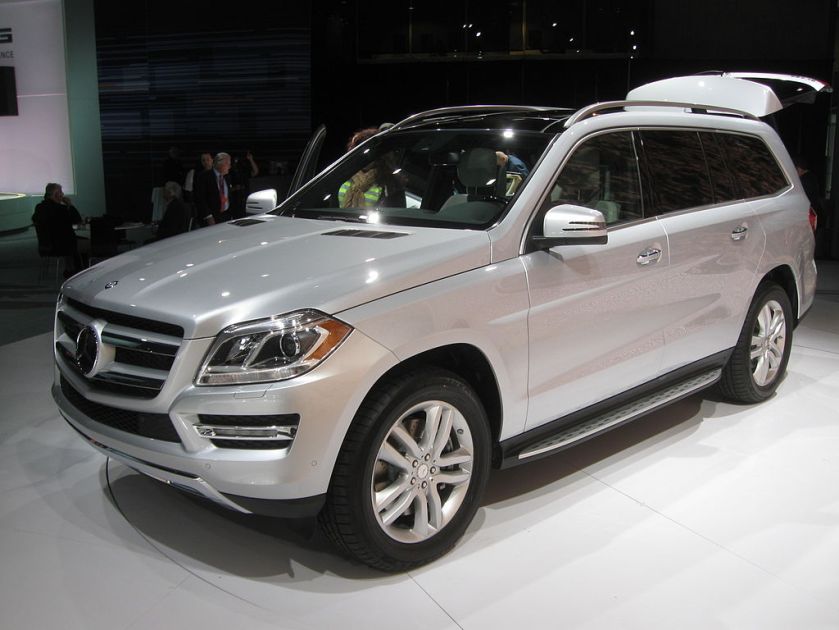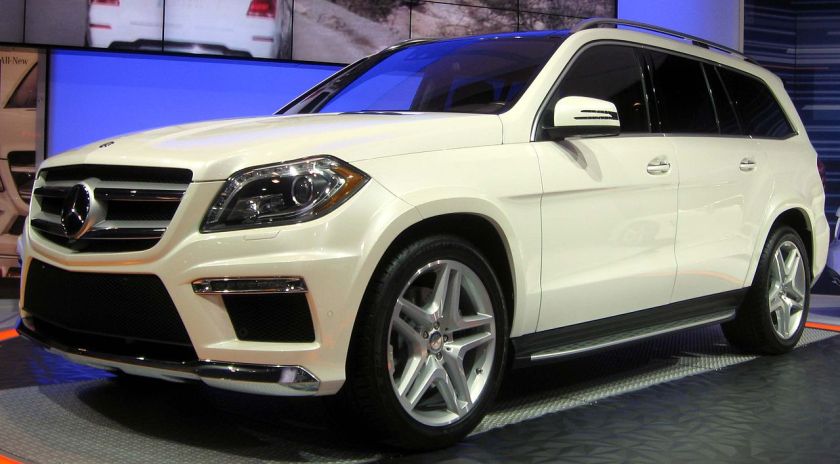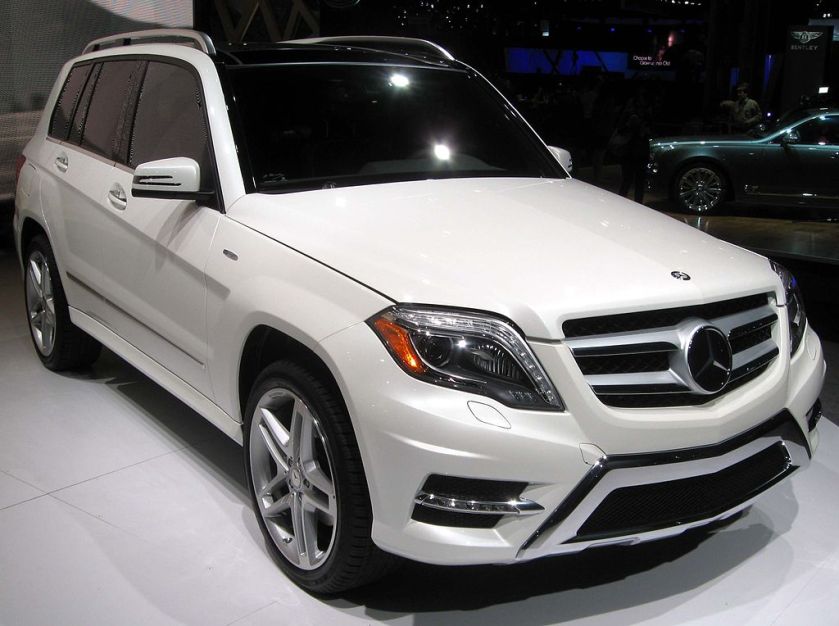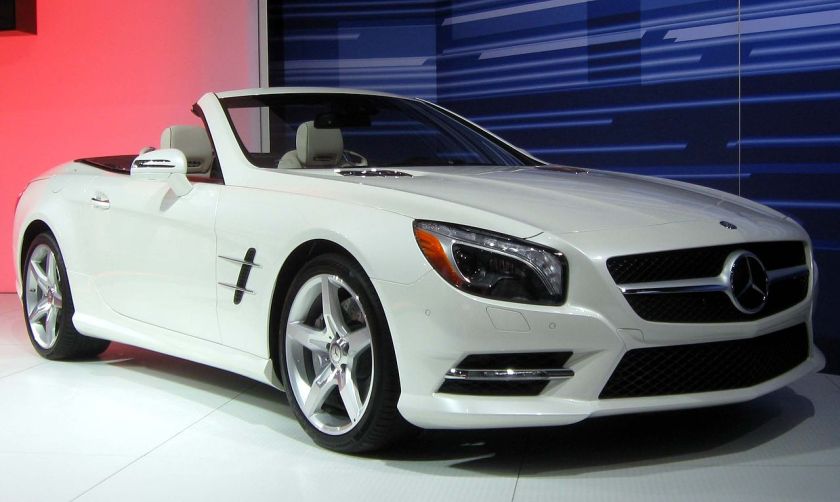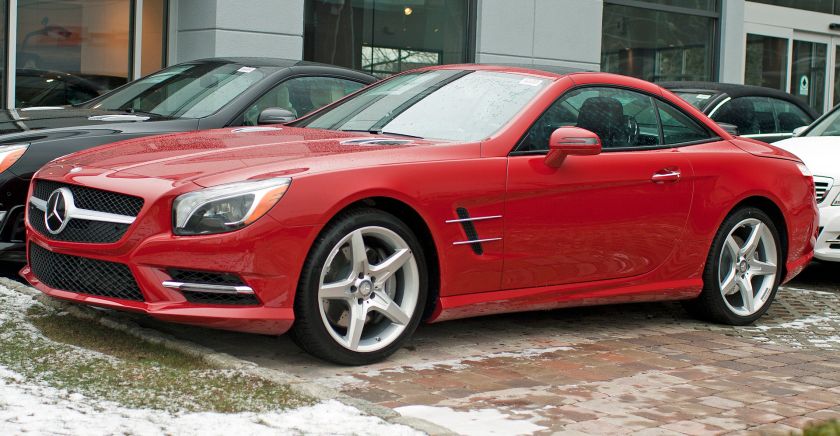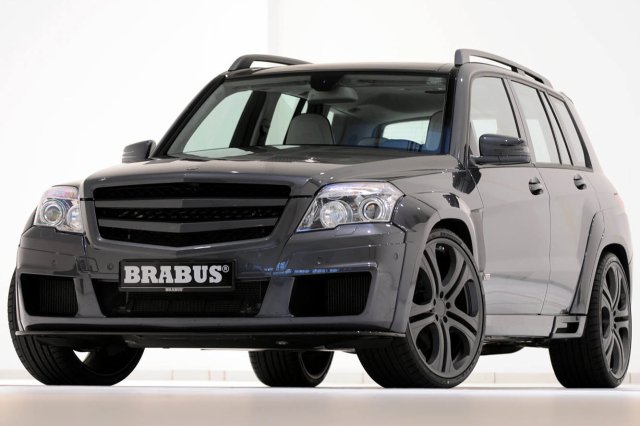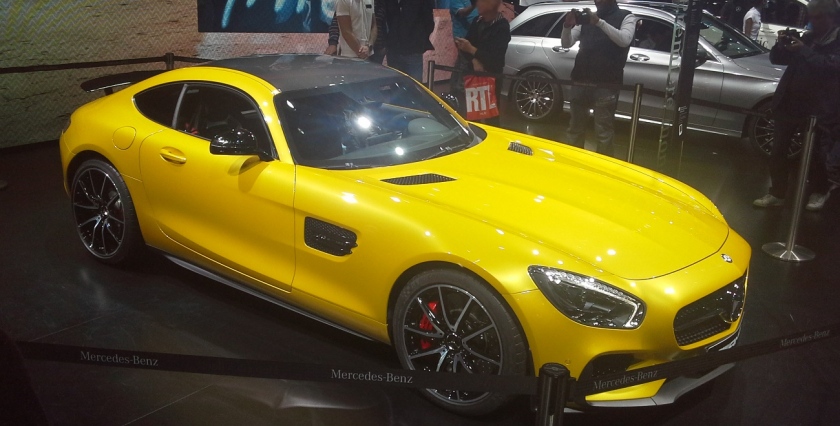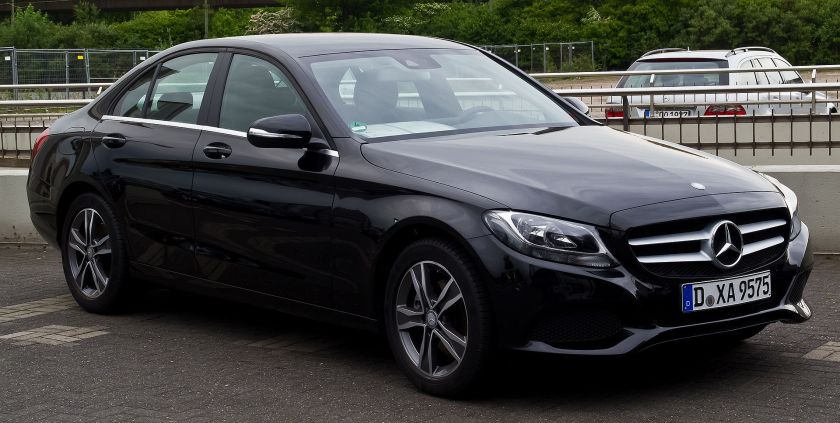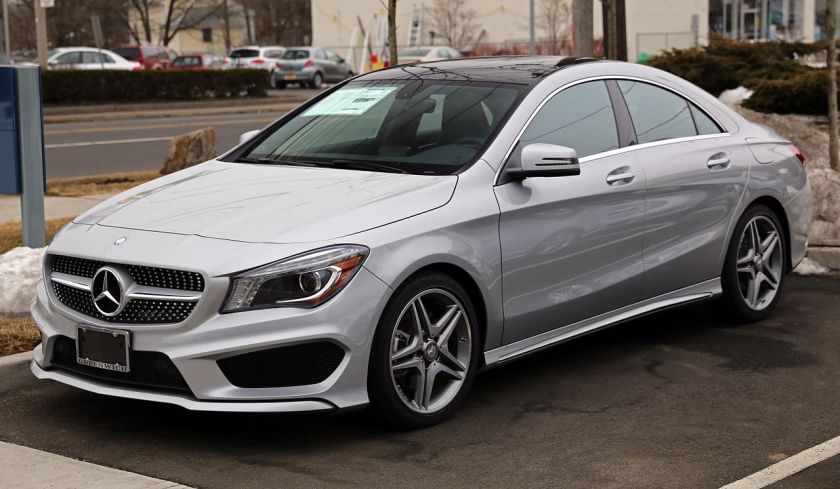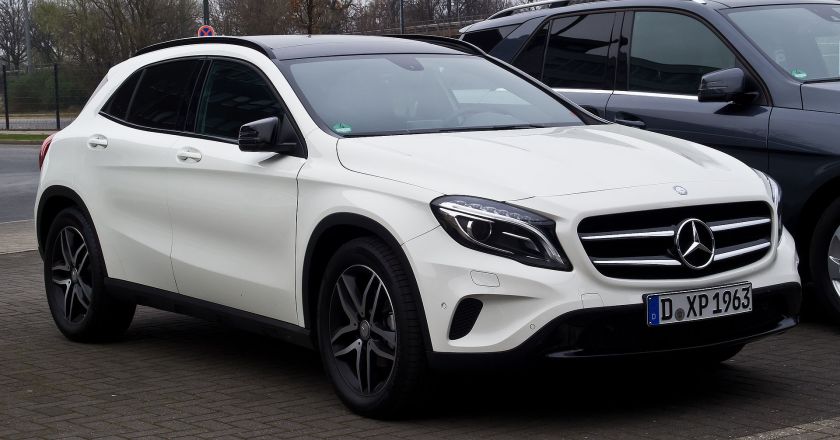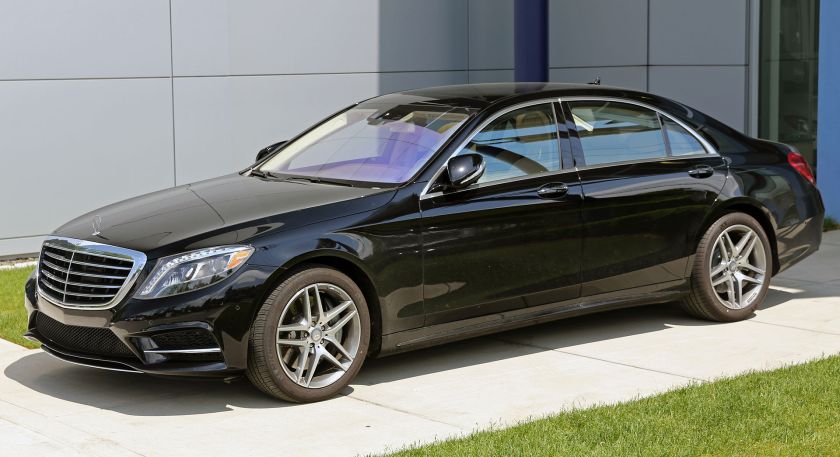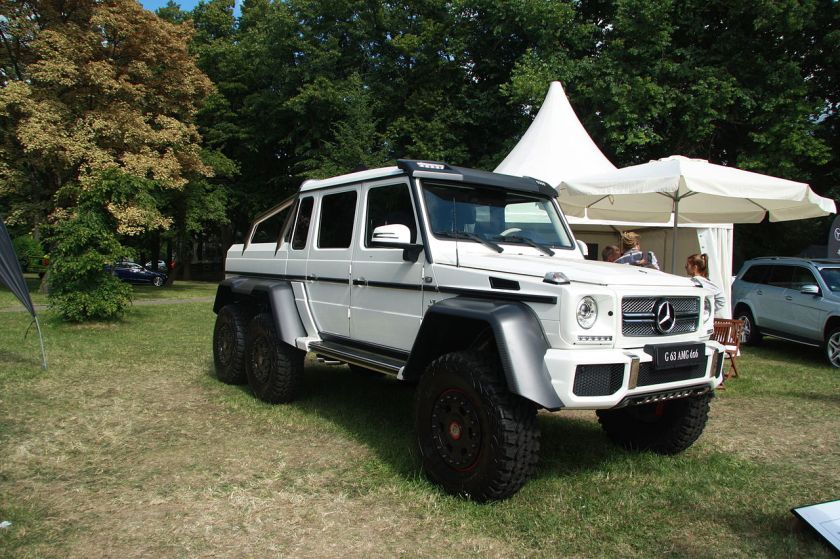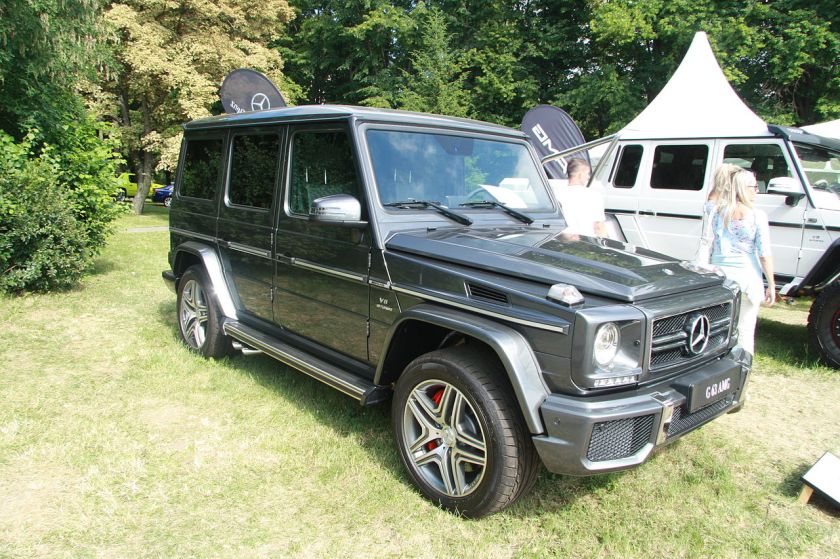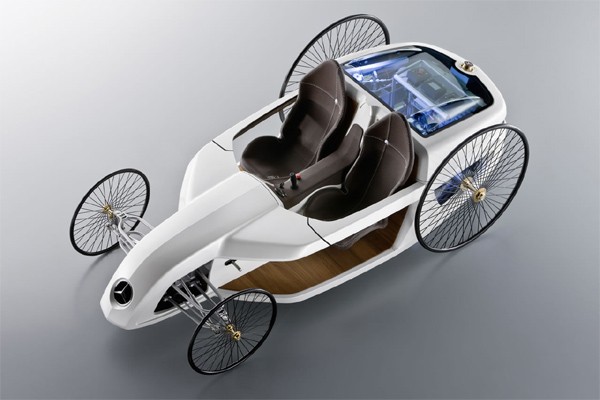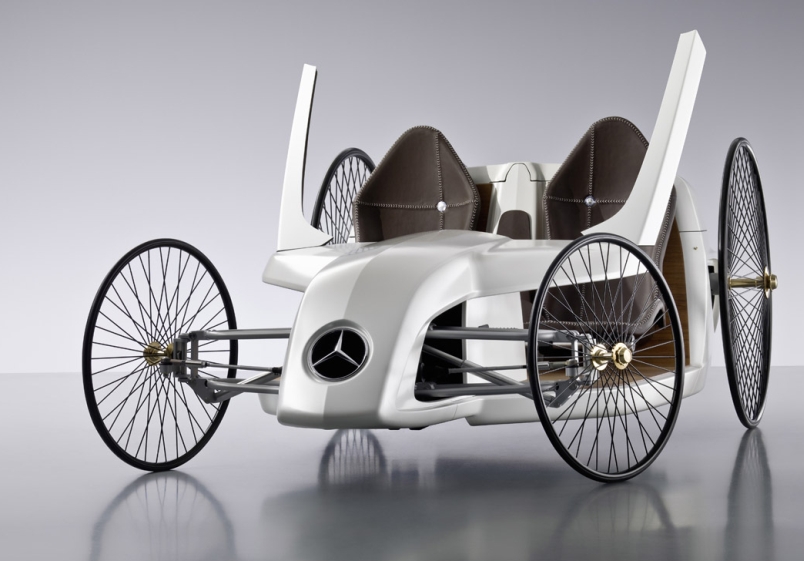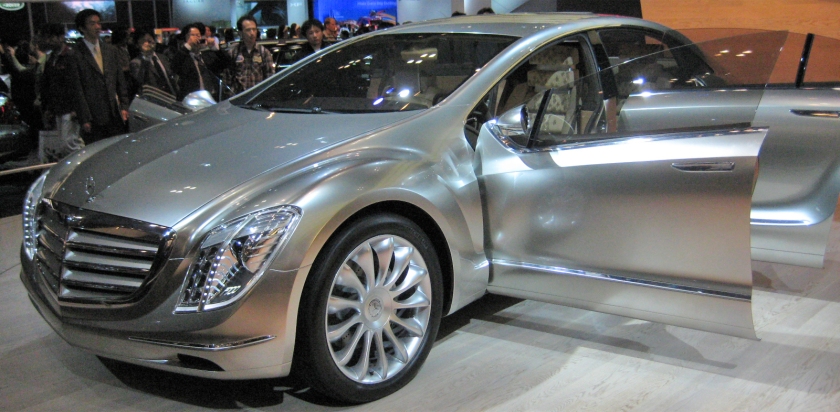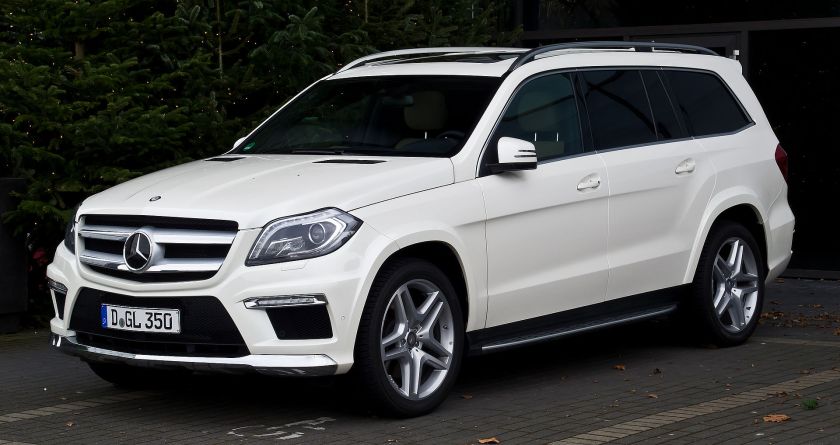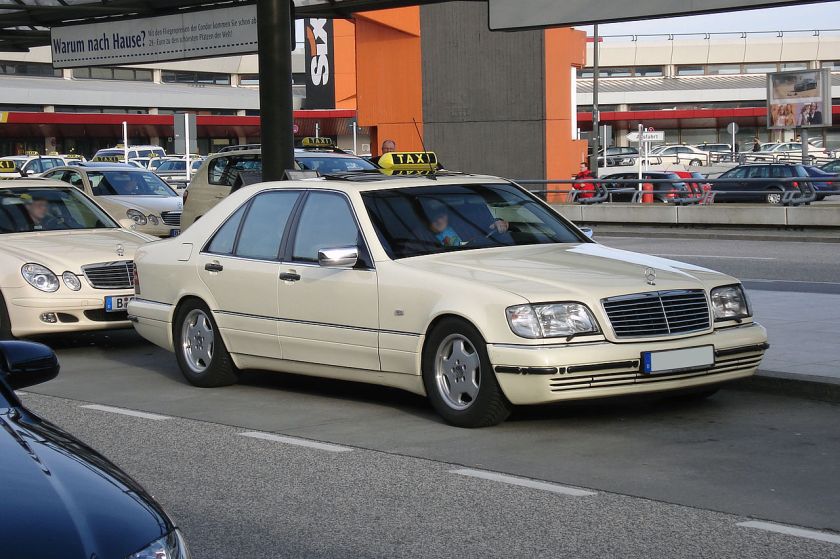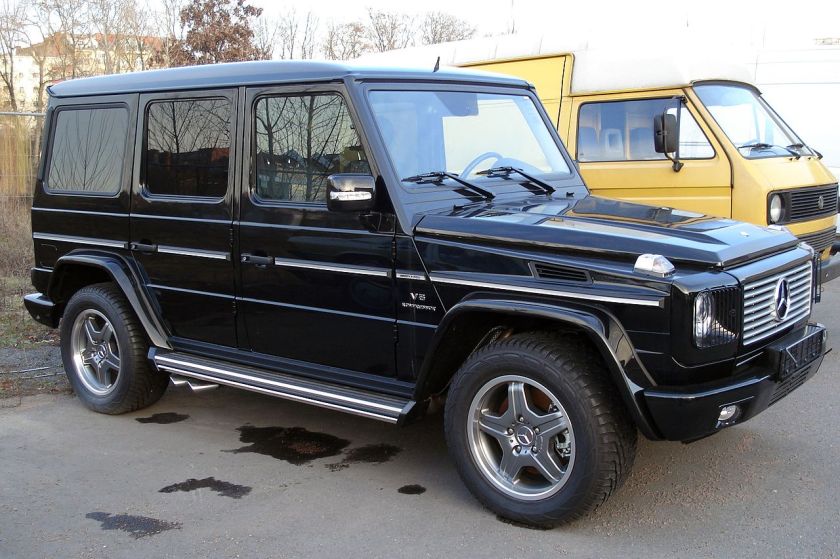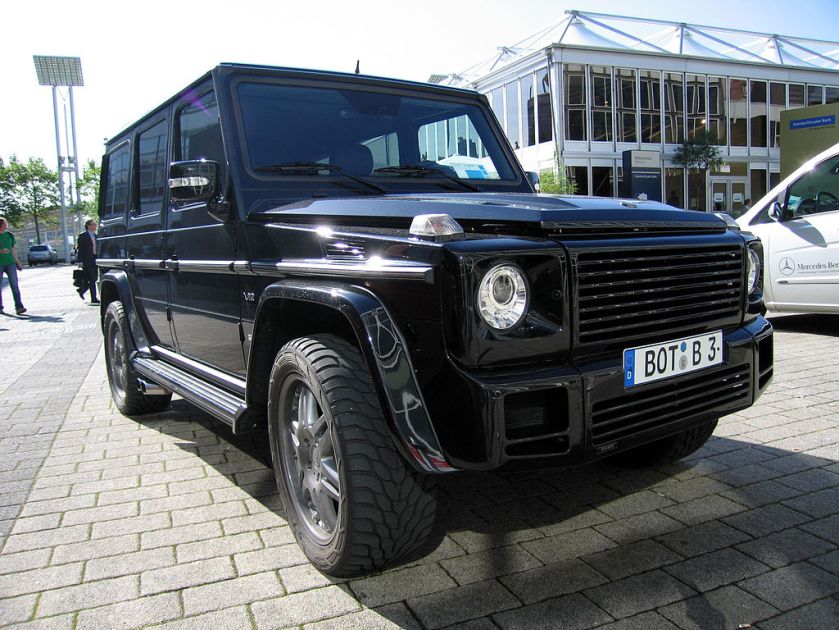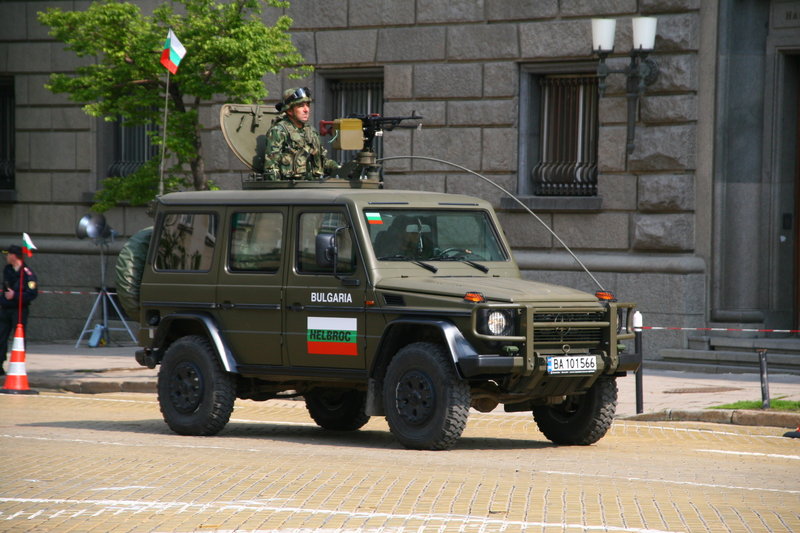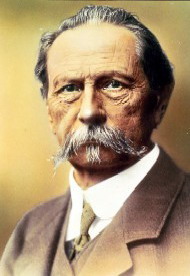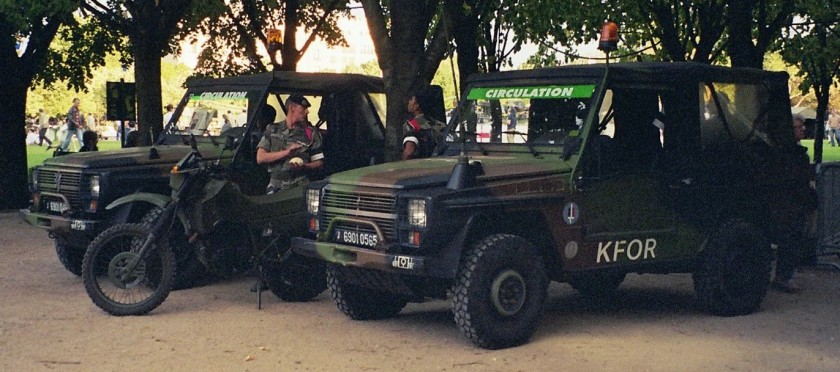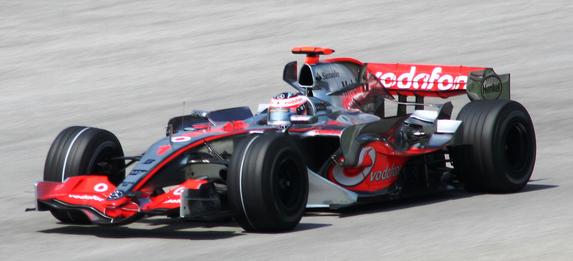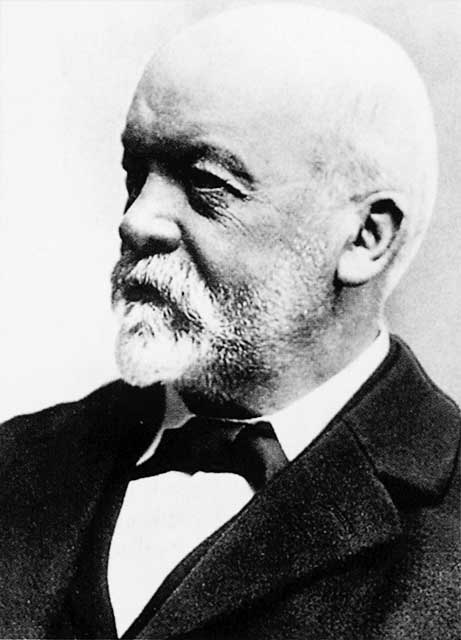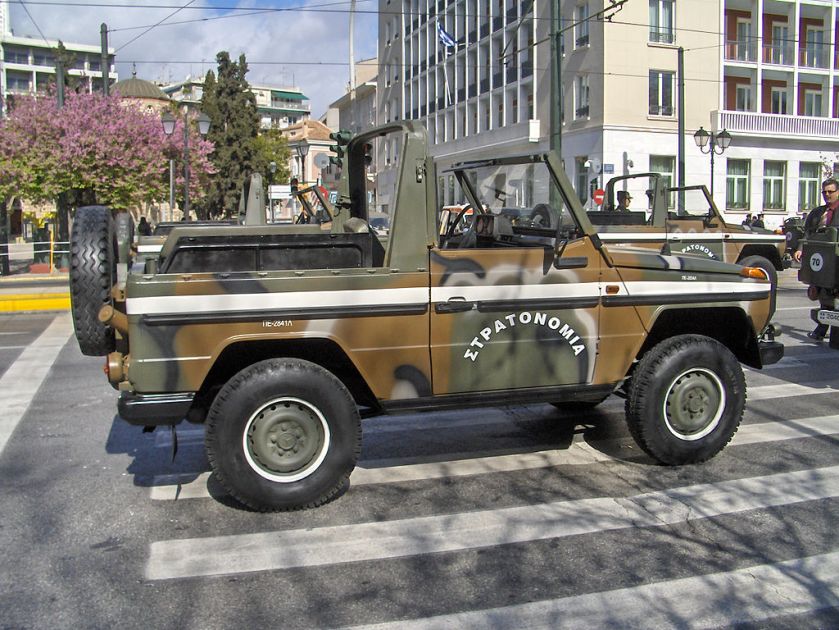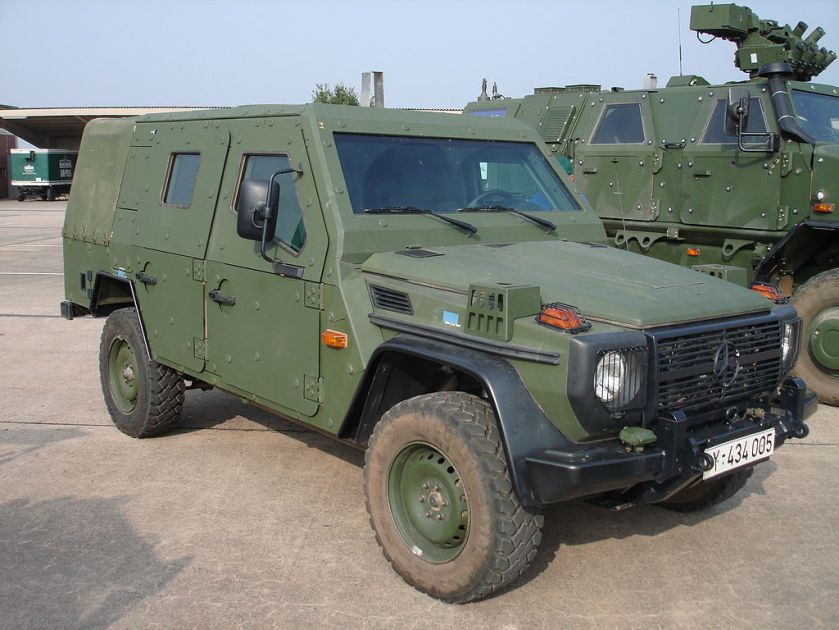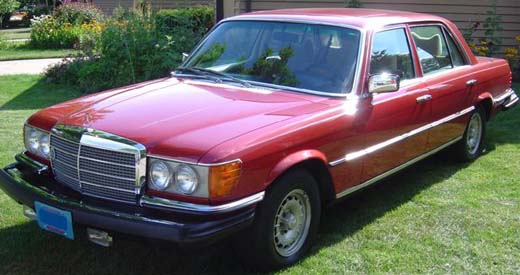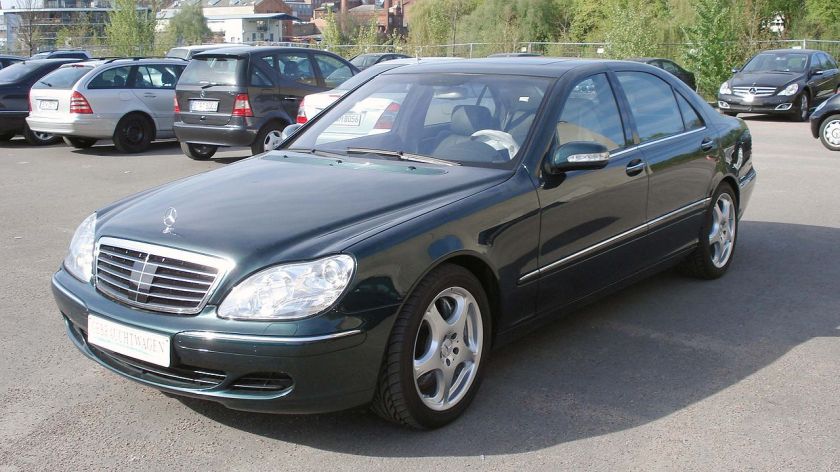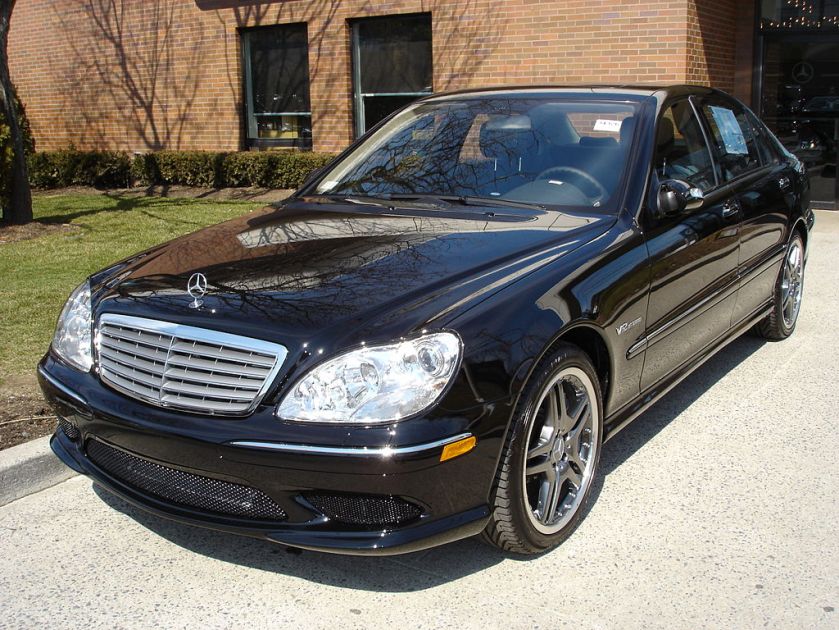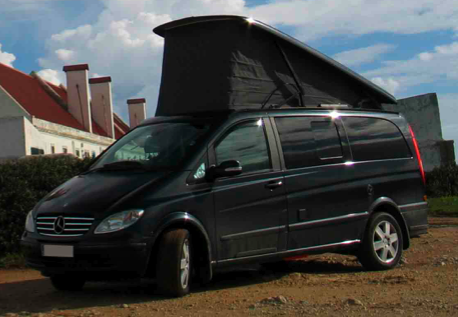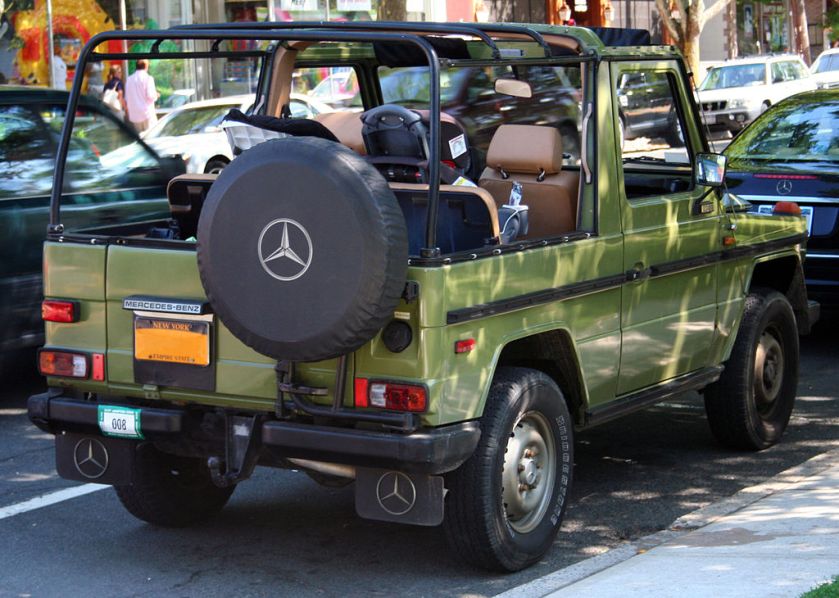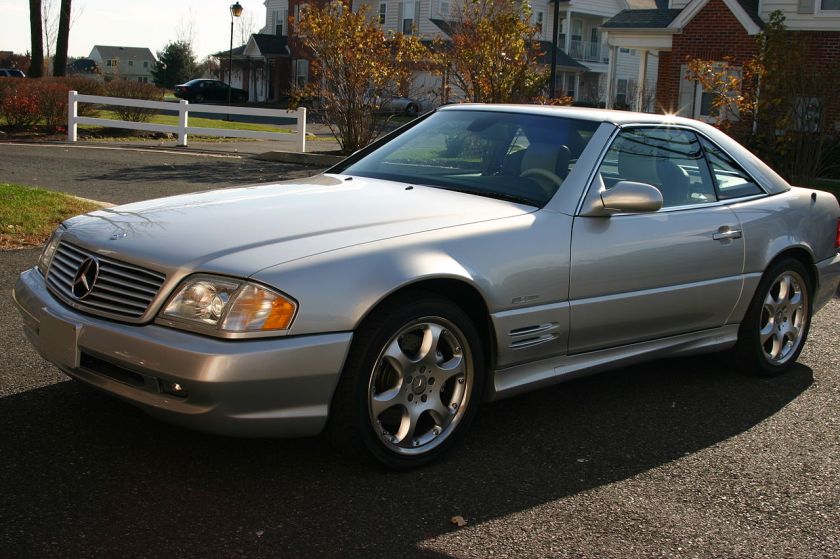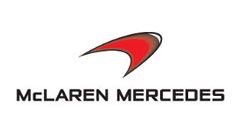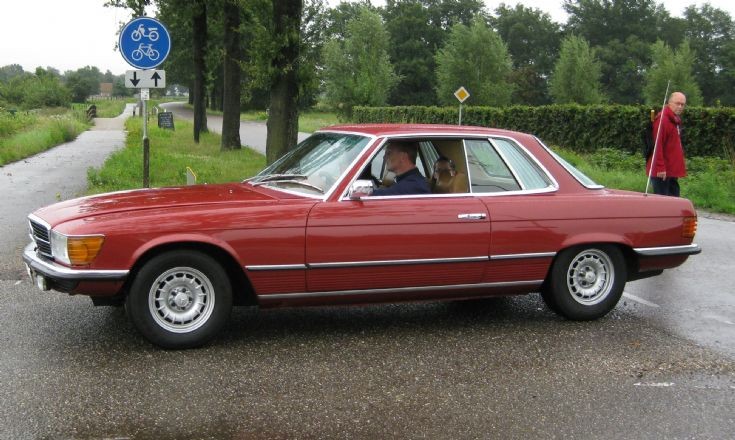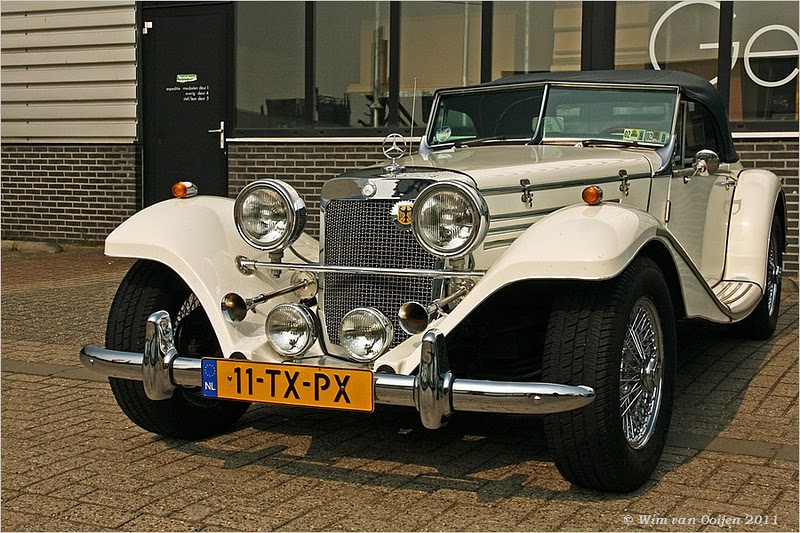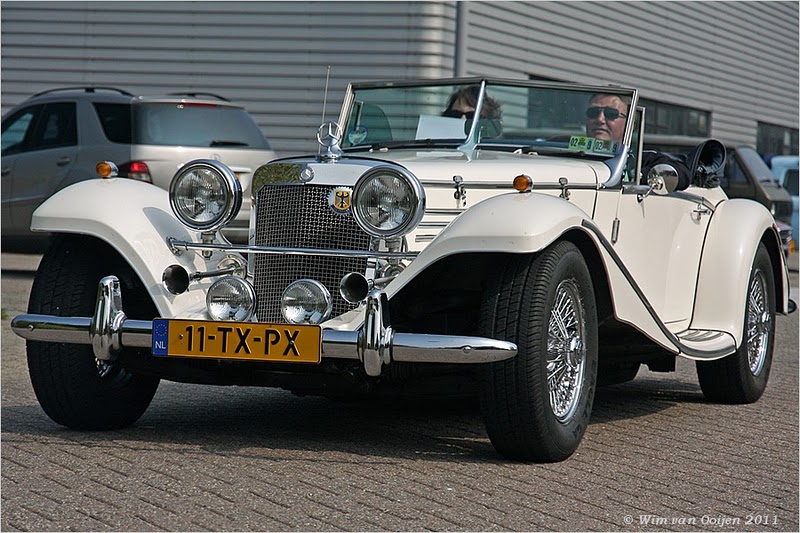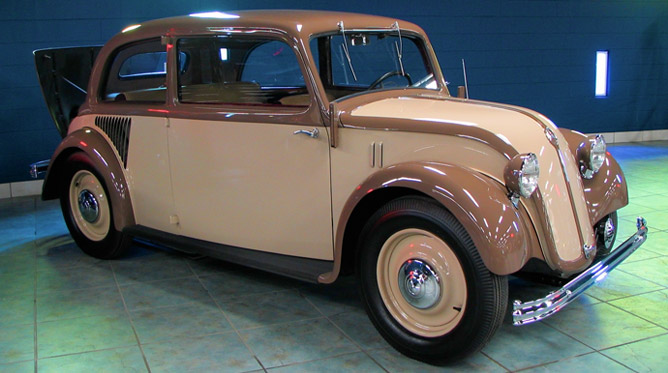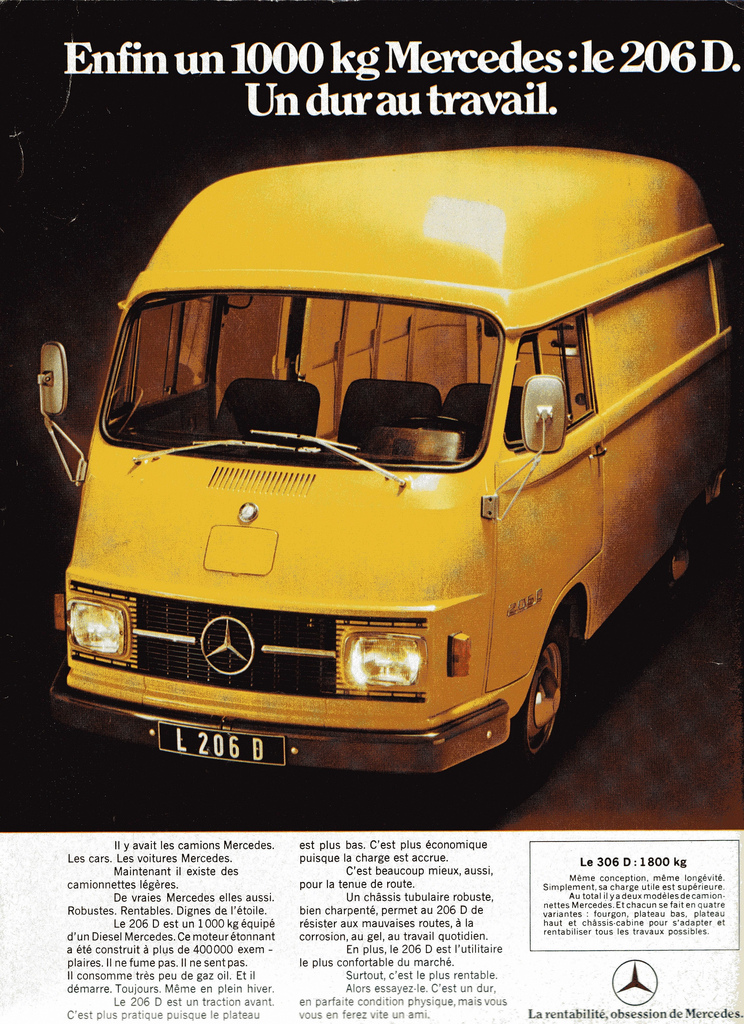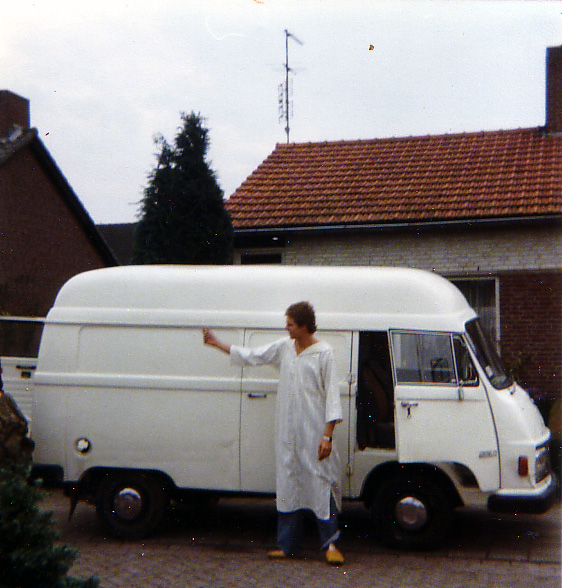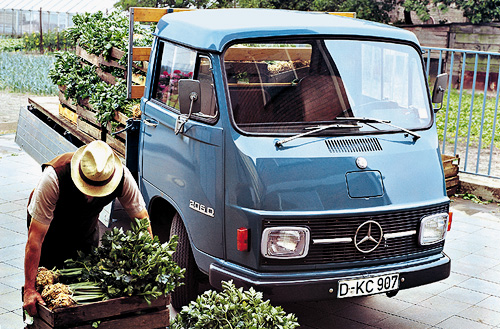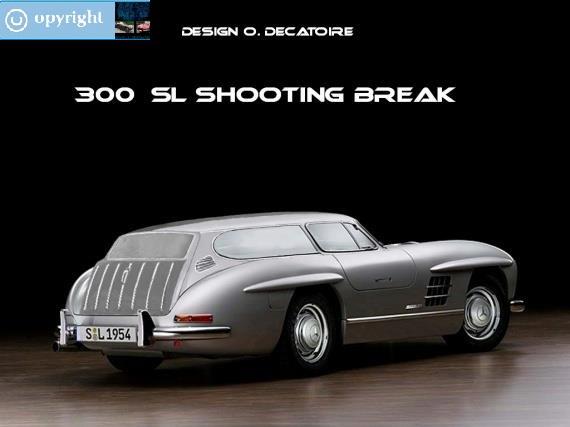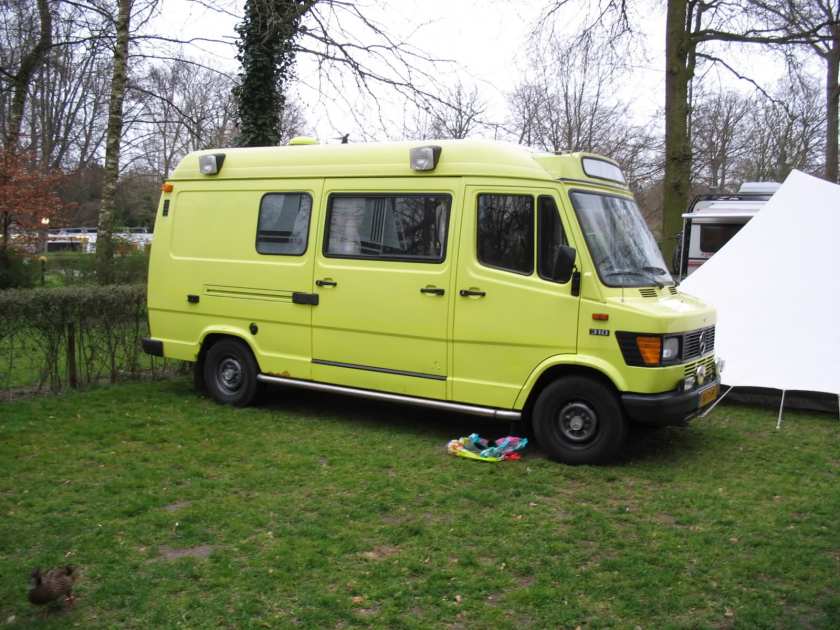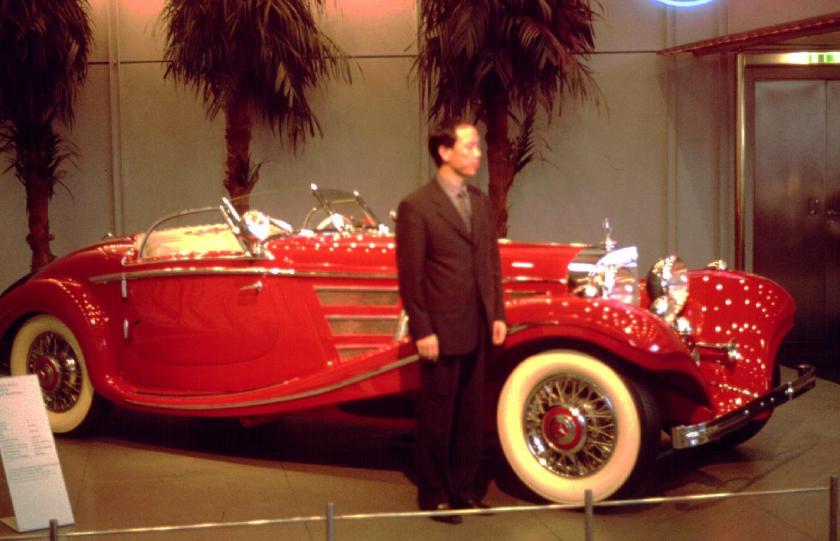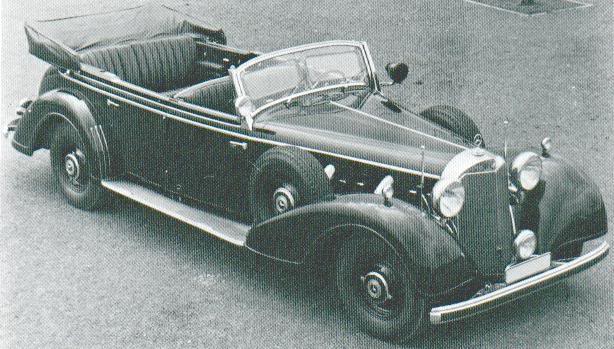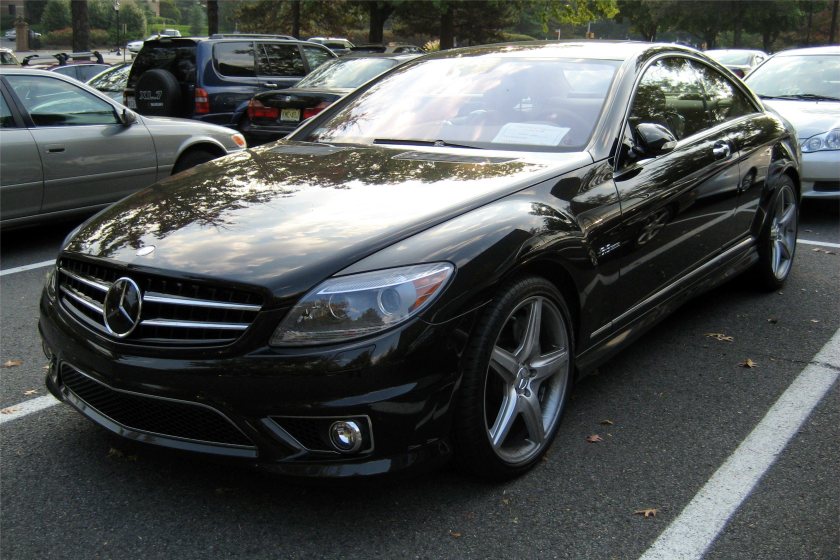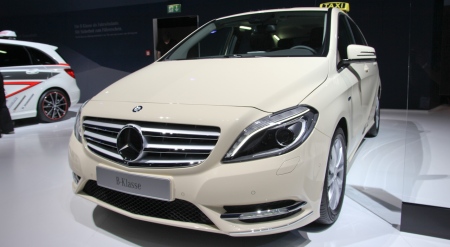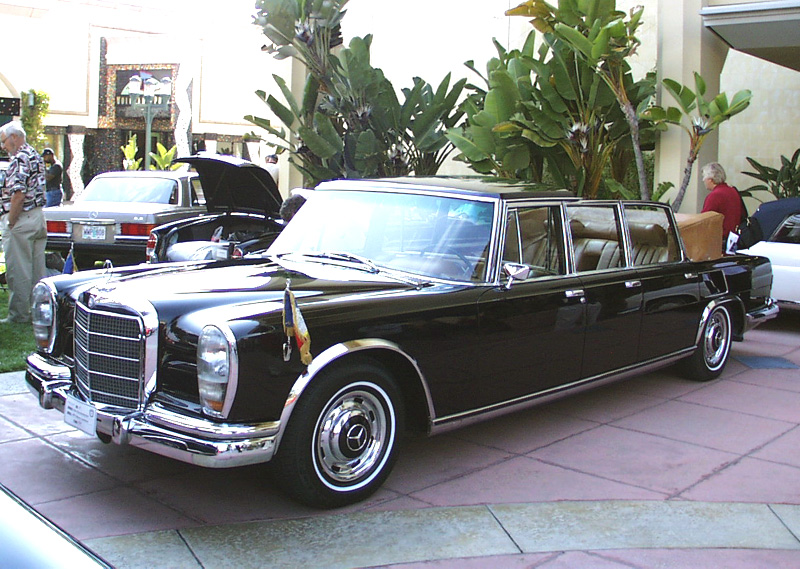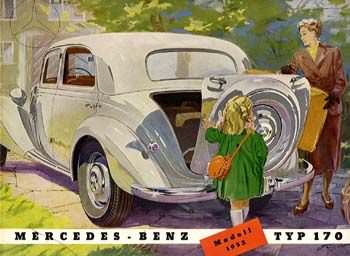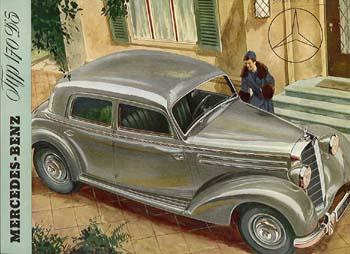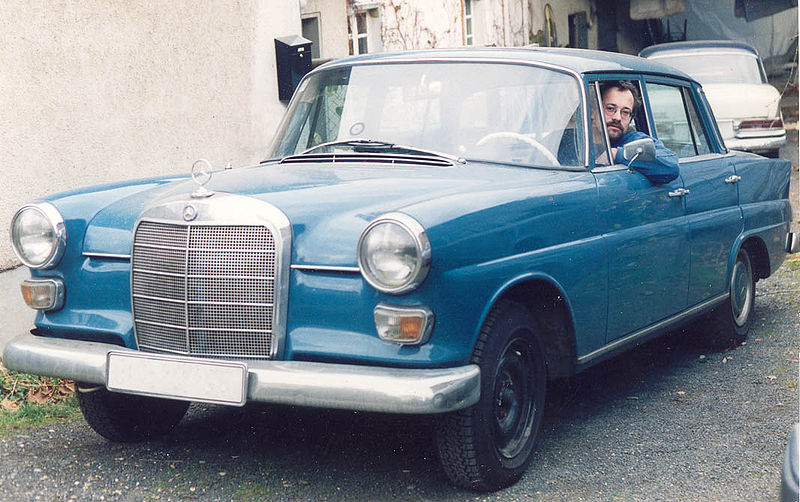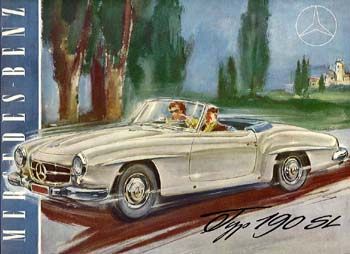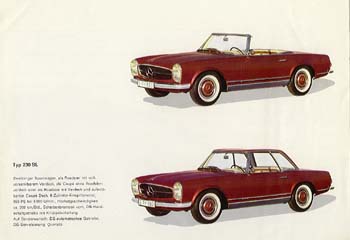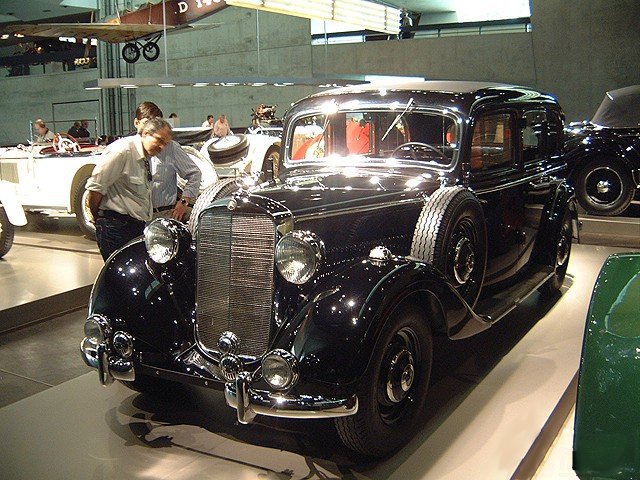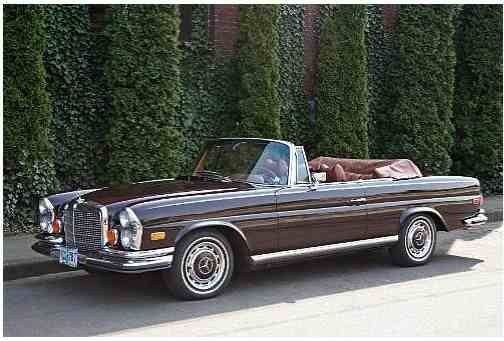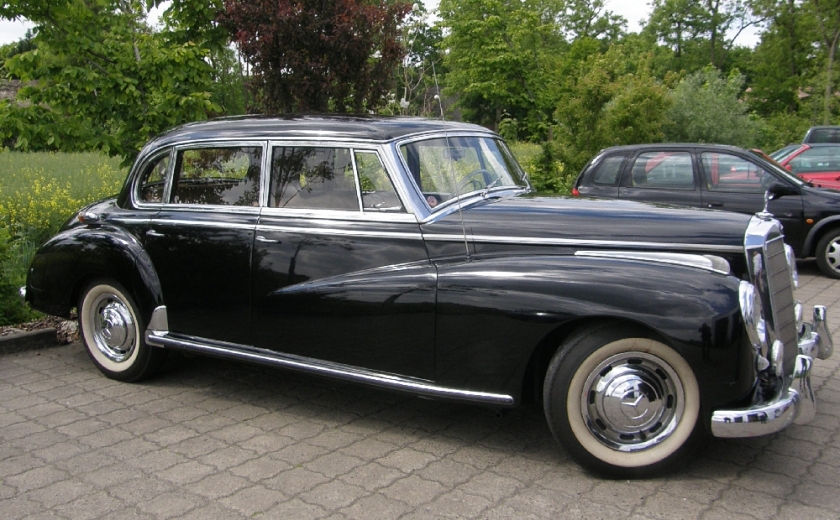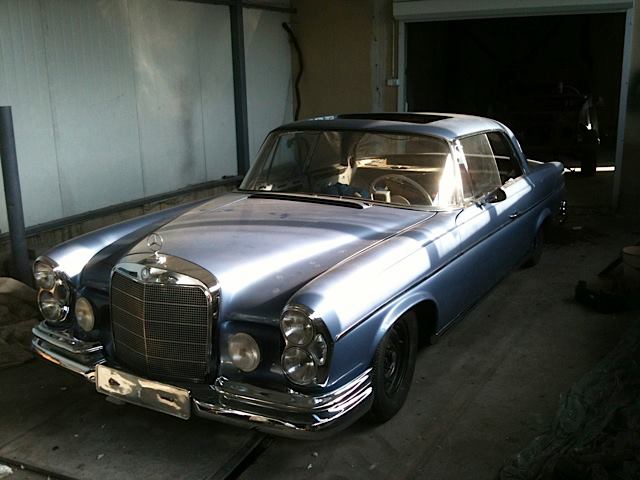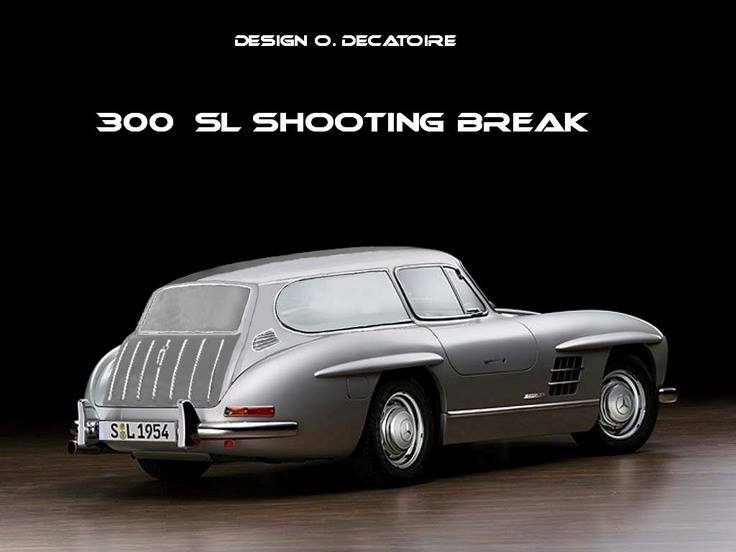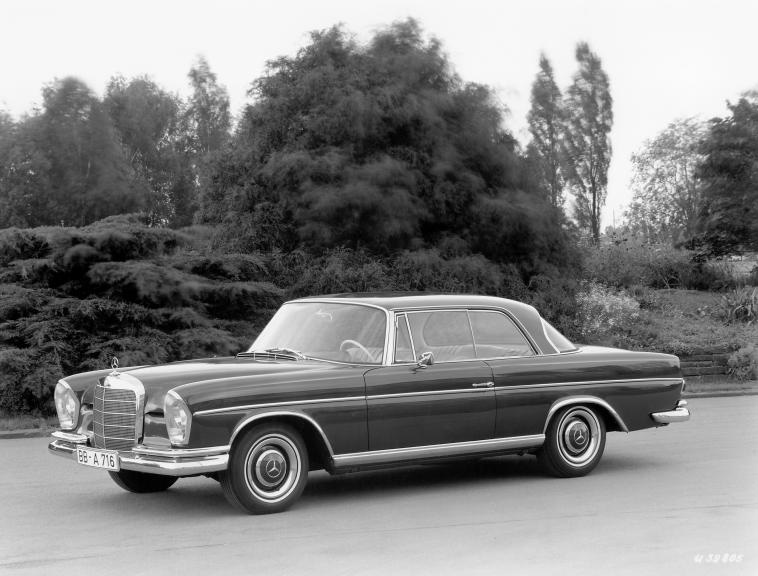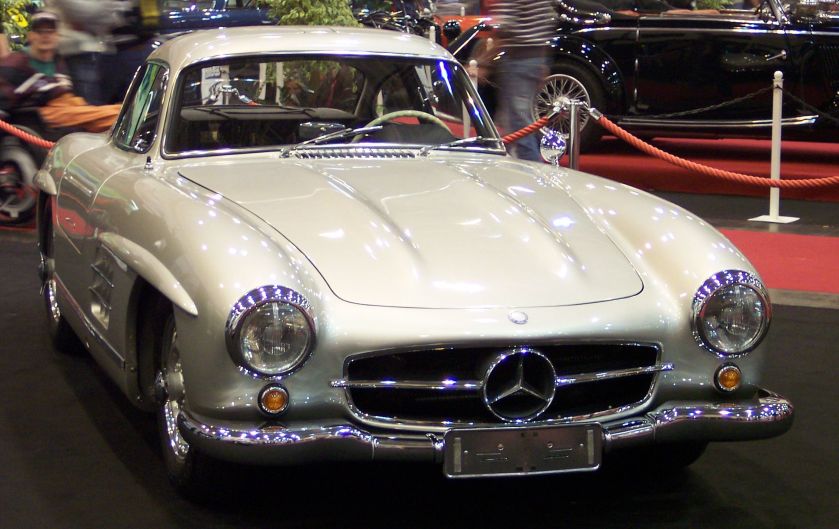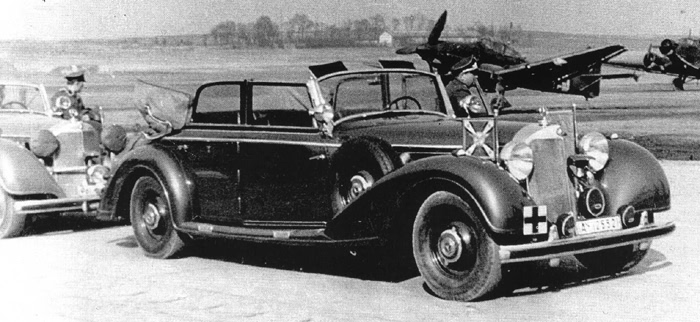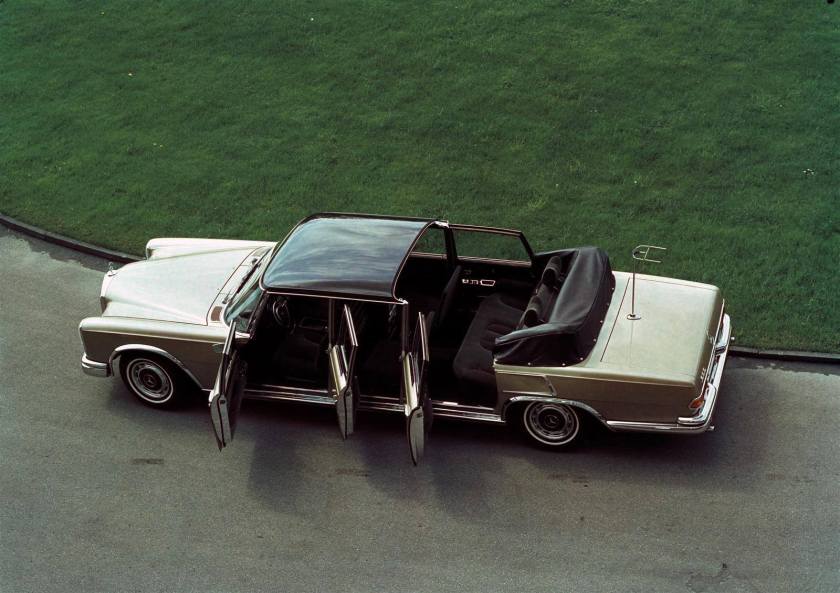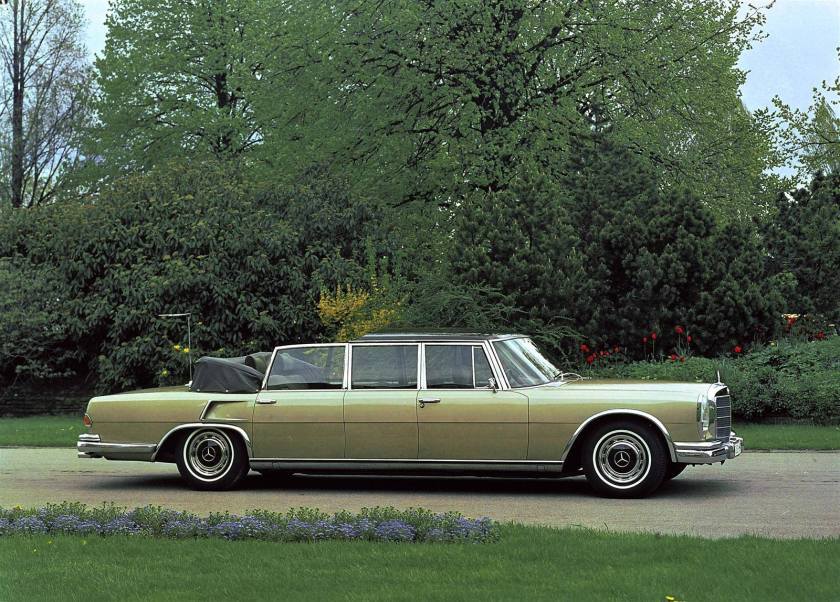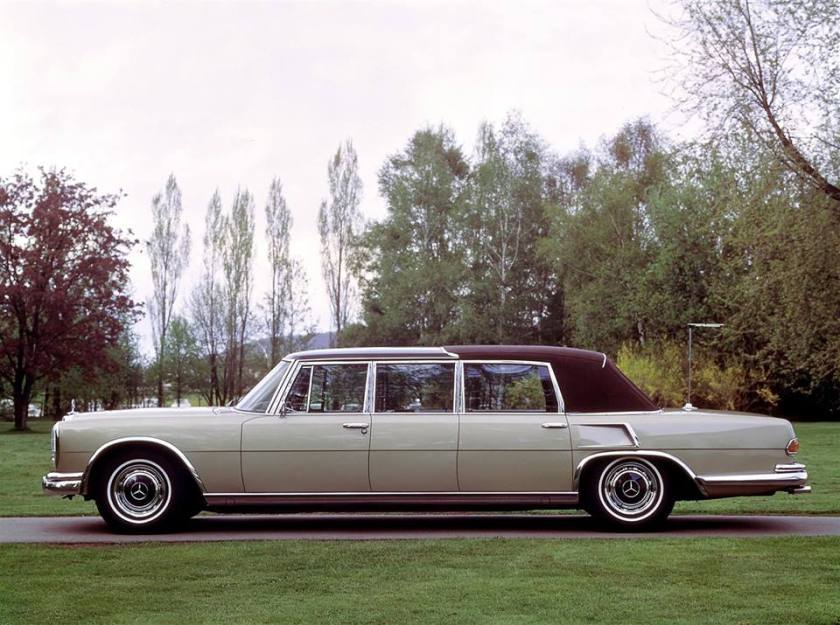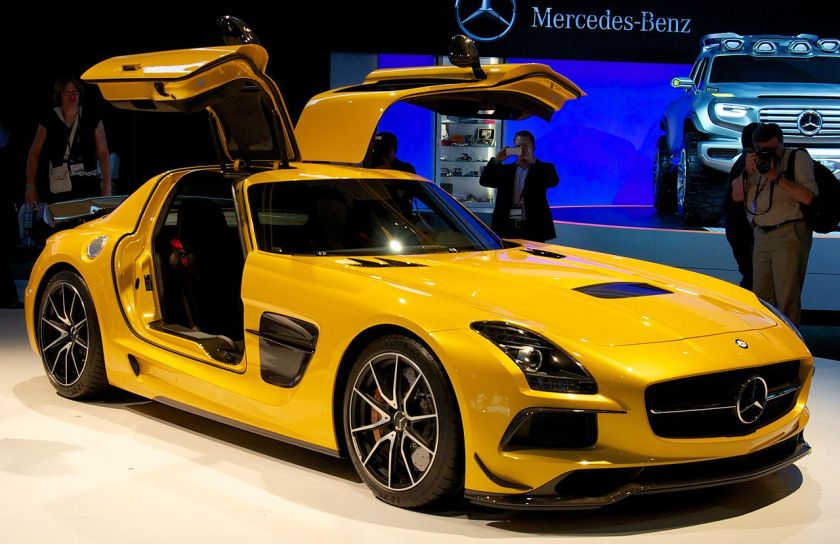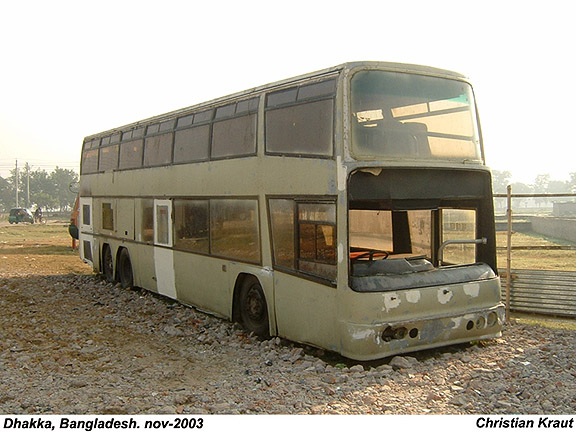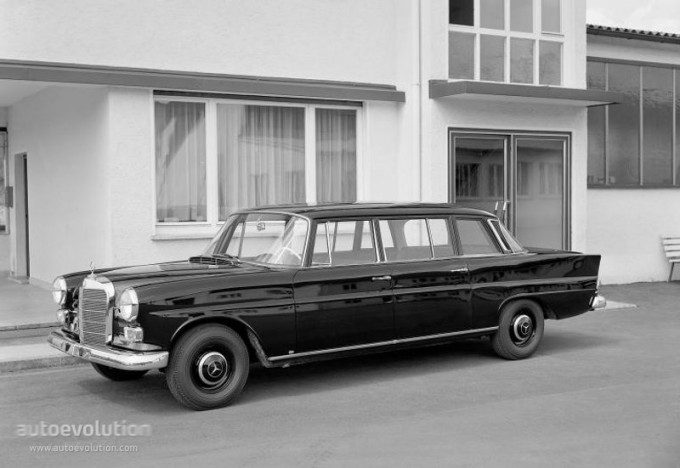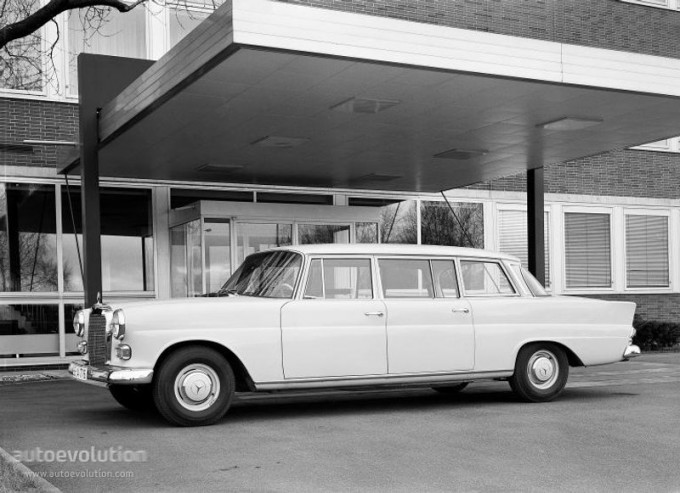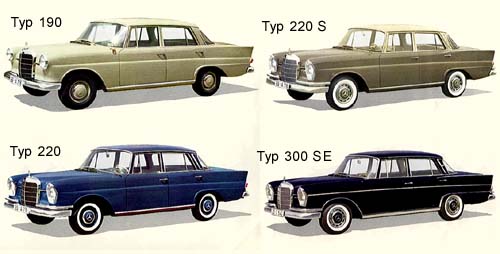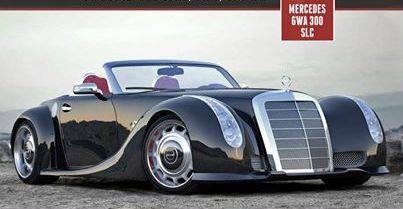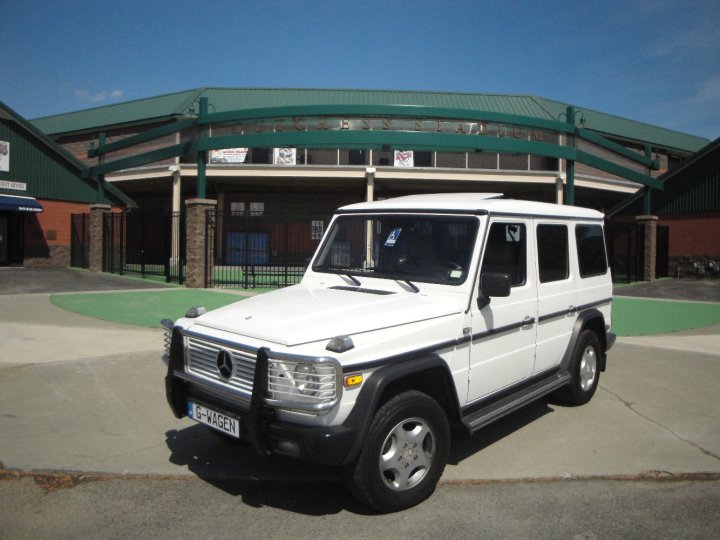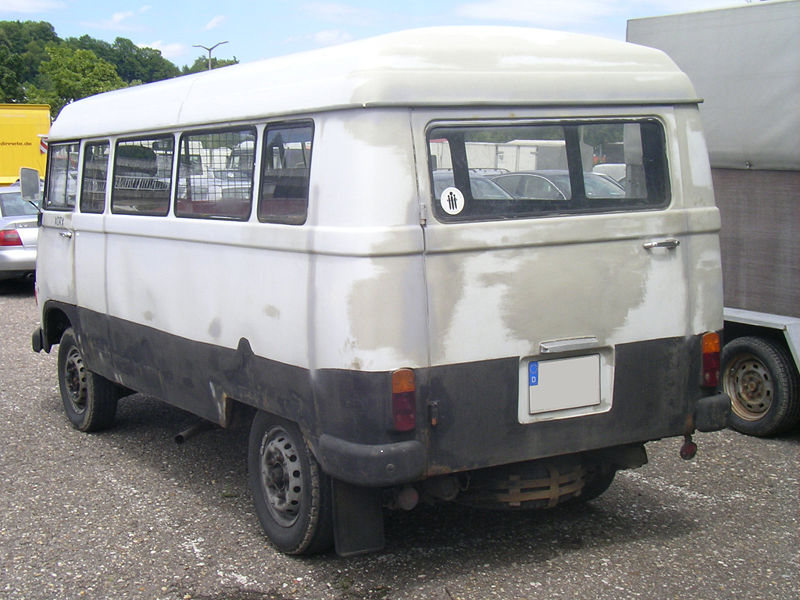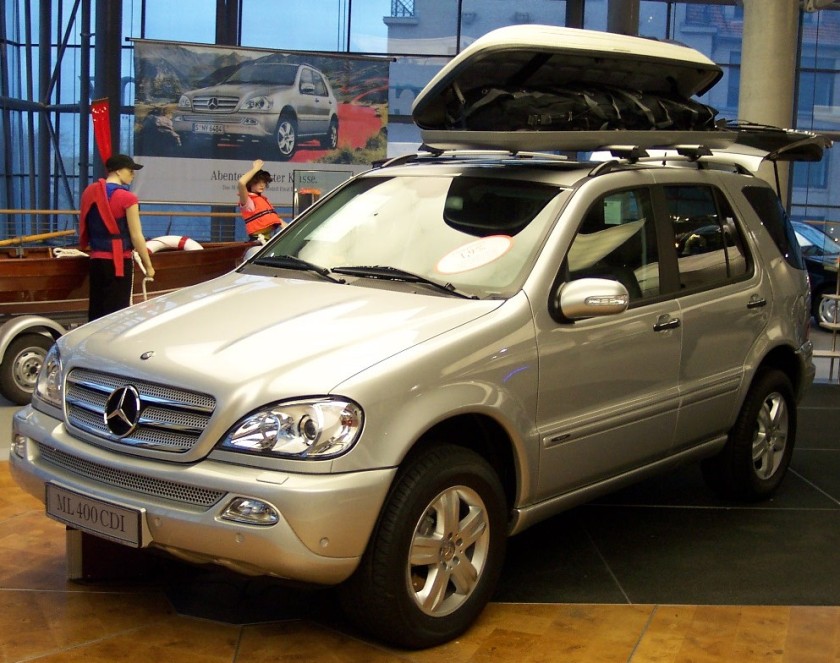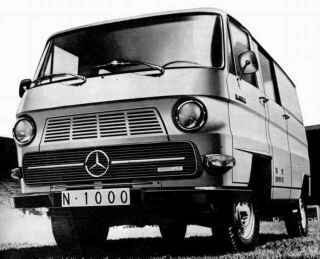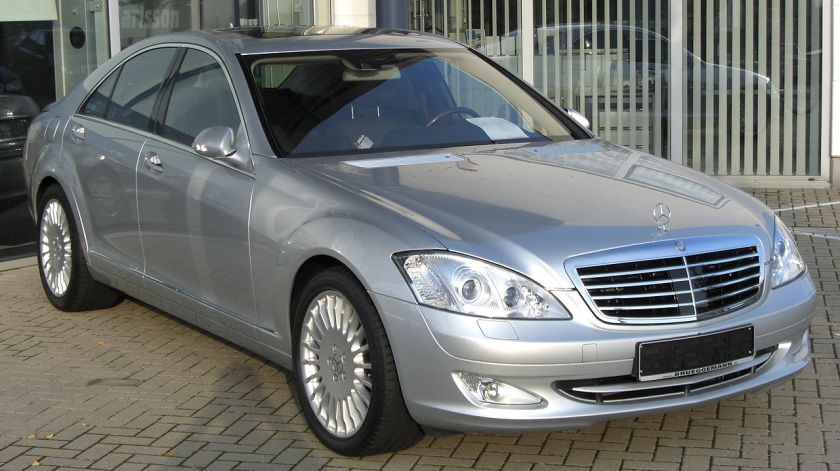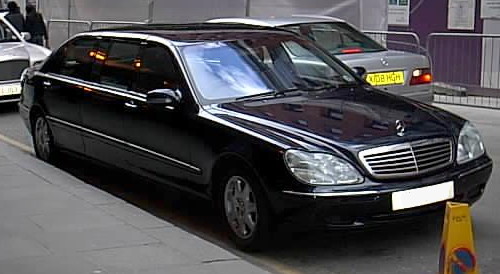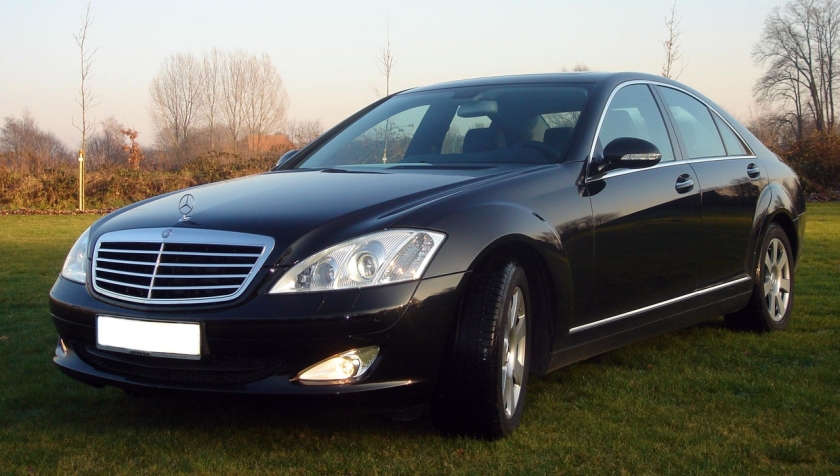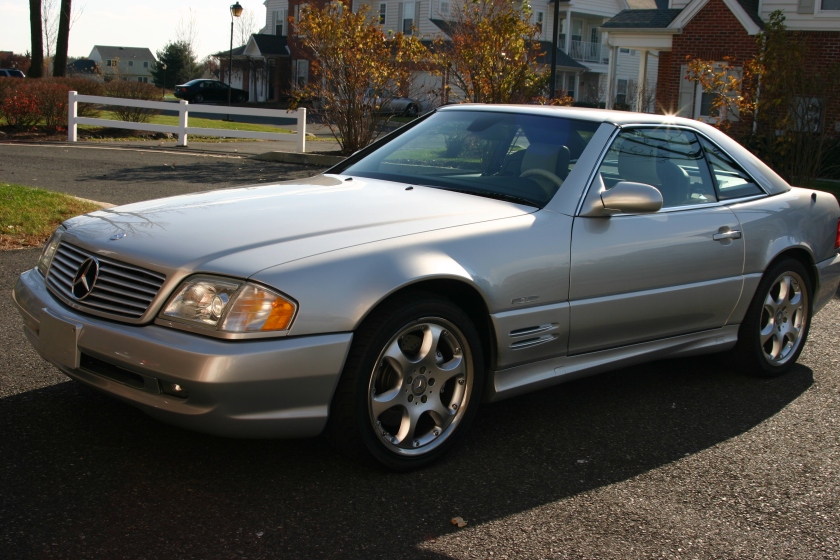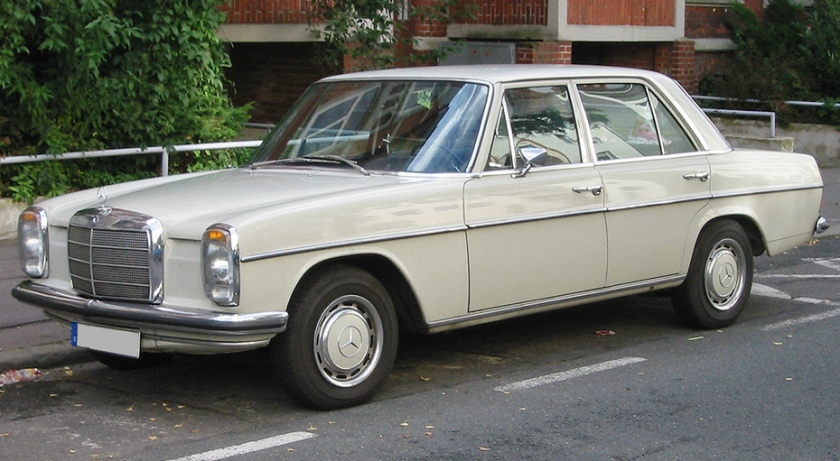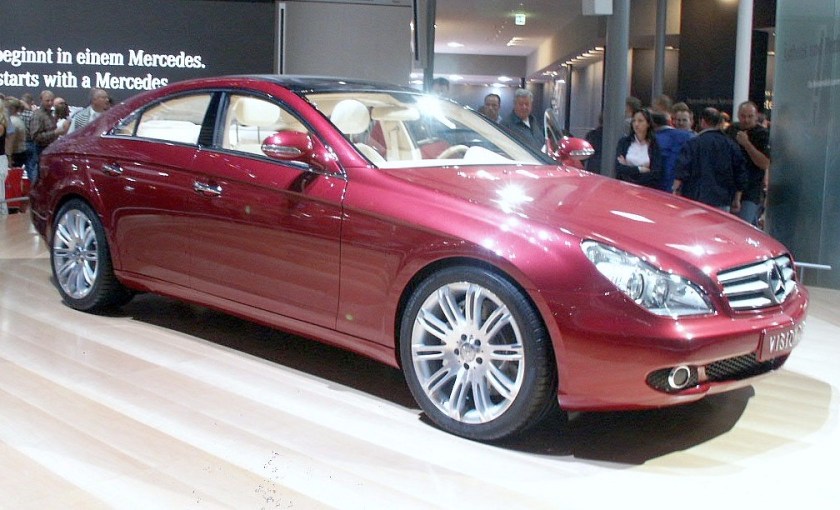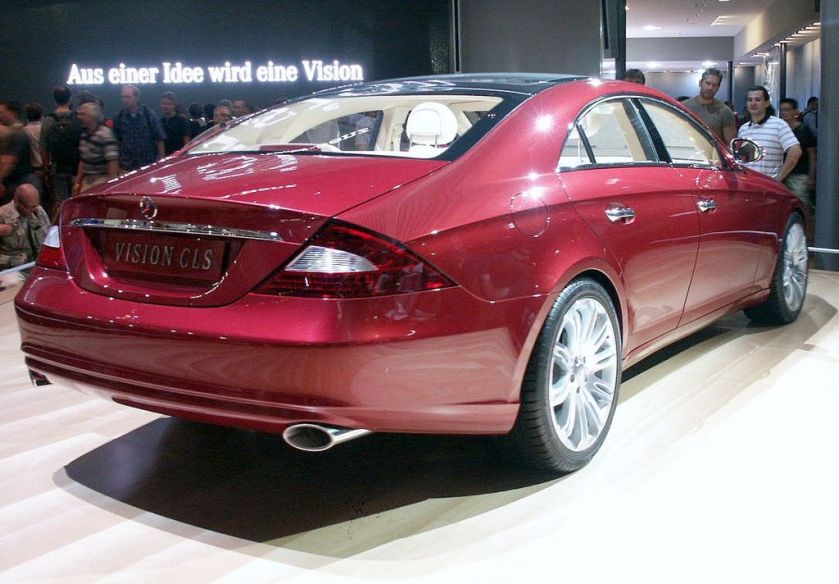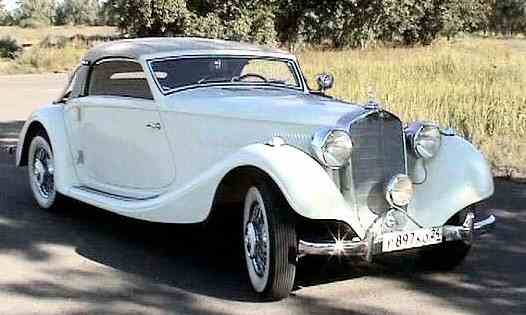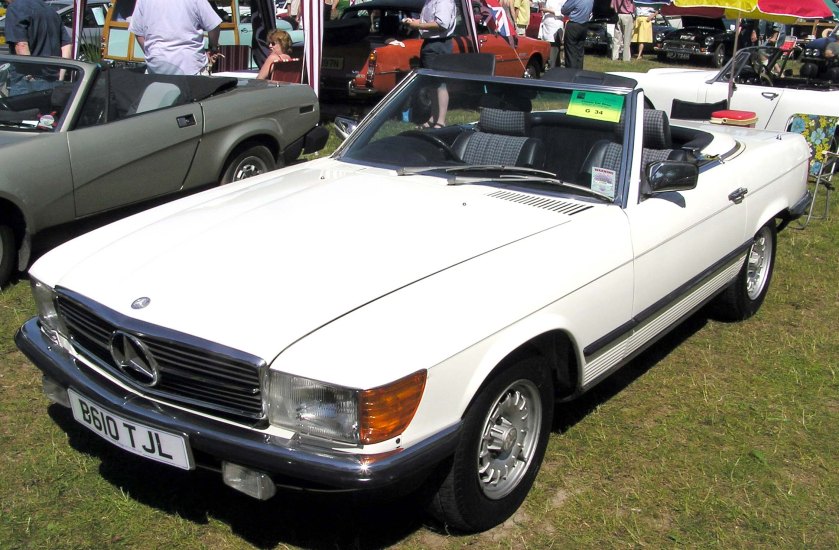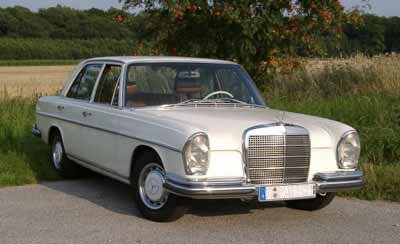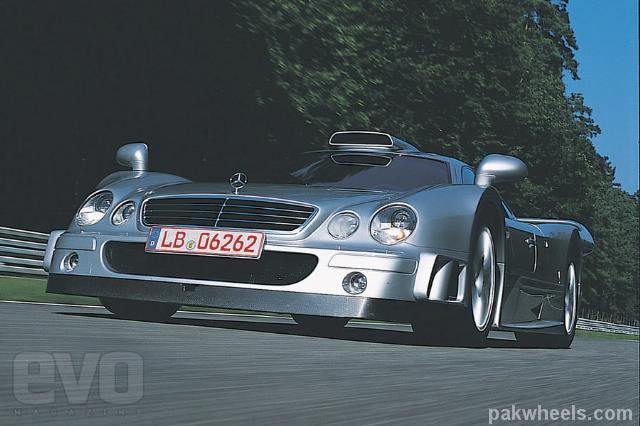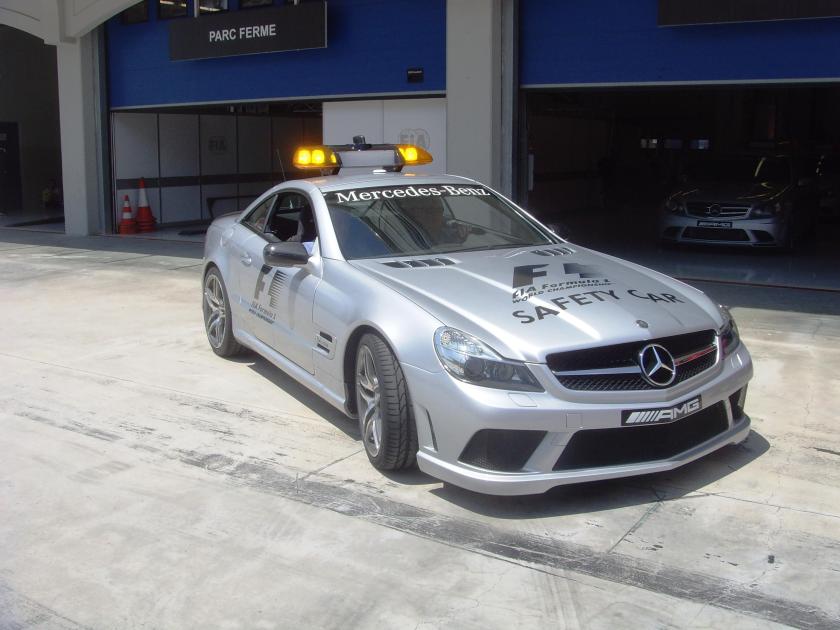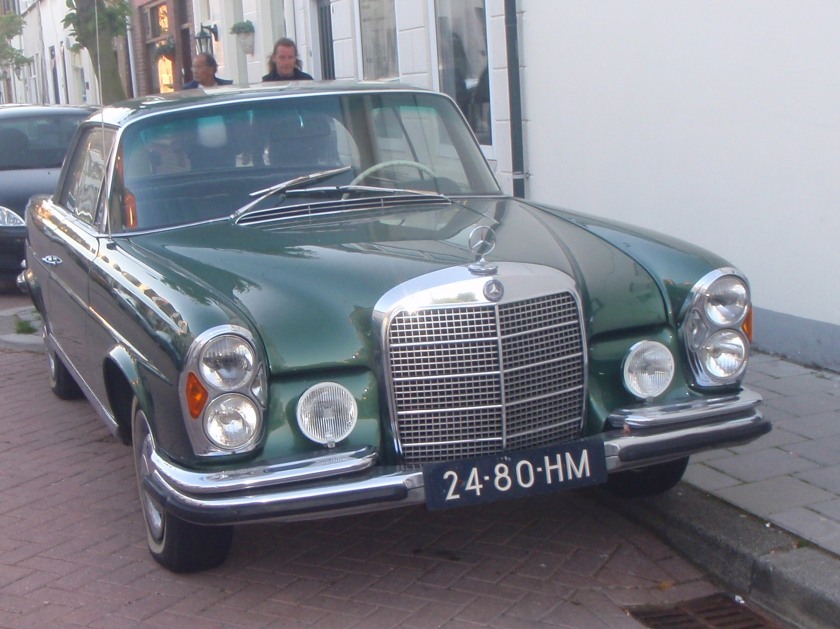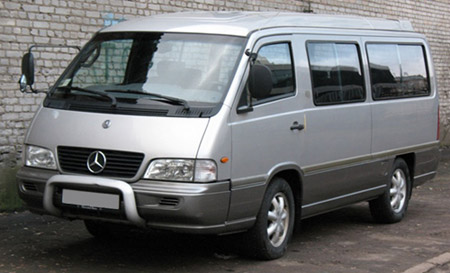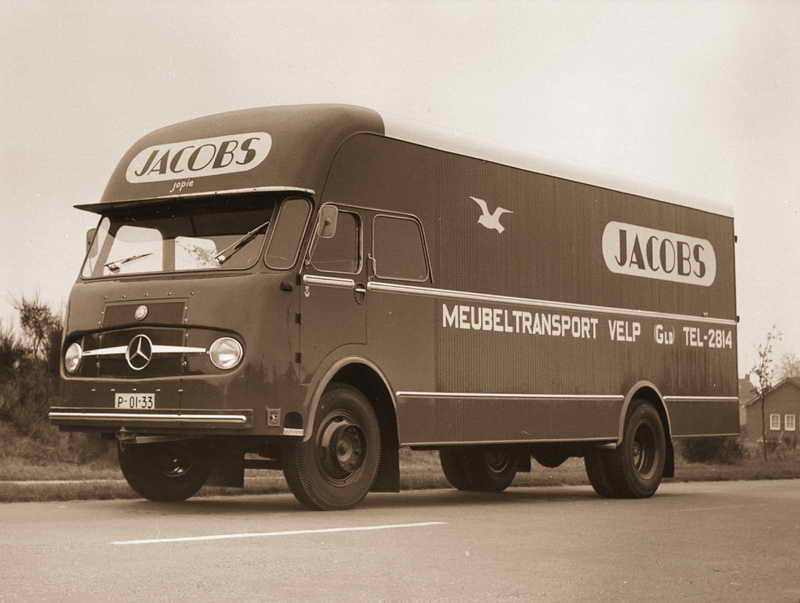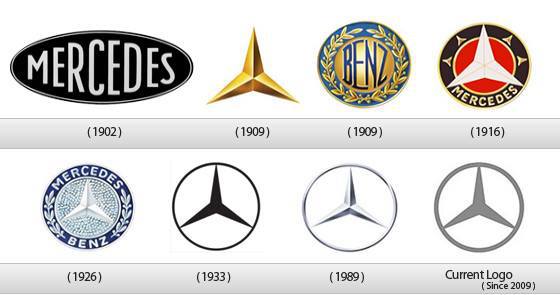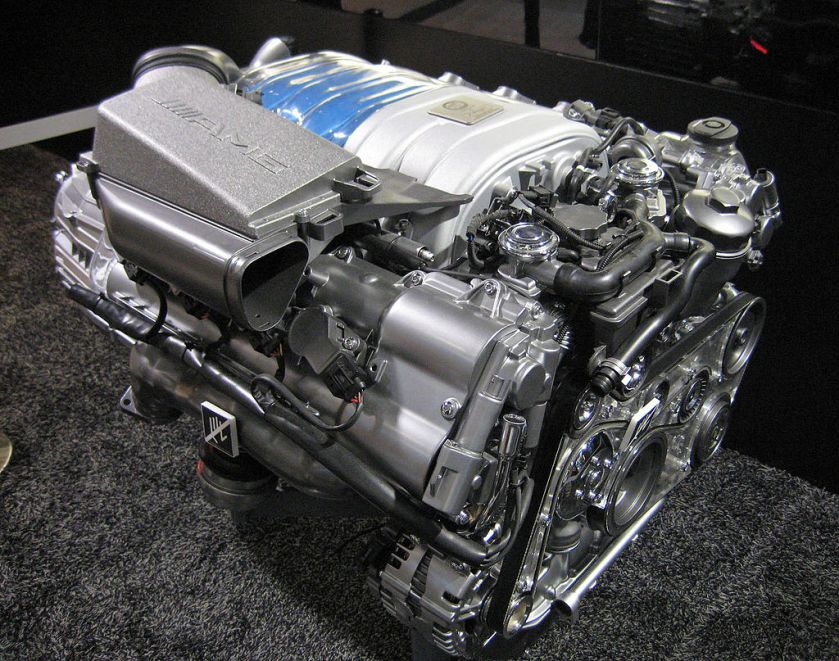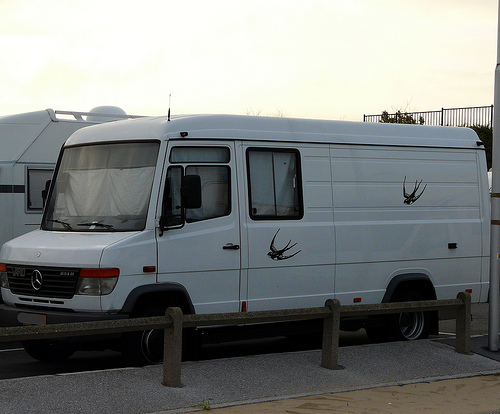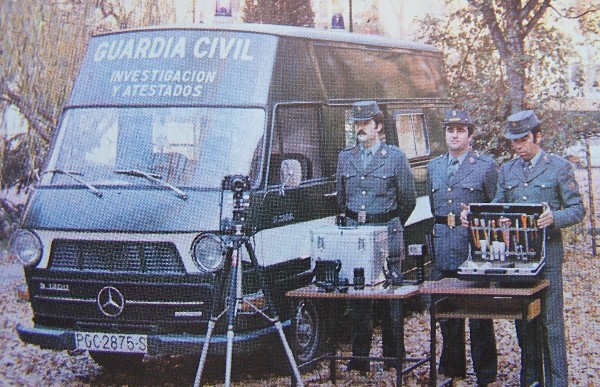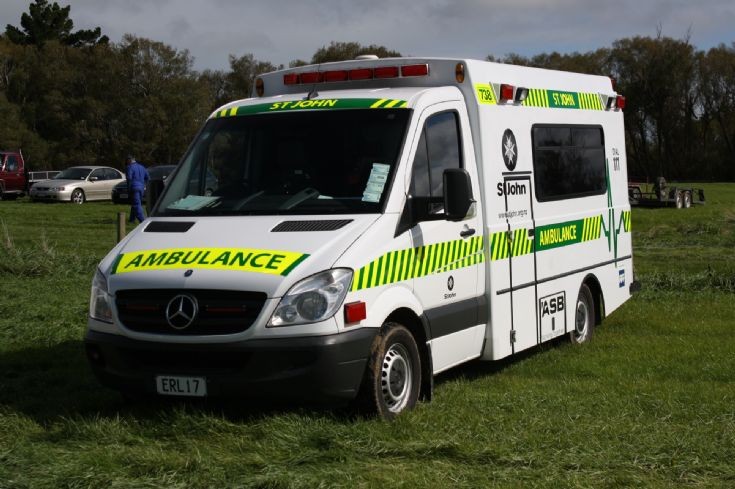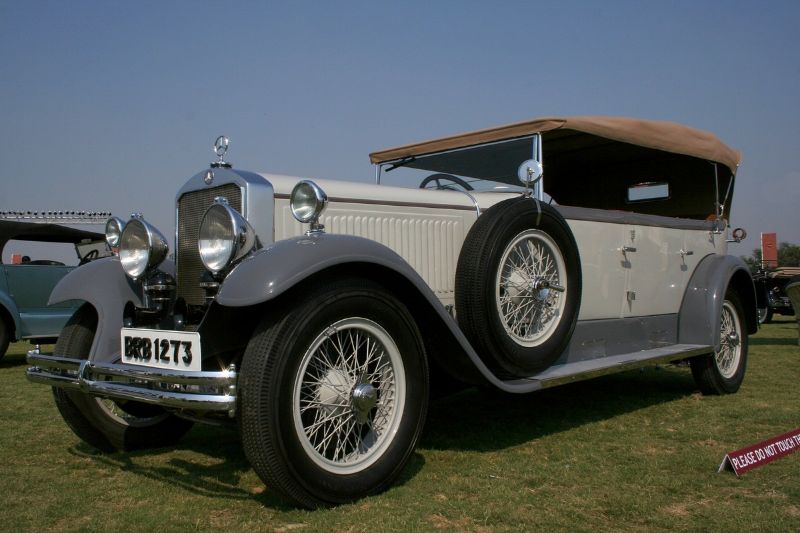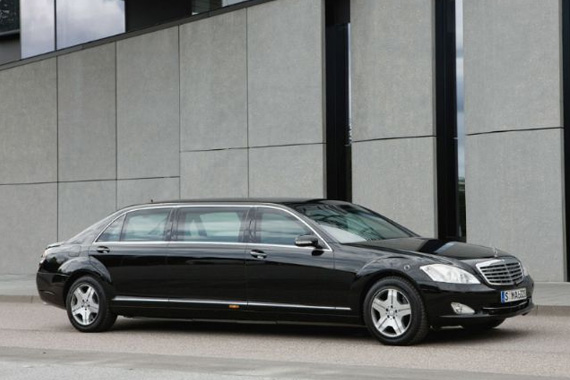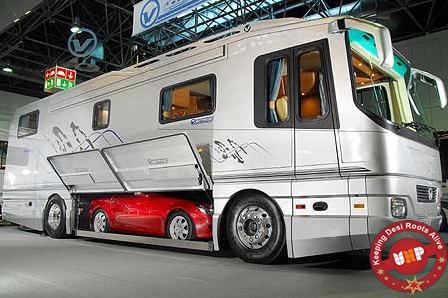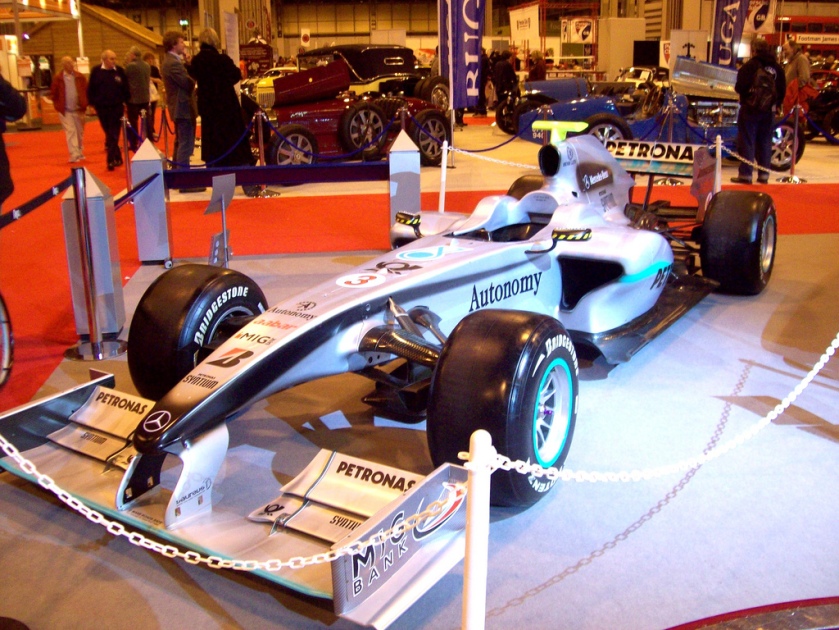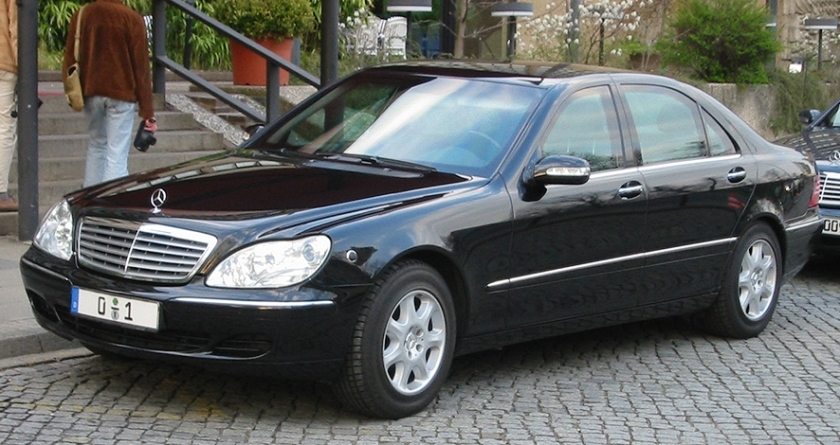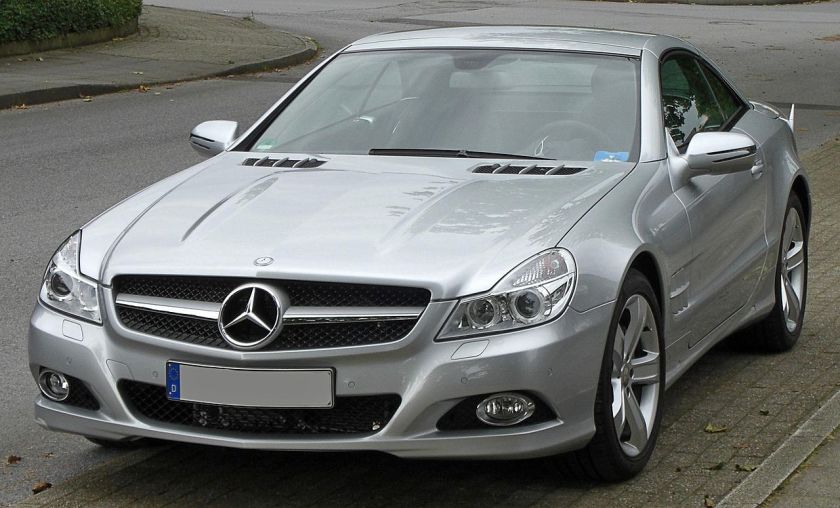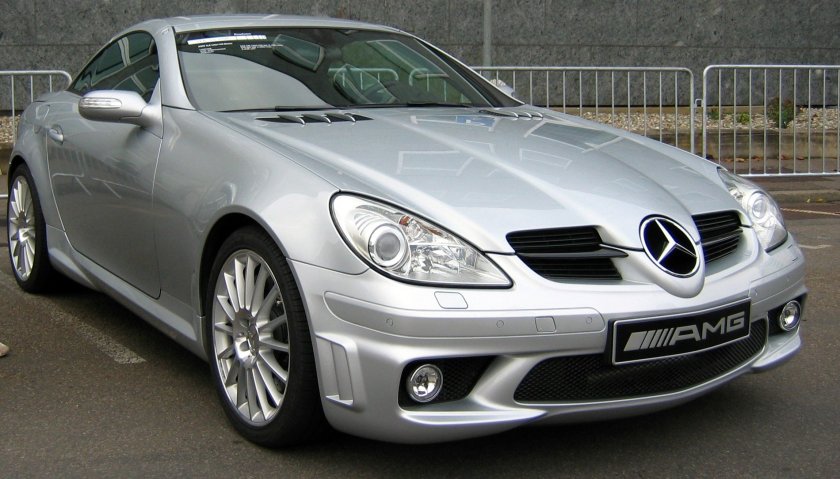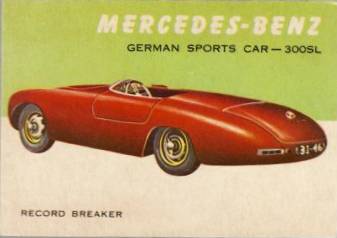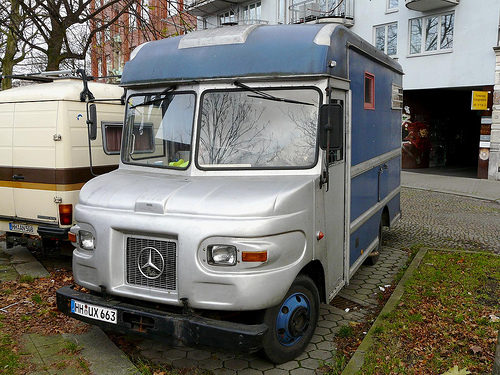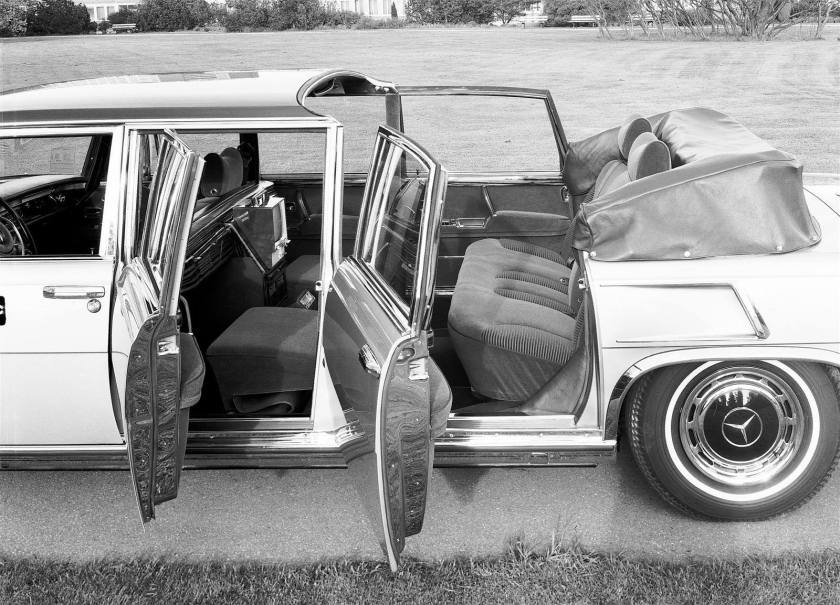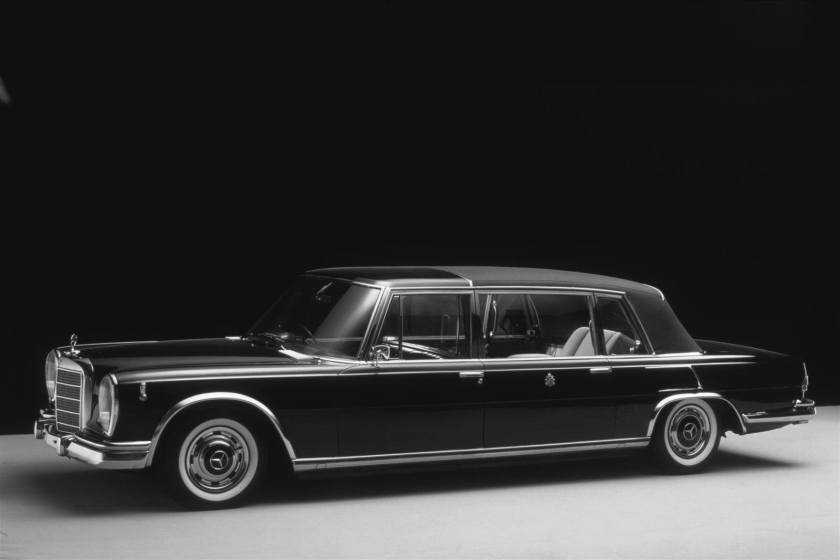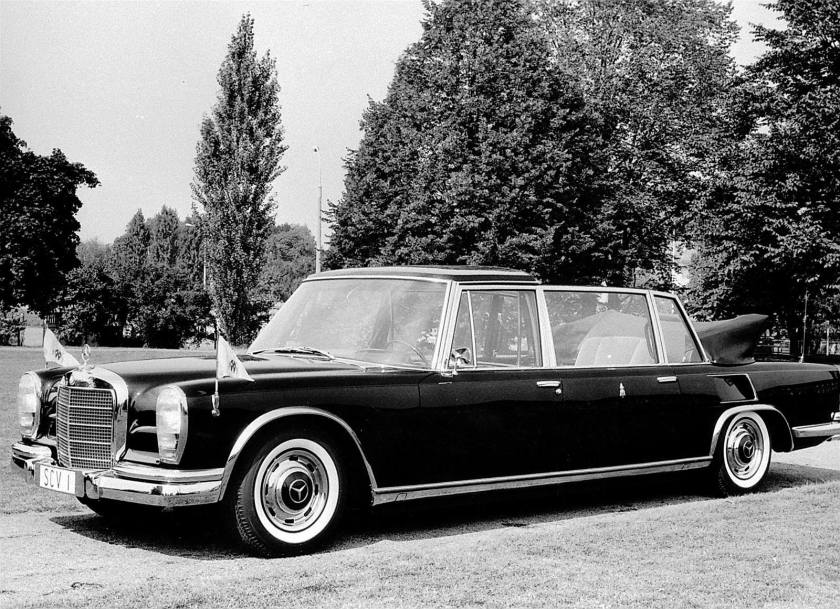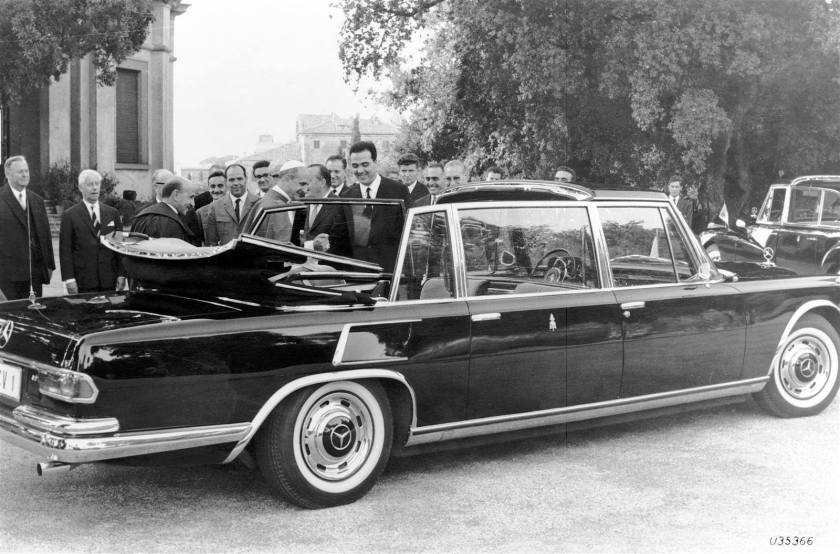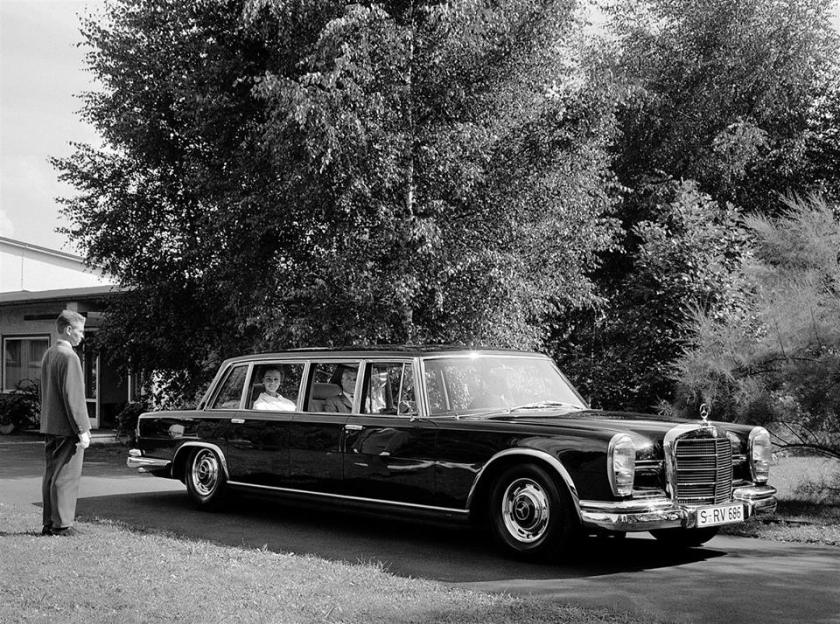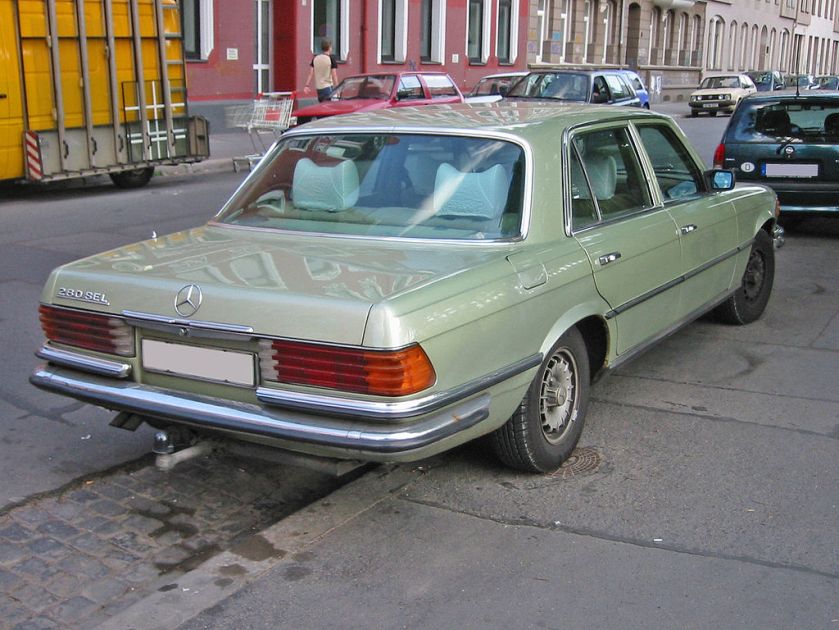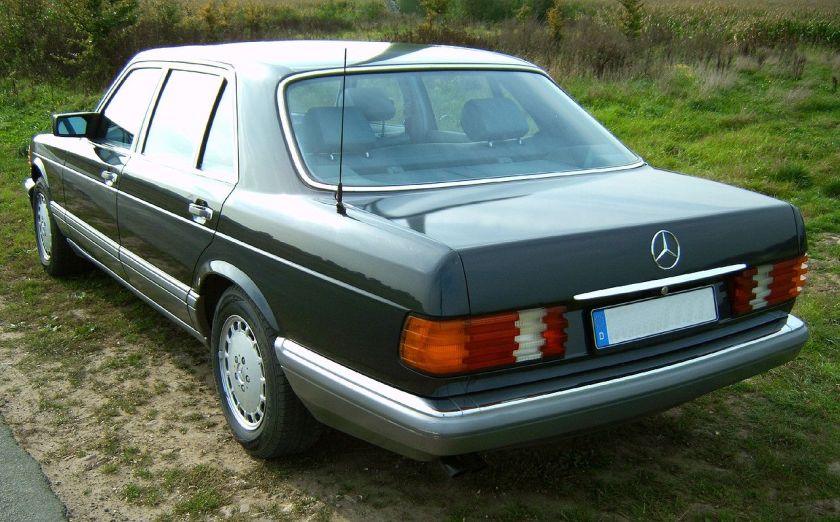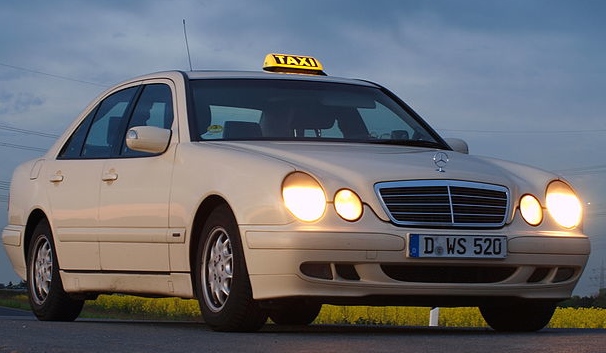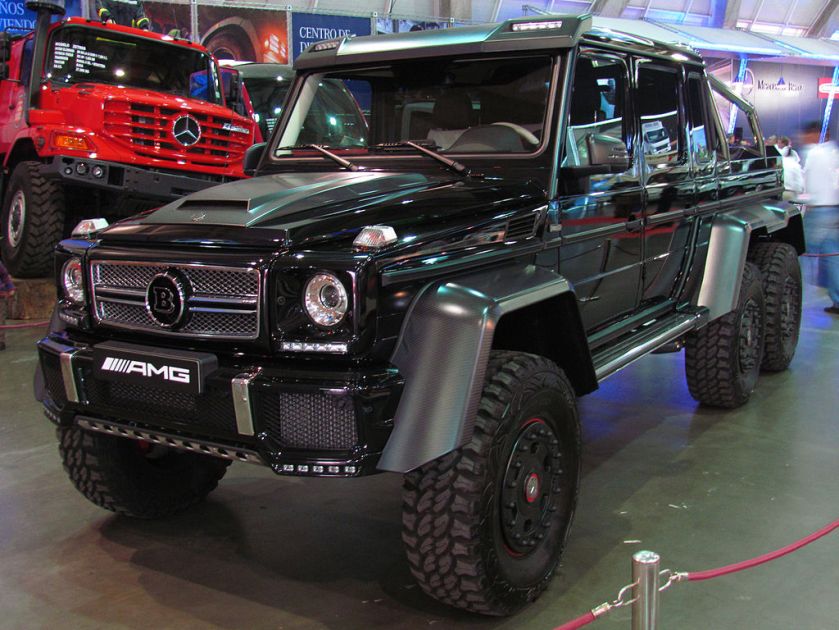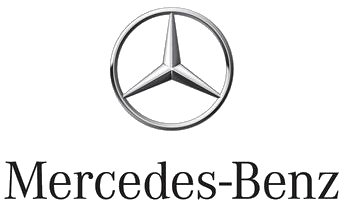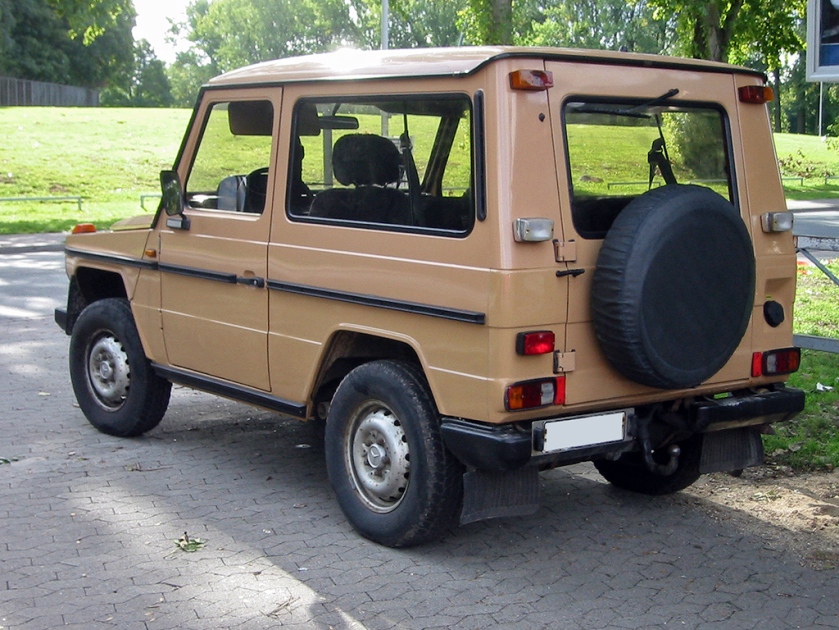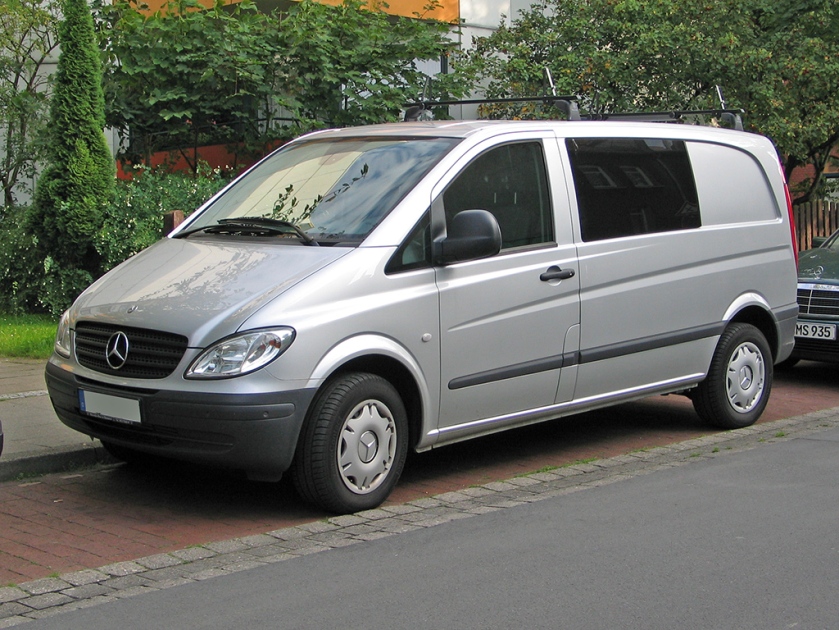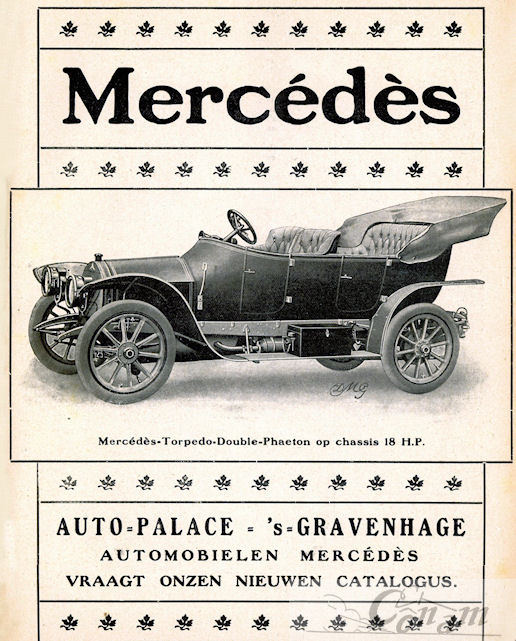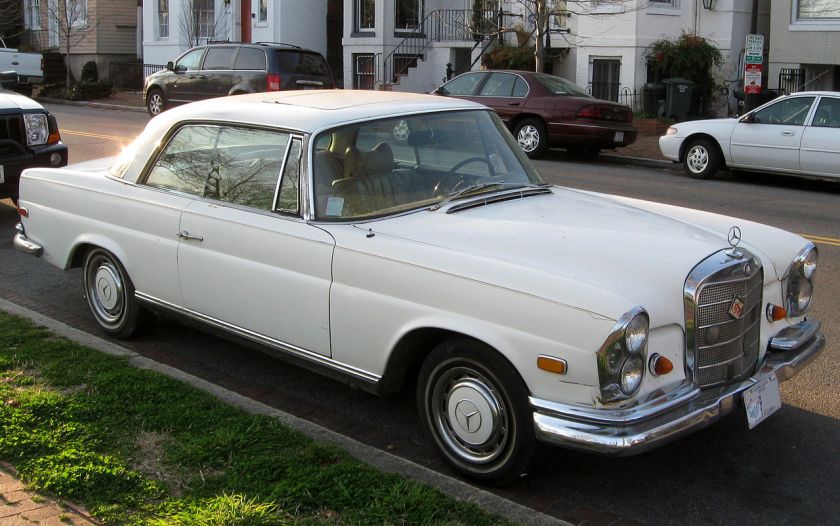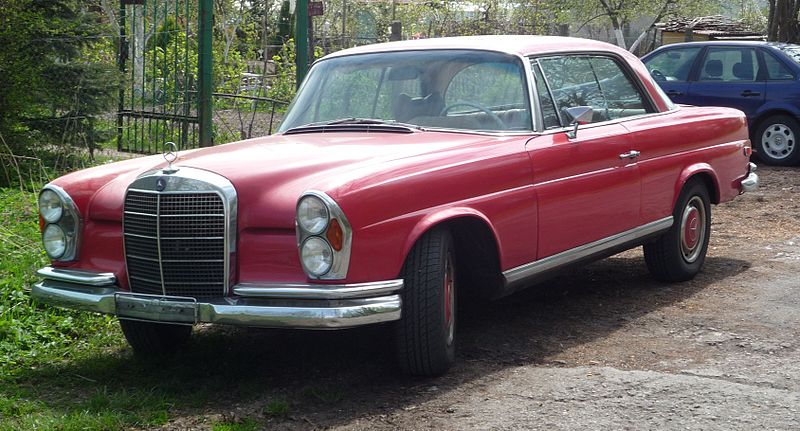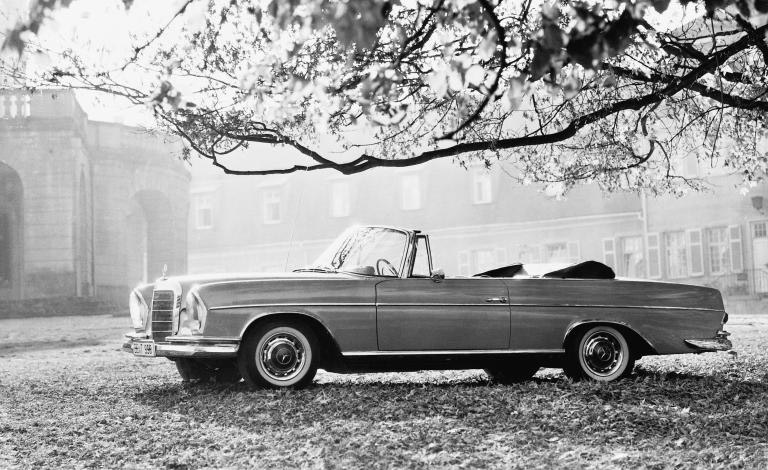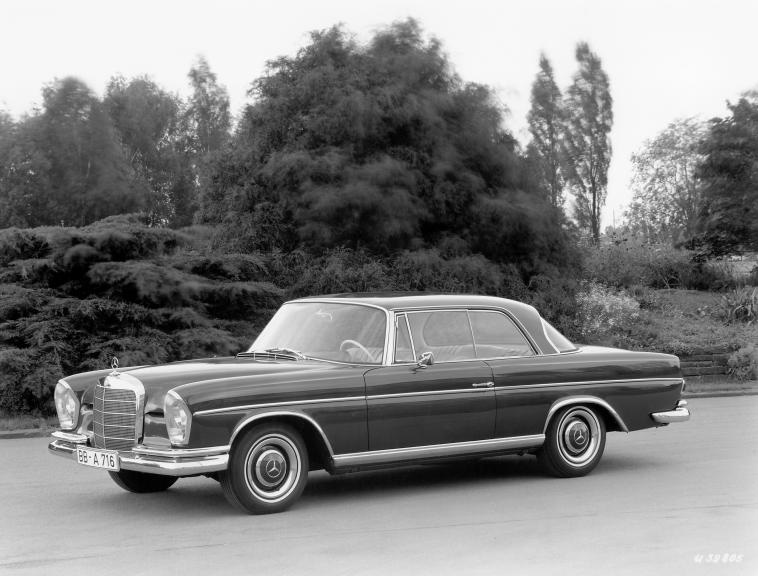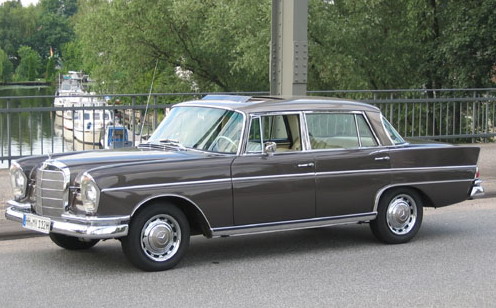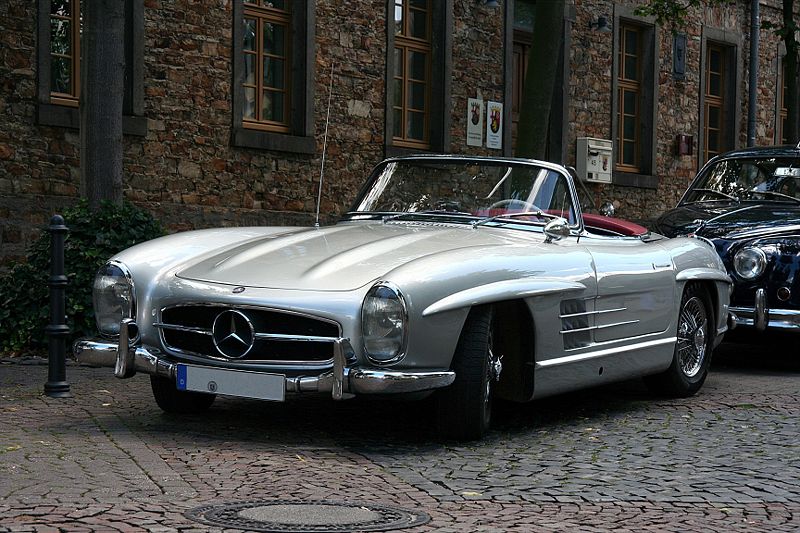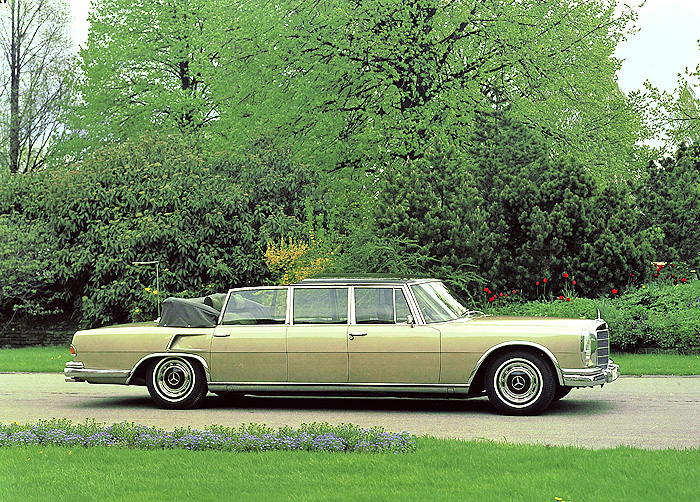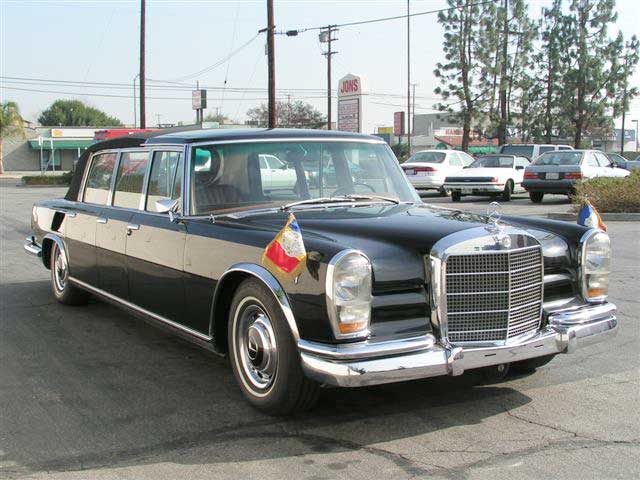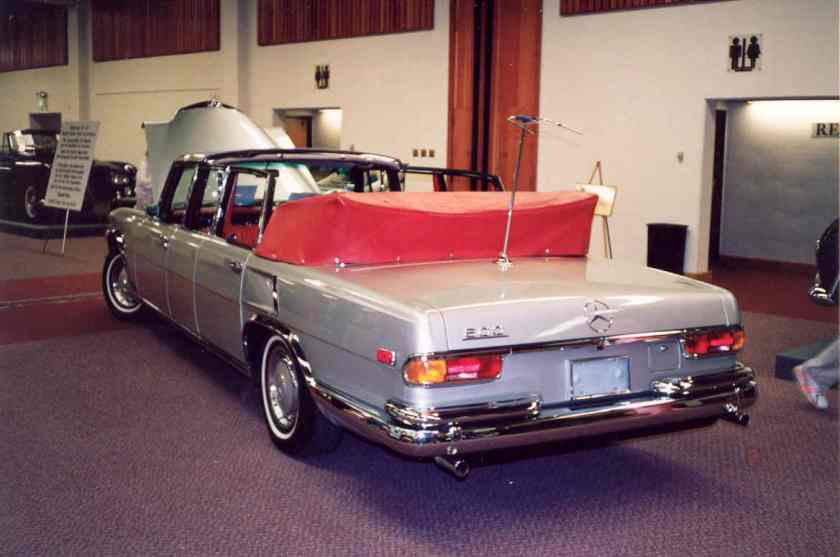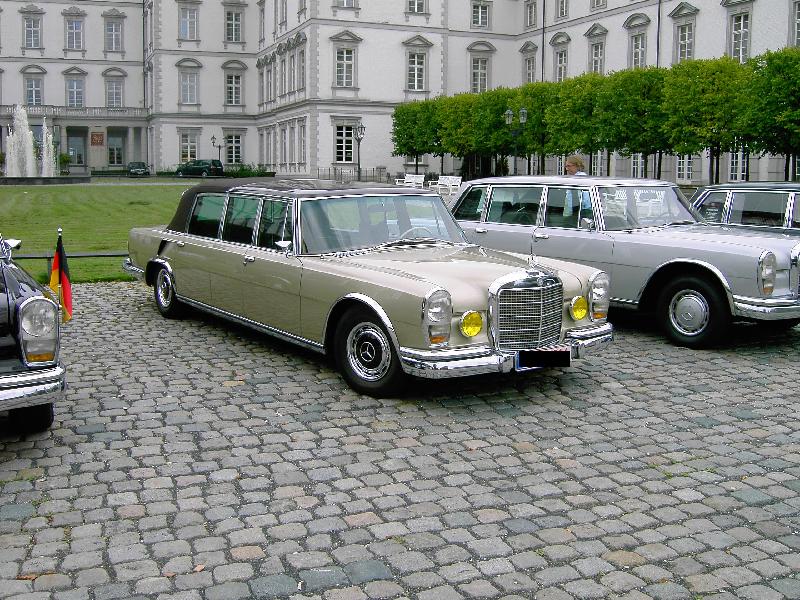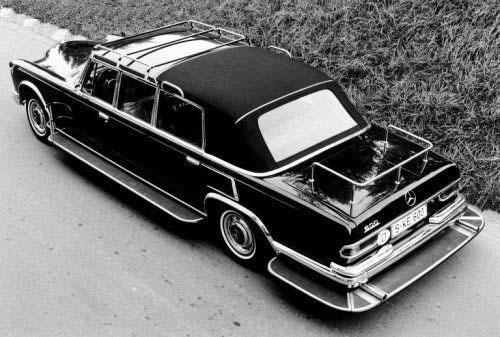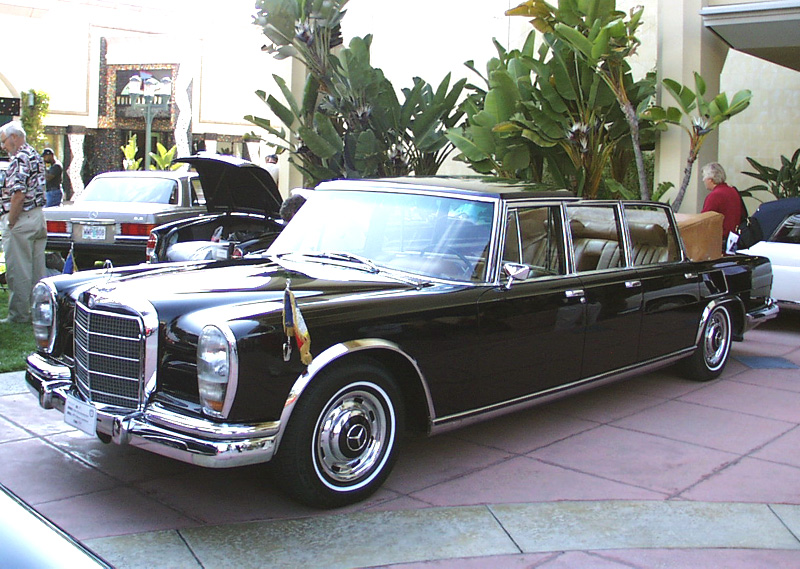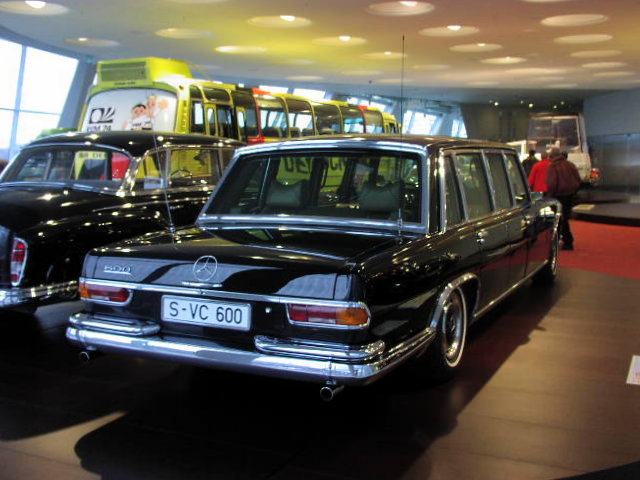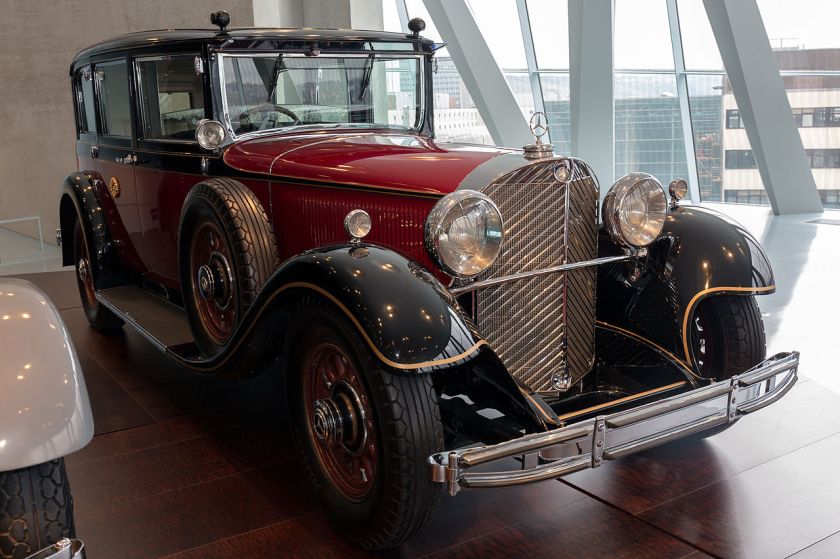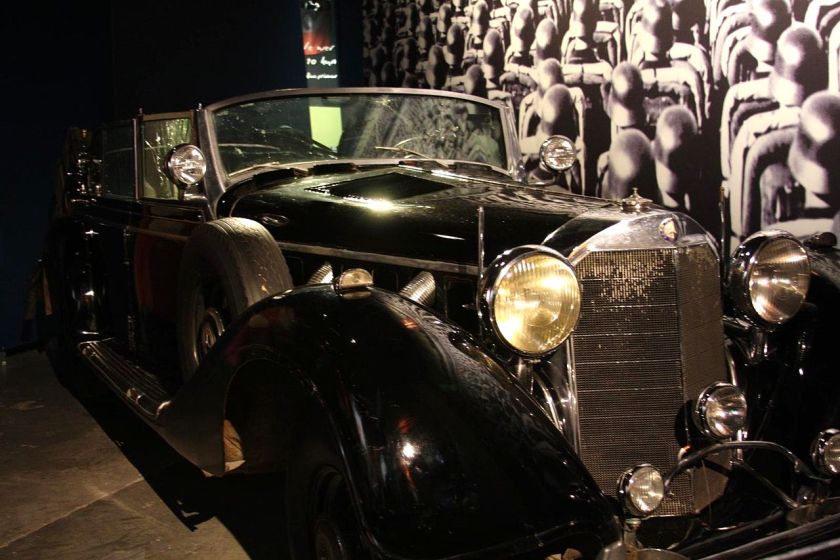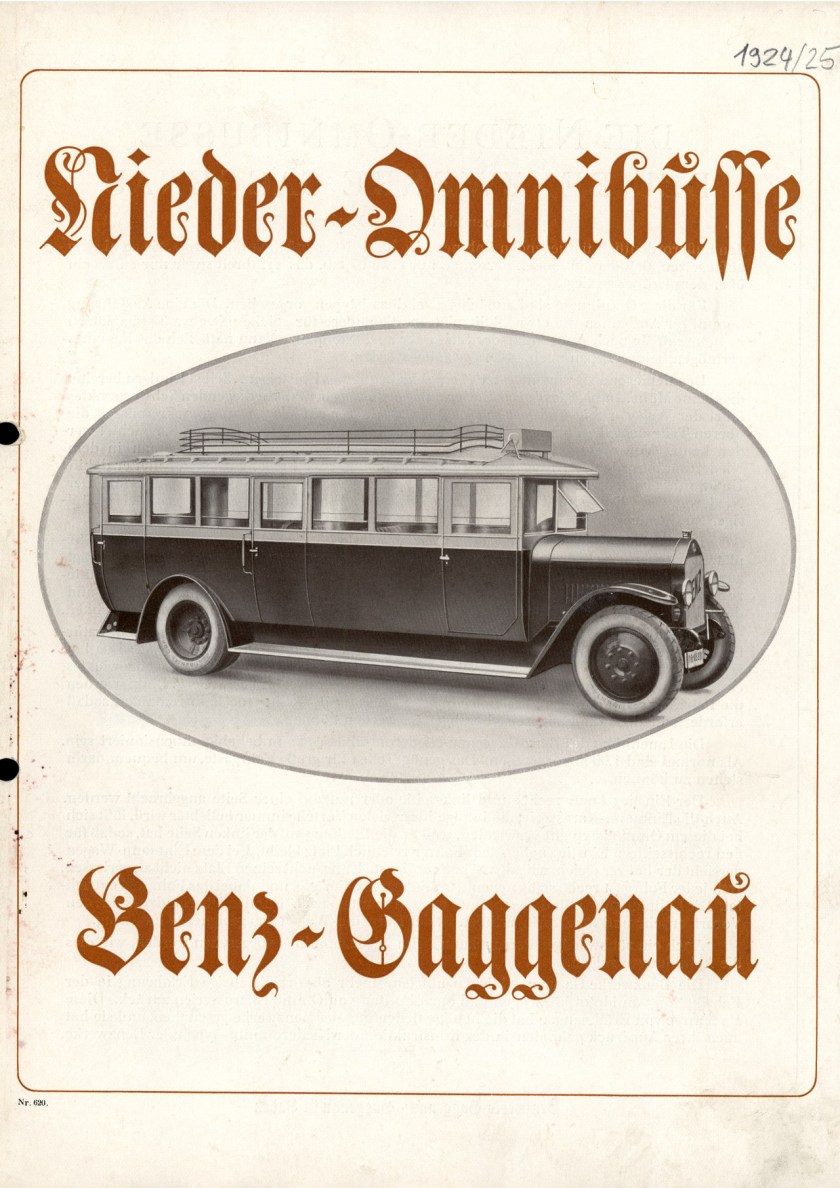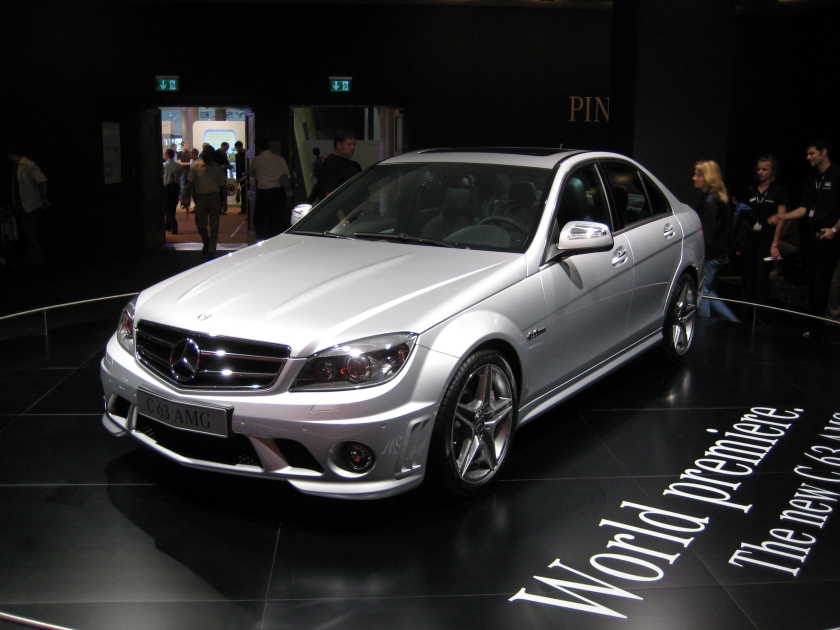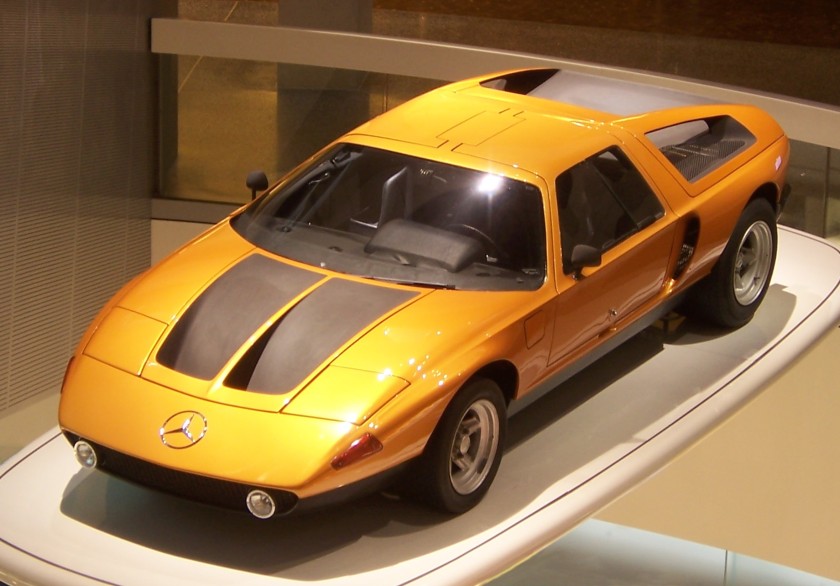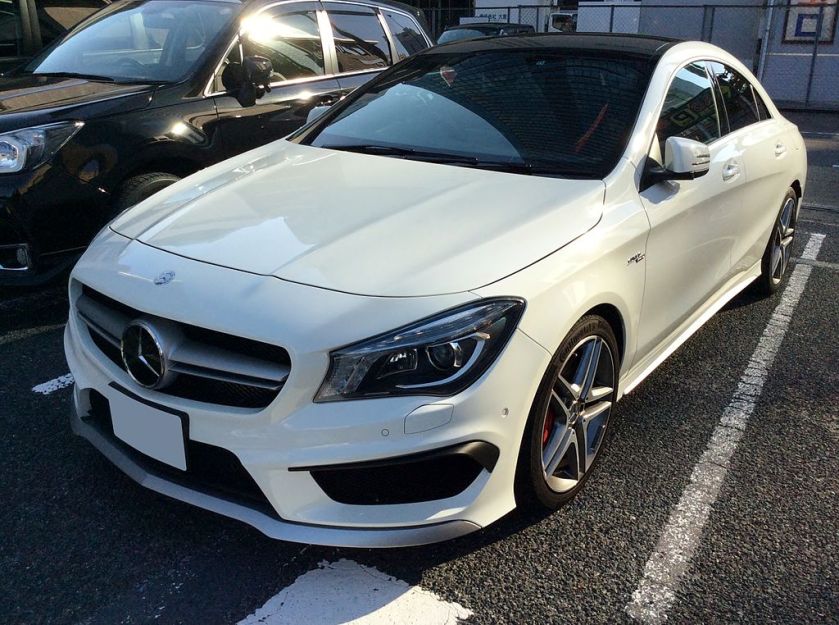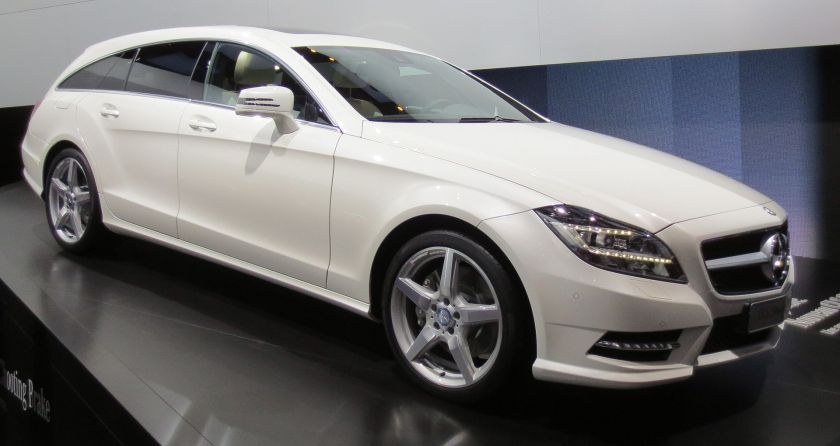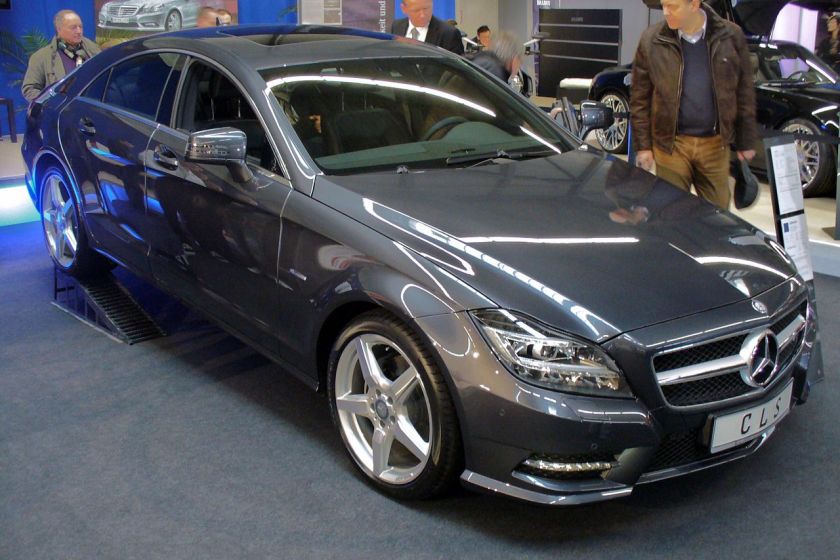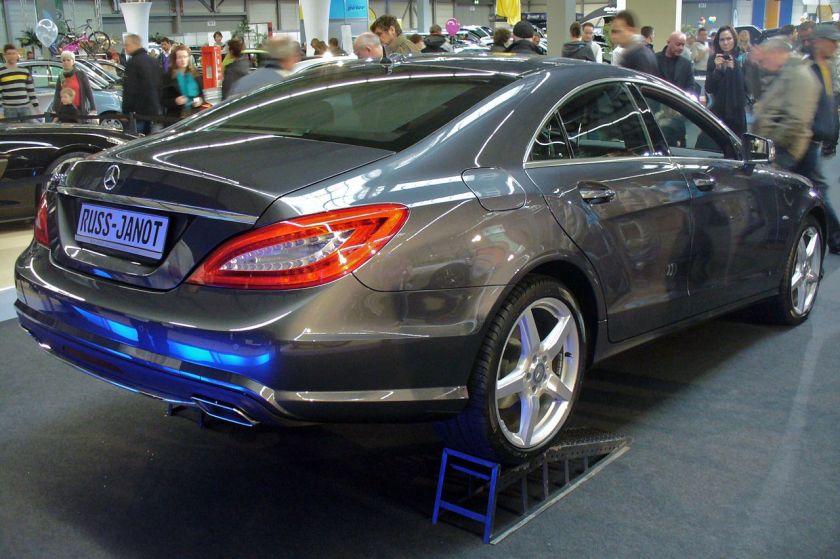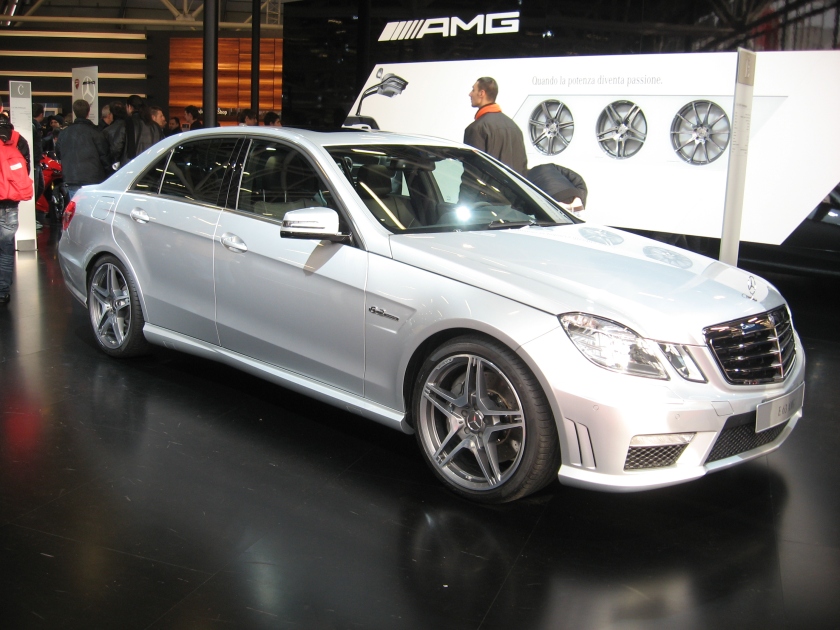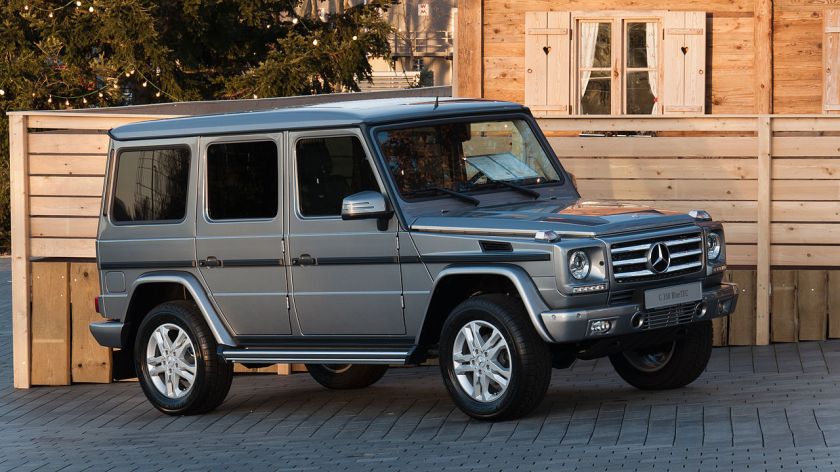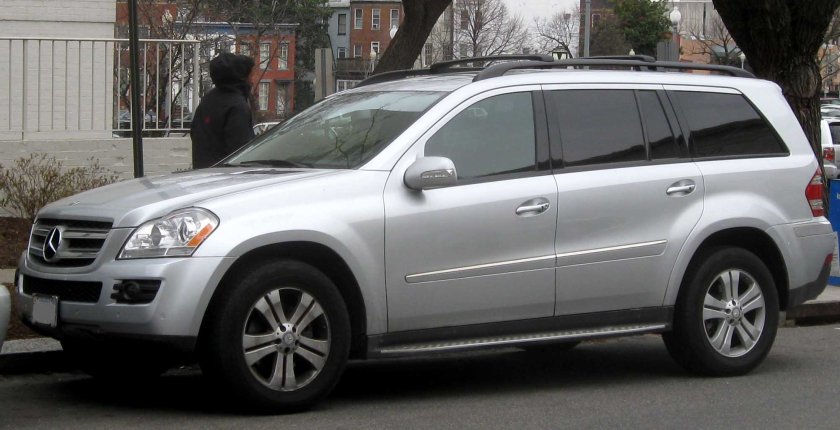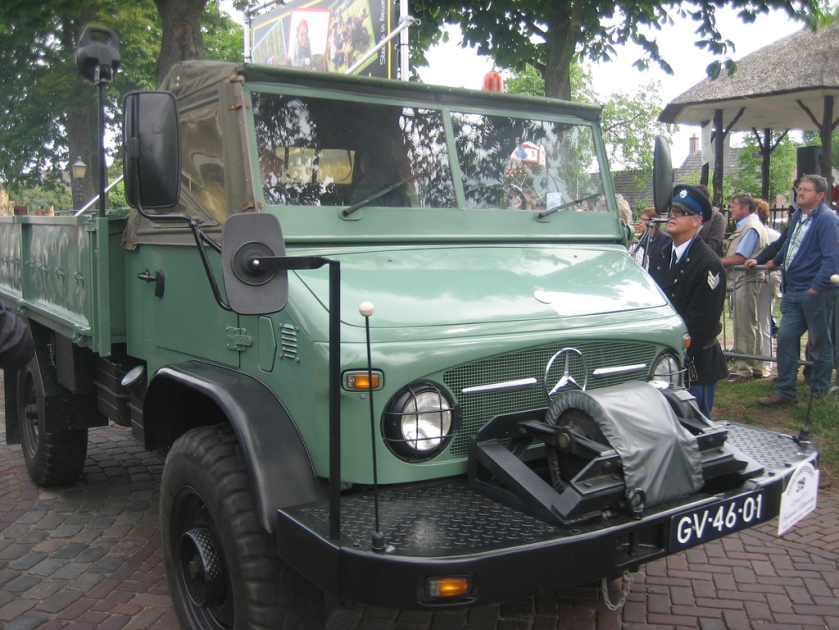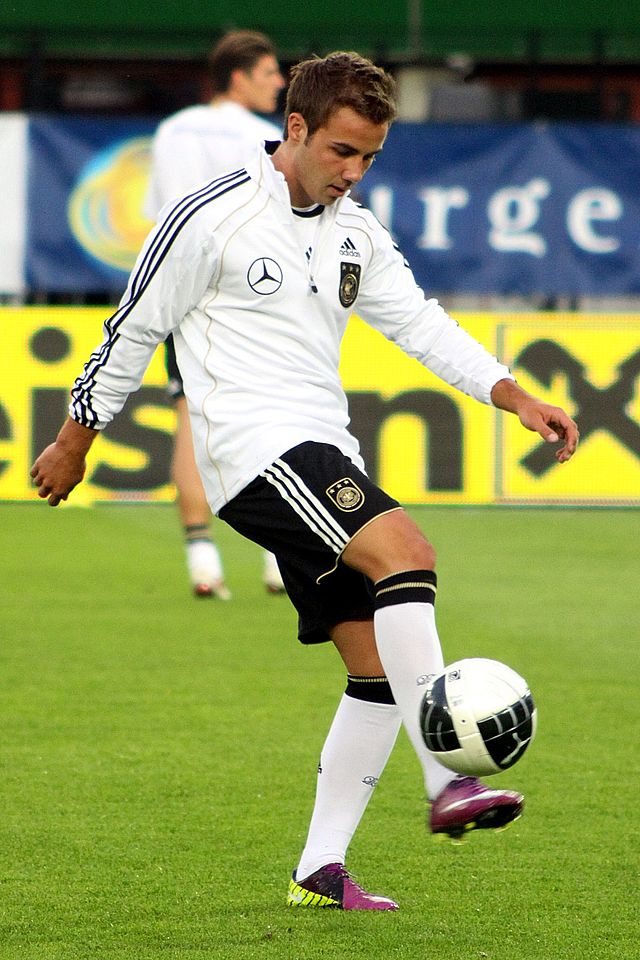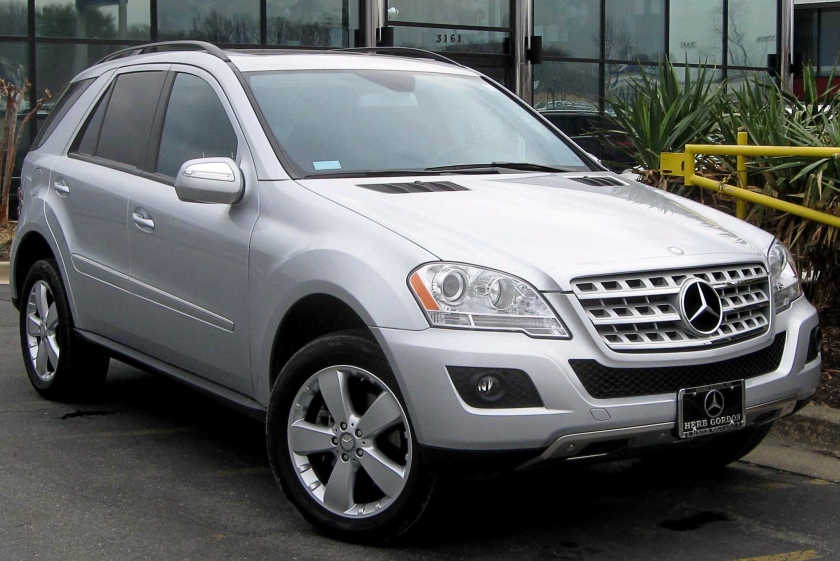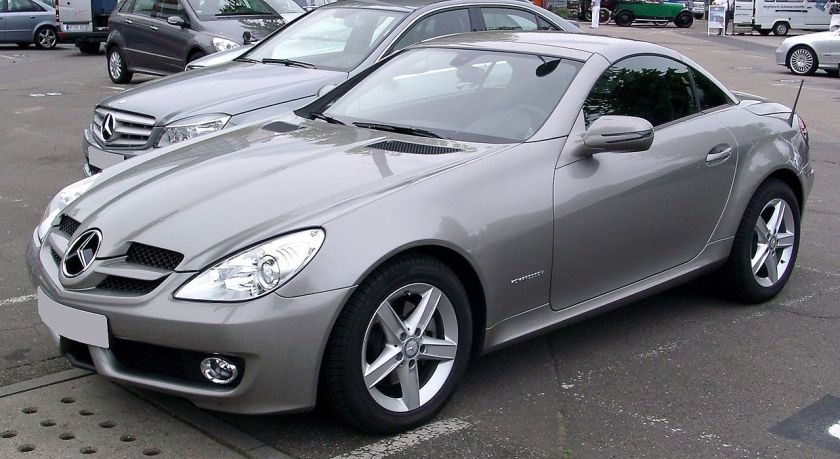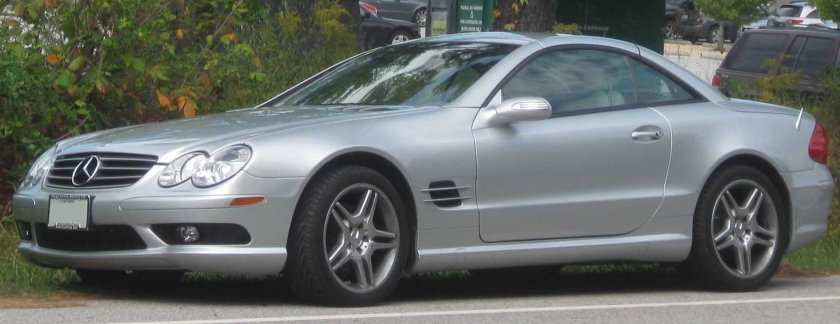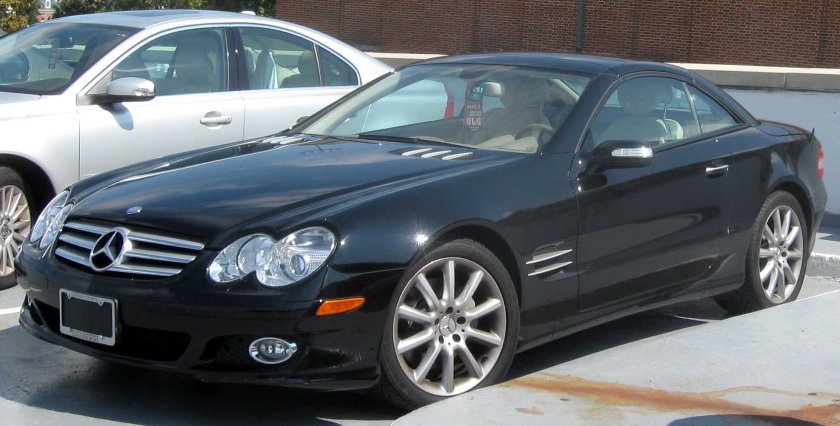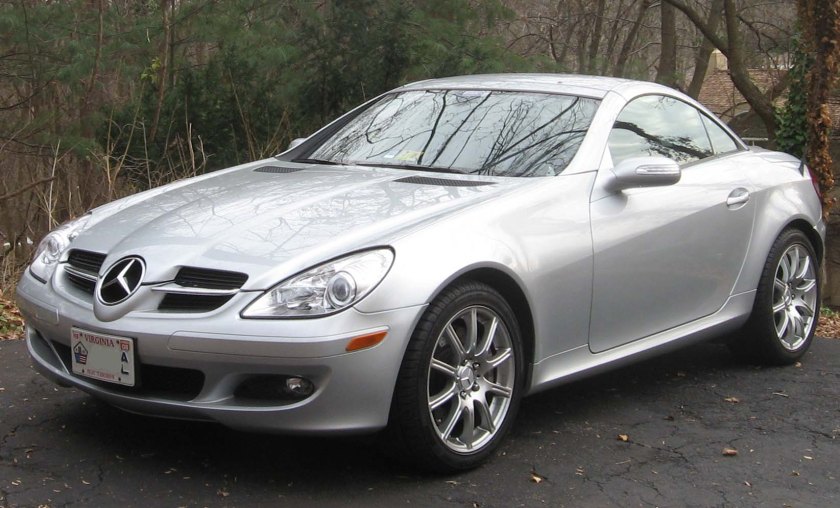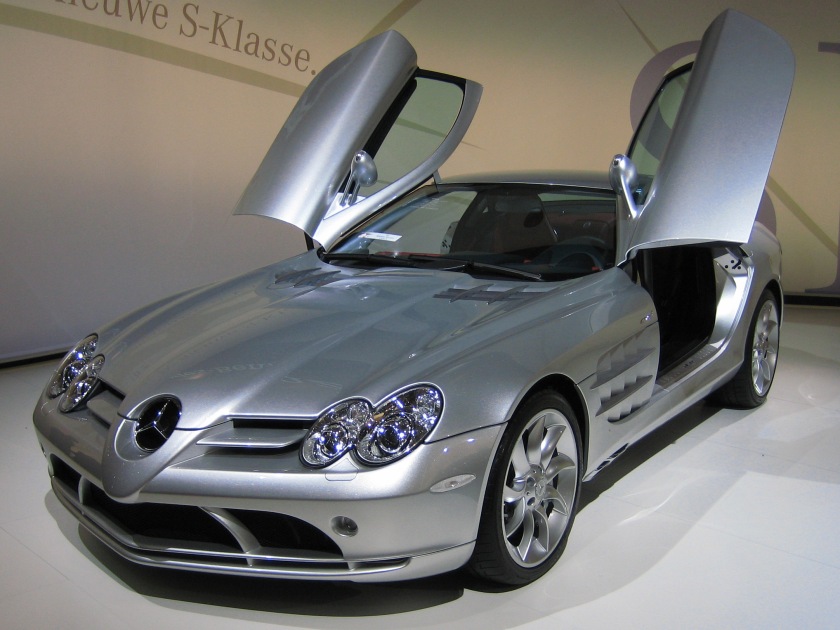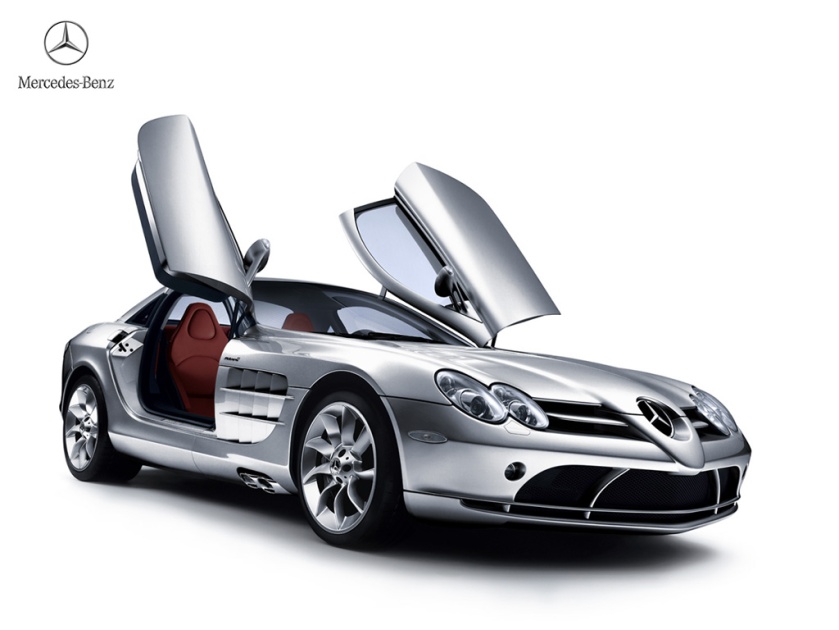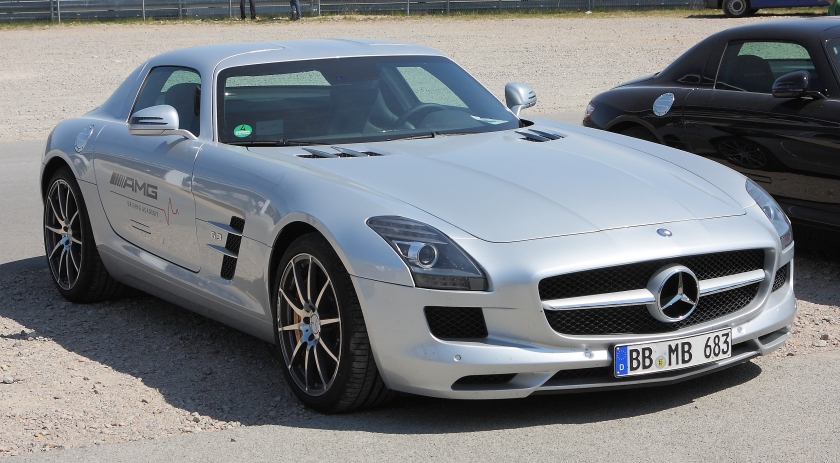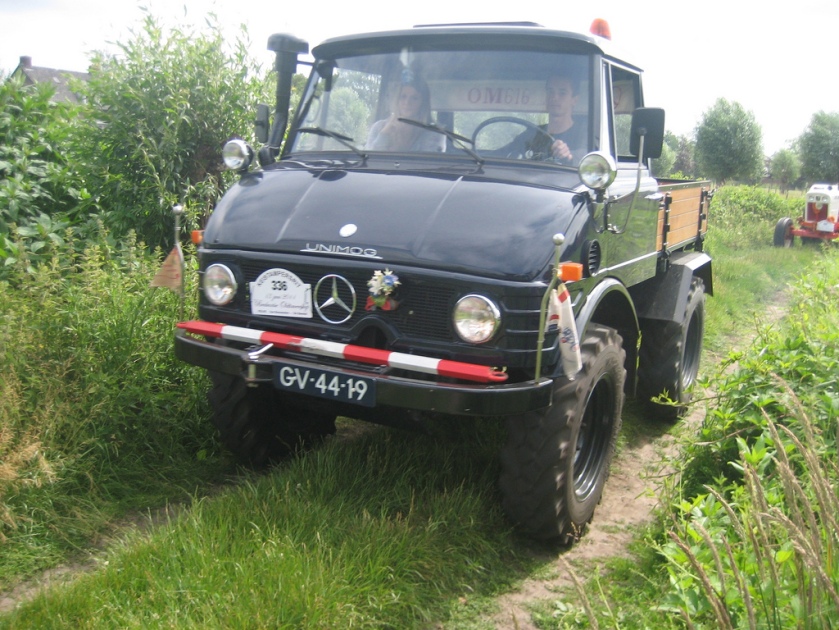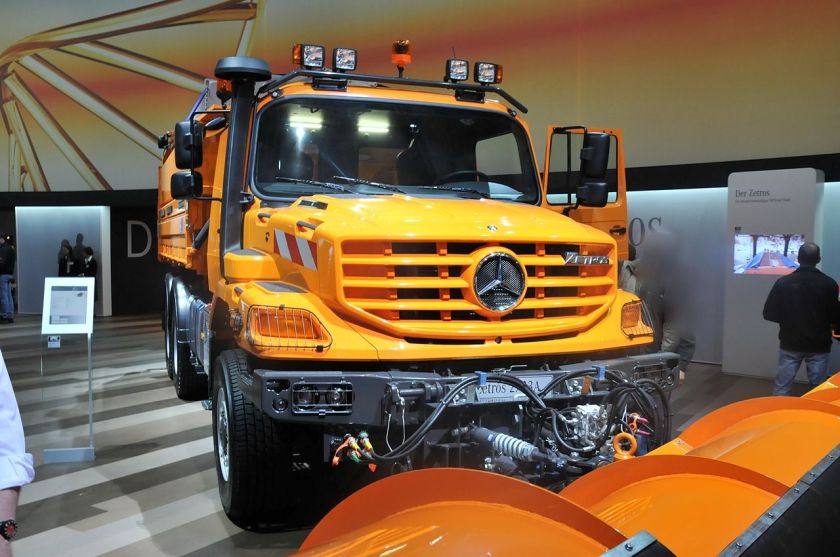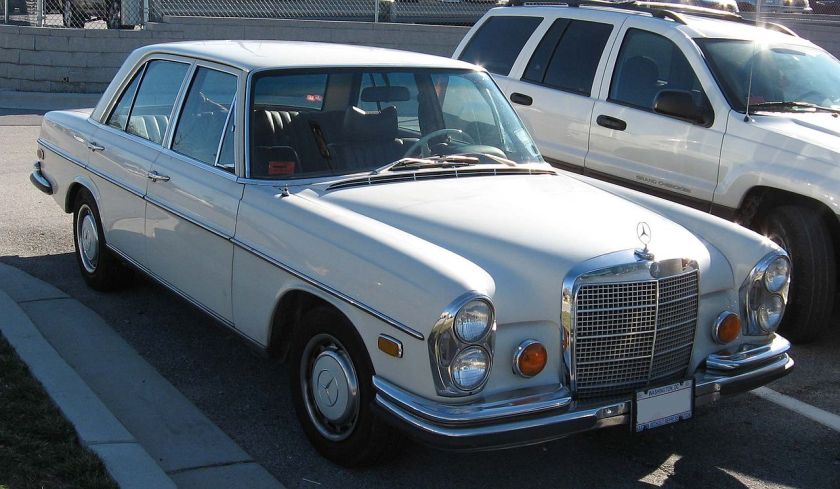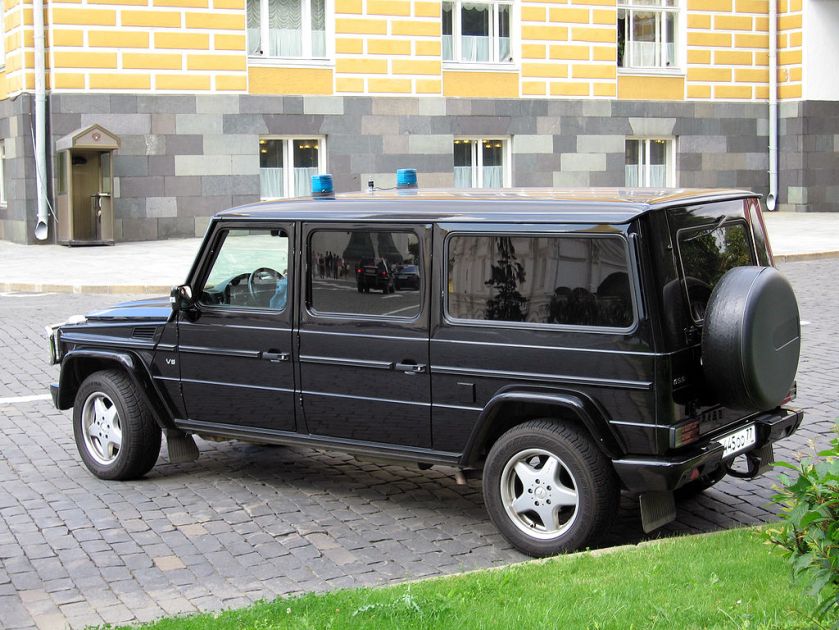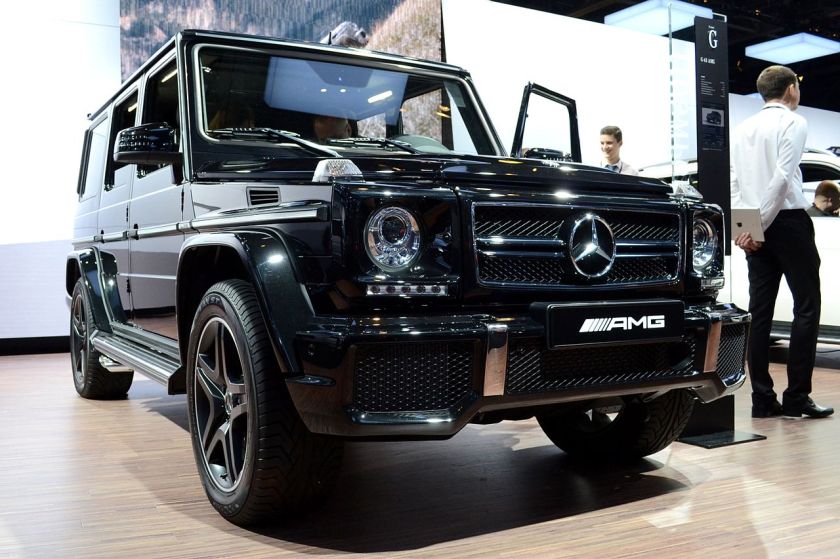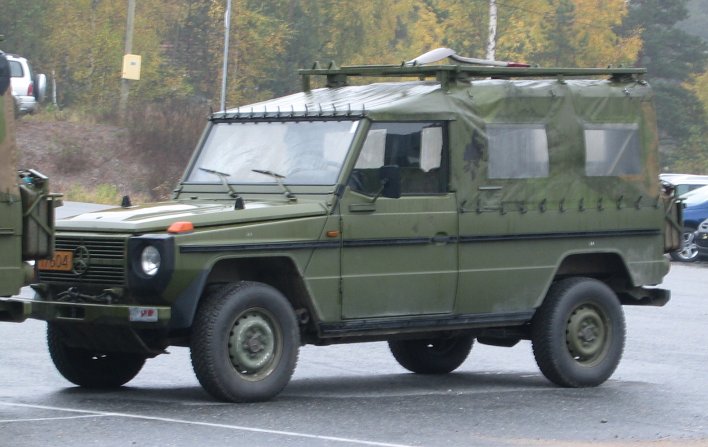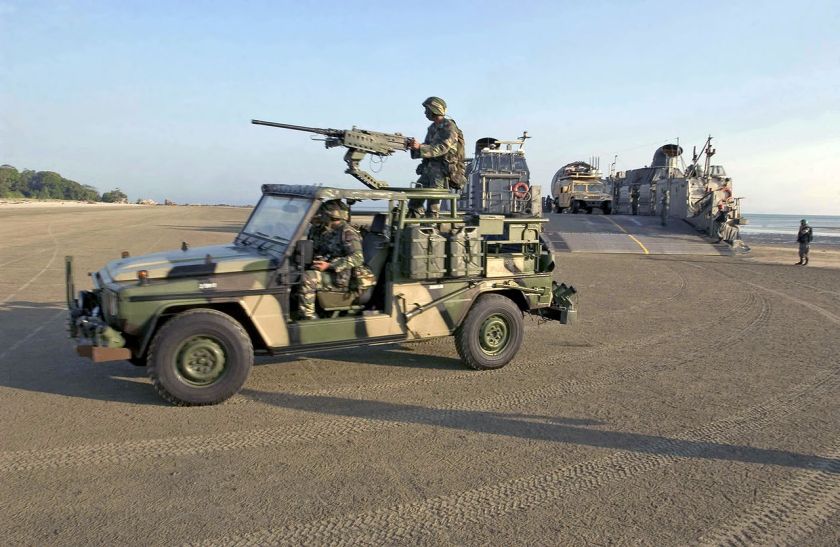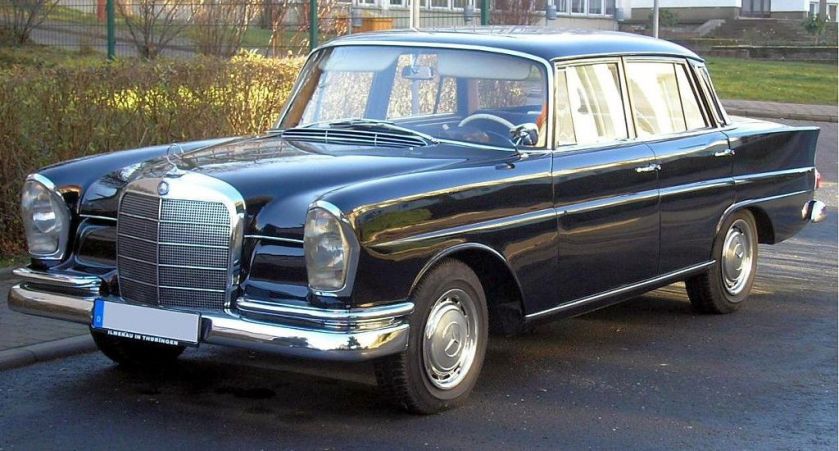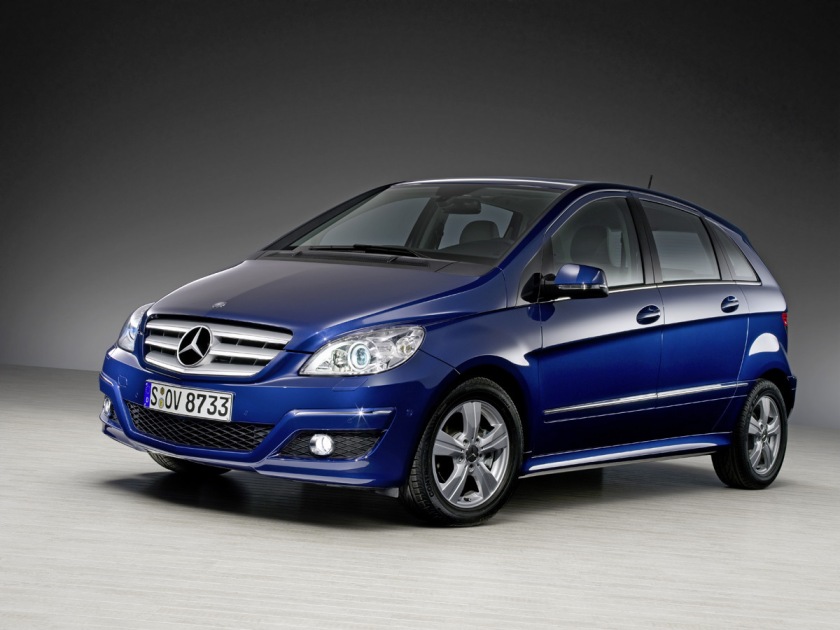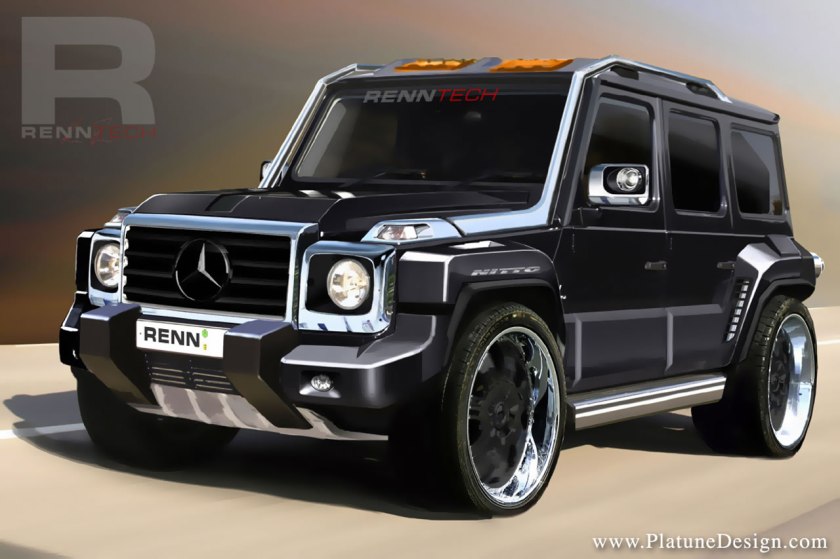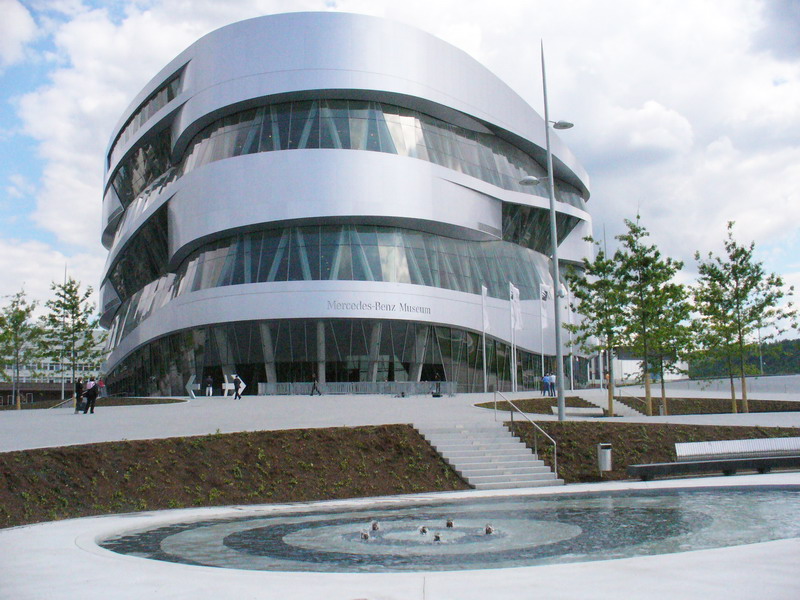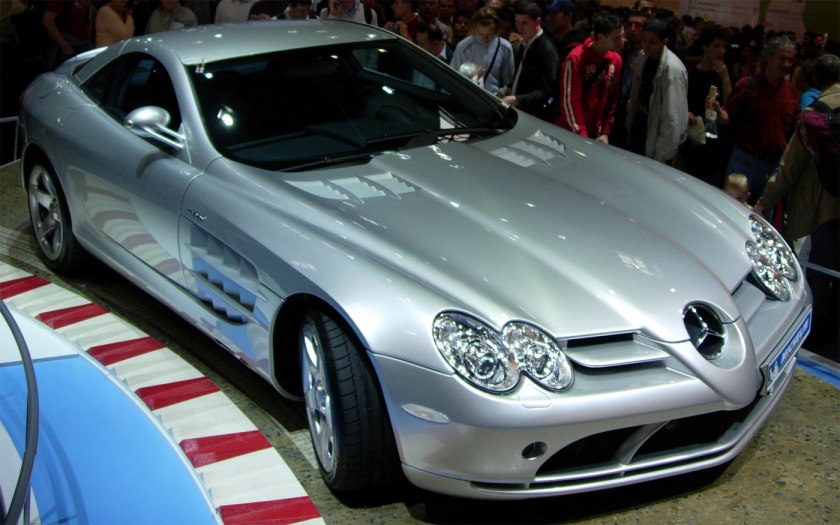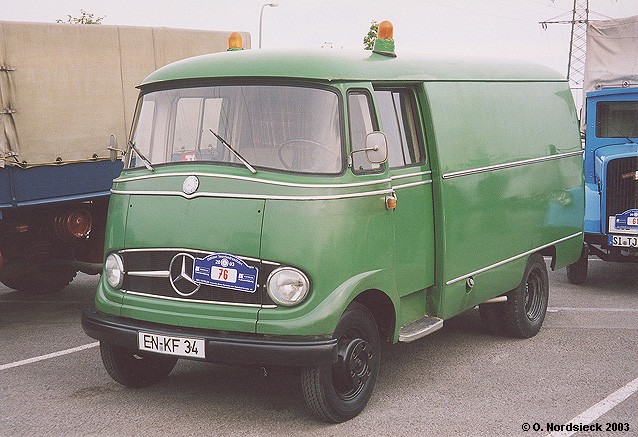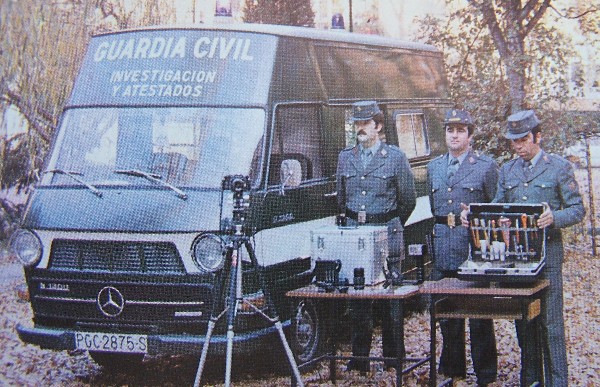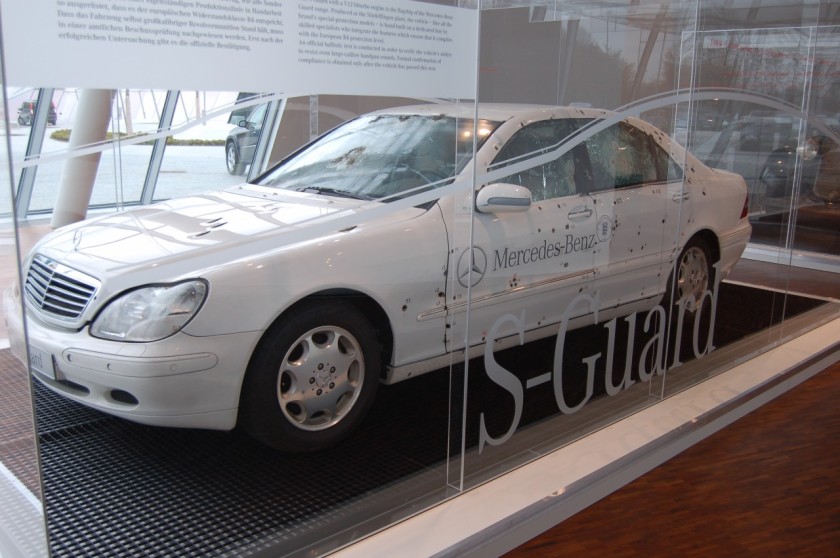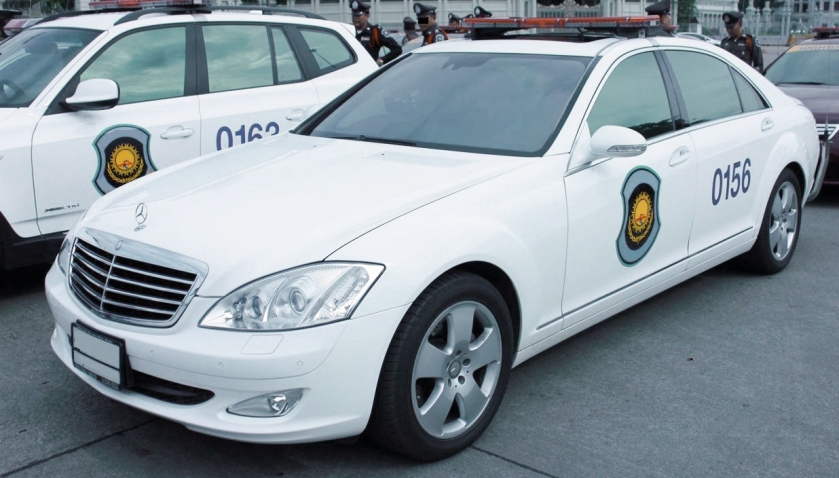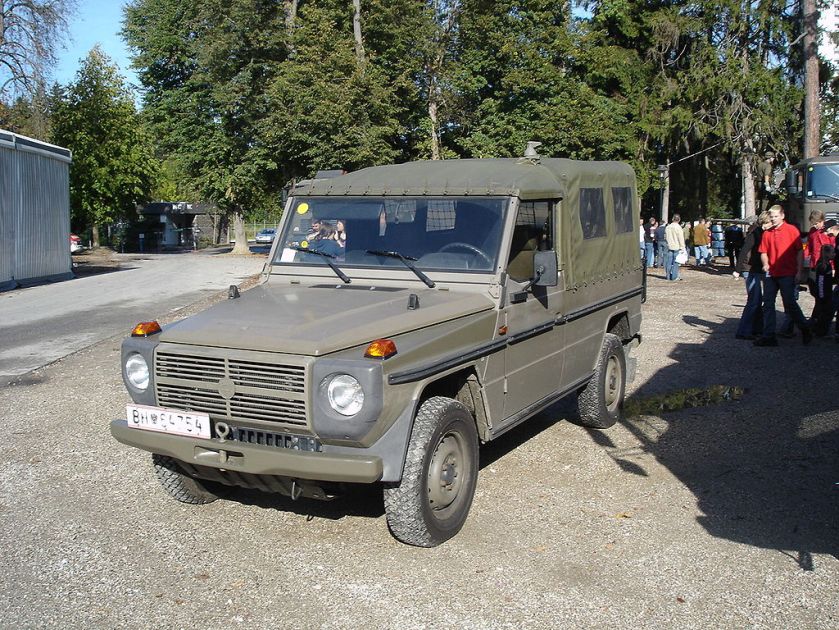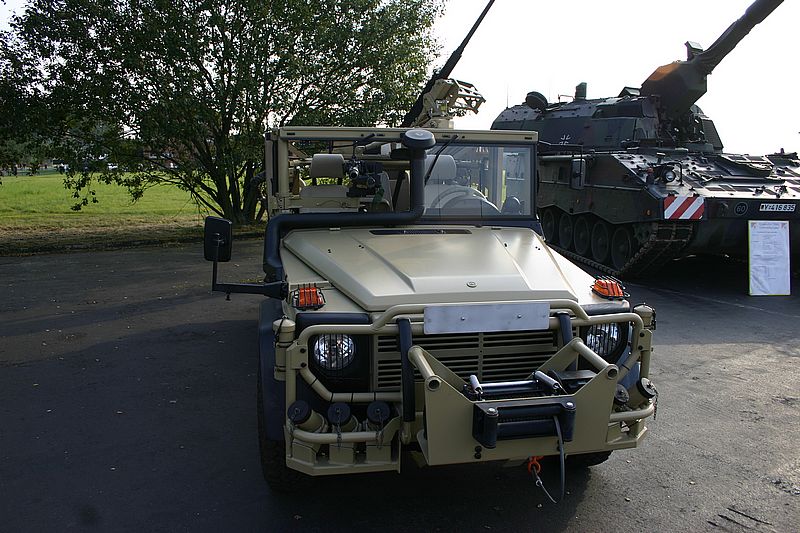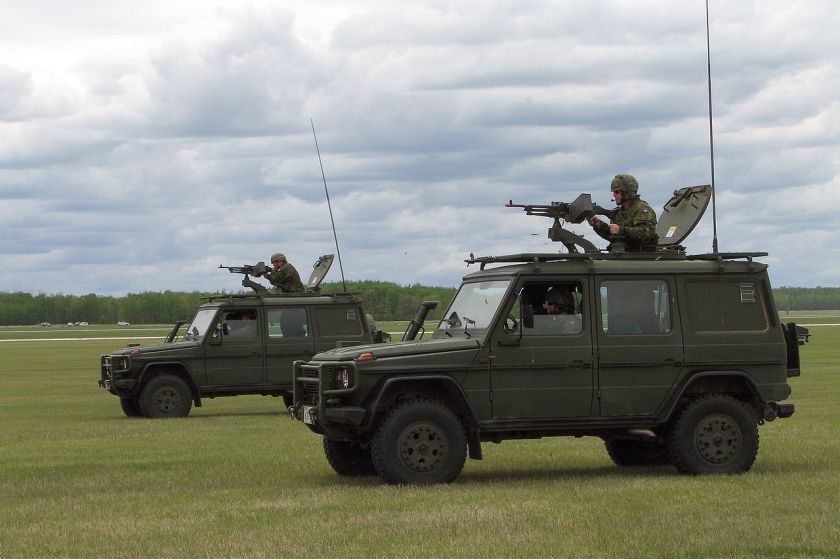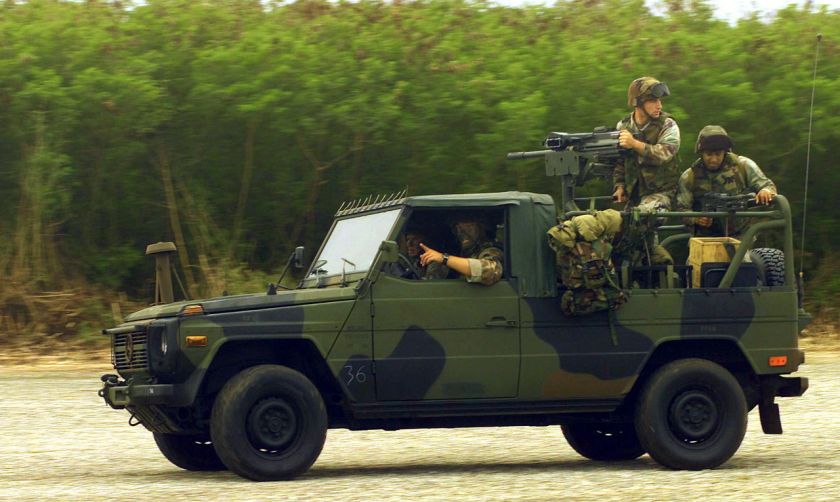Mercedes-Benz
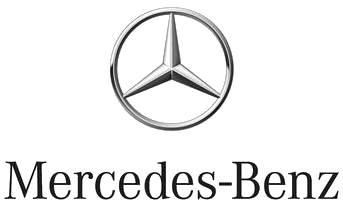 |
|
| Division | |
| Industry | Manufacturing |
| Predecessor | Benz & Cie. (1883-1926) DMG (1890-1926) |
| Founded | 1926 |
| Founder | Karl Benz and Gottlieb Daimler |
| Headquarters | Stuttgart |
|
Area served
|
Worldwide |
|
Key people
|
Dieter Zetsche, Chairman |
| Products | Automobiles Trucks Buses Internal combustion engines Luxury vehicles |
| Services | Financial services automobile repair |
| Owner | Daimler AG |
| Divisions | Mercedes-AMG |
| Website | www.mercedes-benz.com |
Mercedes-Benz (German pronunciation: [mɛʁˈt͡seːdəs ˈbɛnt͡s]) is a German automobile manufacturer, a multinational division of the German manufacturer Daimler AG. The brand is used for luxury automobiles, buses, coaches, and trucks. The headquarters of Mercedes-Benz is in Stuttgart, Baden-Württemberg, Germany.
The name first appeared in 1926 under Daimler-Benz but traces its origins to Daimler-Motoren-Gesellschaft‘s 1901 Mercedes and to Karl Benz‘s 1886 Benz Patent Motorwagen, which is widely regarded as the first gasoline powered automobile. Mercedes-Benz’s slogan is “Das Beste oder nichts” (English: “The best or nothing”). Mercedes-Benz is part of the “German Big 3” luxury automakers, along with Audi and BMW, which are the best selling luxury automakers in the world.
History
Karl Benz in Mannheim, Germany. Benz made the 1886 Benz Patent Motorwagen, which is widely regarded as the first automobile.
Gottlieb Daimler, Founder of Daimler-Motoren-Gesellschaft.
Mercedes-Benz traces its origins to Karl Benz‘s creation of the first petrol-powered car, the Benz Patent Motorwagen, financed by Bertha Benz and patented in January 1886, and Gottlieb Daimler and engineer Wilhelm Maybach‘s conversion of a stagecoach by the addition of a petrol engine later that year. TheMercedes automobile was first marketed in 1901 by Daimler-Motoren-Gesellschaft. The first Mercedes-Benz brand name vehicles were produced in 1926, following the merger of Karl Benz’s and Gottlieb Daimler’s companies into the Daimler-Benz company. Throughout the 1930s, Mercedes-Benz produced the 770 model, a car that was popular during Germany’s Nazi period. Adolf Hitler was known to have driven these cars during his time in power, with bulletproof windshields. Most of the surviving models have been sold at auctions to private buyers. One of them is currently on display at the War Museum in Ottawa,Ontario. Mercedes-Benz has introduced many technological and safety innovations that later became common in other vehicles. Mercedes-Benz is one of the best known and established automotive brands in the world, and is also one of the world’s oldest automotive brand still in existence today in 2014, having produced the first petrol-powered car.
For information relating to the famous three-pointed star, see under the title Daimler-Motoren-Gesellschaft including the merger into Daimler-Benz.
Subsidiaries and alliances
As part of the Daimler AG company, the Mercedes-Benz Cars division includes Mercedes-Benz and Smart car production.
Mercedes-AMG
Mercedes-AMG became a majority owned division of Mercedes-Benz in 1999. The company was integrated into Daimler Chrysler in 1999, and became Mercedes-Benz AMG beginning on 1 January 1999.
McLaren Group
Motorsport
Mercedes-AMG is the official engine supplier for the second oldest and most successful F1 team by Grand Prix wins, McLaren Racing. In 2013 it was announced that after the last year with Mercedes contract with McLaren, Mercedes would be dropped and be replaced by Honda, who McLaren had world championship wins in the past together. Mercedes have been supplying the engines to McLaren since 1995.
Road Car Manufacturing
From 2003 to 2009, Mercedes were in a joint venture with McLaren Group to manufacture the Mercedes-Benz SLR McLaren. At this time, Mercedes owned 40% of McLaren Group. Due to Mercedes purchasing Brawn GP, a F1 team, Mercedes decided to sell their shares back to Ron Dennis, as McLaren would be their rival in F1.
Maybach
Daimler’s ultra-luxury brand Maybach was under Mercedes-Benz cars division until 2013, when the production stopped due to poor sales volumes.
Production
Factories
Besides its native Germany, Mercedes-Benz vehicles are also manufactured or assembled in:
| Sovereign State | Continent | Note |
|---|---|---|
| Argentina | South America | Manufactures buses, trucks and the Sprinter van. This is the first Mercedes-Benz factory outside of Germany. Built in 1951. |
| Austria | Europe | G-Class |
| Bosnia and Herzegovina | Europe | |
| Brazil | South America | Manufactures trucks and buses. Established in 1956. The A-Class (W168) was produced from 1999 to 2005 and the C-Class was produced until 2010 as well.[13] |
| Canada | North America | |
| China | Asia | |
| Egypt | Africa | Via Egyptian German Automotive Company E-Class, C-Class and GLK |
| Finland | Europe | New A-series (W176) is manufactured in Uusikaupunki since late 2013, being the first M-B passenger car ever built in that country |
| Hungary | Europe | |
| Jordan | Asia | Buses company factory, Elba House, Amman. |
| India | Asia | Bangalore (R&D). (Pune). Chennai (Daimler India Commercial Vehicles Pvt. Ltd.) – Trucks & Engine Manufacturing unit. |
| Indonesia | Asia /Australia | |
| Iran | Asia | Not since 2010 |
| Malaysia | Asia | Assembly of C, E and S class vehicles by the DRB-Hicom |
| Mexico | North America | Mercedes-Benz Mexico fully manufactures some Mercedes and Daimler vehicles completely from locally built parts (C-Class, E-Class, M-Class, International trucks, Axor, Atego, and Mercedes Buses), manufactures other models in complete knock down kits (CL-Class, CLK-Class, SL-Class, SLK-Class) and manufactures a select number of models in semi knockdown kits which use both imported components and locally sourced Mexican components (S-Class, CLS-Class, R-Class, GL-Class, Sprinter). |
| Nigeria | Africa | Assembly of buses, trucks, utility motors and the Sprinter van |
| Philippines | Asia | |
| Russia | Eurasia | Joint venture Mercedes-Benz Car Trucks Vostok in Naberezhnye Chelny (jointly Kamaz). Available in trucks Actros, Axor, multi-purpose auto four wheel drive medium trucks Unimog. Mercedes-Benz Sprinter Classic is also produced in Russia. |
| Spain | Europe | Factory at Vitoria-Gasteiz Mercedes-Benz Vito, Viano and V-Class have been built there. |
| South Africa | Africa | |
| South Korea | Asia | Mercedes-Benz Musso and MB100 models manufactured by SsangYong Motor Company. |
| Thailand | Asia | Assembly of C, E and S class vehicles by the Thonburi Group |
| Turkey | Eurasia | Mercedes-Benz Türk A.Ş. |
| United Kingdom | Europe | The SLR sports car was built at the McLaren Technology Centre in Woking. Brackley, Northamptonshire, is home to the Mercedes Grand Prix factory, and Brixworth, Northamptonshire is the location of Mercedes-Benz HighPerformanceEngines |
| United States | North America | The Mercedes-Benz M-Class Sport Utility, the R-Class Sport Tourer, and the full-sized GL-Class Luxury Sport Utility Vehicle are all built at the Mercedes-Benz U.S. International production facility near Tuscaloosa, Alabama. Trucks (6,000 per year in the late seventies) were once assembled in Hampton, VA. |
| Vietnam | Asia | Assembly of E-Class, C-Class, S-Class, GLK-Class and Sprinter. Established in 1995. |
Quality rankings
Since its inception, Mercedes-Benz had maintained a reputation for its quality and durability. Objective measures looking at passenger vehicles, such as J. D. Power surveys, demonstrated a downturn in reputation in these criteria in the late 1990s and early 2000s. By mid-2005, Mercedes temporarily returned to the industry average for initial quality, a measure of problems after the first 90 days of ownership, according to J. D. Power. In J. D. Power’s Initial Quality Study for the first quarter of 2007, Mercedes showed dramatic improvement by climbing from 25th to 5th place and earning several awards for its models. For 2008, Mercedes-Benz’s initial quality rating improved by yet another mark, to fourth place. On top of this accolade, it also received the Platinum Plant Quality Award for its Mercedes’ Sindelfingen, Germany assembly plant. J. D. Power’s 2011 US Initial Quality and Vehicle Dependability Studies both ranked Mercedes-Benz vehicles above average in build quality and reliability. In the 2011 UK J. D. Power Survey, Mercedes cars rated above average. A 2014 iSeeCars.com study for Reuters found Mercedes to have the lowest vehicle recall rate.
Models
Current model range
Mercedes-Benz offers a full range of passenger, light commercial and heavy commercial equipment. Vehicles are manufactured in multiple countries worldwide. The Smart marque of city cars are also produced by Daimler AG.
- A-Class – Hatchback
- B-Class – Multi Purpose Vehicle (MPV)
- C-Class – Saloon, Estate & Coupé
- CLA-Class – 4 Door Coupé
- CLS-Class – 4 Door Coupé and Estate
- E-Class – Saloon, Estate, Coupé and Cabriolet
- G-Class – Sports Utility Vehicle (SUV)
- GL-Class – Sports Utility Vehicle (SUV)
- GLA-Class – Sports Utility Vehicle (SUV)
- GLK-Class – Sports Utility Vehicle (SUV)
- GLE-Class – Sports Utility Vehicle (SUV)
- M-Class – Sports Utility Vehicle (SUV)
- S-Class – Luxury Sedan
- SL-Class – Roadster
- SLK-Class – Roadster
- V-Class – Multi Purpose Vehicle (MPV)
- AMG GT – Sports car
Vans
Mercedes-Benz produces a range of vans; Citan (a version of the Renault Kango), Vito and Sprinter.
Trucks
Mercedes-Benz Trucks is now part of the Daimler Trucks division, and includes companies that were part of the DaimlerChrysler merger. Gottlieb Daimler sold the world’s first truck in 1886. The first factory to be built outside Germany after WWII was in Argentina. It originally built trucks, many of which were modified independently to buses, popularly named Colectivo. Today, it builds buses, trucks and the Sprinter van.
Buses
Mercedes-Benz produces a wide range of buses and coaches, mainly for Europe and Asia. The first model was produced by Karl Benz in 1895.
Significant models produced[edit]
- 1928: SSK racing car
- 1930: 770 “Großer Mercedes” state and ceremonial car
- 1934: 500 K
- 1936: 260 D World’s first diesel production car
- 1936: 170
- 1938: W195 Speed Record-breaker
- 1939: 320A A military vehicle
- 1951: 300, known as the “Adenauer Mercedes”
- 1953: “Ponton” models
- 1954: 300SL “Gullwing”
- 1956: 190SL
- 1959: “Fintail” models
- 1960: 220SE Cabriolet
- 1963: 600 “Grand Mercedes”
- 1963: 230SL “Pagoda”
- 1965: S-Class
- 1966: 300SEL 6.3
- 1968: W114 “new generation” compact cars
- 1969: C111 experimental vehicle
- 1972: W107 350SL
- 1974: 450SEL 6.9
- 1977: W123– Mercedes’ first station wagon
- 1978: 300SD – Mercedes’ first turbo diesel
- 1979: 500SEL and G-Class
- 1983: 190E 2.3–16
- 1989: 300SL, 500SL
- 1990: 500E
- 1991: 600SEL
- 1993: C-Class
- 1995: C43 AMG
- 1995: SL73 AMG, 7.3 V12
- 1996: SLK
- 1997: A-Class and M-Class
- 2004: SLR McLaren and CLS-Class
- 2007: BlueTec E320, GL320 Bluetec, ML320 Bluetec, R320 Bluetec
- 2010: SLS AMG
- 2013: CLA-Class
The Mercedes-Benz 600 or 600S Pullman Guard limousines offer a “bulletproof” option and have been used by diplomats worldwide.
Car nomenclature
Until 1994, Mercedes-Benz used an alphanumeric system for categorising their vehicles, consisting of a number sequence approximately equal to the engine’s displacement in liters multiplied by 100, followed by an arrangement of alphabetical suffixes indicating body style and engine type.
- “C” indicates a coupe or cabriolet body style (for example, the CL and CLK models, although the C-Class is an exception, as it is also offered as a sedan).
- “D” indicates the vehicle is equipped with a diesel engine.
- “E” (for “Einspritzung”) indicates the vehicle’s engine is equipped with petrol fuel injection. In most cases (the 600 limousine and Mercedes E-Class being the exceptions), if neither “E” or “D” is present, the vehicle has a petrol engine with a carburettor.
- “G” was originally used for the Geländewagen off-road vehicle, but is now applied to Mercedes SUVs in general (for example, the GLA and GLK).
- “K” was used in the 1930s, indicating a supercharger (“Kompressor”) equipped engine. One exception is the SSK, where K indicates “Kurz” (short-wheelbase).
- “L” indicates “Leicht” (lightweight) for sporting models, and “Lang” (long-wheelbase) for sedan models.
- “R” indicates “Rennen” (racing), used for racing cars (for example, the 300SLR).
- “S” Sonderklasse “Special class” for flagship models, including the S-Class, and the SL-Class, SLR McLaren and SLS sportscars.
- “T” indicates “Touring” and an estate (or station wagon) body style.
Some models in the 1950s also had lower-case letters (b, c, and d) to indicate specific trim levels. For other models, the numeric part of the designation does not match the engine displacement. This was done to show the model’s position in the model range independent of displacement or in the price matrix. For these vehicles, the actual displacement in liters is suffixed to the model designation. An exception was the 190-class with the numeric designation of “190” as to denote its entry level in the model along with the displacement label on the right side of the boot (190E 2.3 for 2.3-litre 4-cylinder petrol motor, 190D 2.5 for 2.5-litre 5-cylinder diesel motor, and so forth). Some older models (such as the SS and SSK) did not have a number as part of the designation at all.
For the 1994 model year, Mercedes-Benz revised the naming system. Models were divided into “classes” denoted by an arrangement of up to three letters (see “Current model range” above), followed by a three-digit (or two-digit for AMG models, with the number approximately equal to the displacement in litres multiplied by 10) number related to the engine displacement as before. Variants of the same model such as an estate version or a vehicle with a diesel engine are no longer given a separate letter. The SLR and SLS supercars do not carry a numerical designation.
Today, many numerical designations no longer reflects the engine’s actual displacement but more of the relative performance and marketing position. Despite its engine displacement in two litres, the motor in A45 AMG produces more than 375 horsepowers so the designation is higher as to indicate the higher performance. Another example is the E250 CGI having greater performance than the E200 CGI due to the different engine tuning even though both have 1.8-litre engines. From the marketing perspectives, E200 seems more “upscale” than E180. Recent AMG models use the “63” designation (in honor of the 1960s 6.3-litre M100 engine) despite being equipped with either a 6.2-litre (M156) or 5.5-litre (M157) engine.
Some models carry further designations indicating special features:
- “4MATIC” indicates the vehicle is equipped with all-wheel-drive.
- “BlueTEC” indicates a diesel engine with selective catalytic reduction exhaust aftertreatment.
- “Blue EFFICIENCY” indicates special fuel economy features (direct injection, start-stop system, aerodynamic modifications, etc.)
- “CGI” (Charged Gasoline Injection) indicates direct gasoline injection.
- “CDI” (Common-rail Direct Injection) indicates a common-rail diesel engine.
- “Hybrid” indicates a gasoline- or diesel-electric hybrid.
- “NGT” indicates a natural gas-fueled engine.
- “Kompressor” indicates a supercharged engine.
- “Turbo” indicates a turbocharged engine, only used on A-, B-,E- and GLK-Class models.
- “AMG Line” indicates the interior or engine, depending which car, has been fitted with the luxuries of their AMG sports cars
All model designation badges can be deleted upon the customer’s request.
2015 and beyond
Rationalisation of the model nomenclature was announced in November 2014 for future models. The changes consolidate many confusing nomenclature and their placements in the model range such as CL-Class is now called the S-Class Coupé. The naming structure is divided into four categories: core, off-road vehicle/SUV, 4-door coupé, and roadster. G-Class, V-Class, and Mercedes-AMG GT are unaffected by the change.
| Core | Off-Road Vehicles/SUV | 4-Door Coupé | Roadster |
|---|---|---|---|
| A-Class | GLA | CLA | |
| B-Class | |||
| C-Class | GLC(formerly GLK) | SLC(formerly SLK) | |
| E-Class | GLE(formerly ML) | ||
| S-Class | GLS(formerly GL) | CLS | SL |
Note: CLA is positioned between A and B Classes while CLS between E and S.
In addition to the revised nomenclature, Mercedes-Benz has new nomenclature for the drive systems.
| Current | New | Example |
|---|---|---|
| Natural Gas Drive | c for “compressed natural gas” | B 200 c |
| BlueTecCDI | d for “diesel” | E 350 dGLA 200 d |
| PLUG-IN HYBRID**Electric Drive | e for “electric” | S 500 eB 250 e |
| Fuel Cell | f for “fuel cell” | B 200 f |
| HYBRIDBlueTEC HYBRID | h for “hybrid” | S 400 hE 300 h |
| 4MATIC | 4MATIC | E 400 4MATIC |
Environmental record
Mercedes-Benz has developed multi concept cars with alternative propulsion, such as hybrid-electric, fully electric, and fuel-cell powertrains. At the 2007 Frankfurt motor show, Mercedes-Benz showed seven hybrid models, including the F700 concept car, powered by a hybrid-electric drivetrain featuring the DiesOtto engine. In 2009, Mercedes-Benz displayed threeBlueZERO concepts at the North American International Auto Show. Each car features a different powertrain – battery-electric, fuel-cell electric, and gasoline-electric hybrid. In the same year, Mercedes also showed the Vision S500 PHEV concept with a 19 miles (31 km) all-electric range and CO
2 emissions of 74 grams/km in the New European Driving Cycle.[40]
Since 2002, Mercedes-Benz has developed the F-Cell fuel cell vehicle. The current version, based on the B-Class, has a 250 mile range and is available for lease, with volume production scheduled to begin in 2014. Mercedes has also announced the SLS AMG E-Cell, a fully electric version of the SLS sports car, with deliveries expected in 2013. The Mercedes-Benz S400 BlueHYBRID was launched in 2009, and is the first production automotive hybrid in the world to use a lithium-ion battery. In mid-2010, production commenced on the Vito E-Cell all-electric van. Mercedes expects 100 vehicles to be produced by the end of 2010 and a further 2000 by the end of 2011.
In 2008, Mercedes-Benz announced that it would have a demonstration fleet of small electric cars in two to three years. Mercedes-Benz and Smart are preparing for the widespread uptake of electric vehicles (EVs) in the UK by beginning the installation of recharging points across their dealer networks. So far 20 Elektrobay recharging units, produced in the UK by Brighton-based Elektromotive, have been installed at seven locations as part of a pilot project, and further expansion of the initiative is planned later in 2010.
In the United States, Mercedes-Benz was assessed a record US$30.66 million fine for their decision to not meet the federal corporate average fuel economy standard in 2009. Certain Mercedes-Benz cars, including the S550 and all AMG models sold in the United States, also face an additional gas guzzler tax. However, newer AMG models fitted with the M157 engine will not be subject to the gas-guzzler tax, due to improved fuel economy, and newer models powered by the M276 and M278 engines will have better fuel economy. In 2008, Mercedes also had the worst CO
2 average of all major European manufacturers, ranking 14th out of 14 manufacturers.[52] Mercedes was also the worst manufacturer in 2007 and 2006 in terms of average CO
2levels, with 181 g and 188 g of CO
2 emitted per km, respectively.
Bicycles
Mercedes-Benz Accessories GmbH introduced three new bicycles in 2005, and the range has developed to include the patent pending Foldingbike in 2007. Other models include the Mercedes-Benz Carbon Bike, Trekking Bike, Fitness Bike and the Trailblazer Bike.
Motorsport
The two companies which were merged to form the Mercedes-Benz brand in 1926 had both already enjoyed success in the new sport of motor racingthroughout their separate histories. A single Benz competed in the world’s first motor race, the 1894 Paris–Rouen, where Émile Roger finished 14th in 10 hours 1 minute. Throughout its long history, the company has been involved in a range of motorsport activities, including sports car racing and rallying. On several occasions Mercedes-Benz has withdrawn completely from motorsport for a significant period, notably in the late 1930s, and after the 1955 Le Mans disaster, where a Mercedes-Benz 300 SLR rammed another car (An Austin-Healey), took off into the stands, and killed more than 80 spectators. Stirling Moss and co-driver Denis Jenkinson made history by winning the 1955 Mille Miglia road race in Italy during a record-breaking drive with an average speed of almost 98 mph in a Mercedes-Benz 300 SLR.
Although there was some activity in the intervening years, it was not until 1987 that Mercedes-Benz returned to front line competition, returning to Le Mans, Deutsche Tourenwagen Meisterschaft (DTM), and Formula One with Sauber. The 1990s saw Mercedes-Benz purchase British engine builderIlmor (now Mercedes-Benz High Performance Engines), and campaign IndyCars under the USAC/CART rules, eventually winning the 1994 Indianapolis 500 and 1994 CART IndyCar World Series Championship with Al Unser, Jr. at the wheel. The 1990s also saw the return of Mercedes-Benz to GT racing, and the Mercedes-Benz CLK GTR, both of which took the company to new heights by dominating the FIA’s GT1 class.
Mercedes-Benz is currently active in three forms of motorsport, Formula Three, DTM and Formula One.
Formula One
Mercedes-Benz took part in the world championship in 1954 and 1955, but despite being successful with two championship titles for Juan-Manuel Fangio, the company left the sport after just two seasons. Fangio is considered by many to be the best F1 driver in history.
Mercedes-Benz returned as an engine supplier in the 1990s and part-owned Team McLaren for some years, to which it has supplied engines engineered by Ilmor since 1995. This partnership brought success, including drivers championships for Mika Häkkinen in 1998 and 1999, and for Lewis Hamilton in 2008, as well as a constructors championship in 1998. The collaboration with McLaren had been extended into the production of roadgoing cars such as the Mercedes-Benz SLR McLaren.
In 2007, McLaren-Mercedes was fined a record US$100 million for stealing confidential Ferrari technical data.
In 2009, Ross Brawn‘s newly conceived Formula One team, Brawn GP used Mercedes engines to help win the constructor’s championship, and Jenson Button to become champion in the F1 drivers’ championship. At the end of the season, Mercedes-Benz sold its 40% stake in McLaren to the McLaren Group and bought 70% of the Brawn GP team jointly with an Abu Dhabi based investment consortium. Brawn GP was renamed Mercedes GP for the 2010 season and is, from this season on, a works team for Mercedes-Benz.
In 2014, Mercedes clinched the F1 Constructor’s title with 3 races to go, after dominating much of the season.
Logo history
-
1926-current


